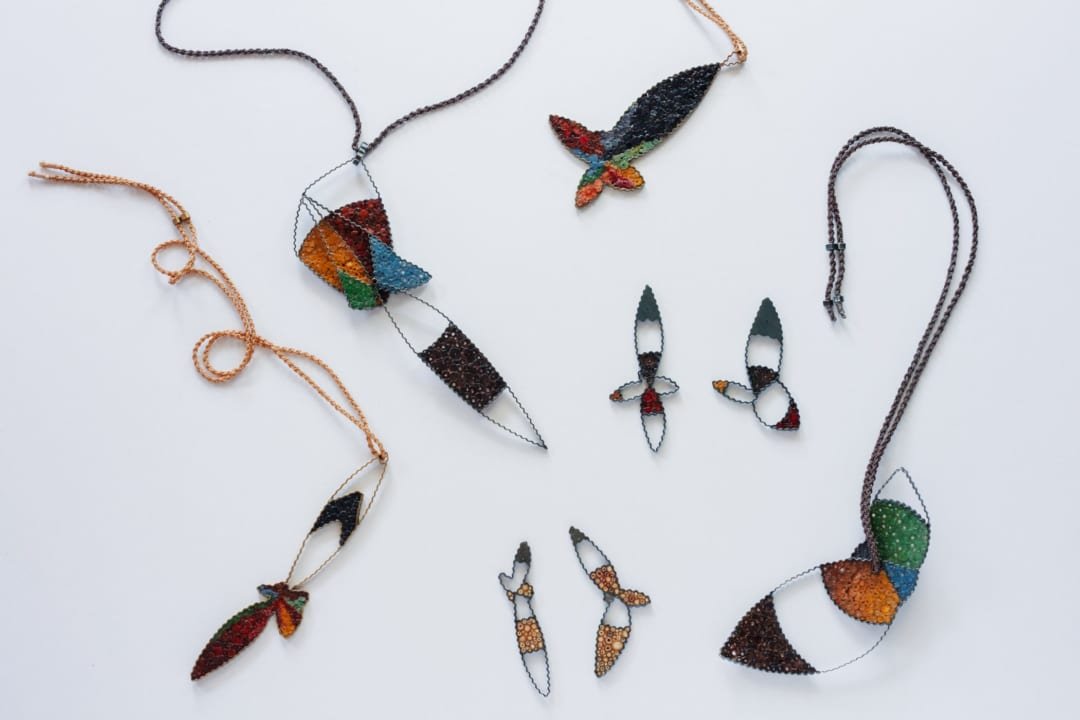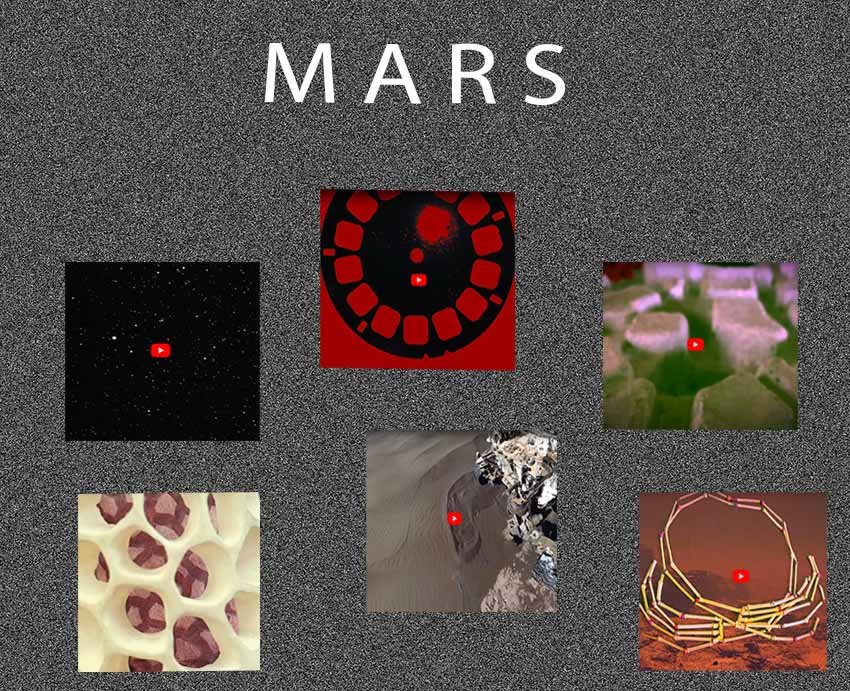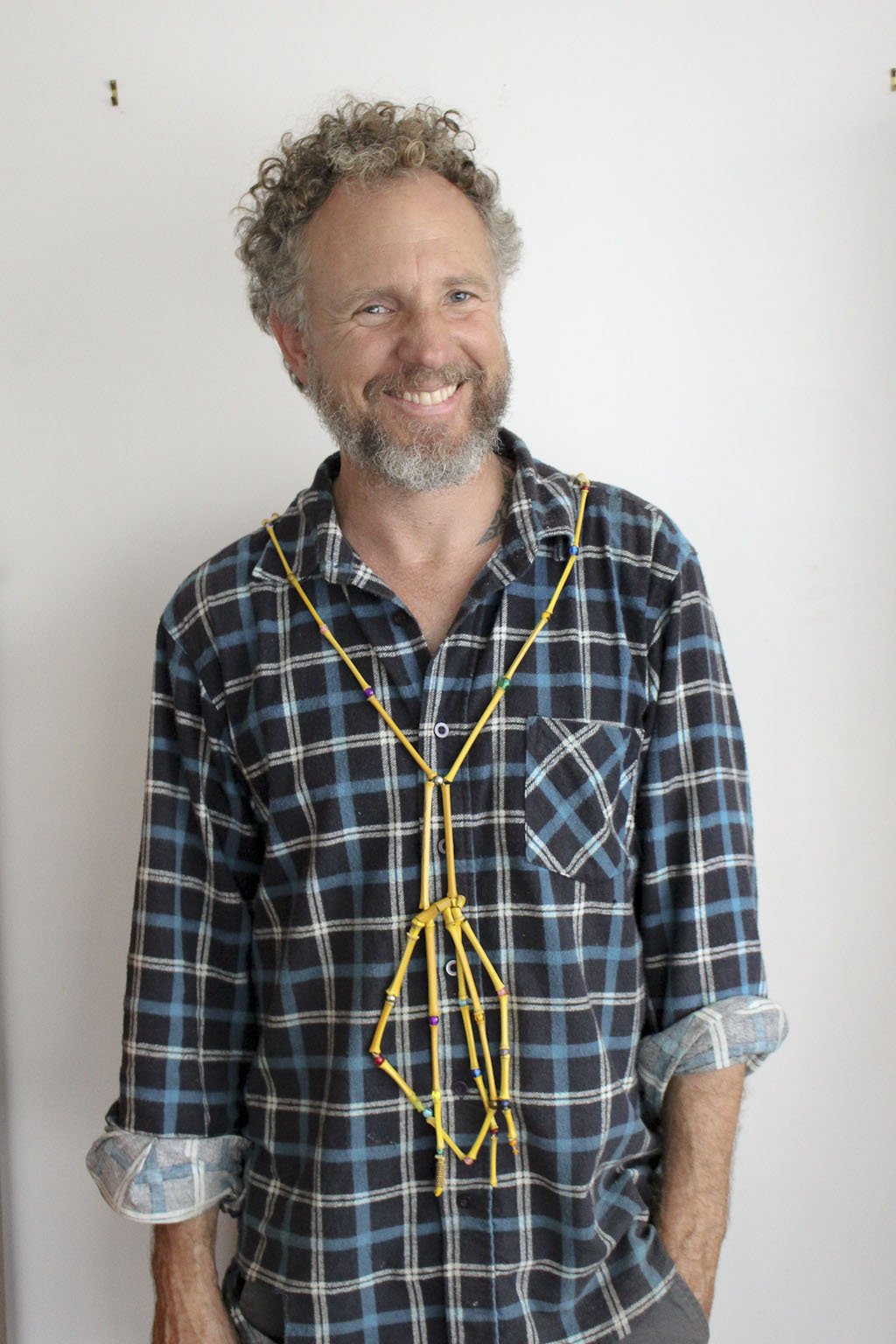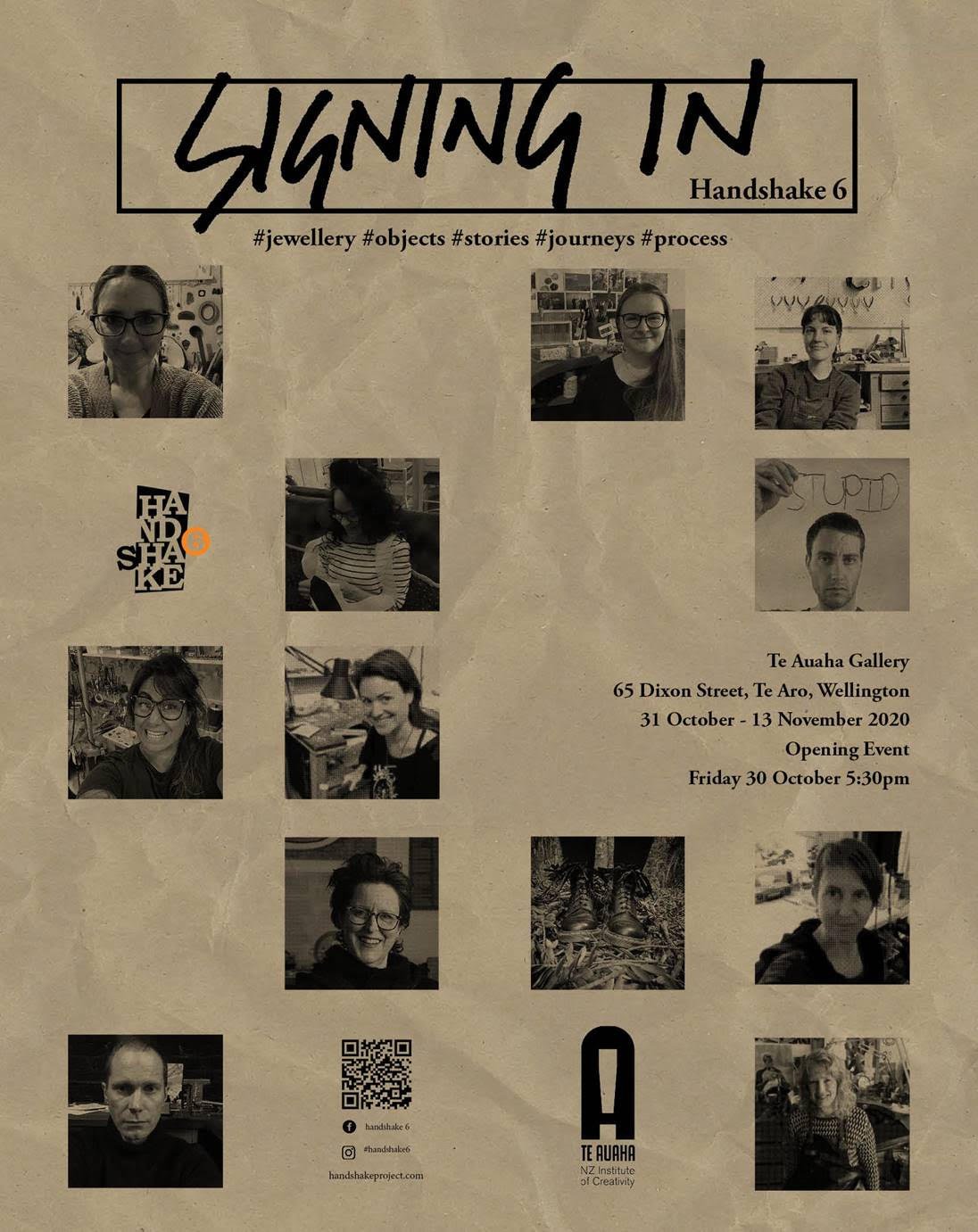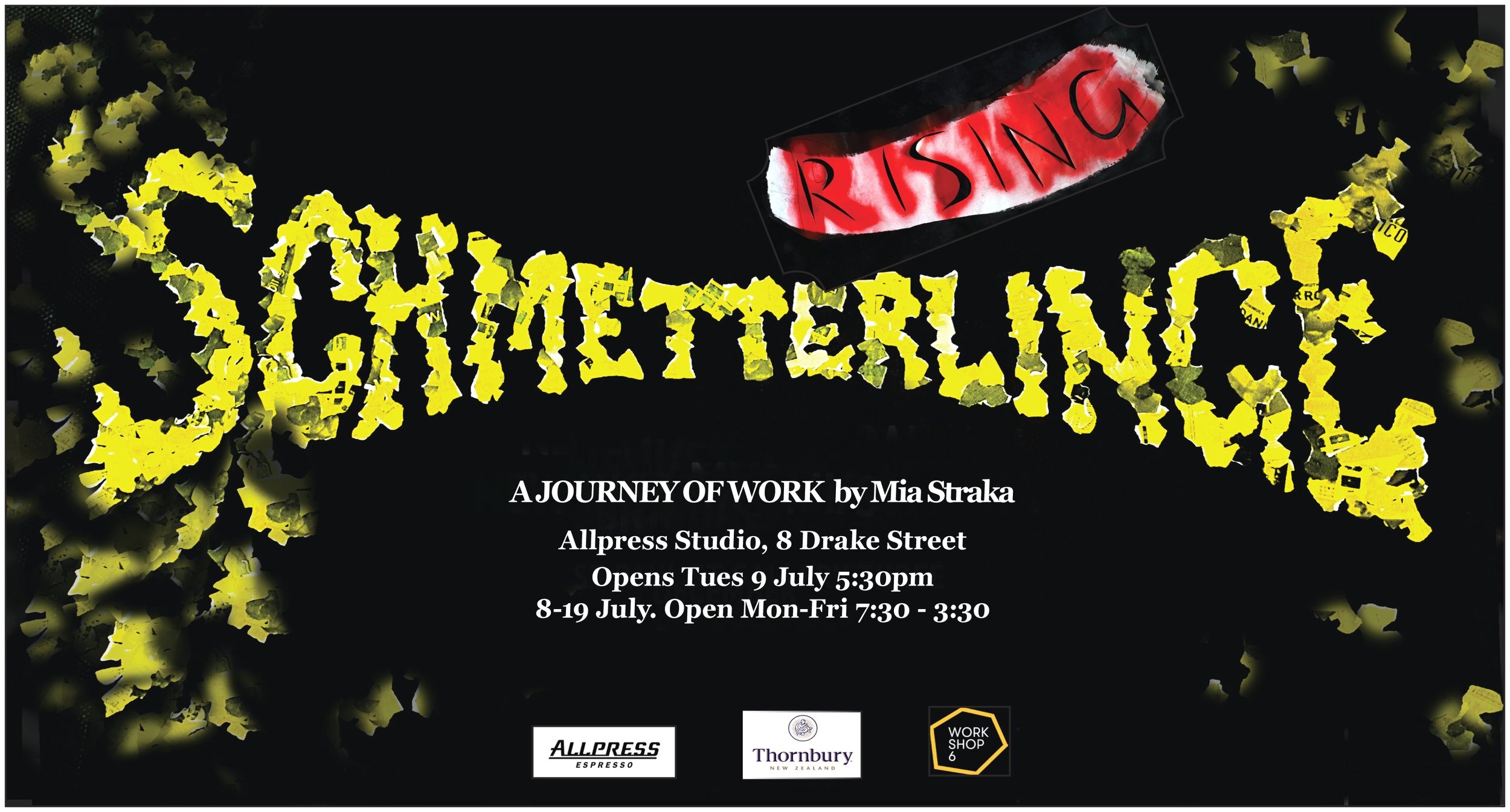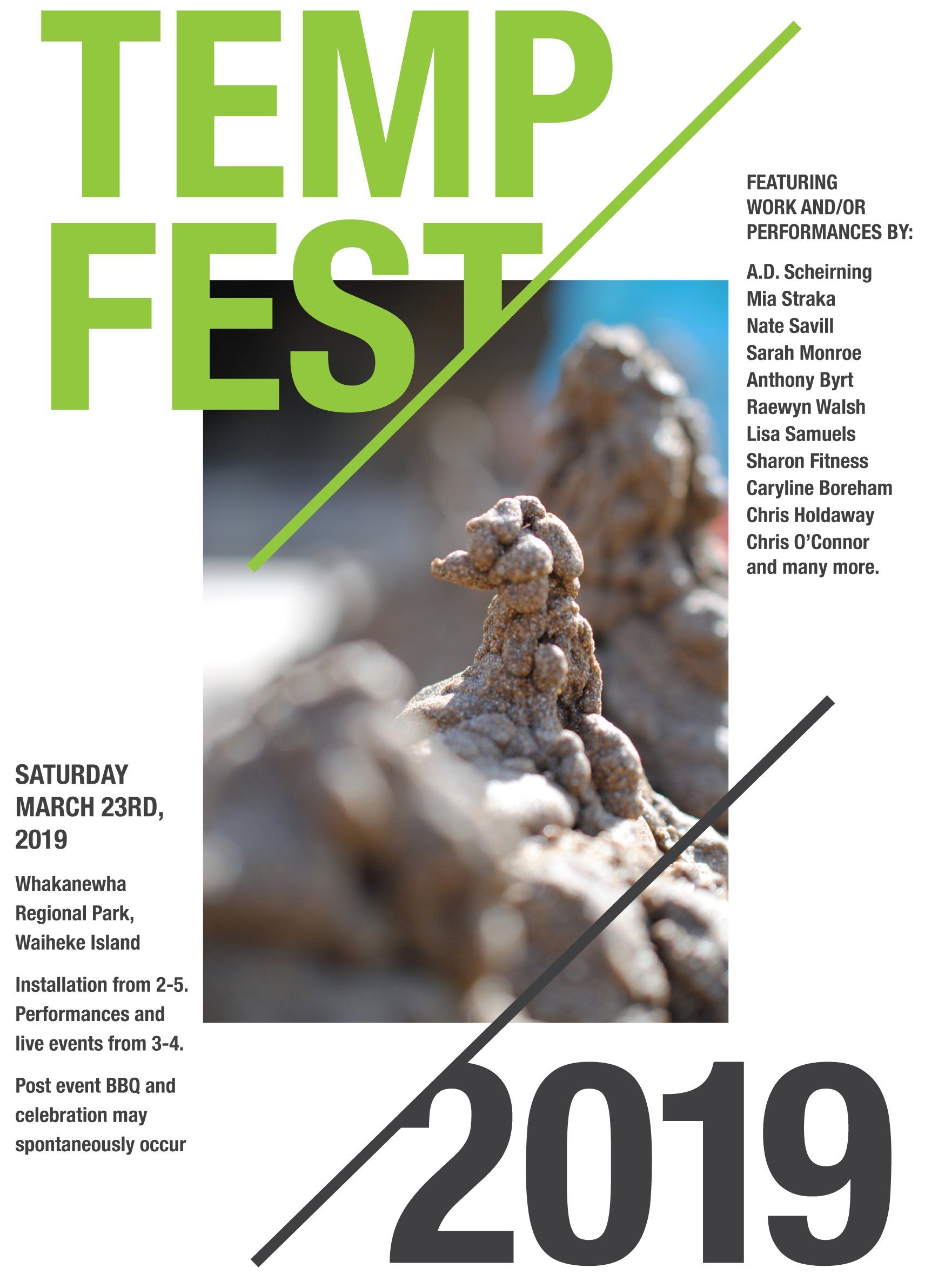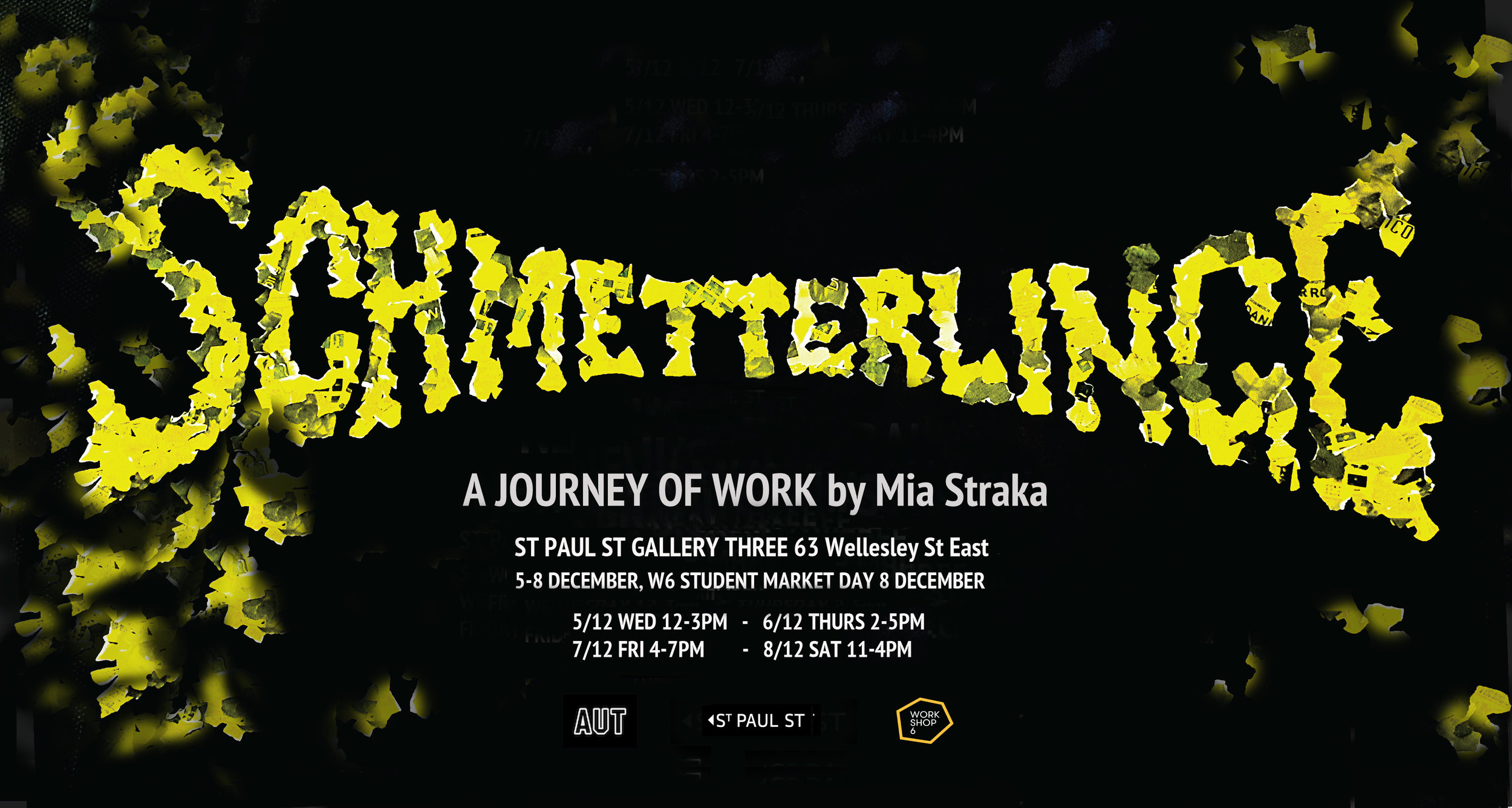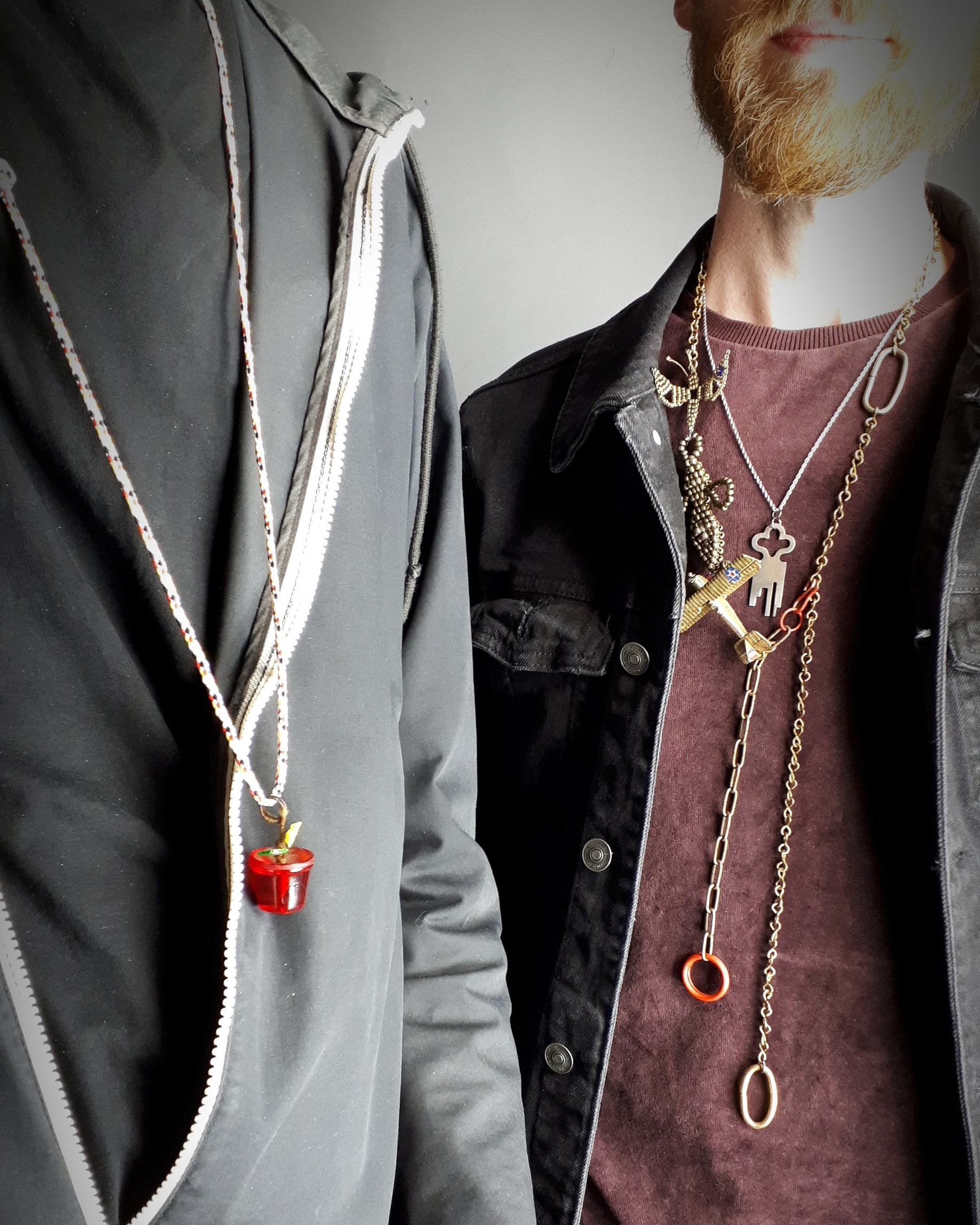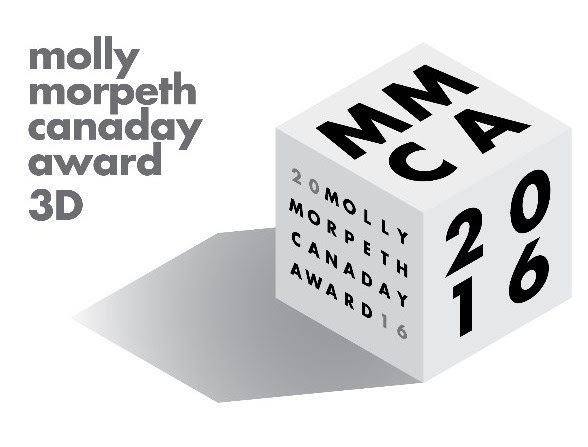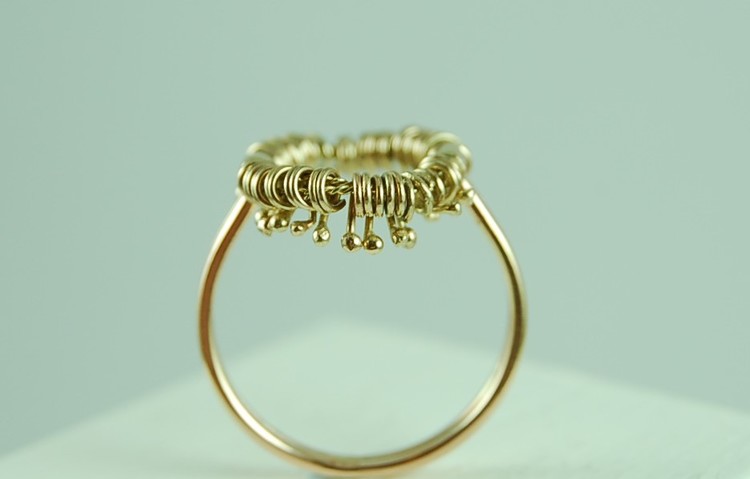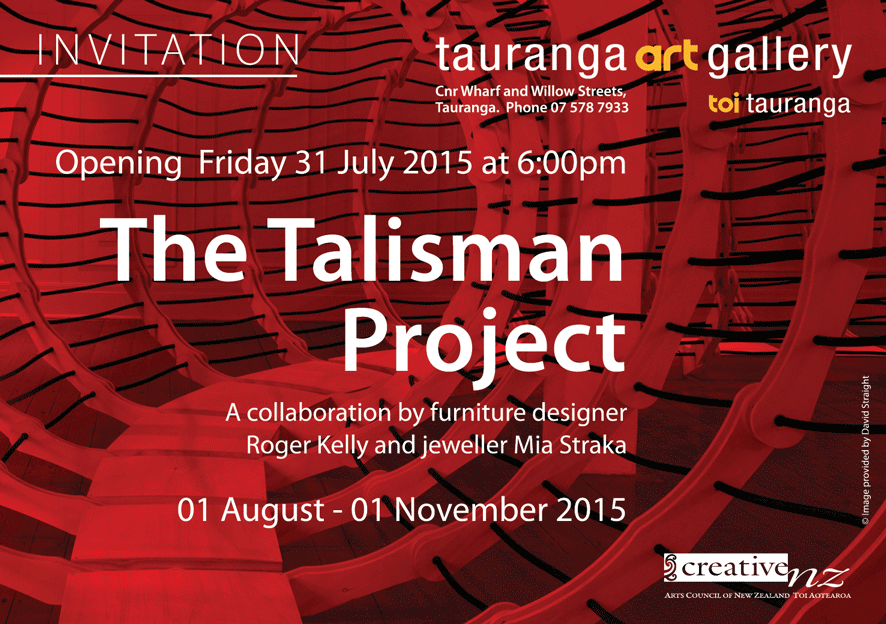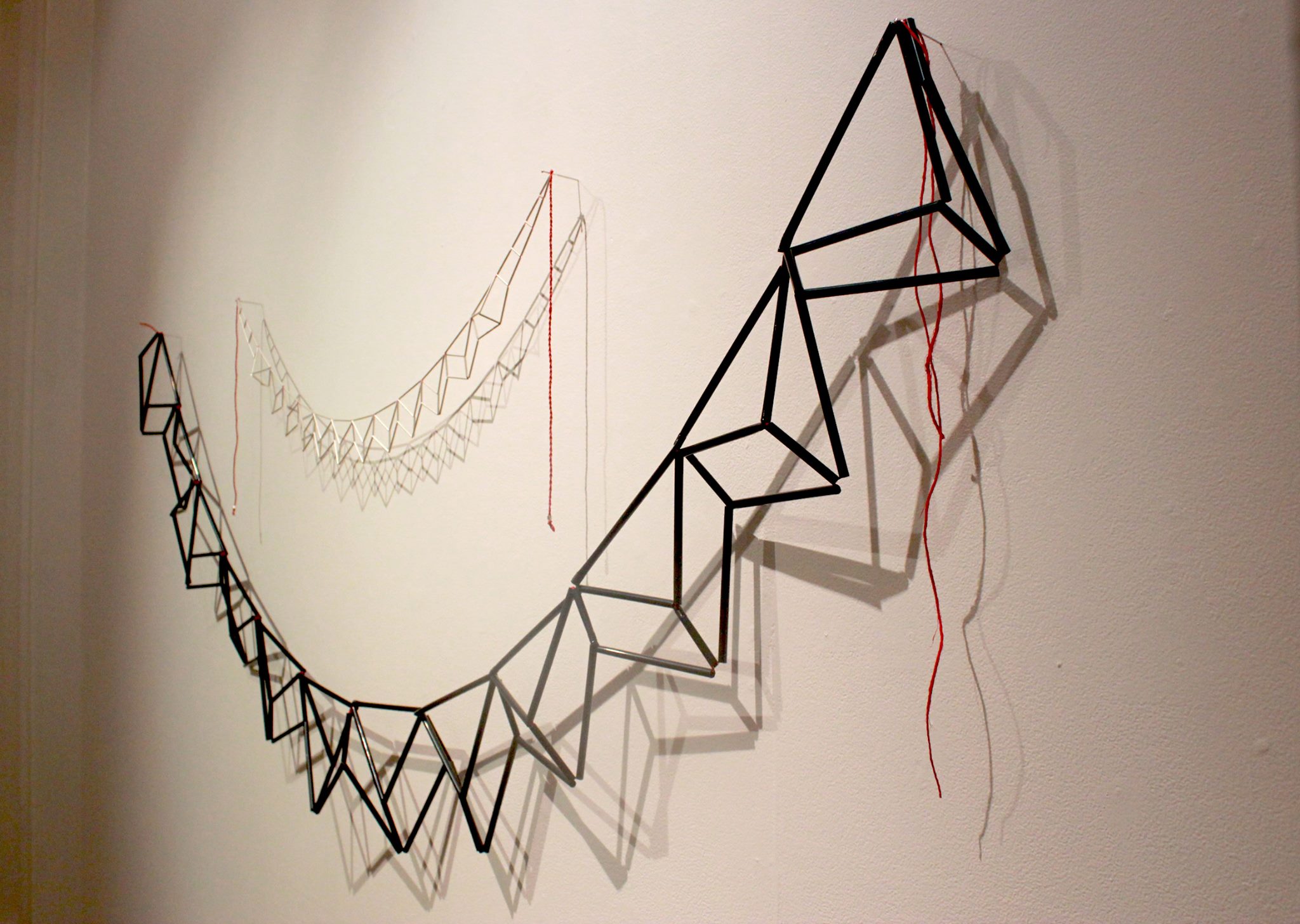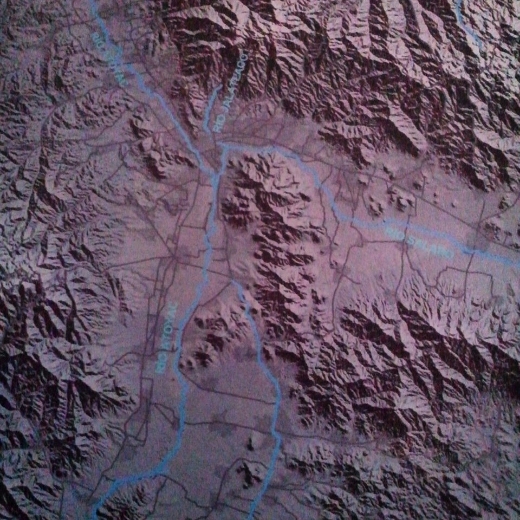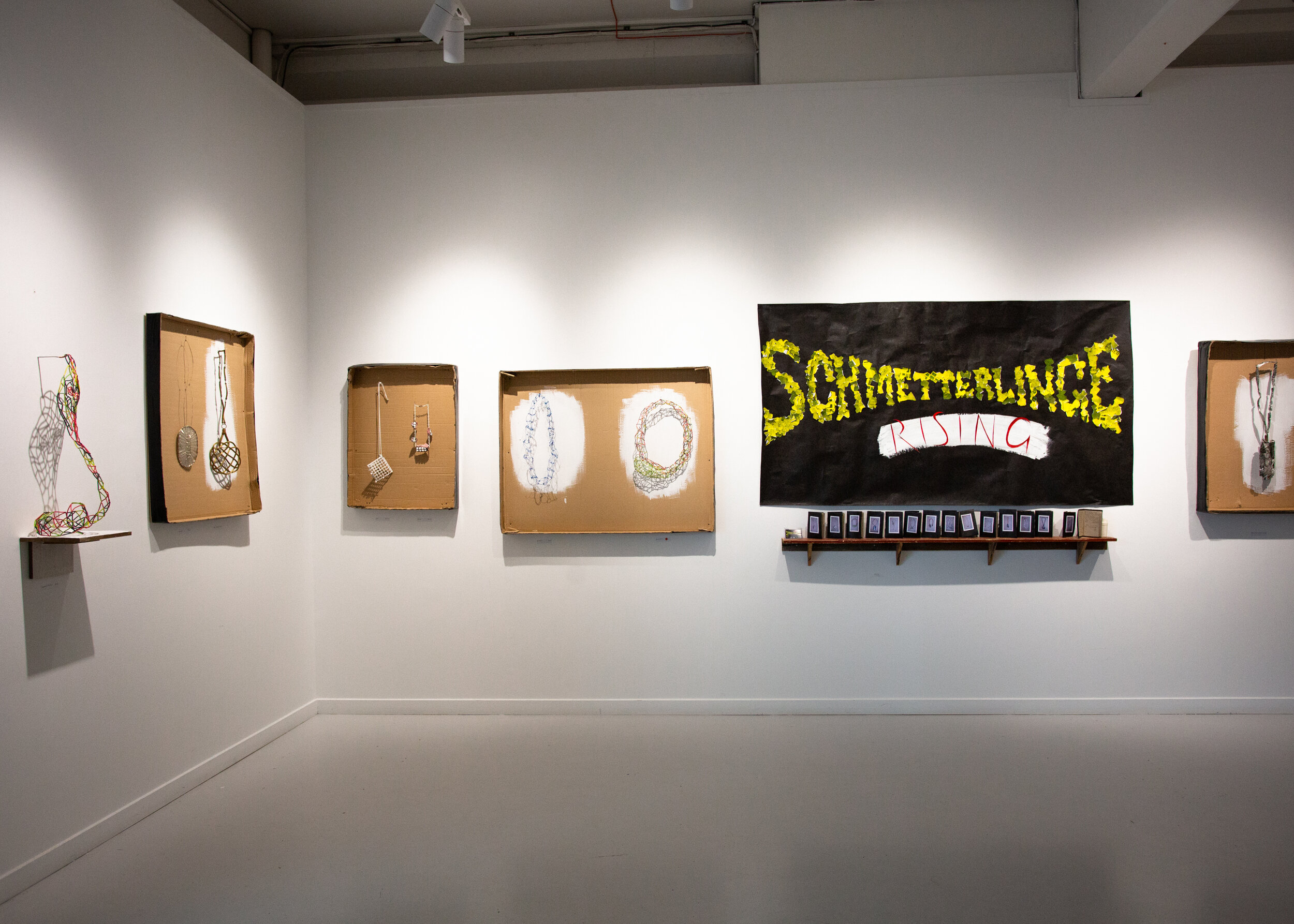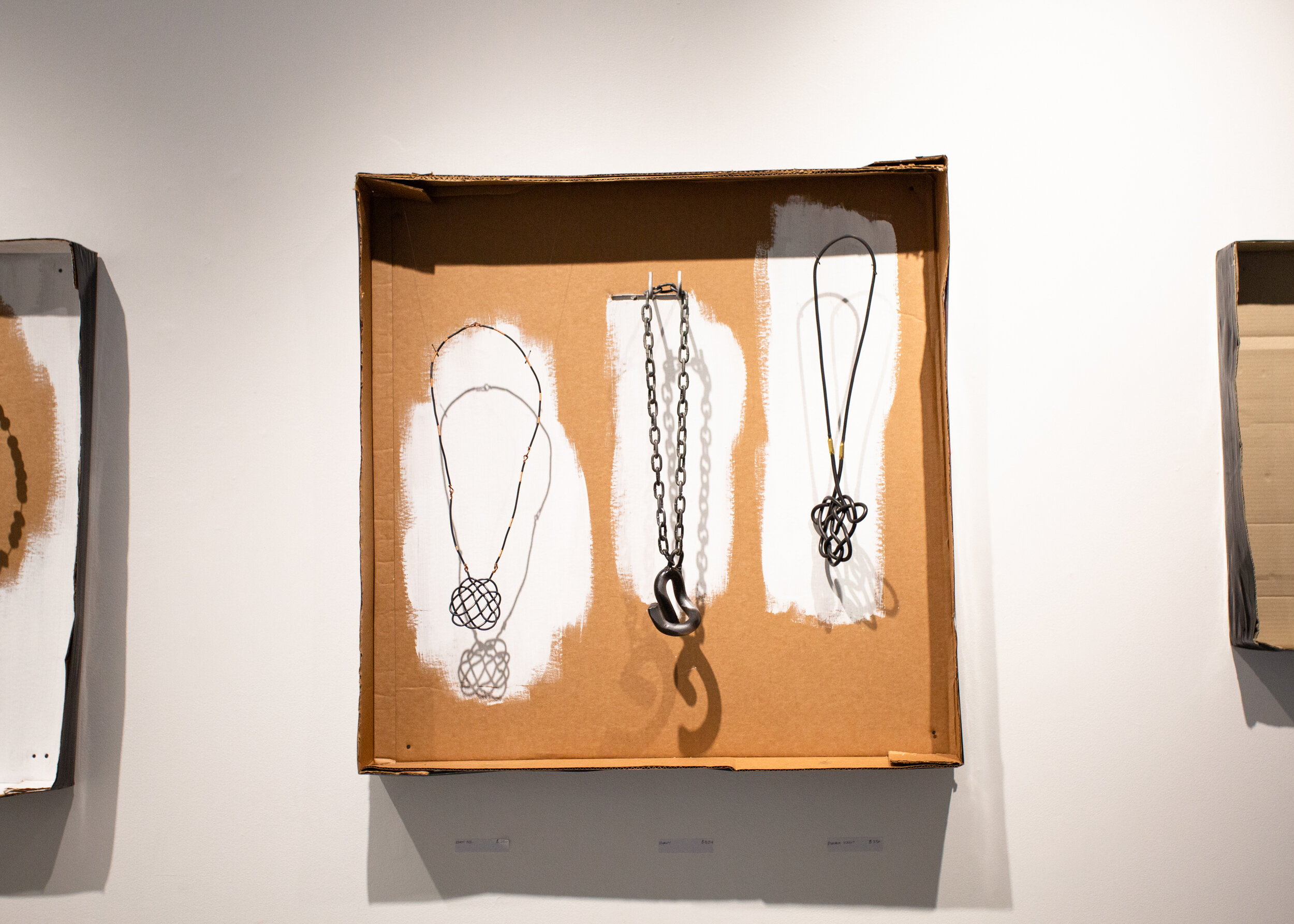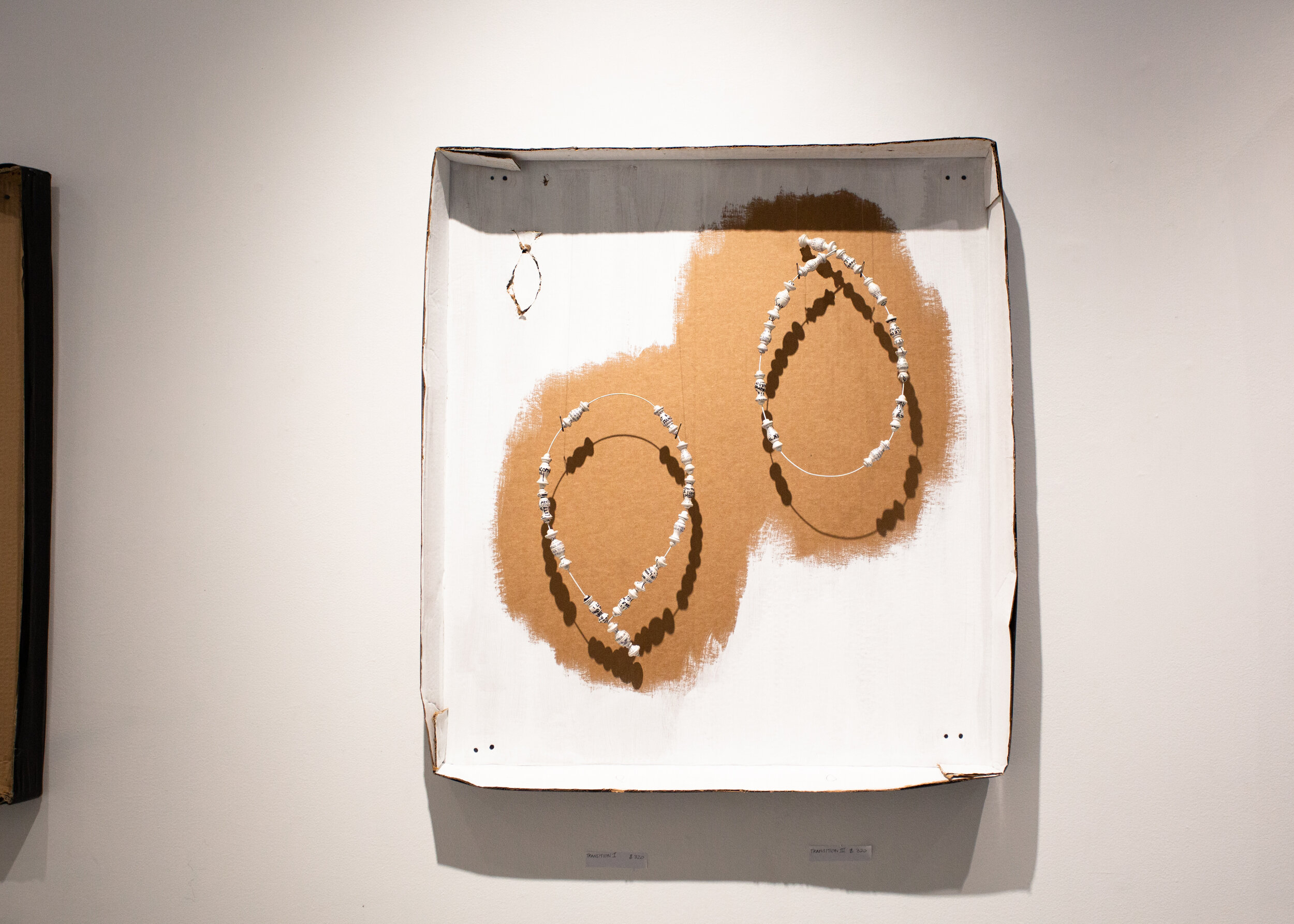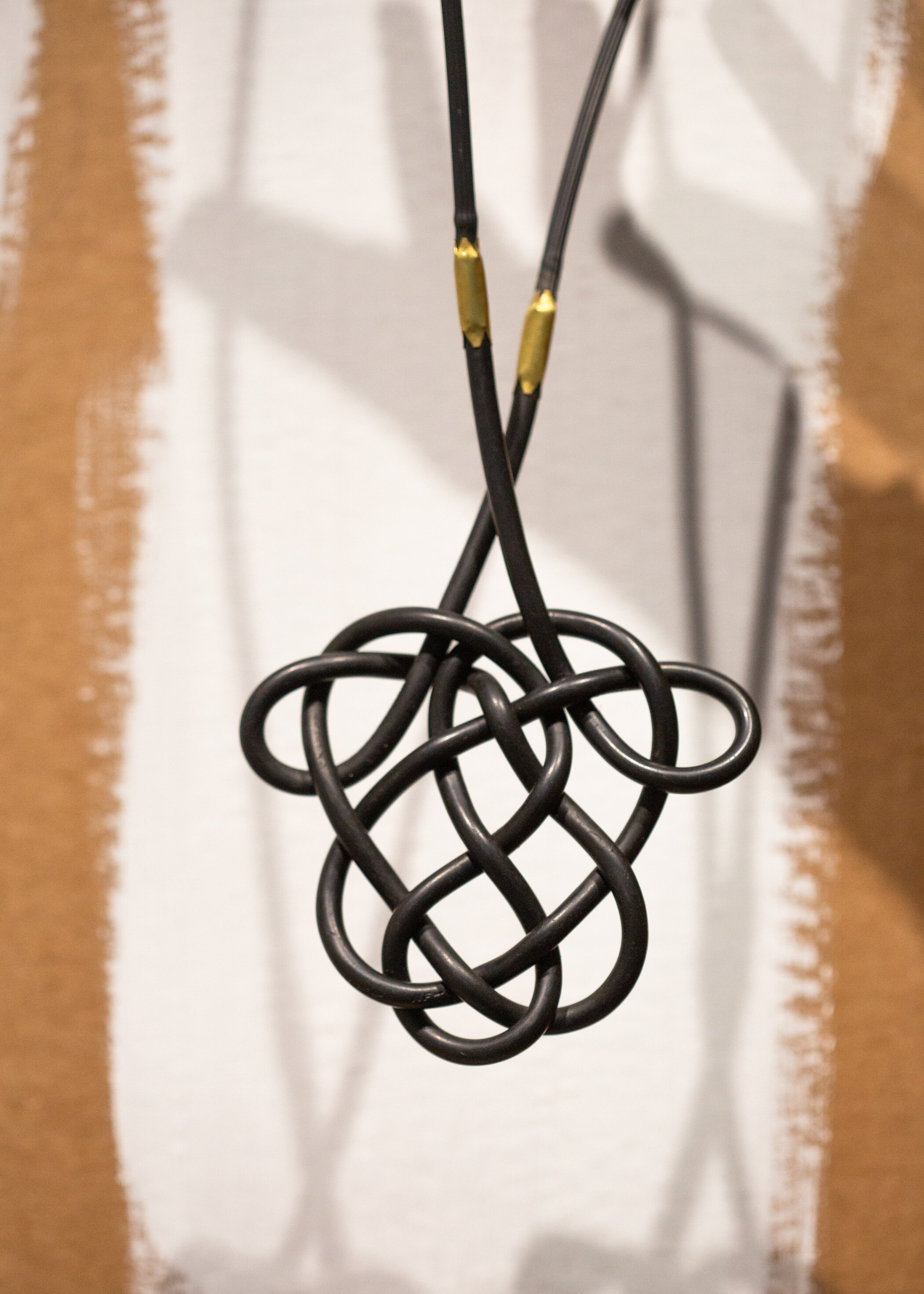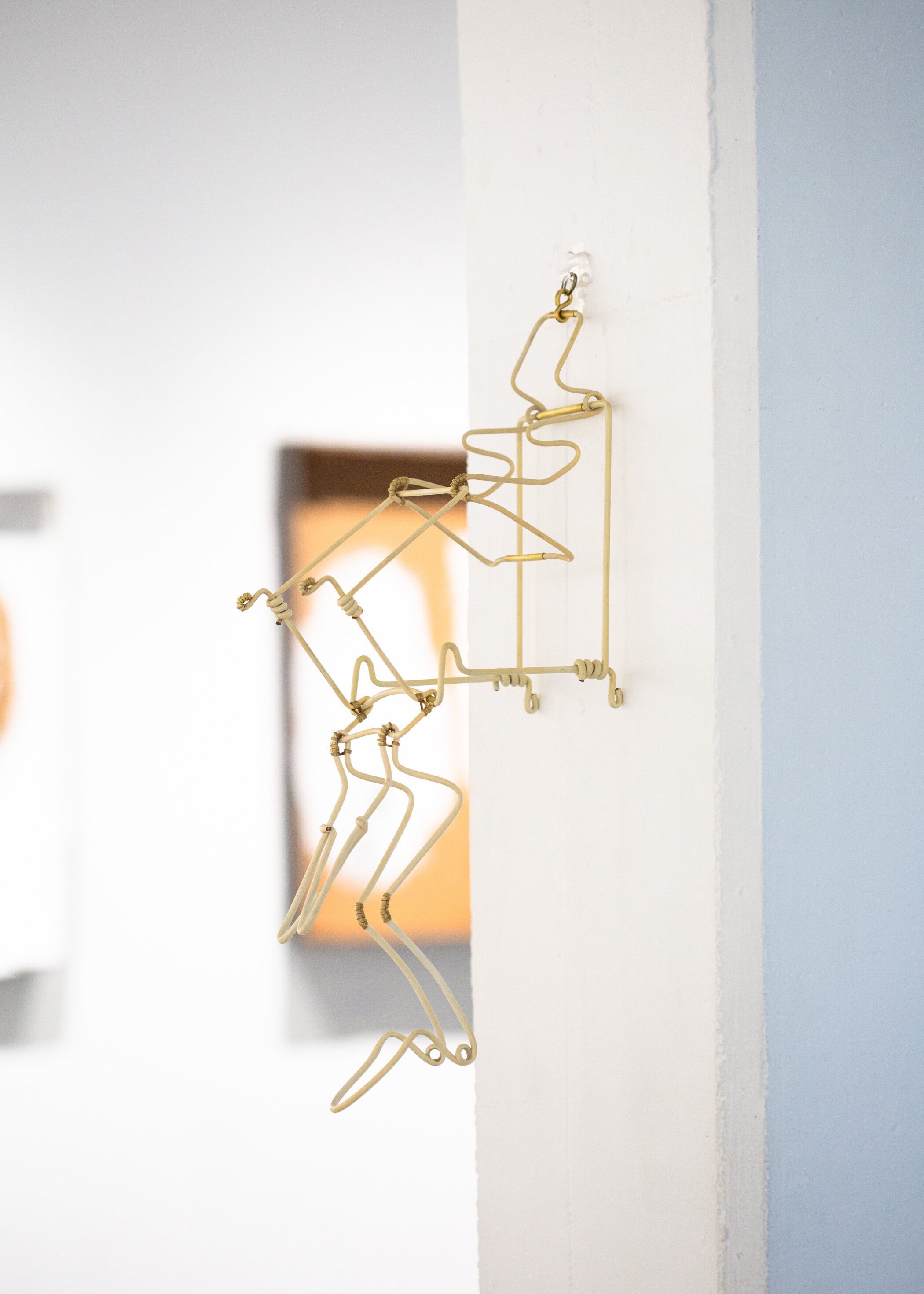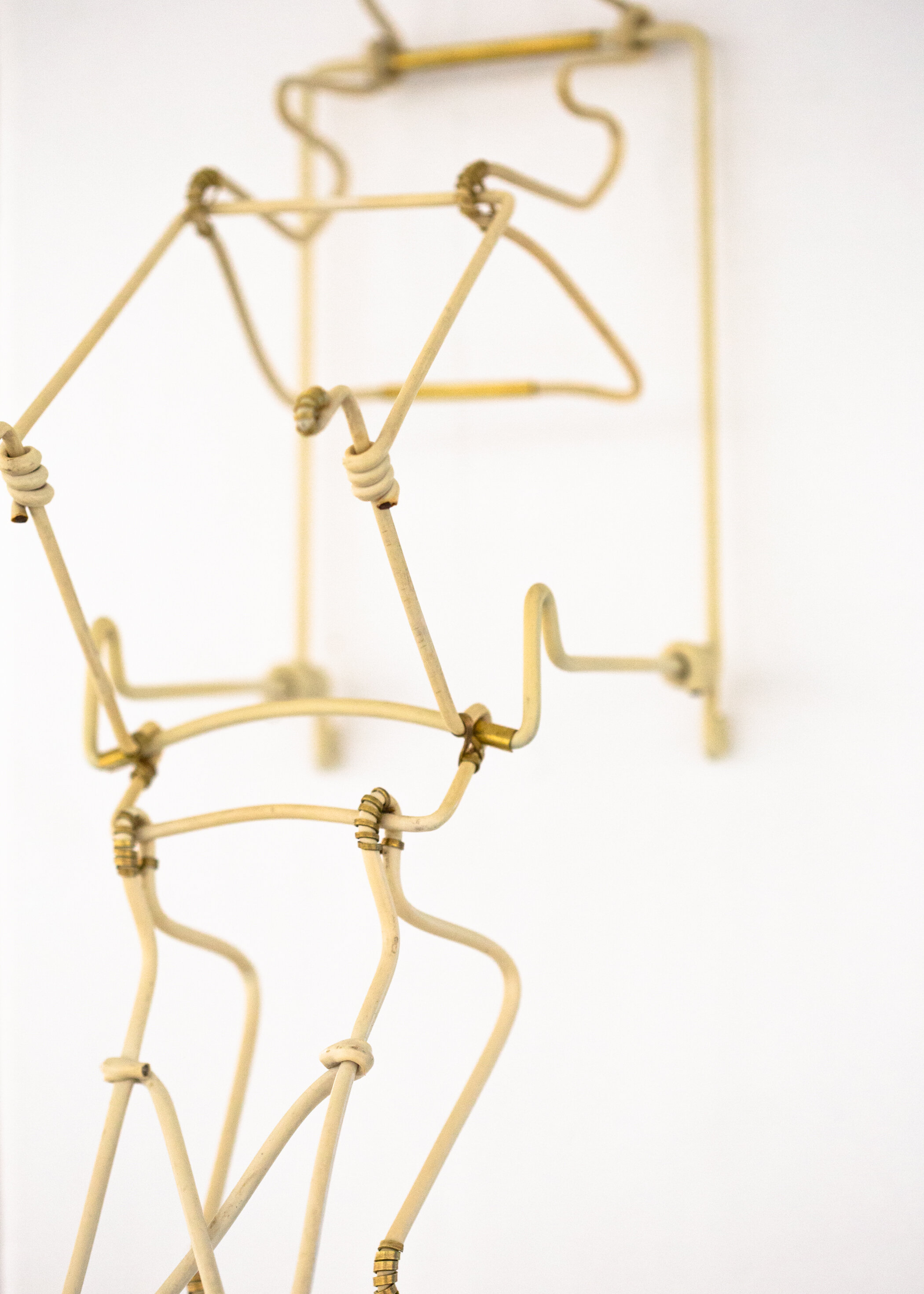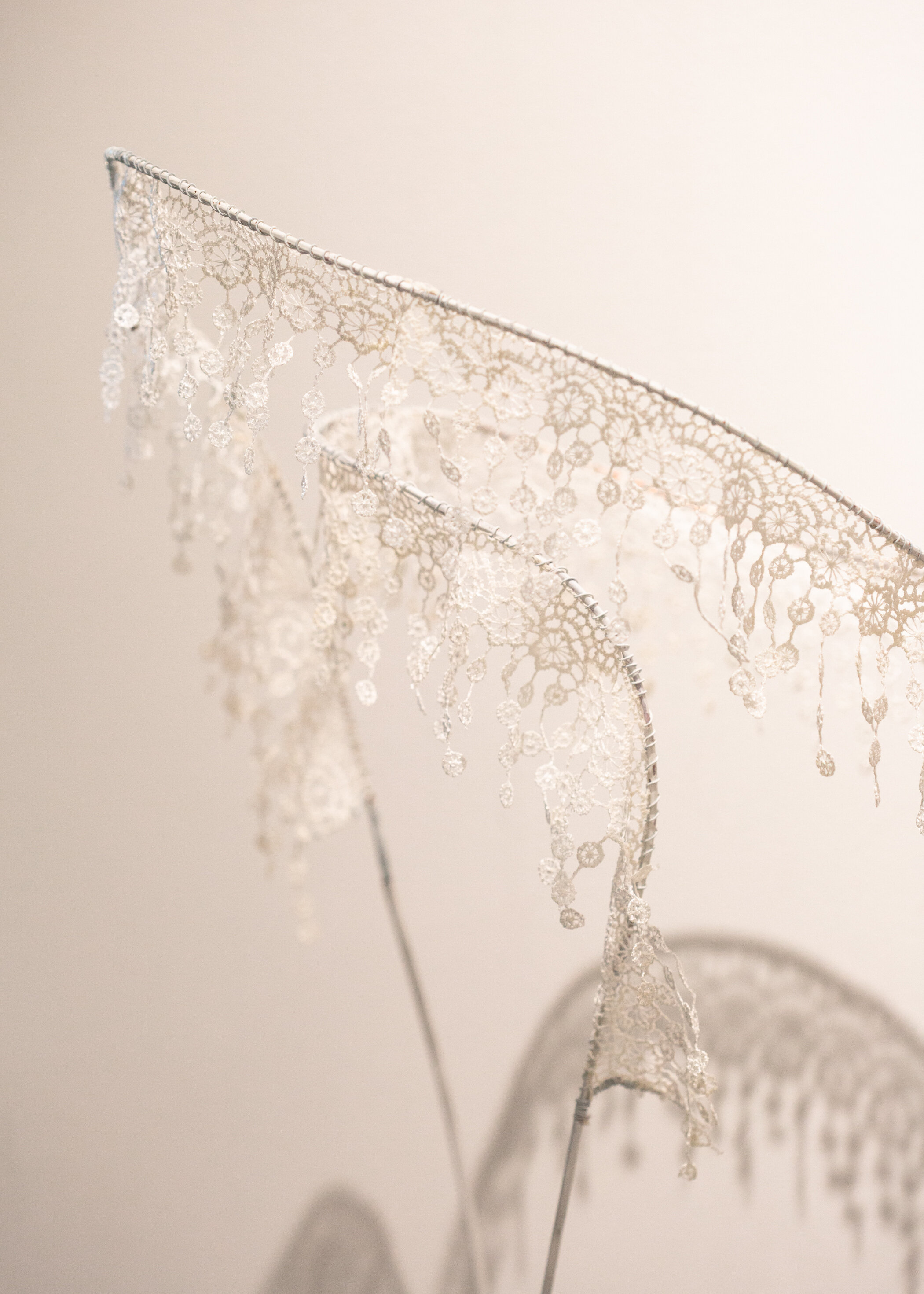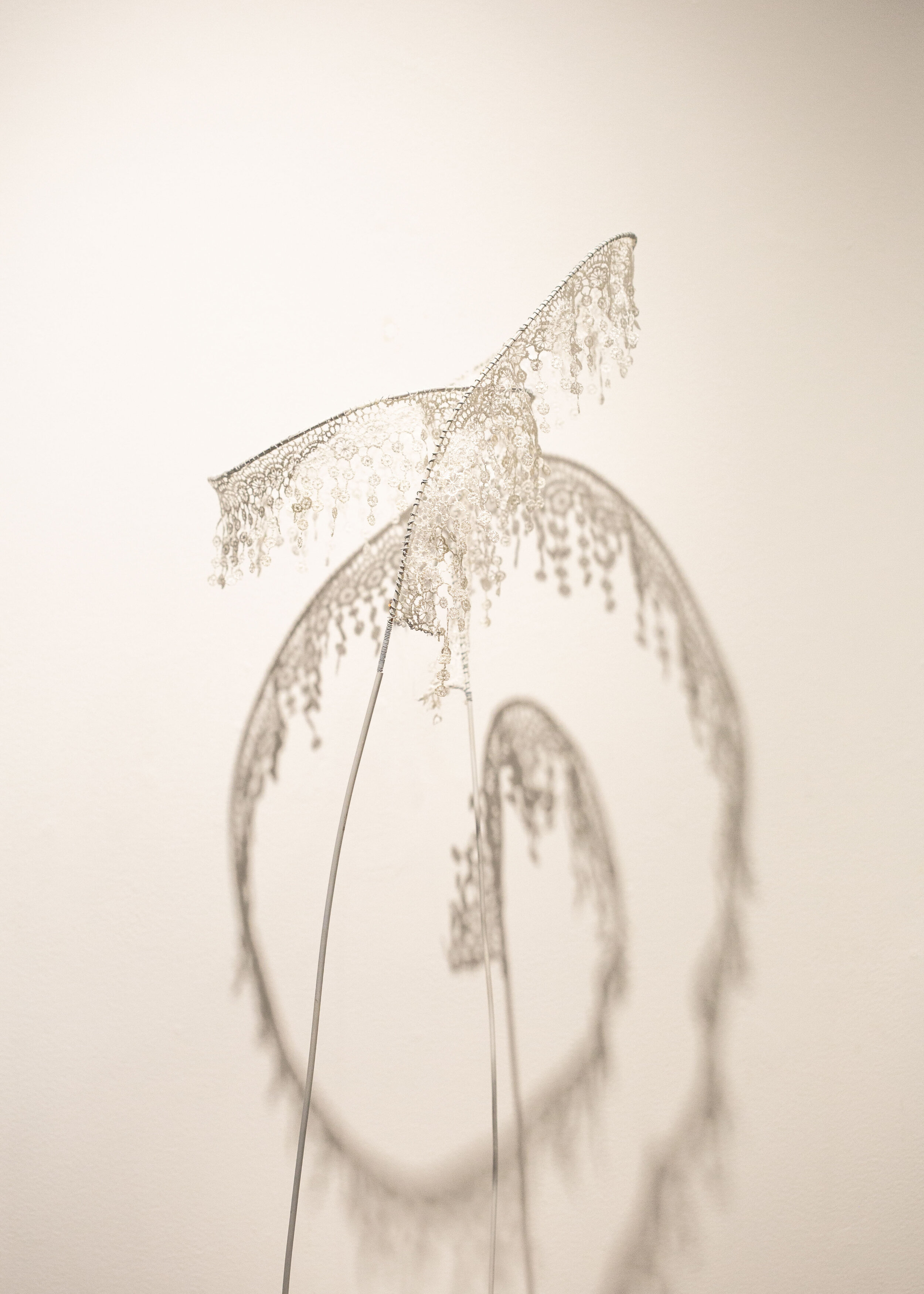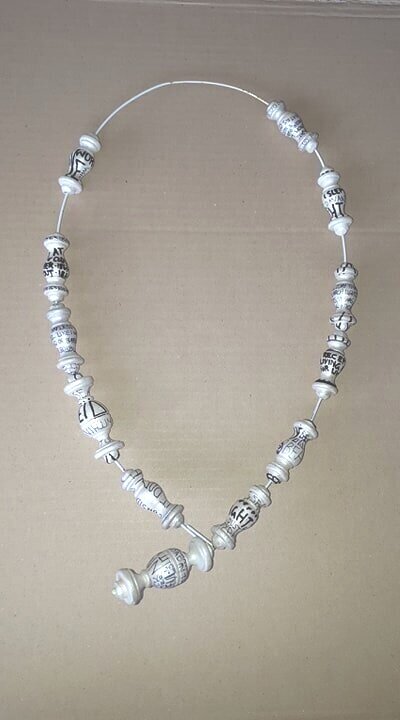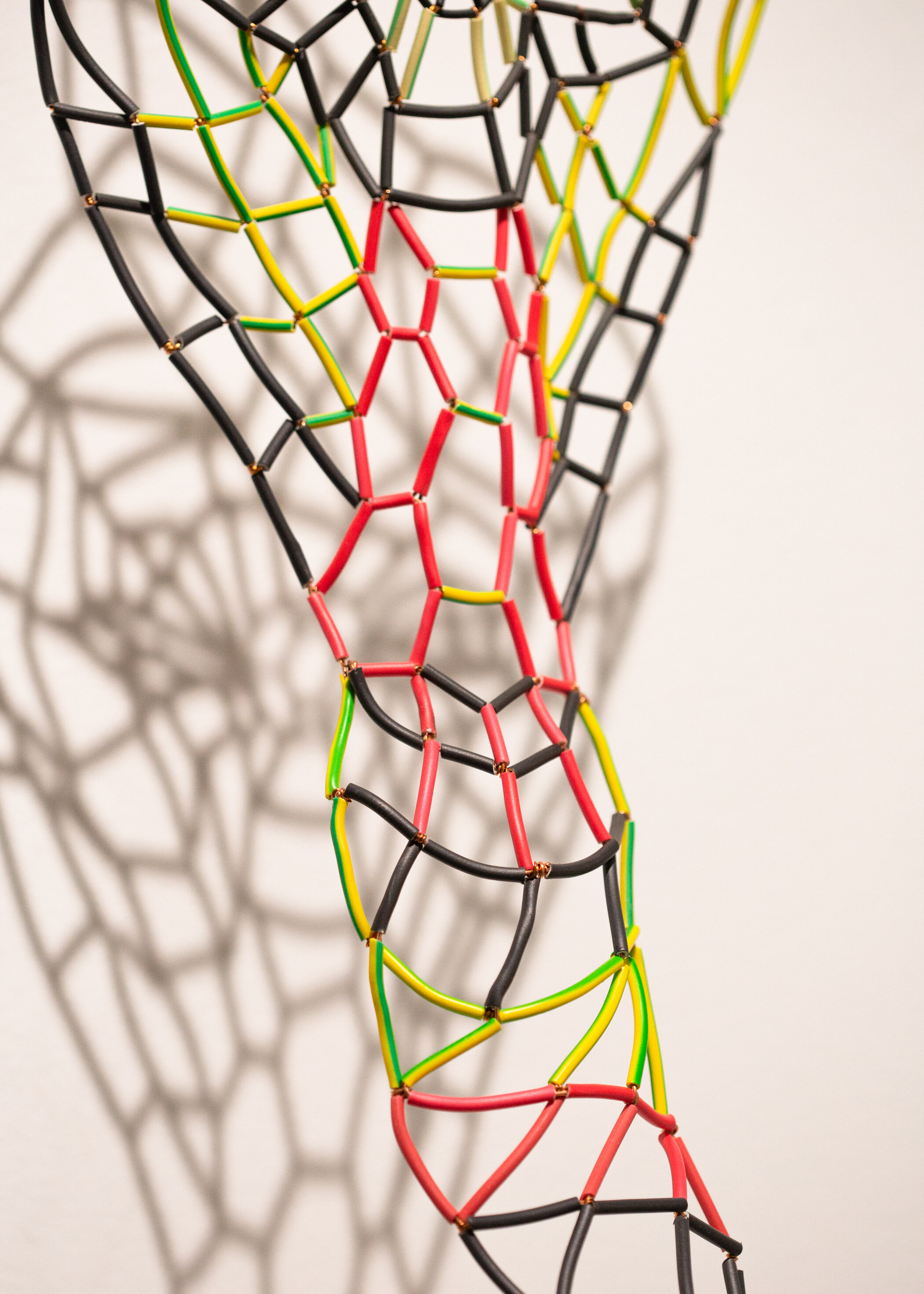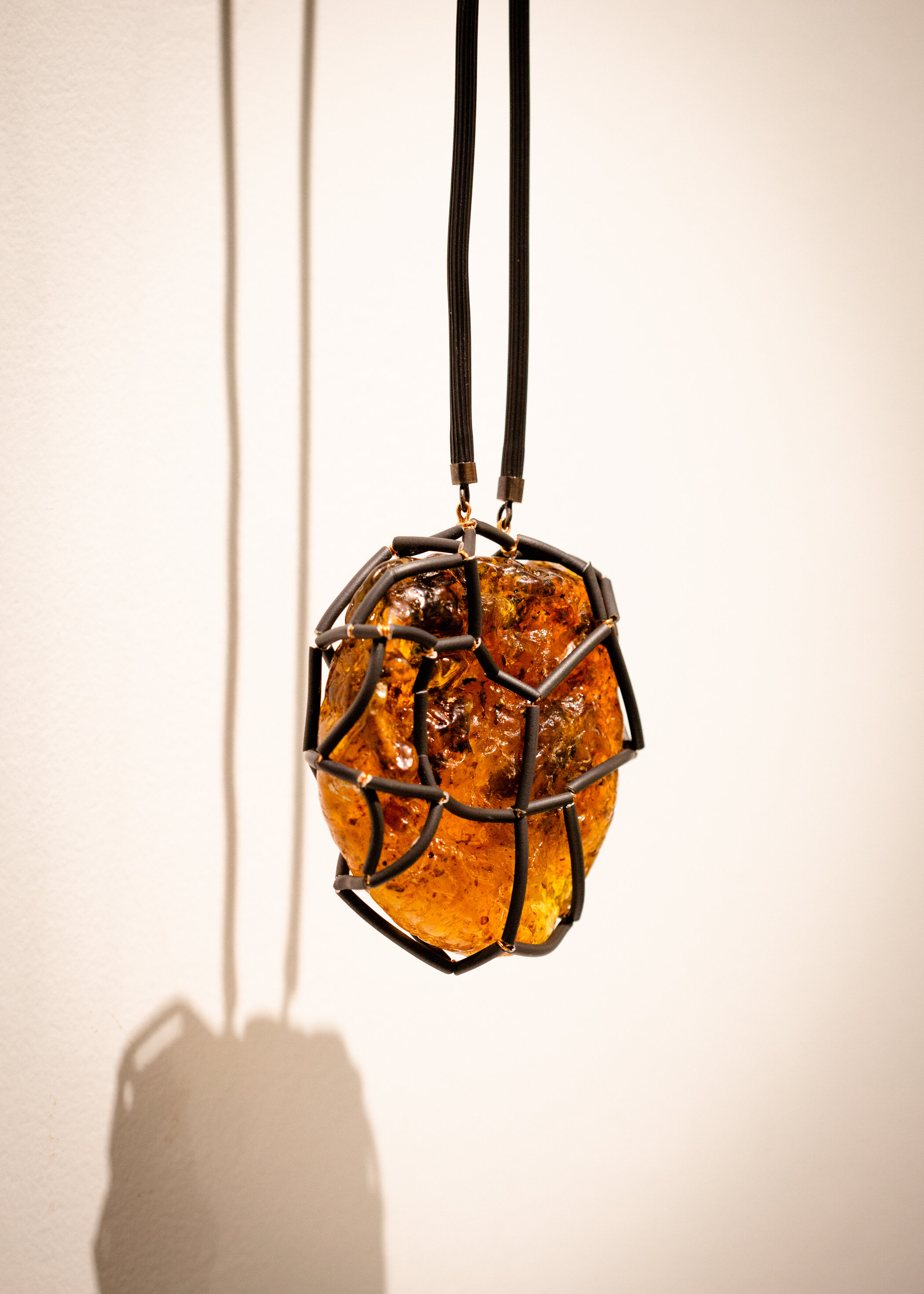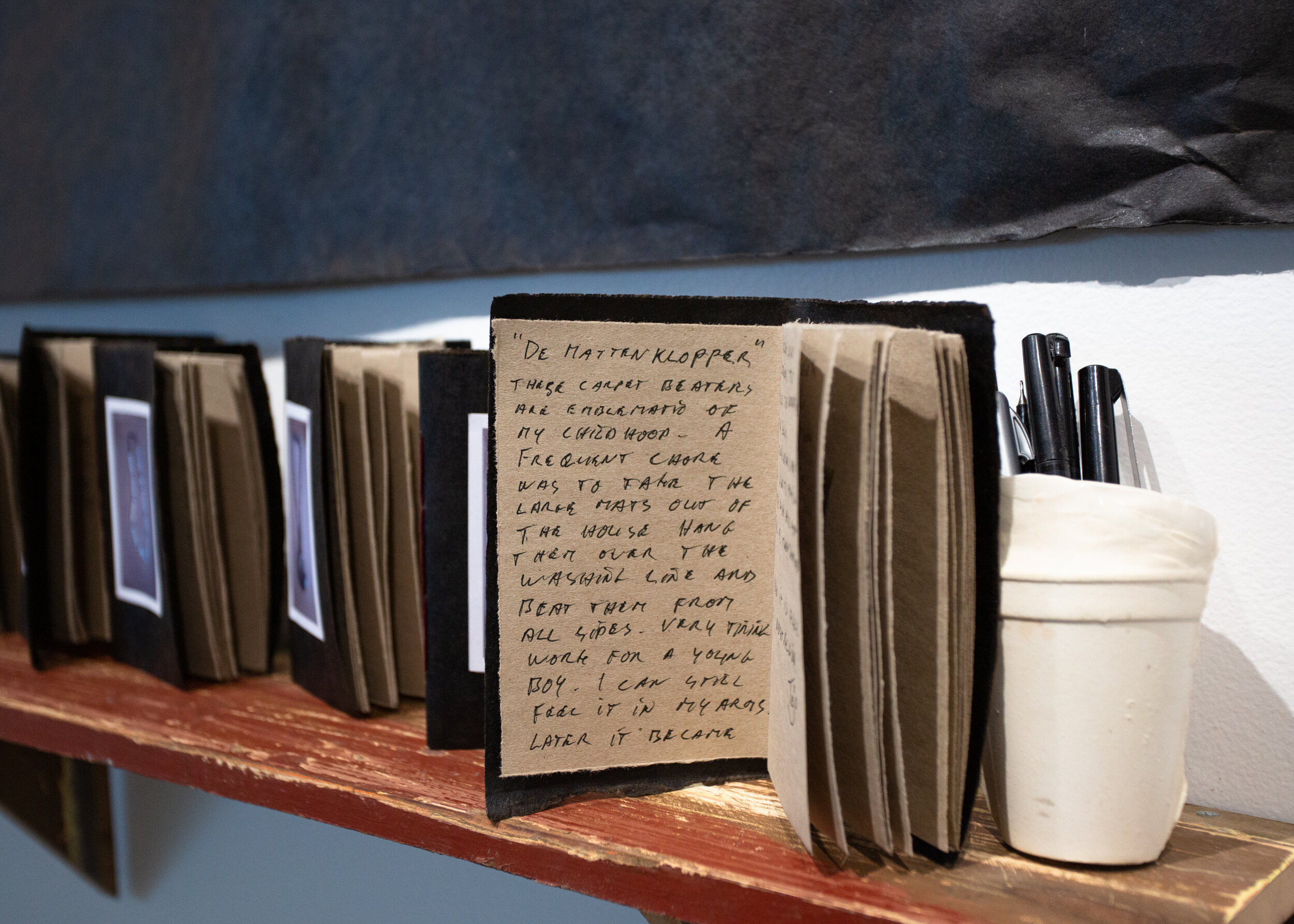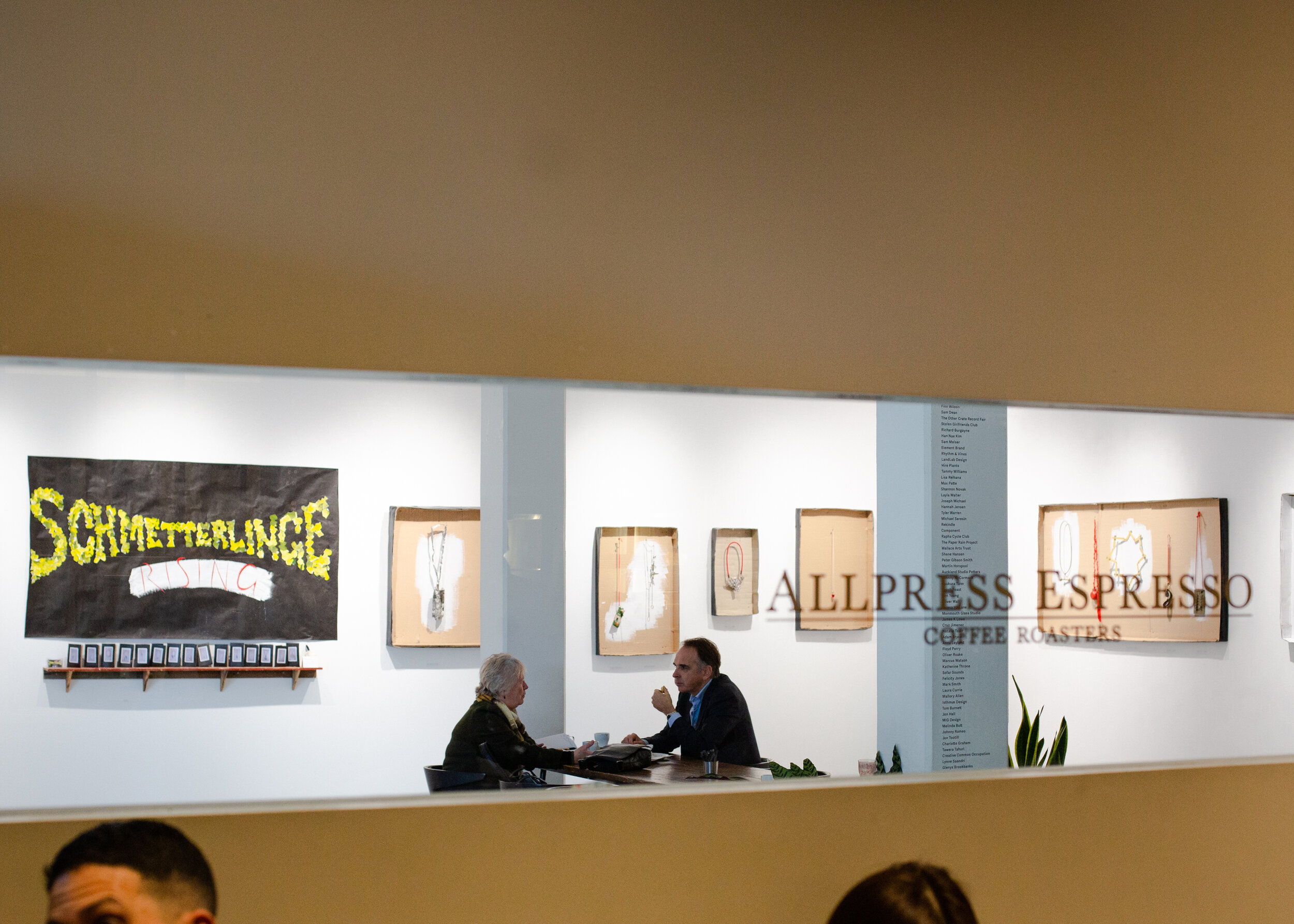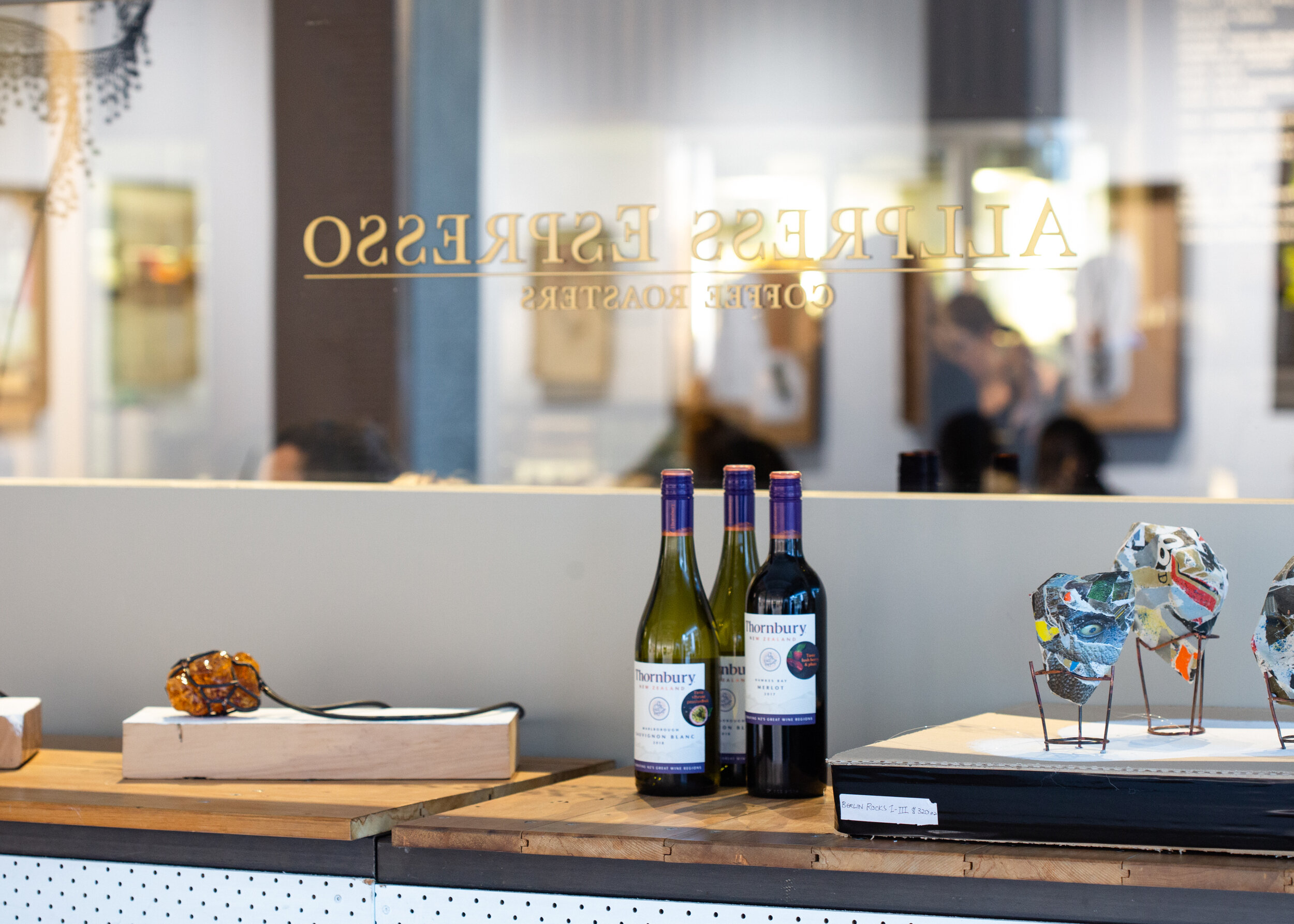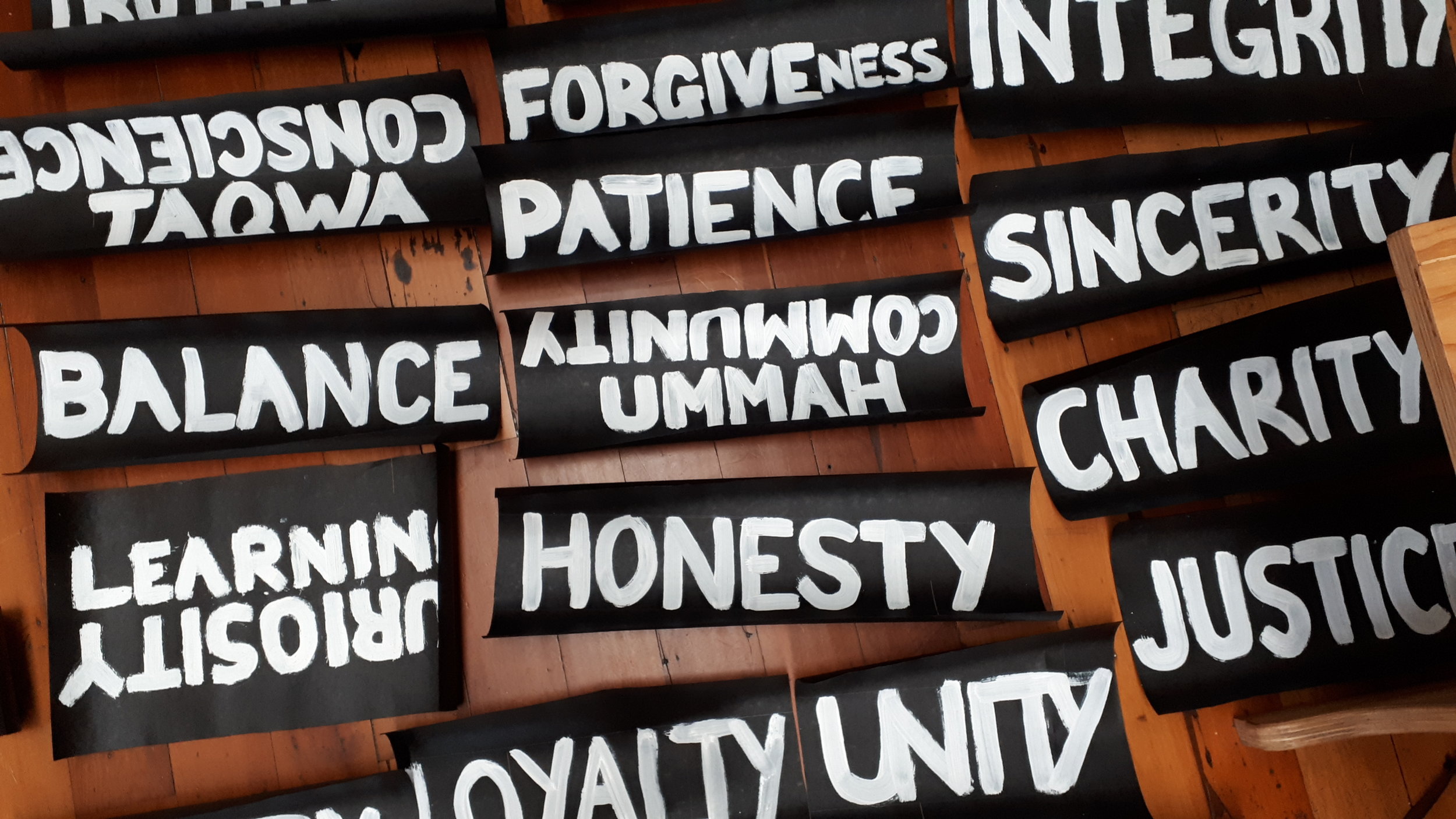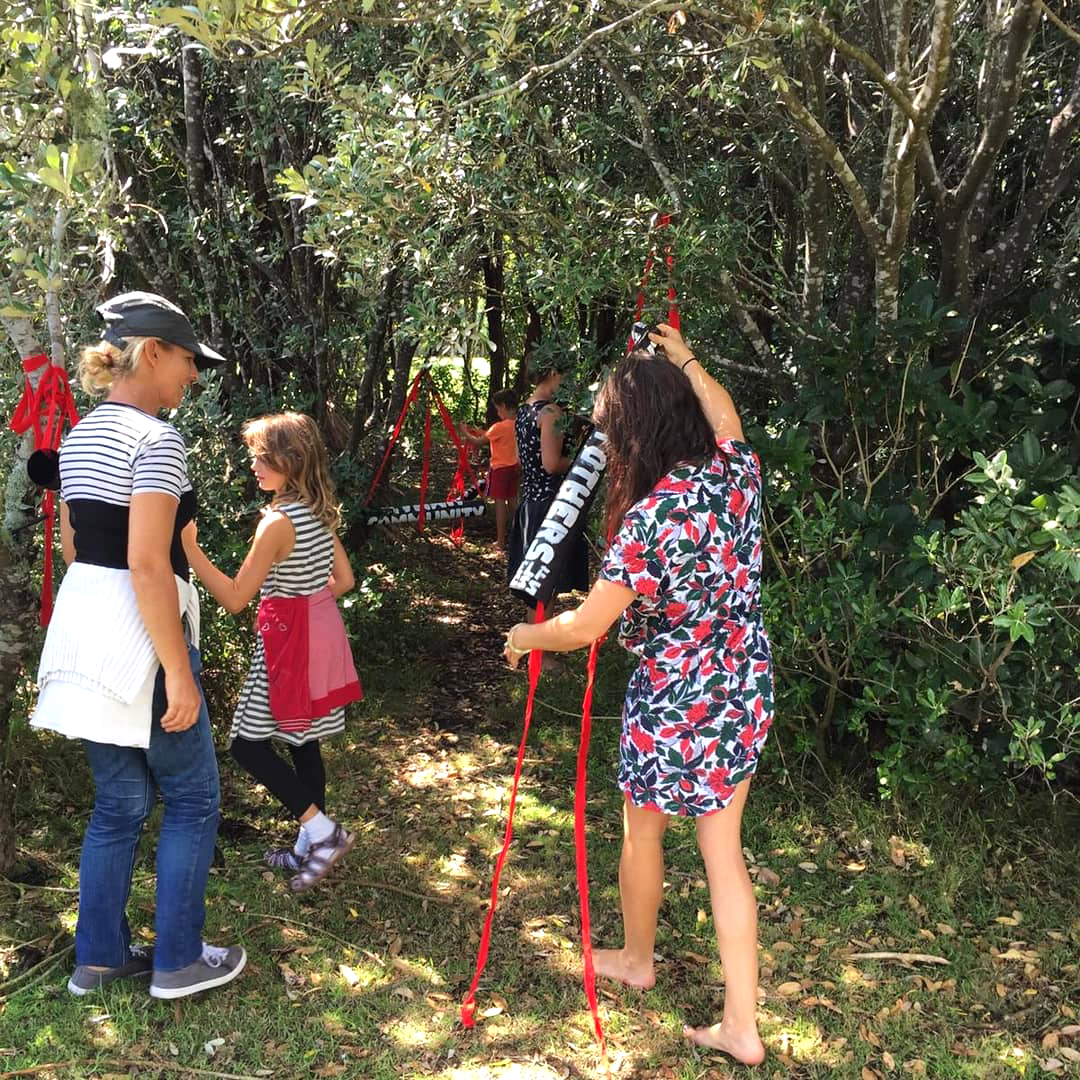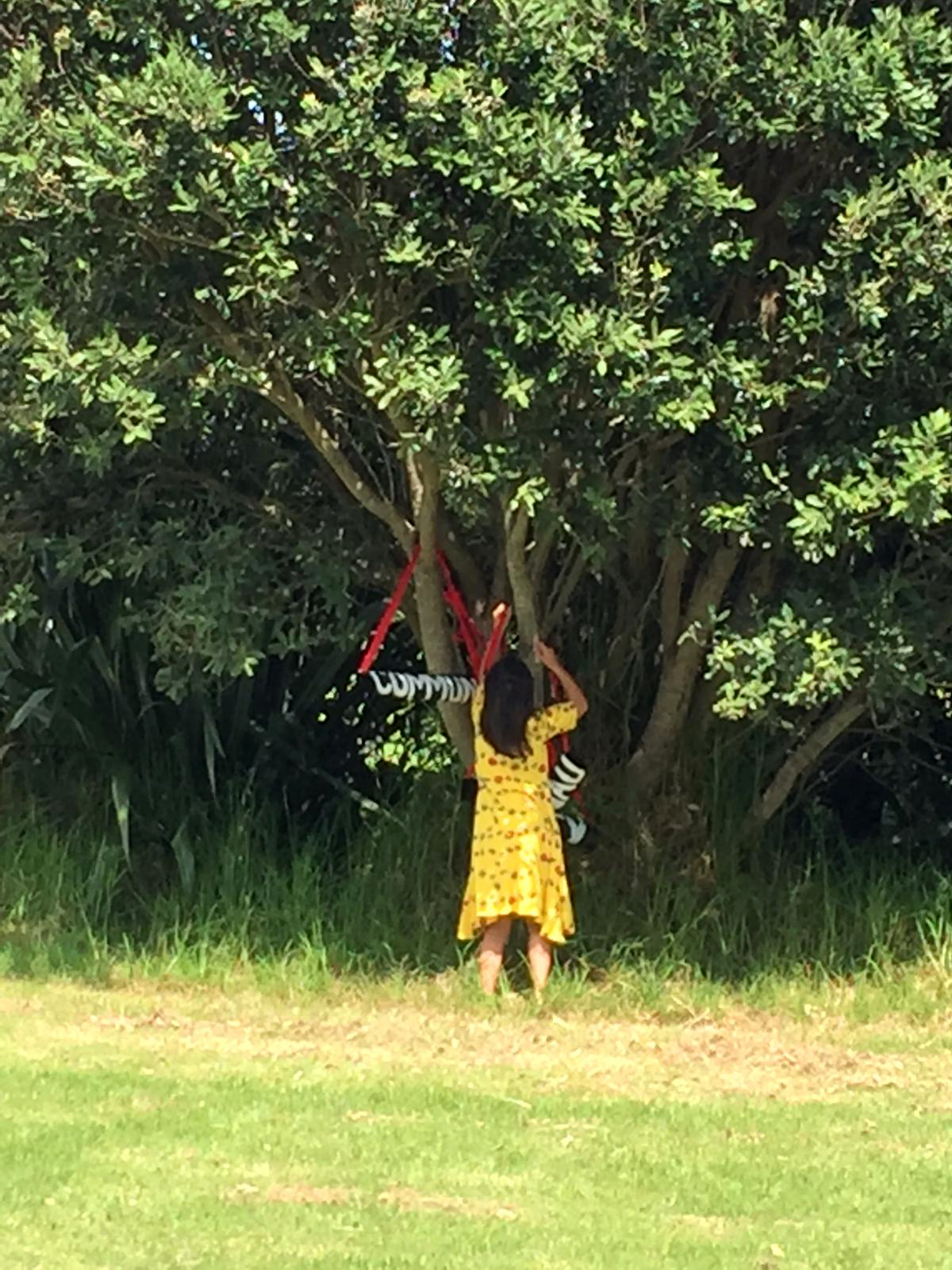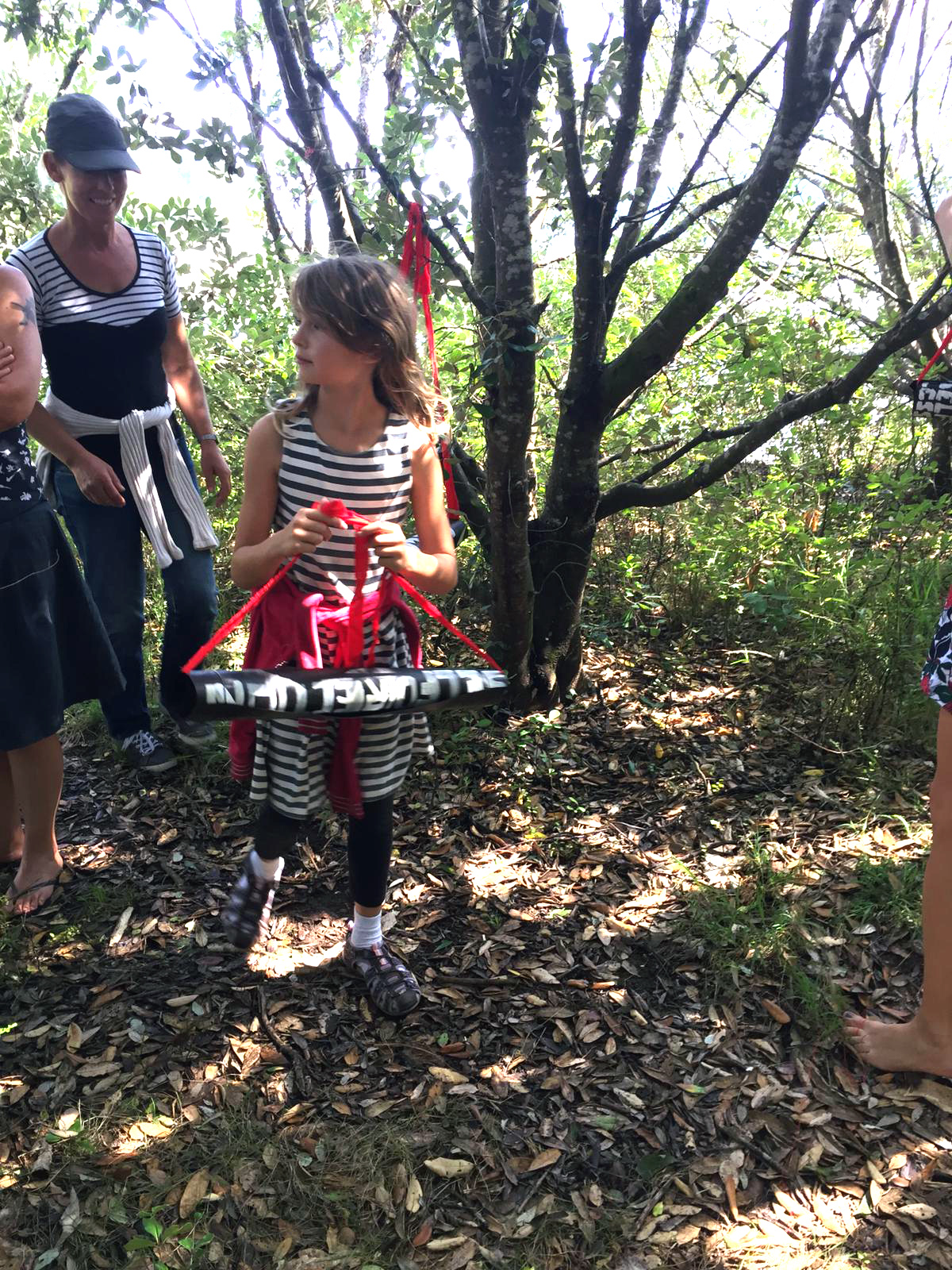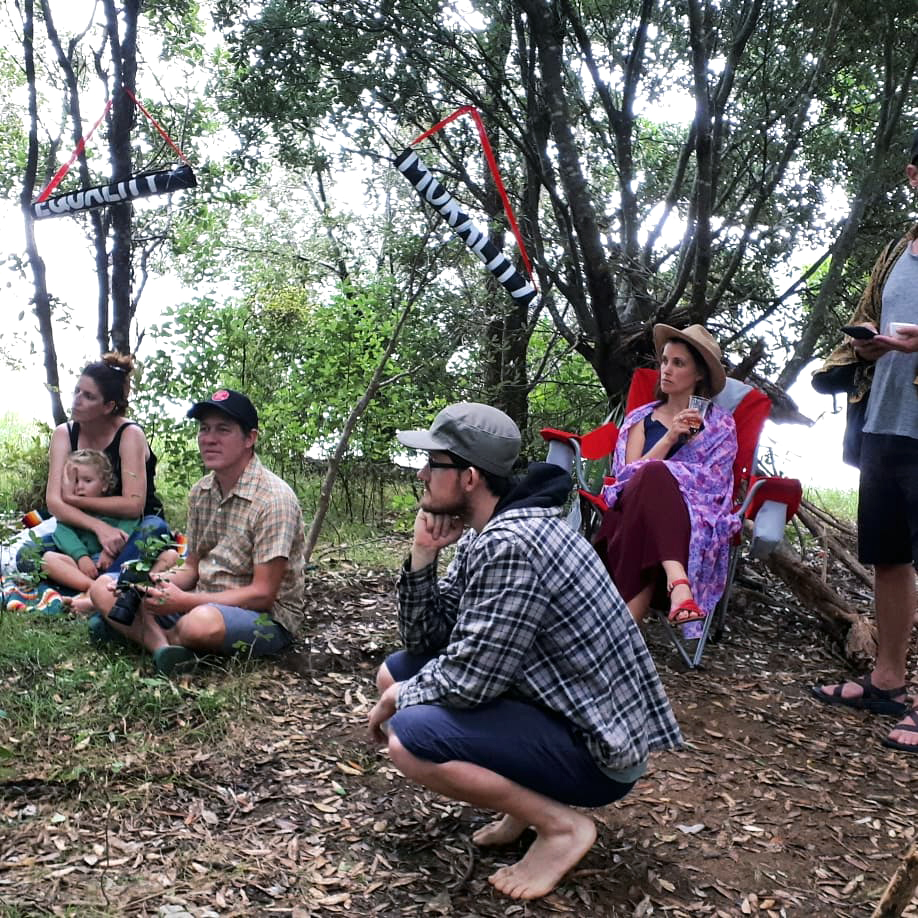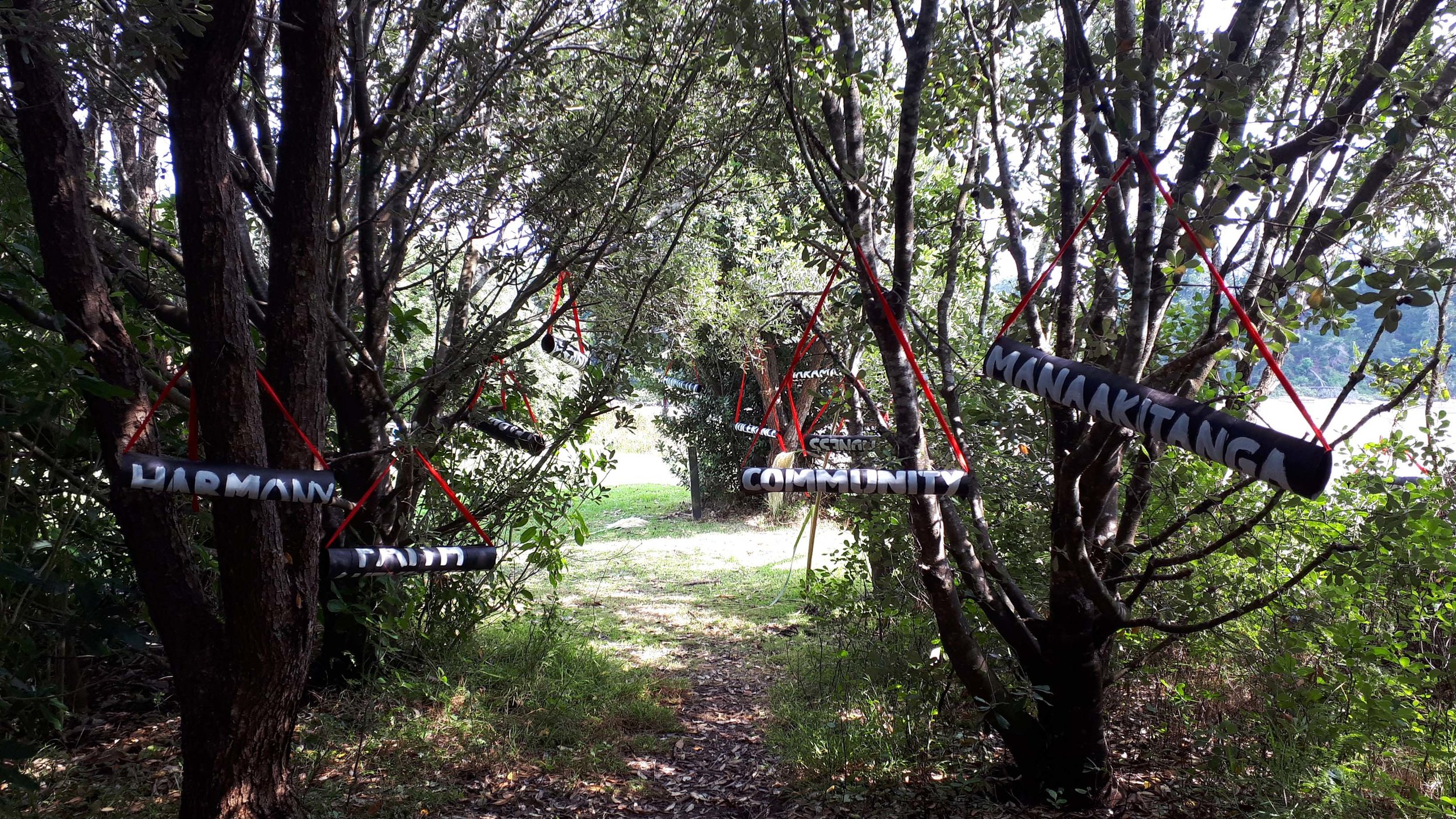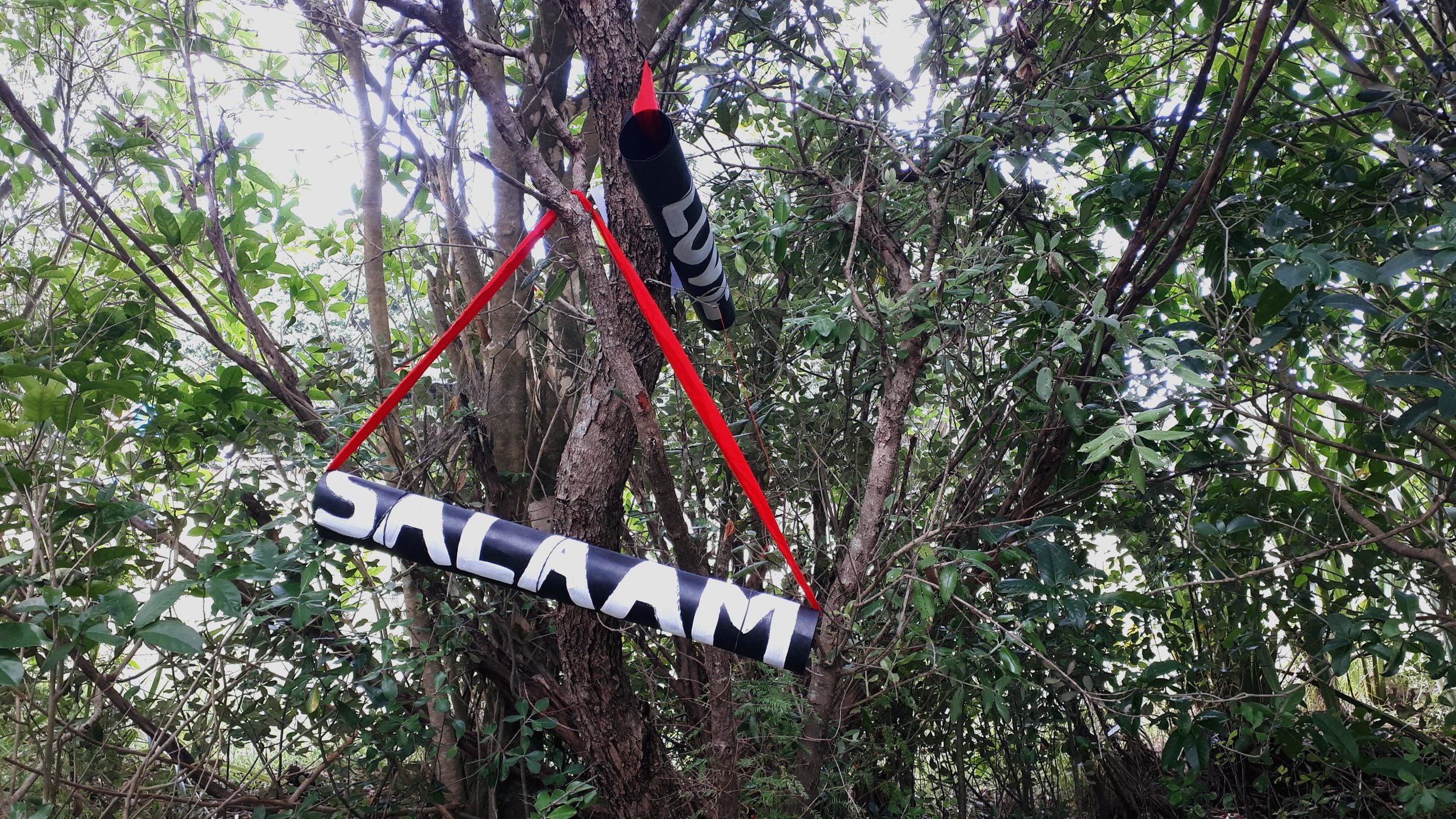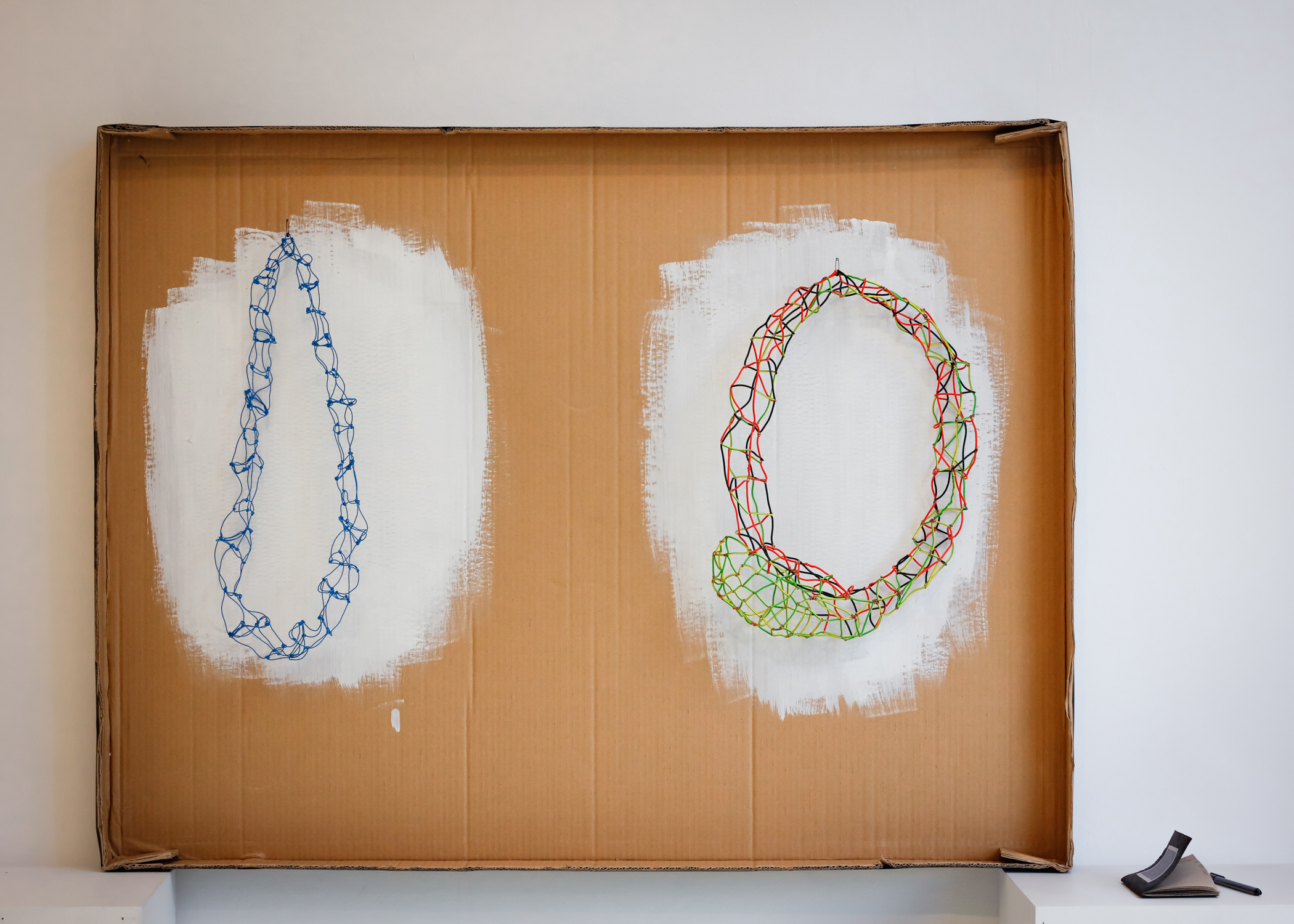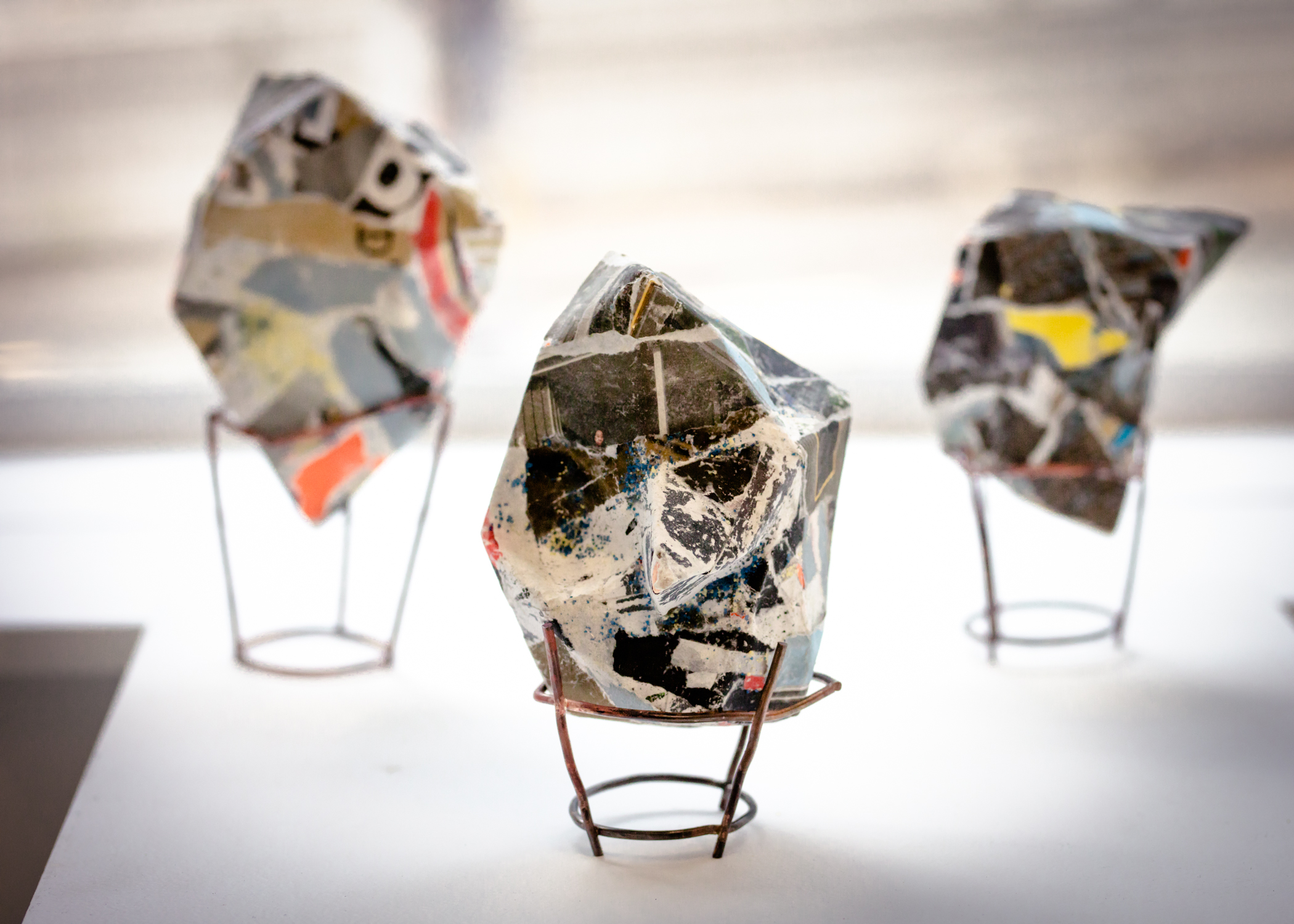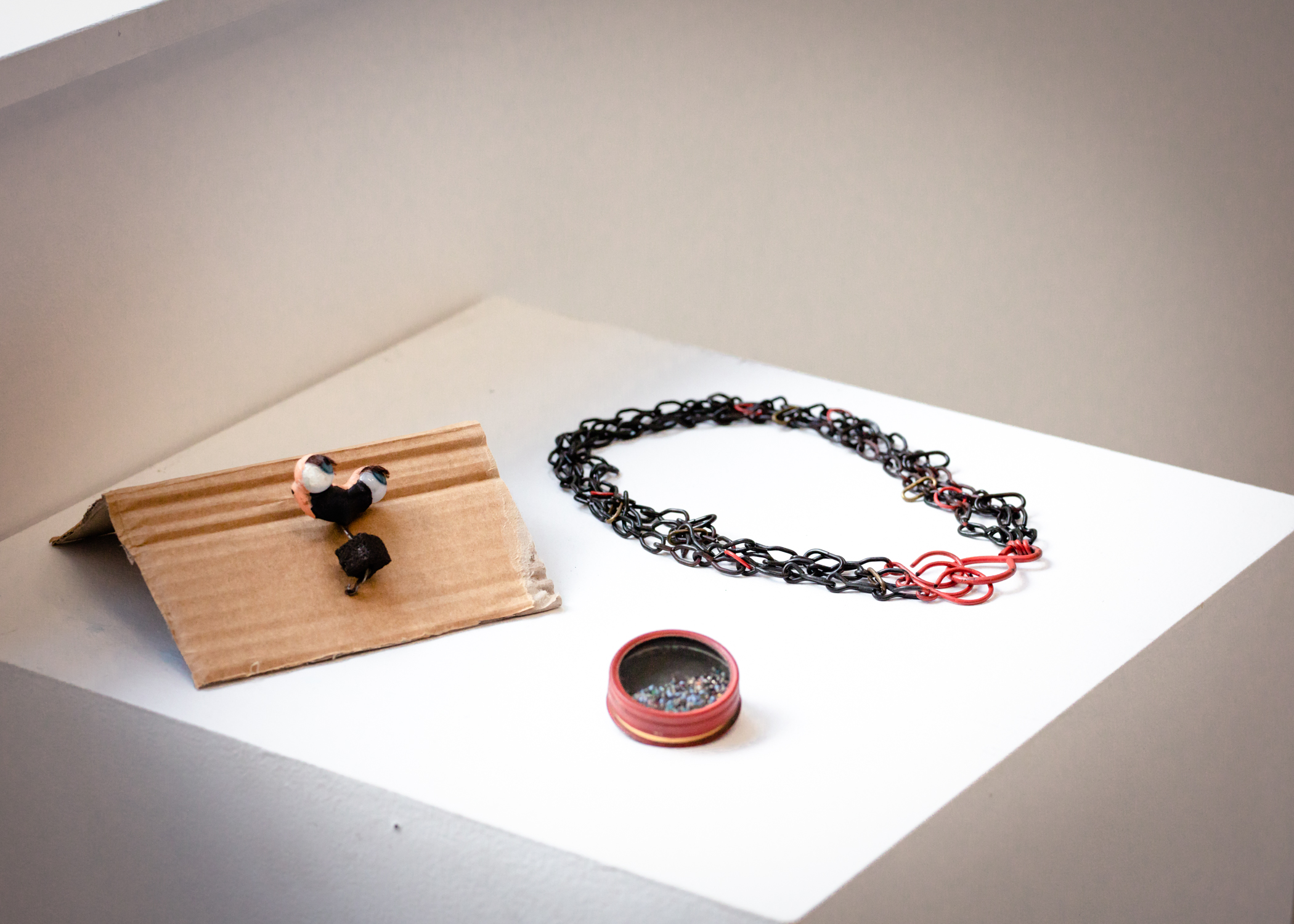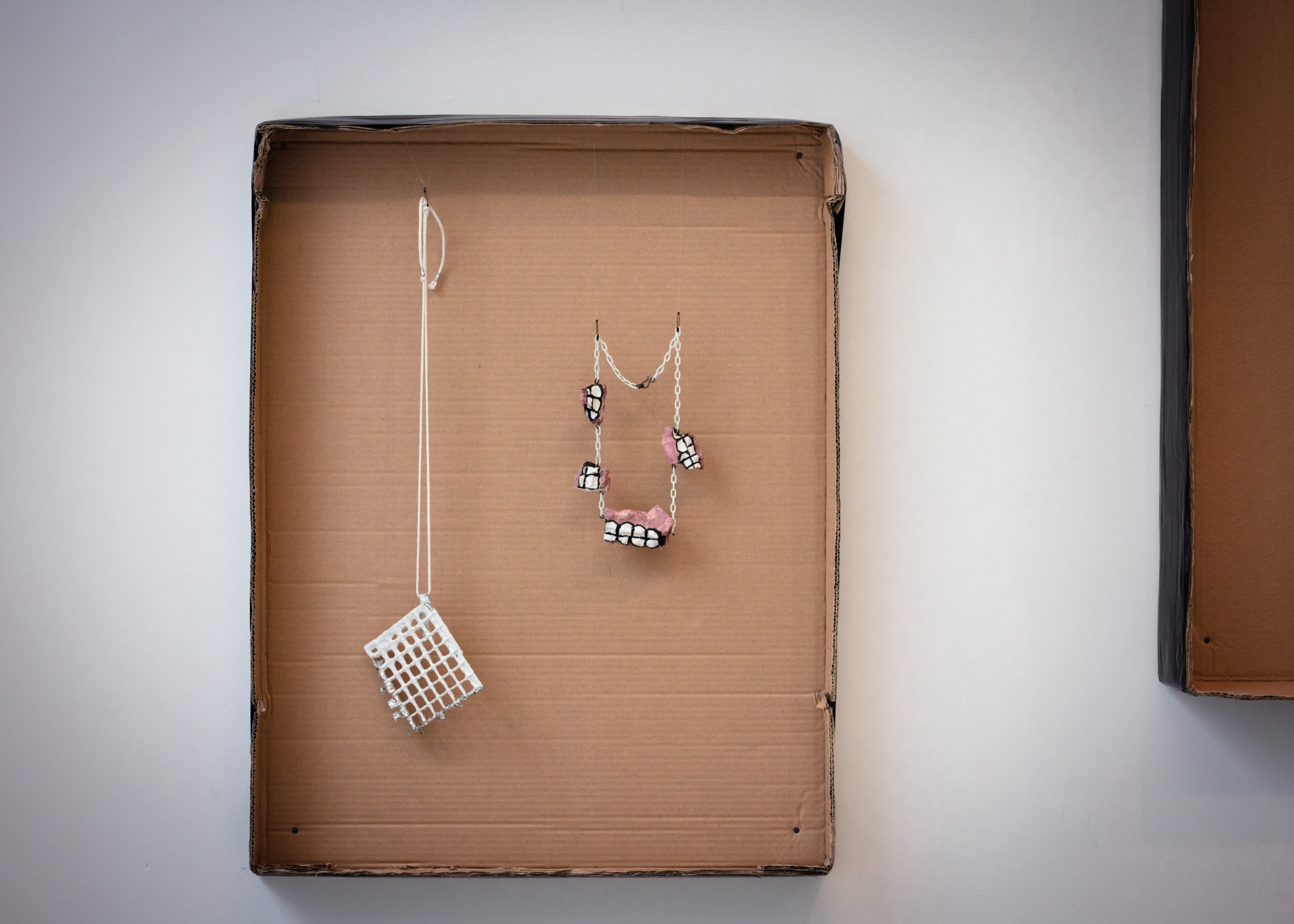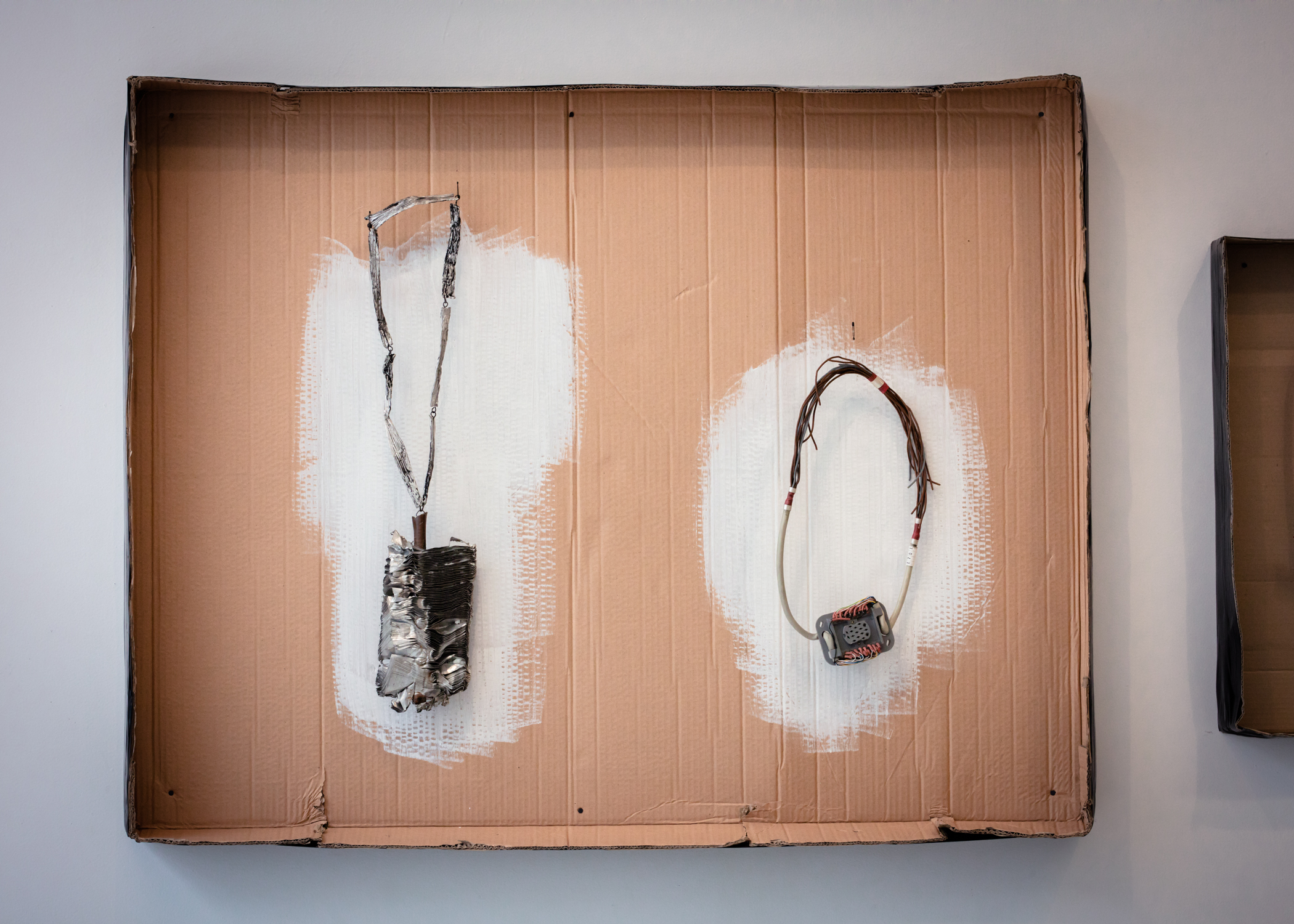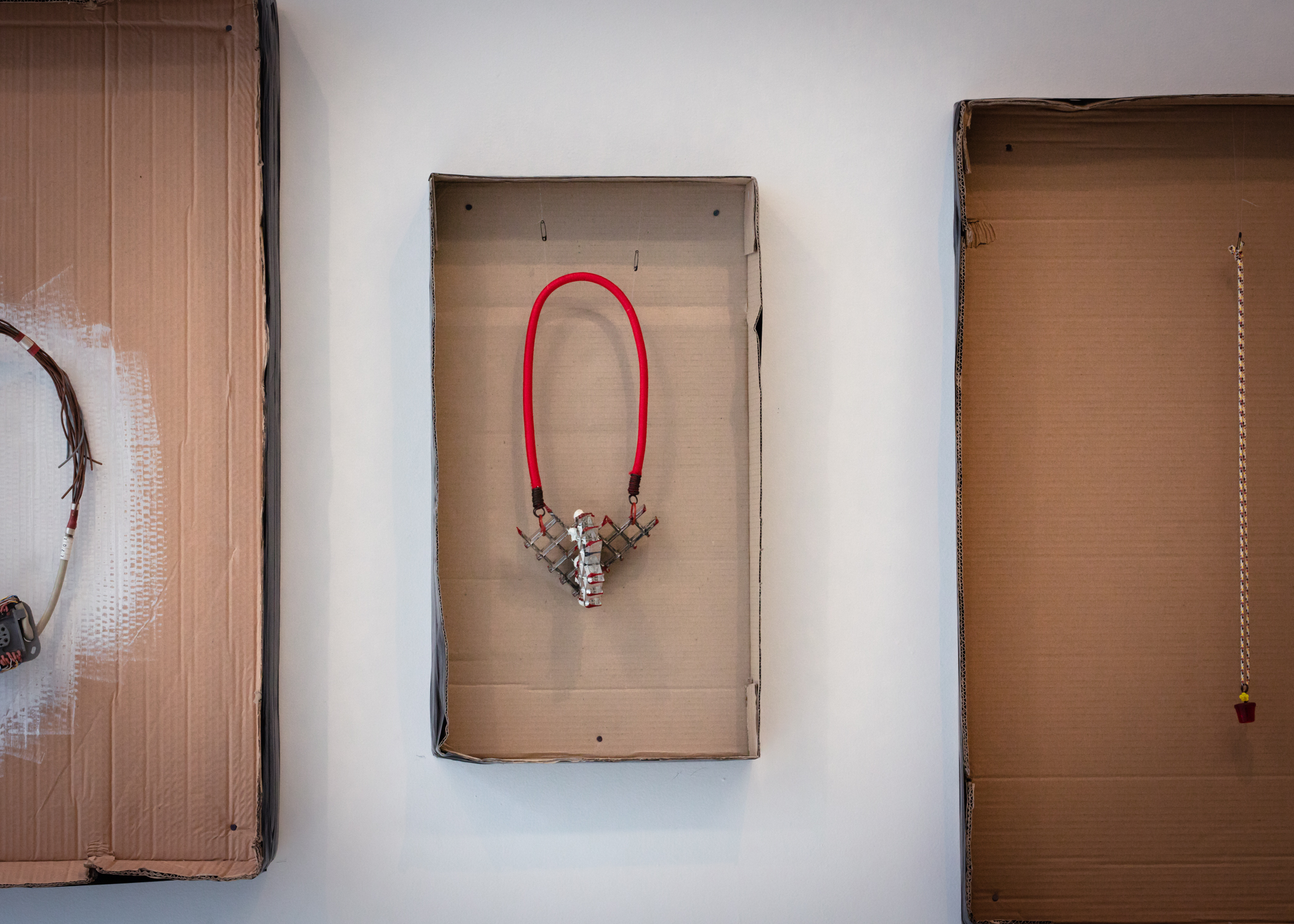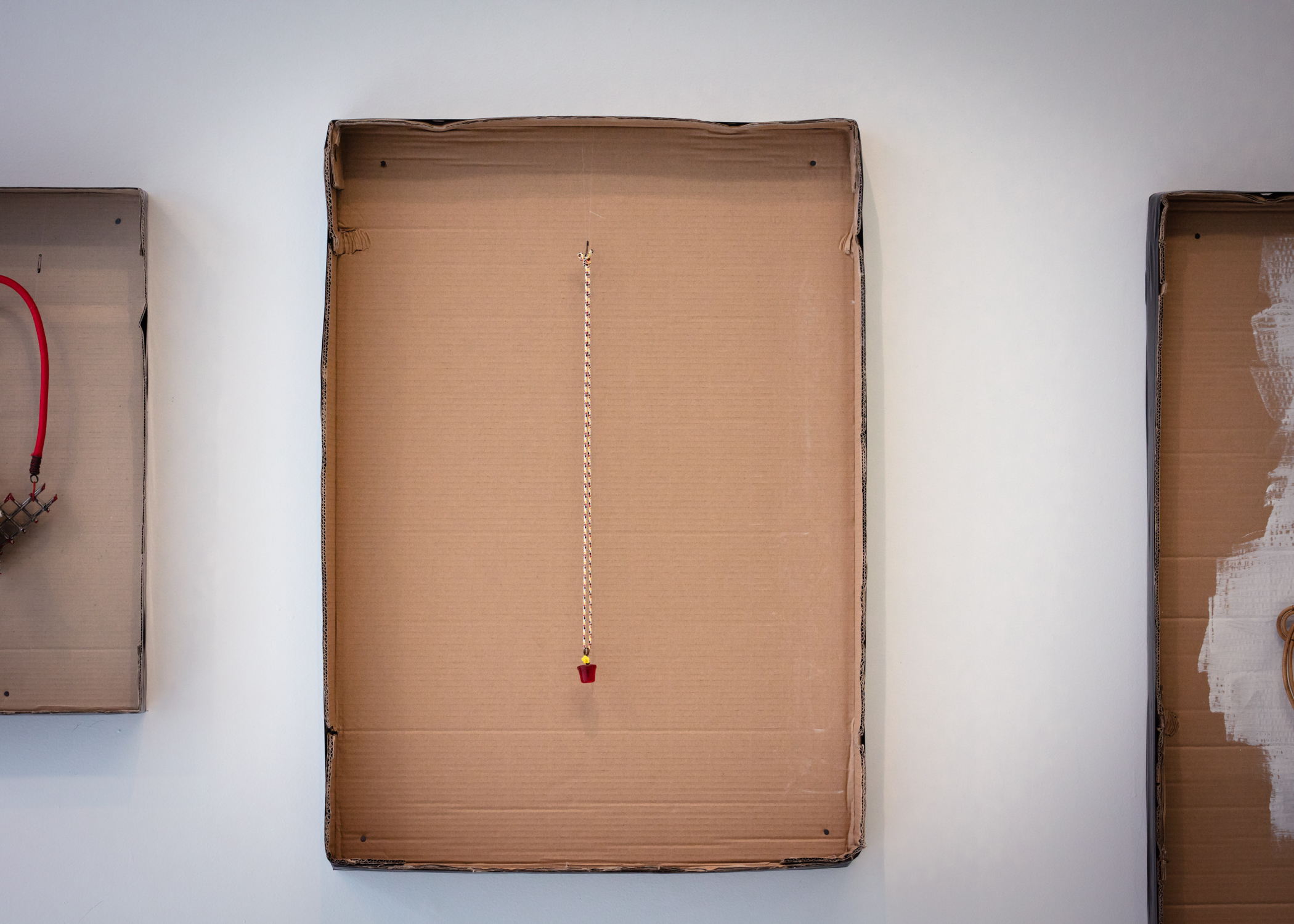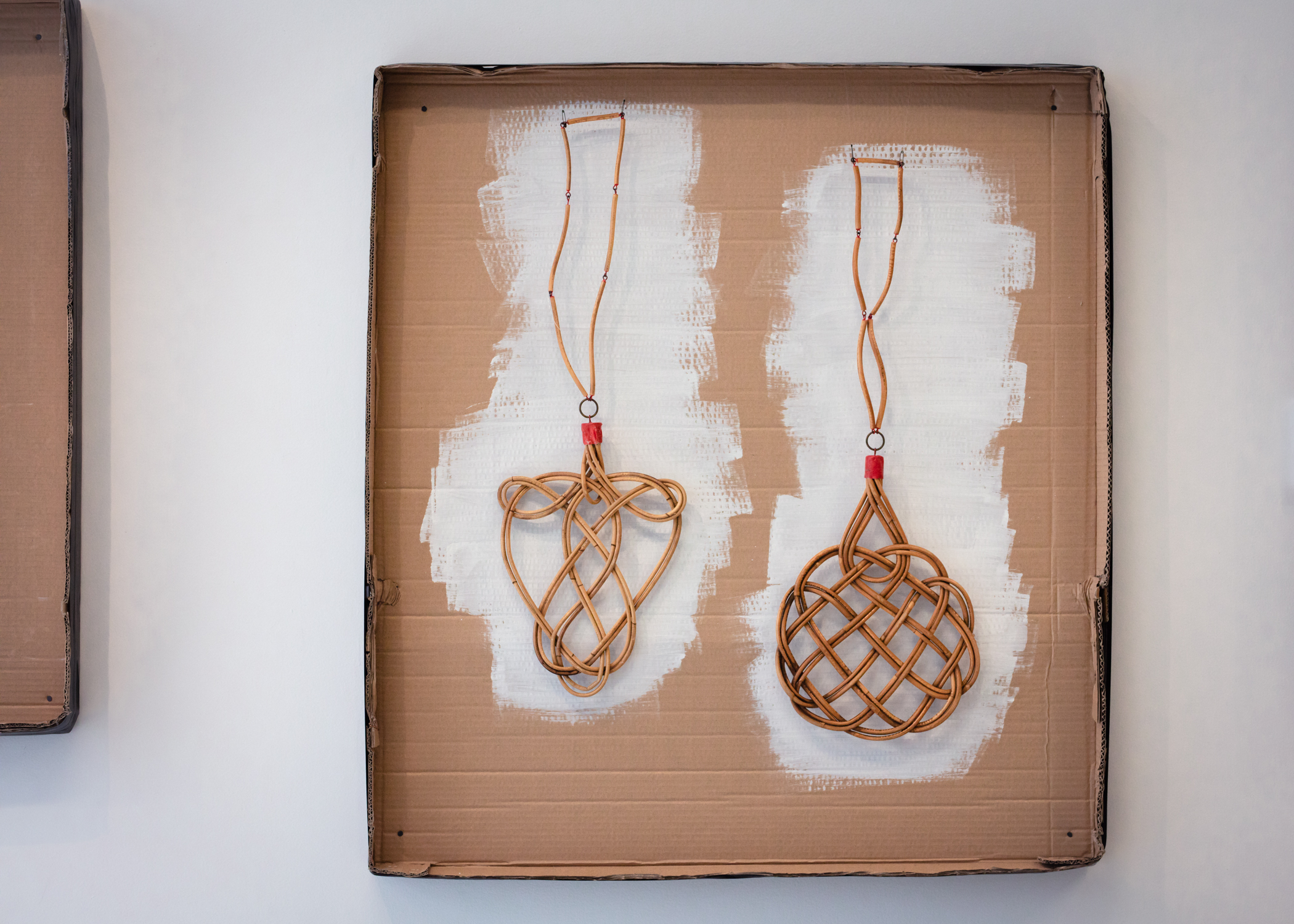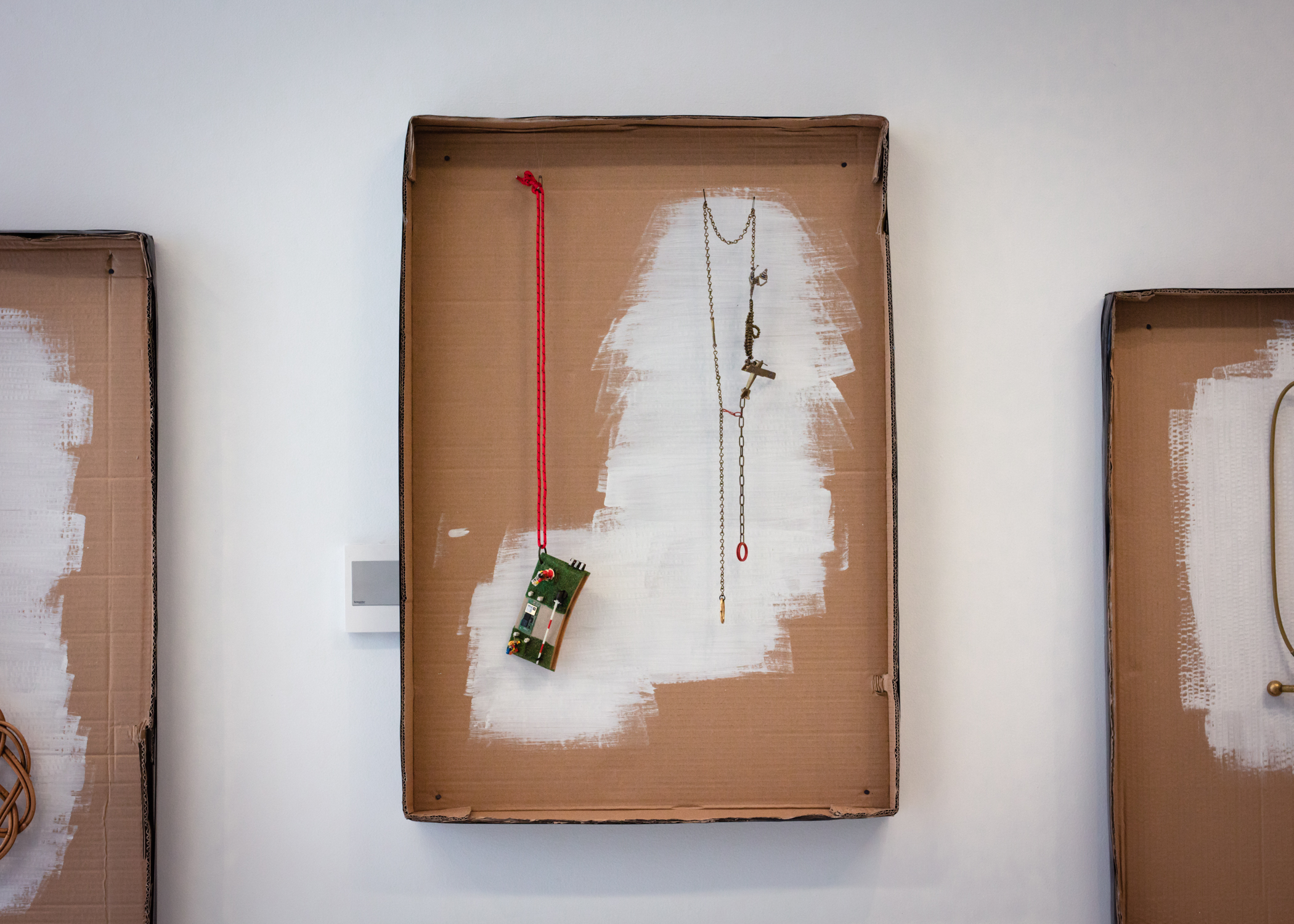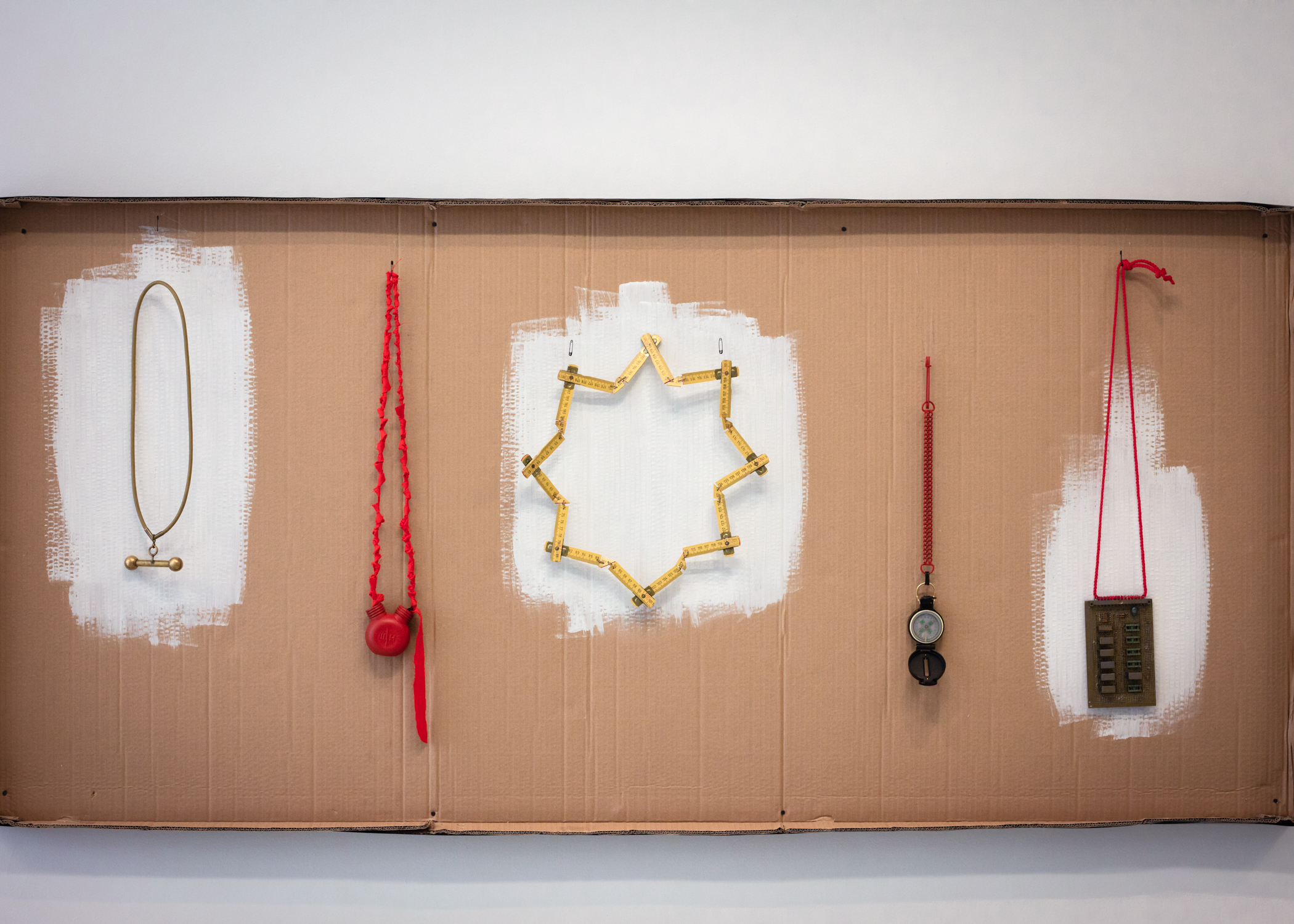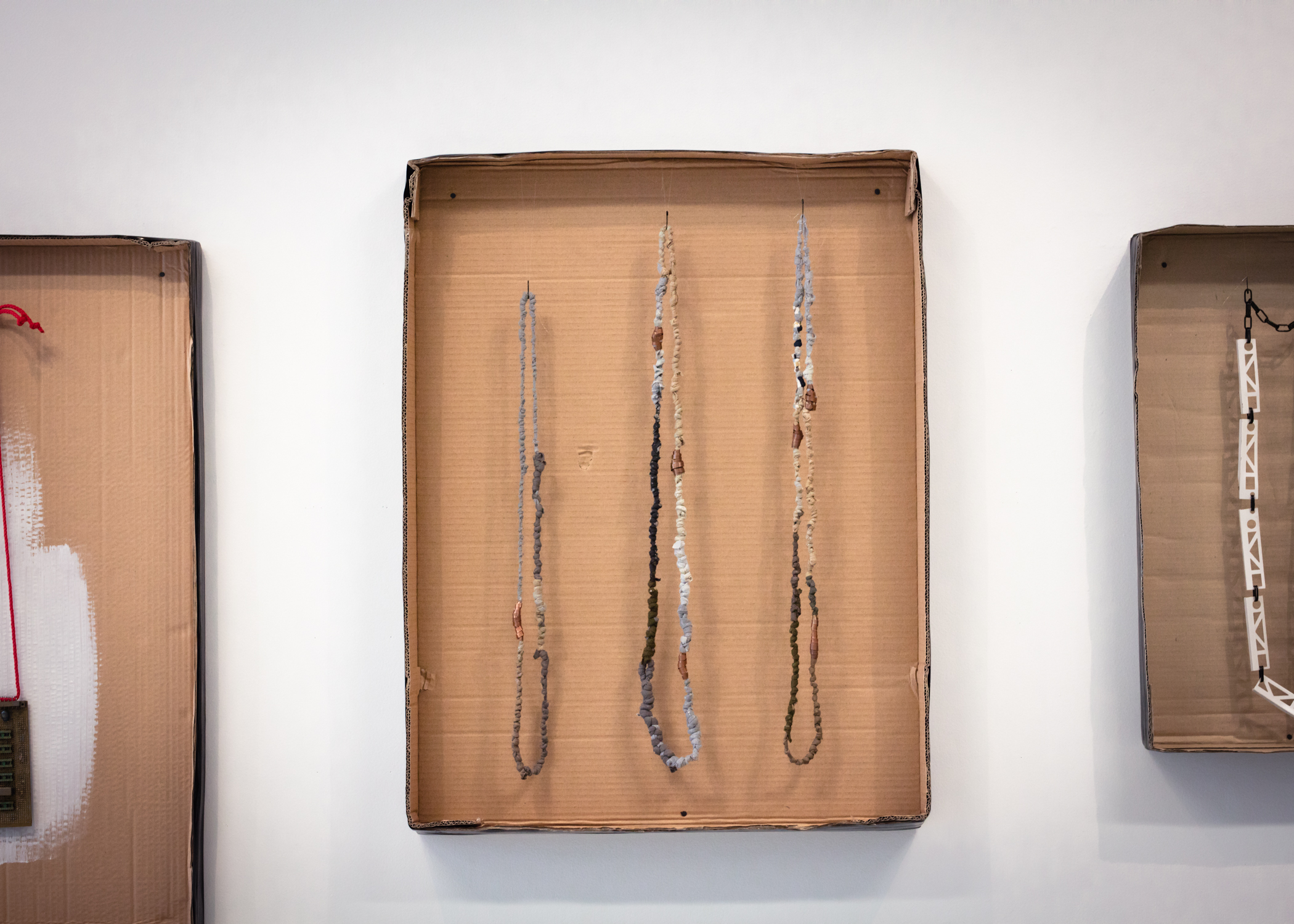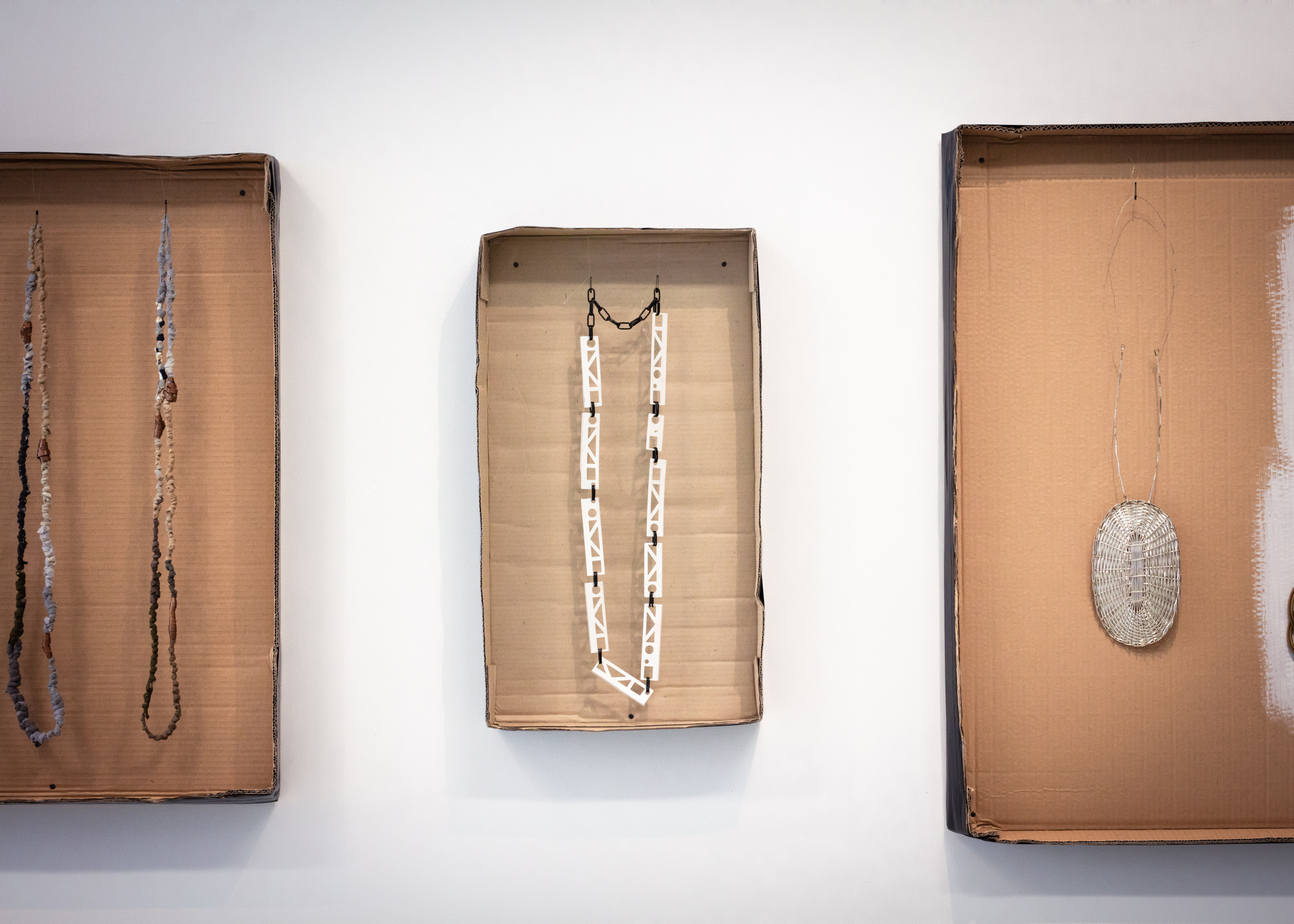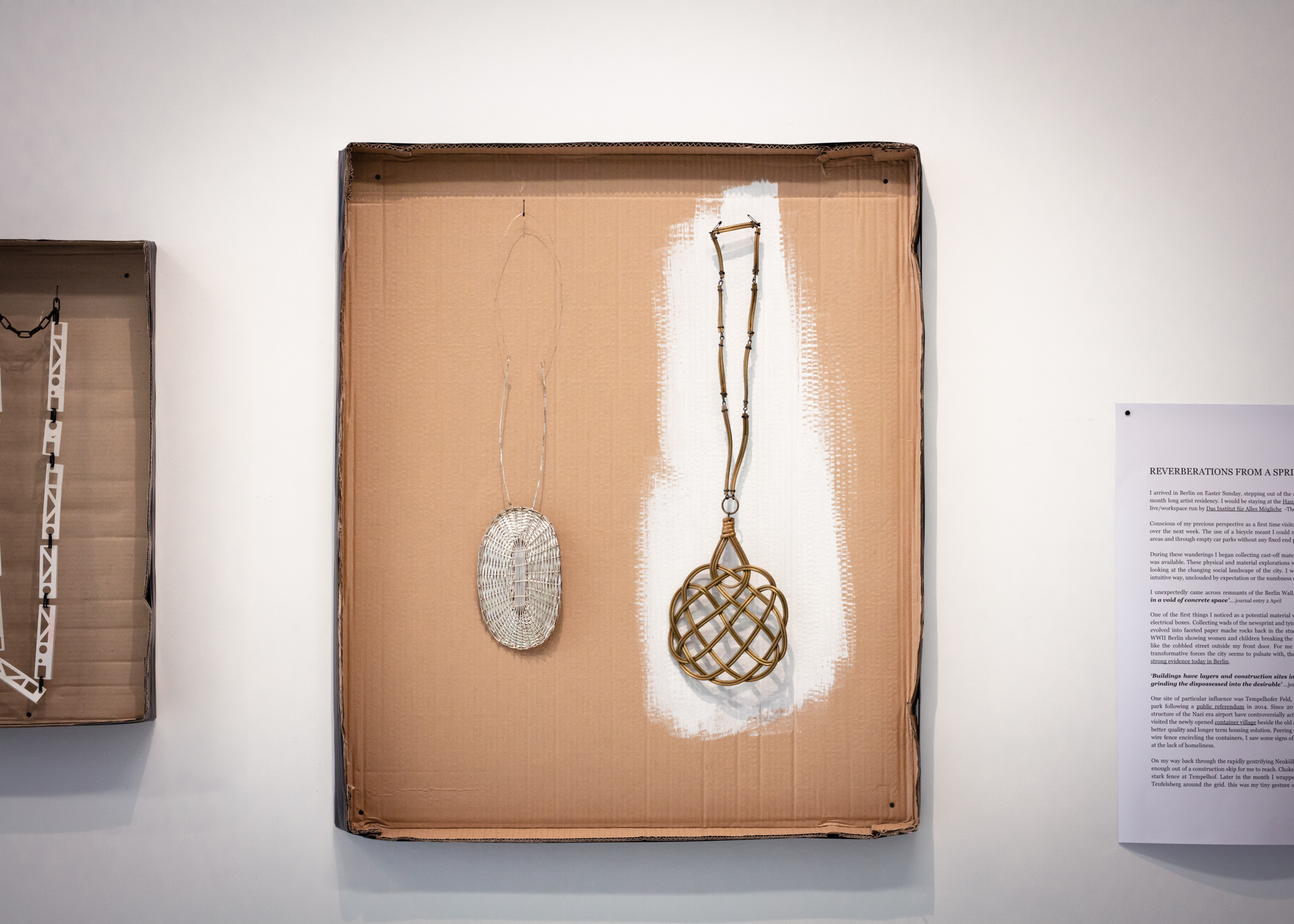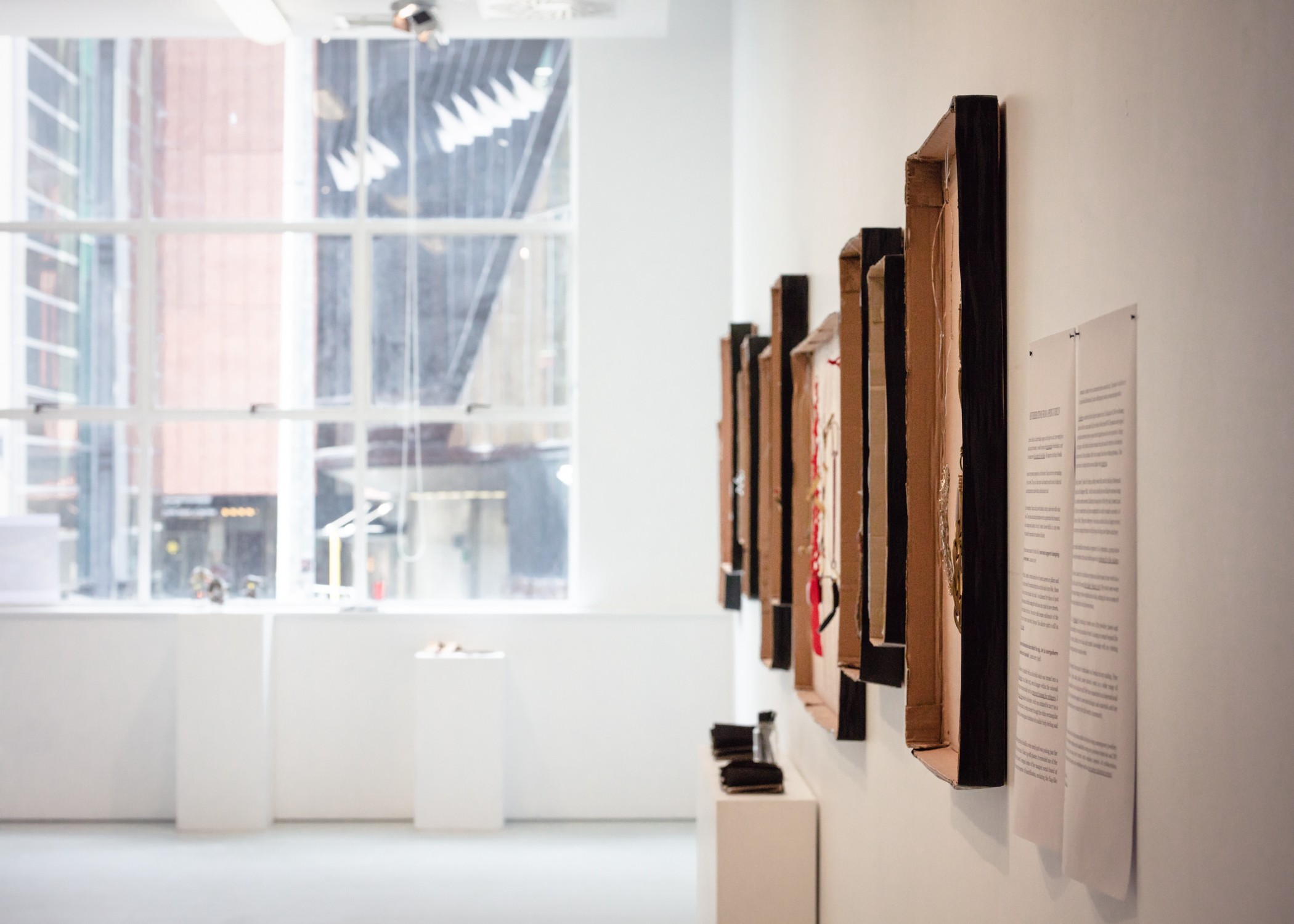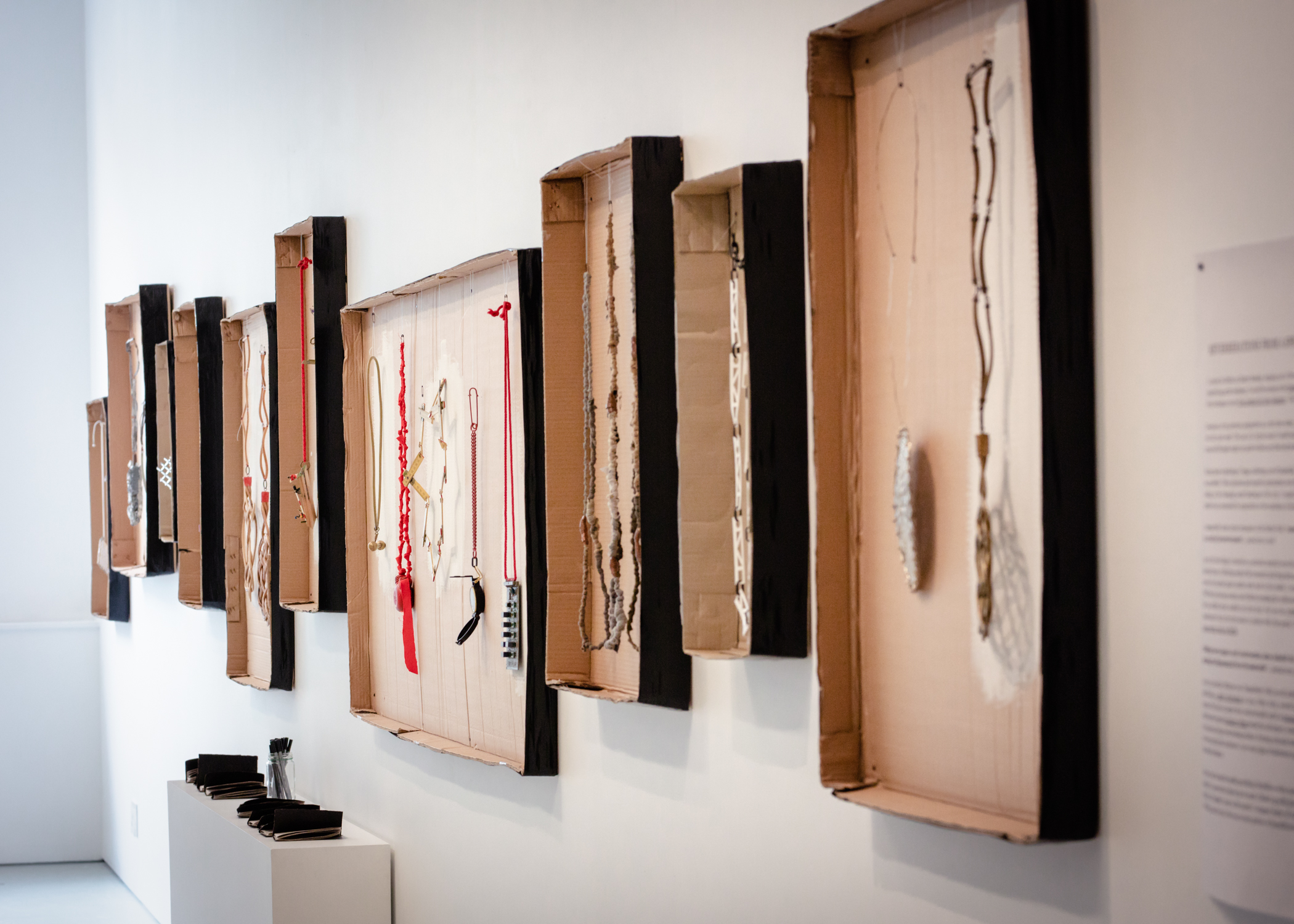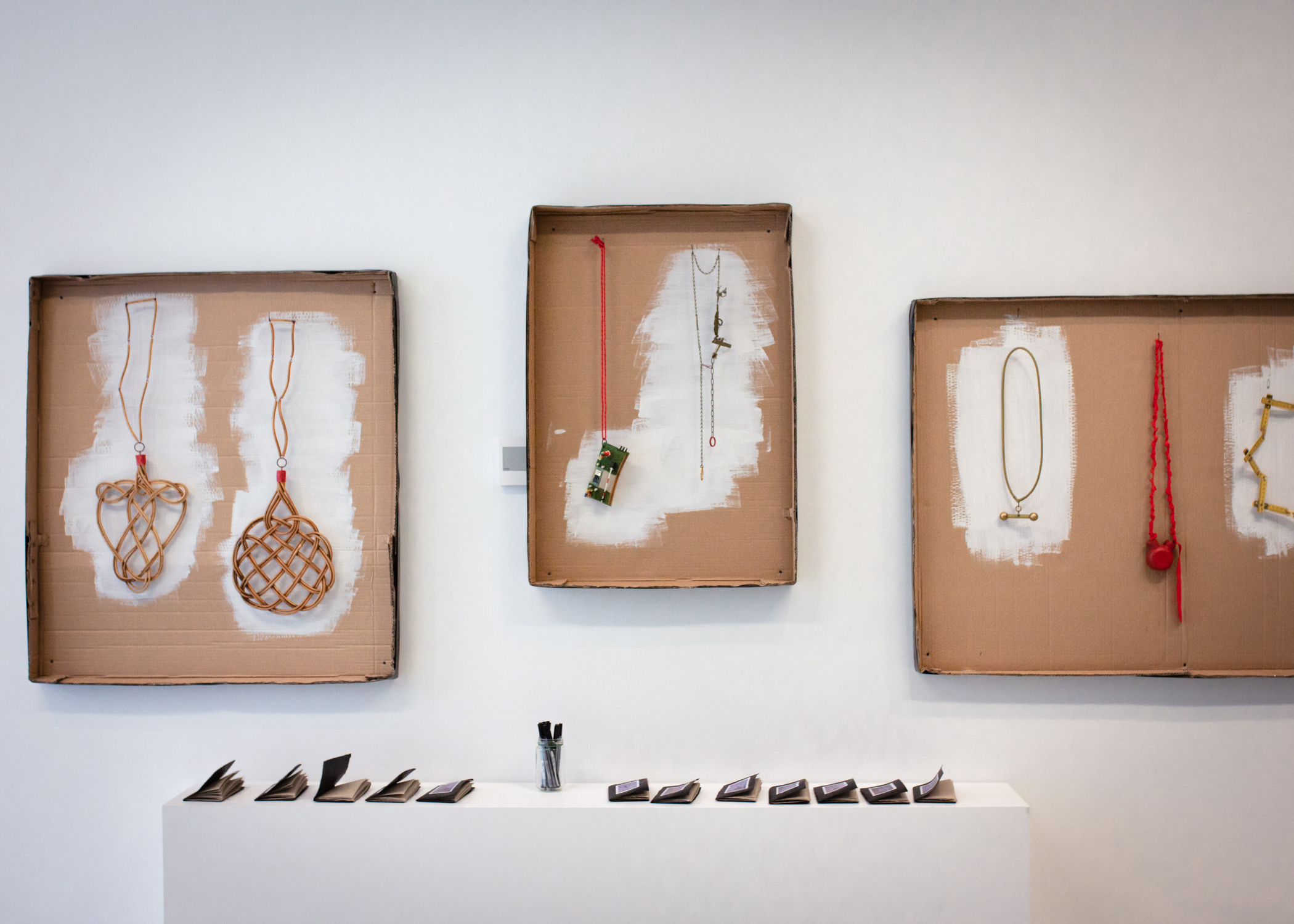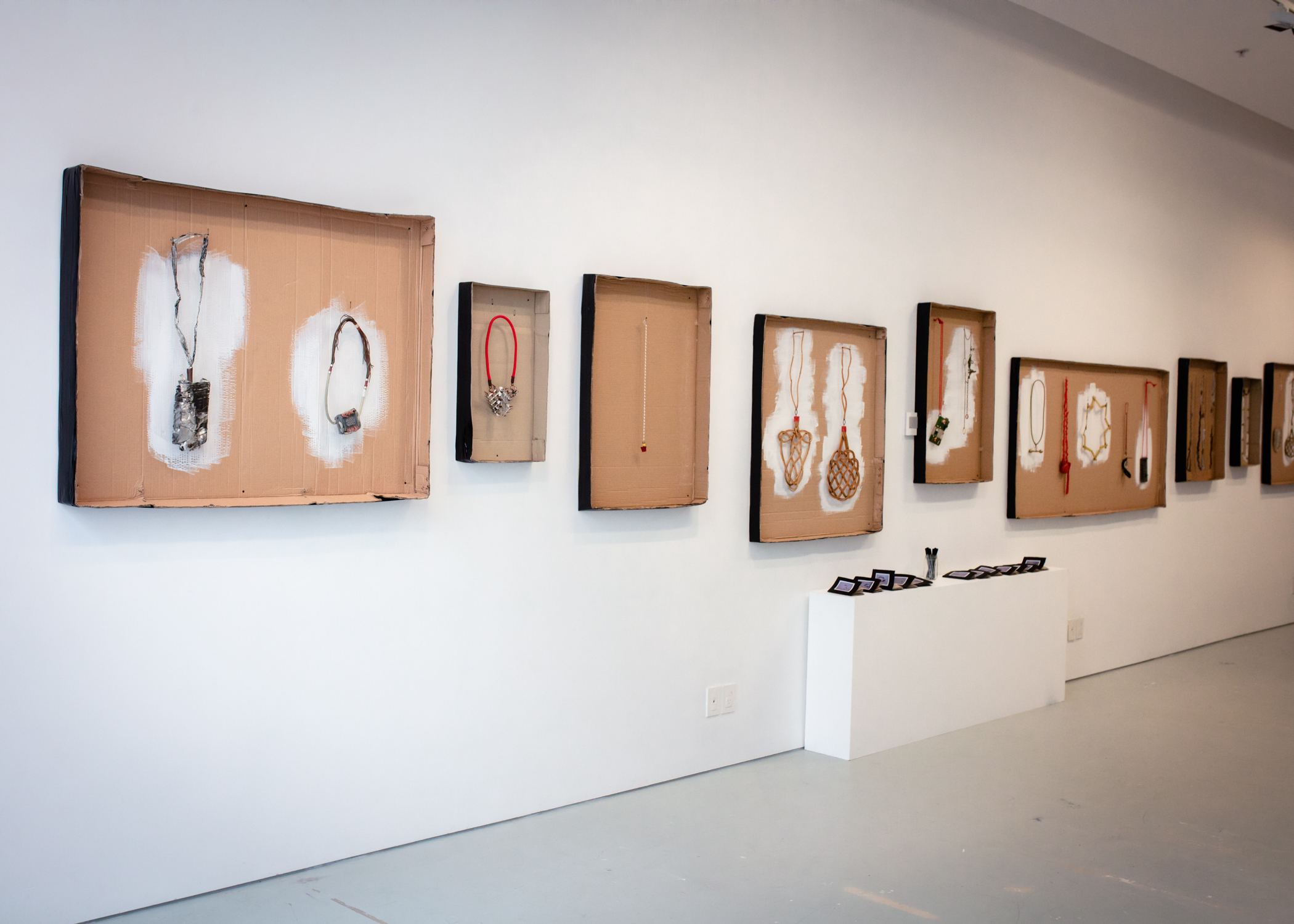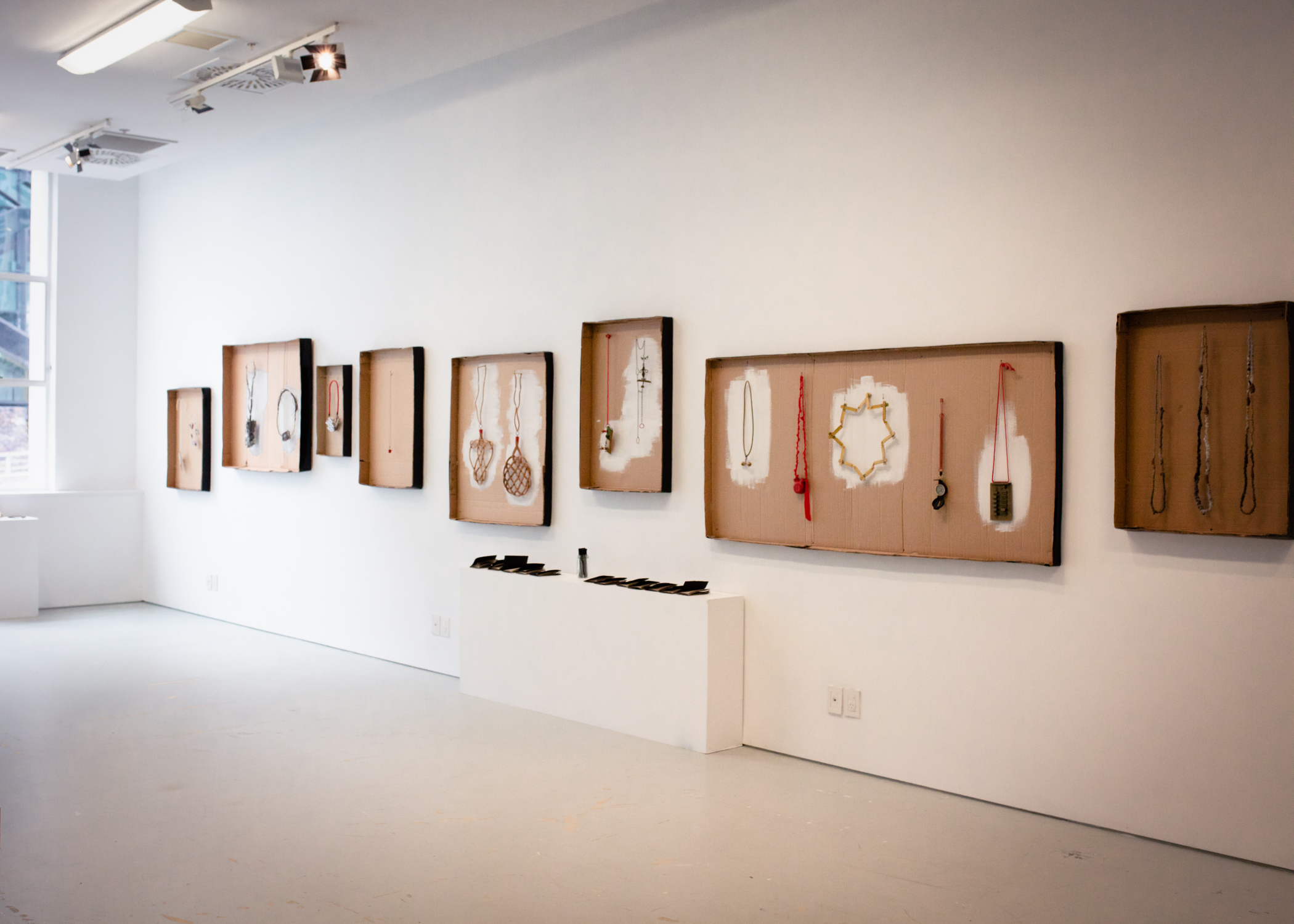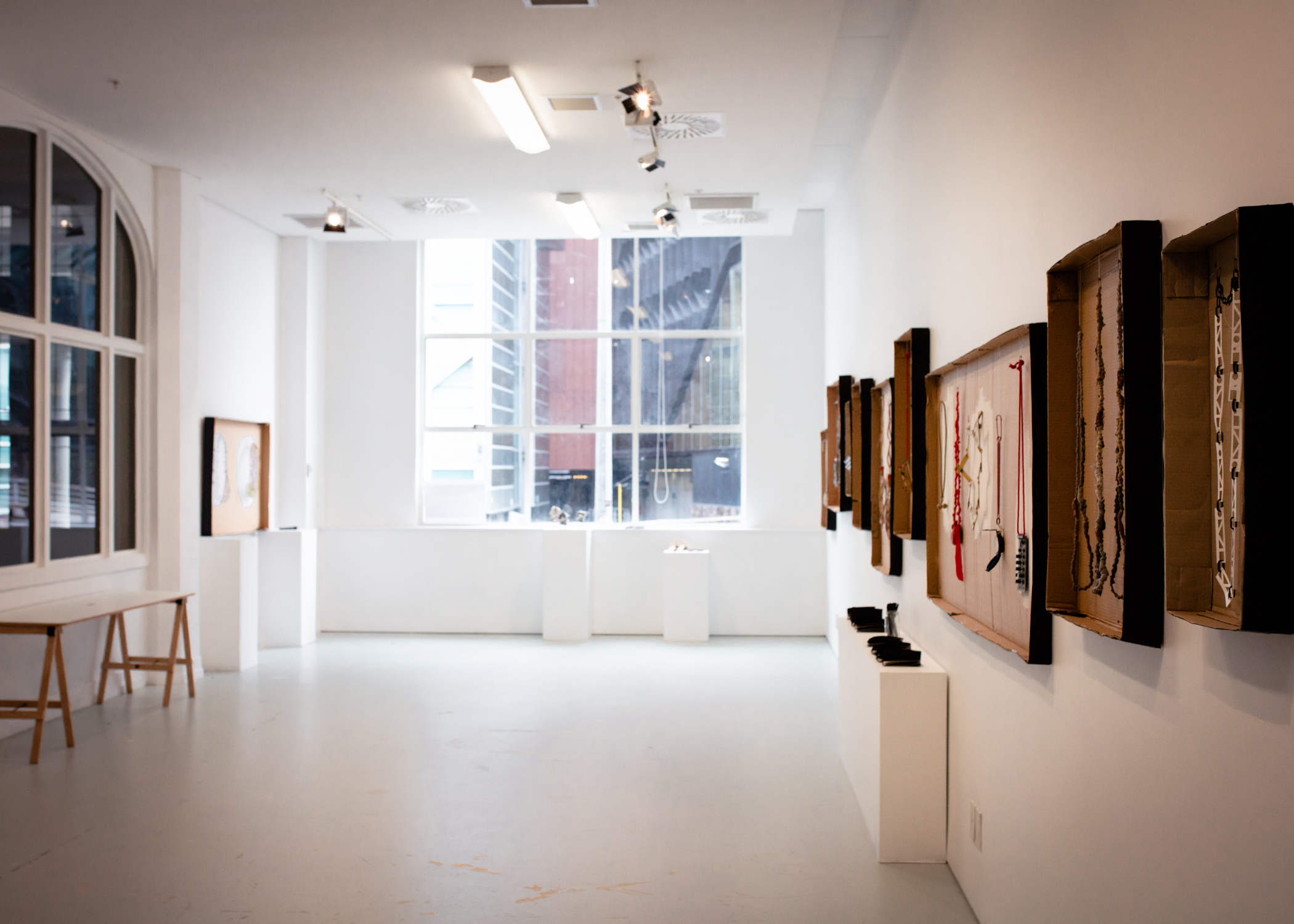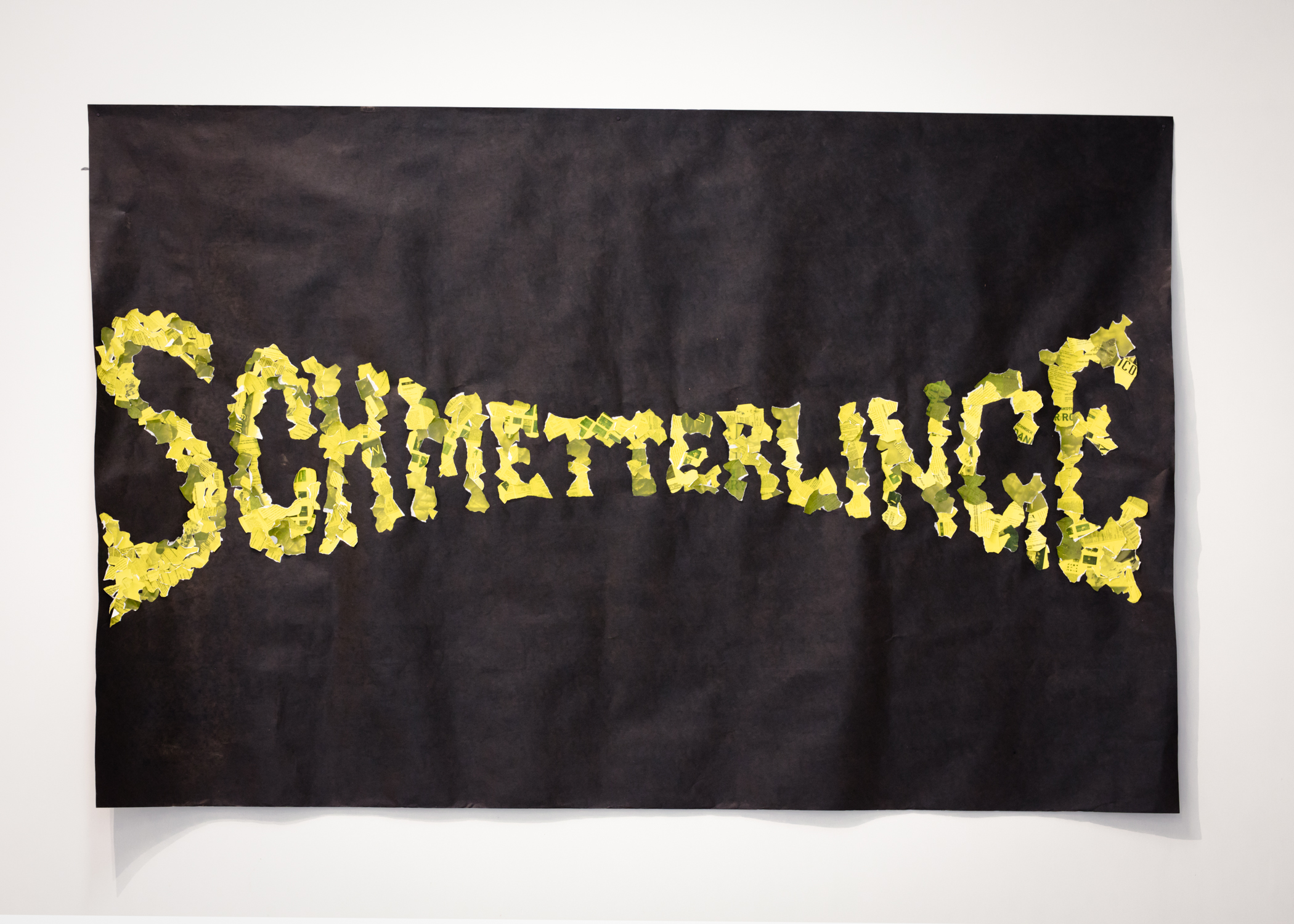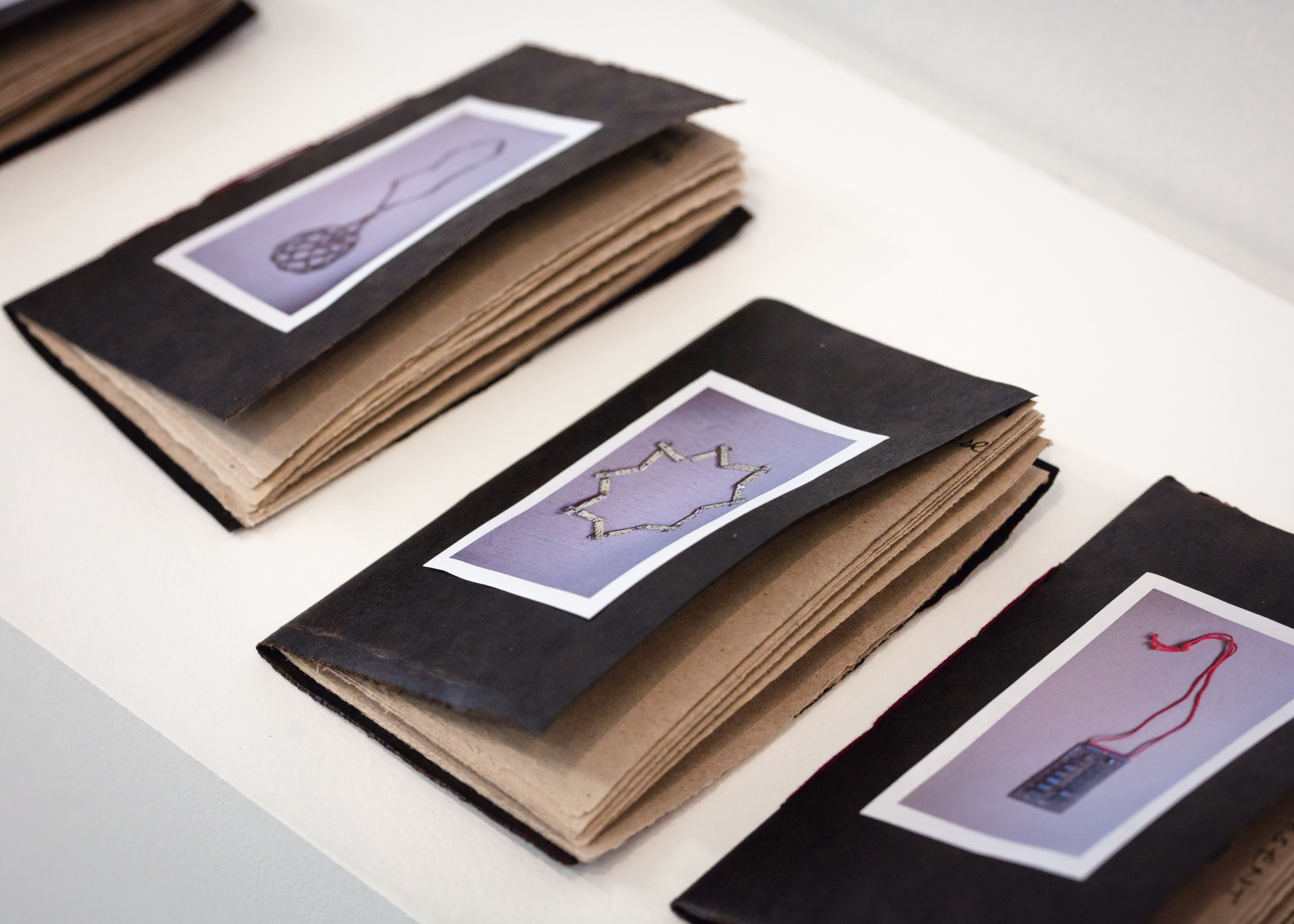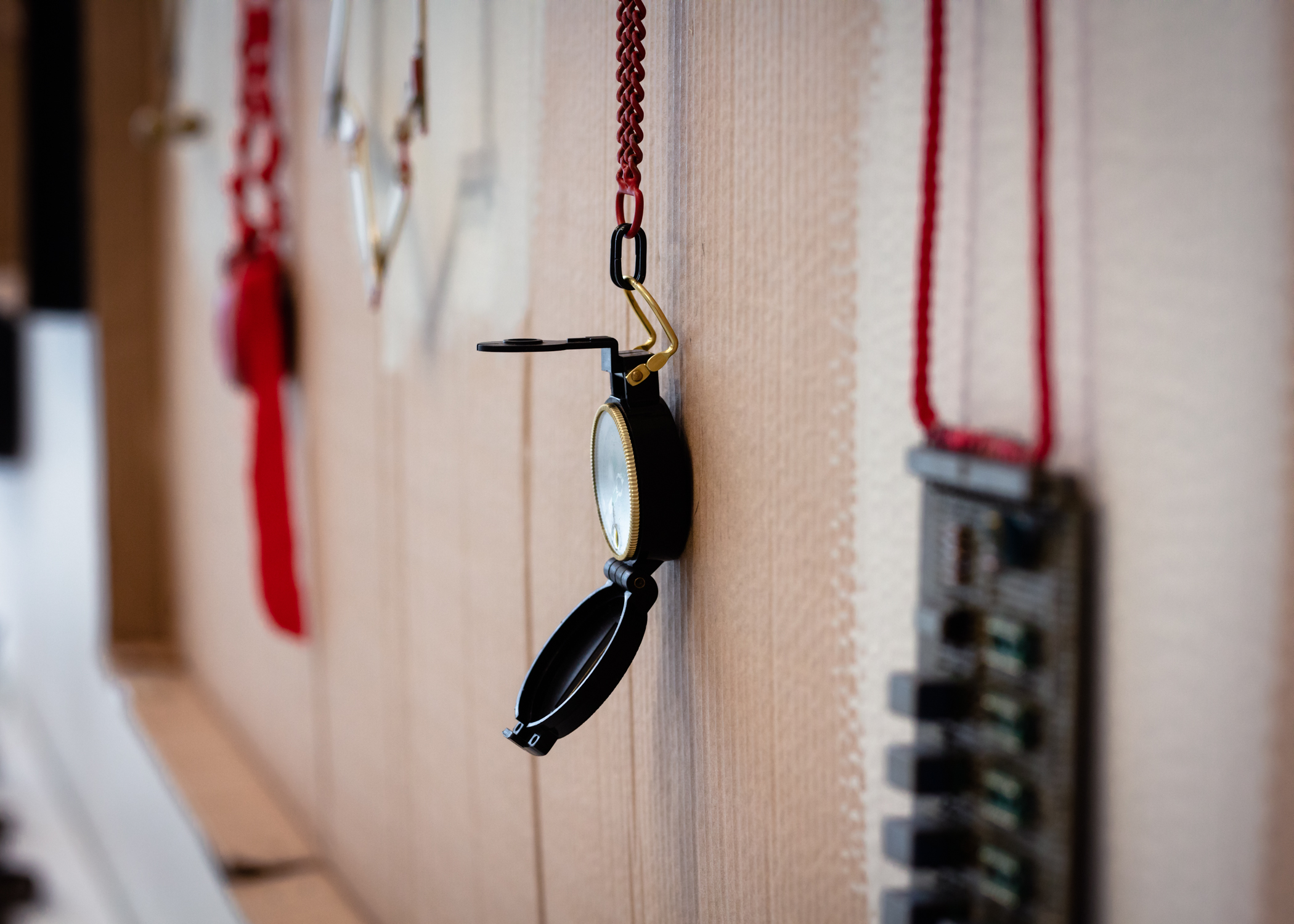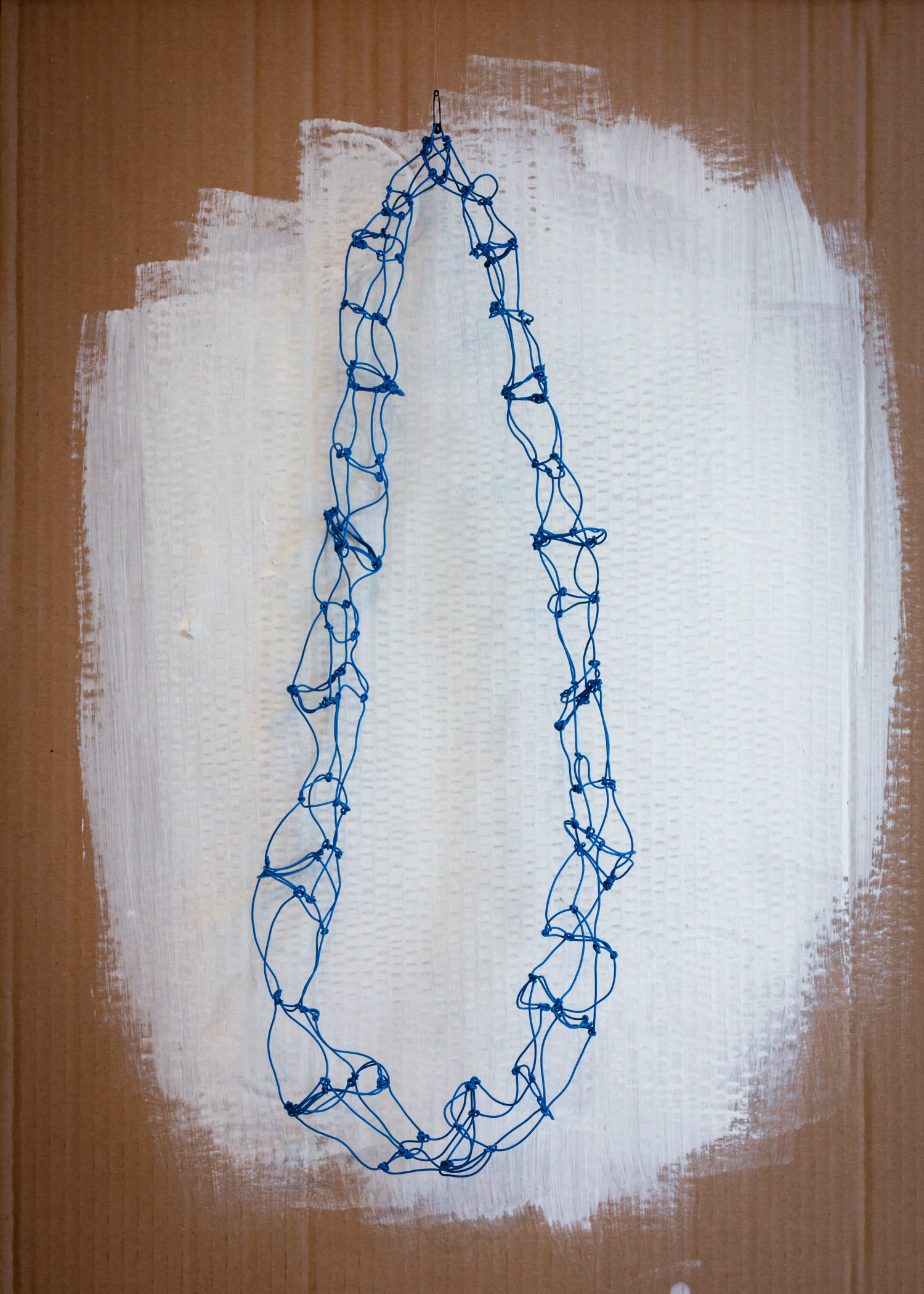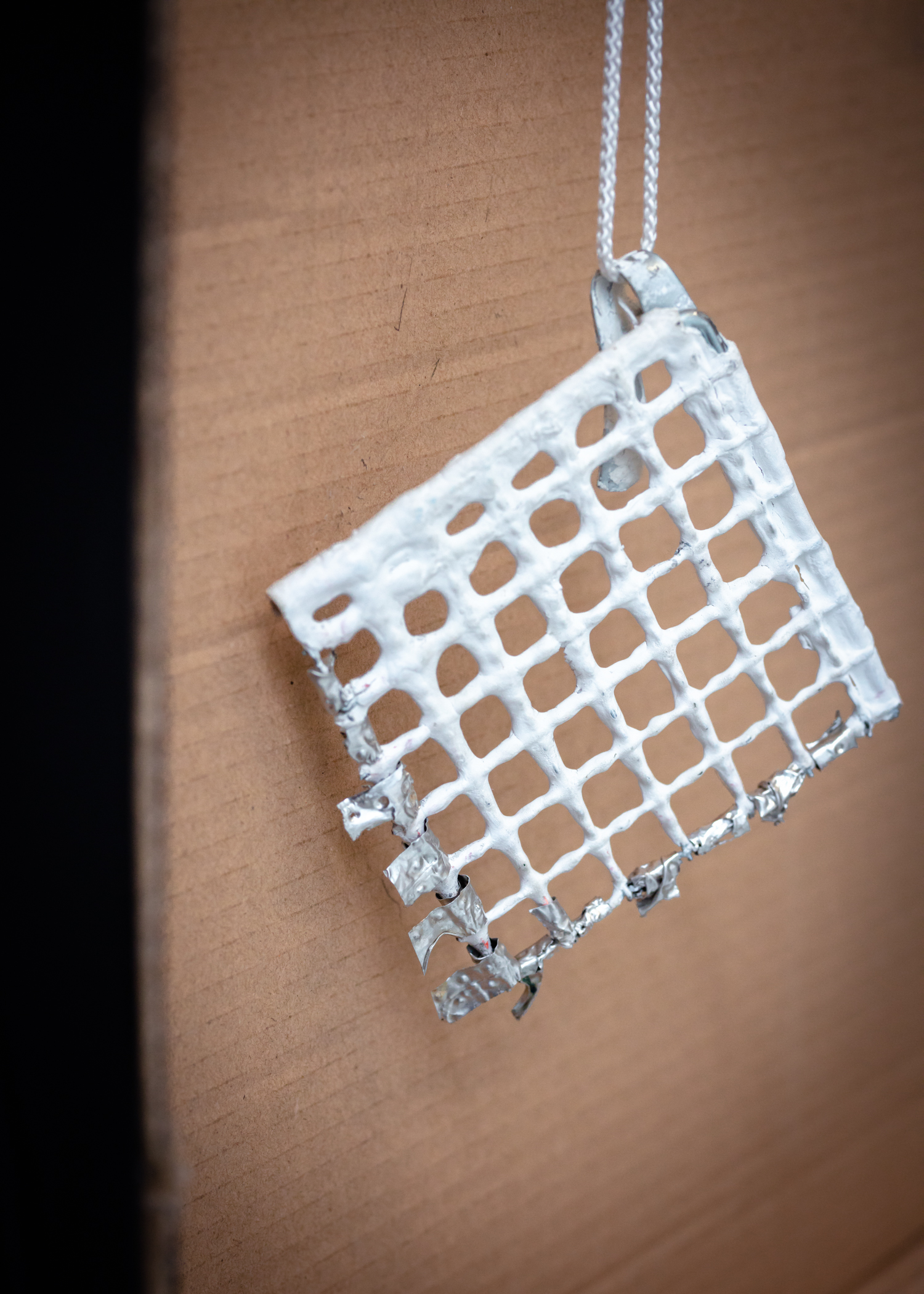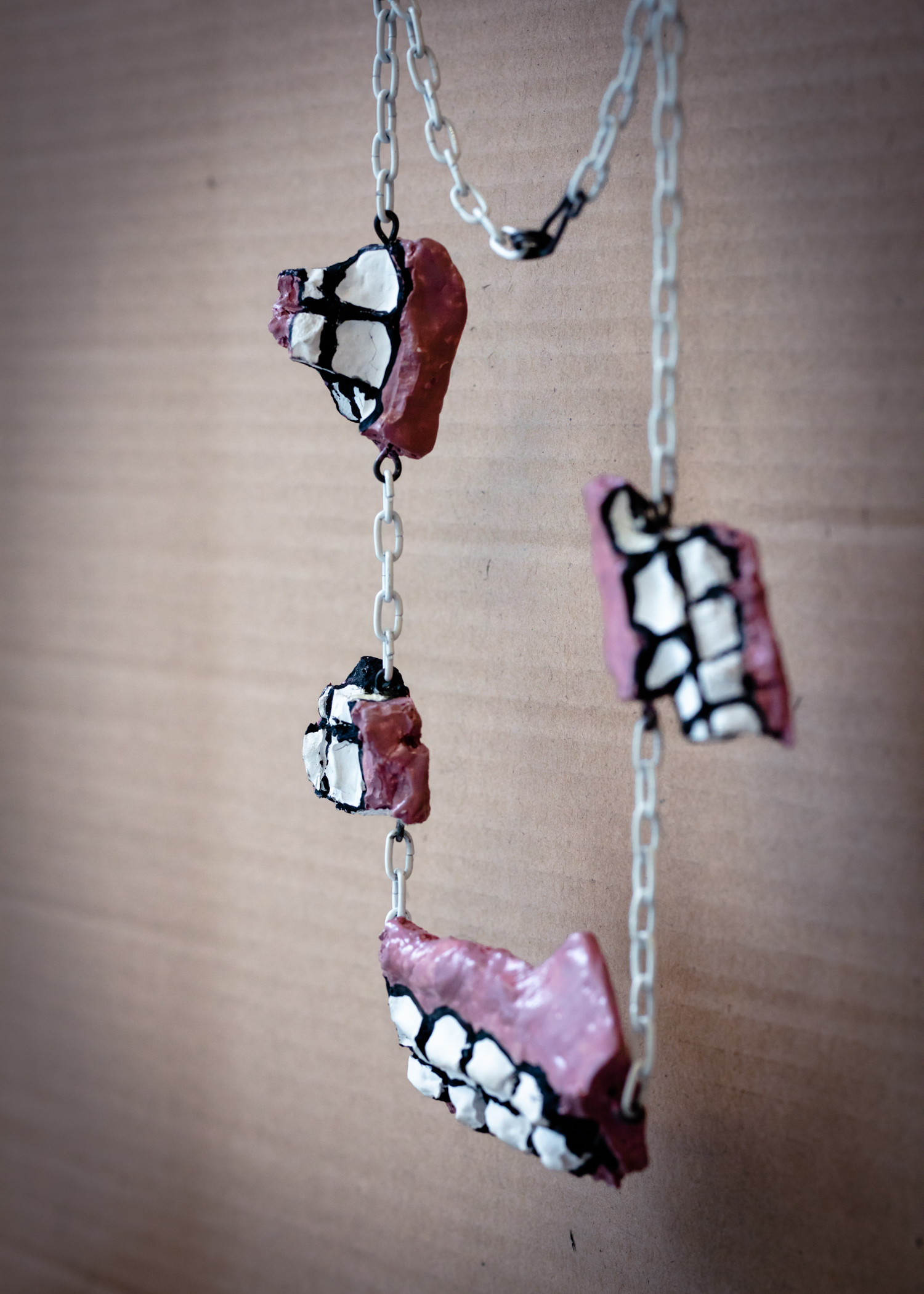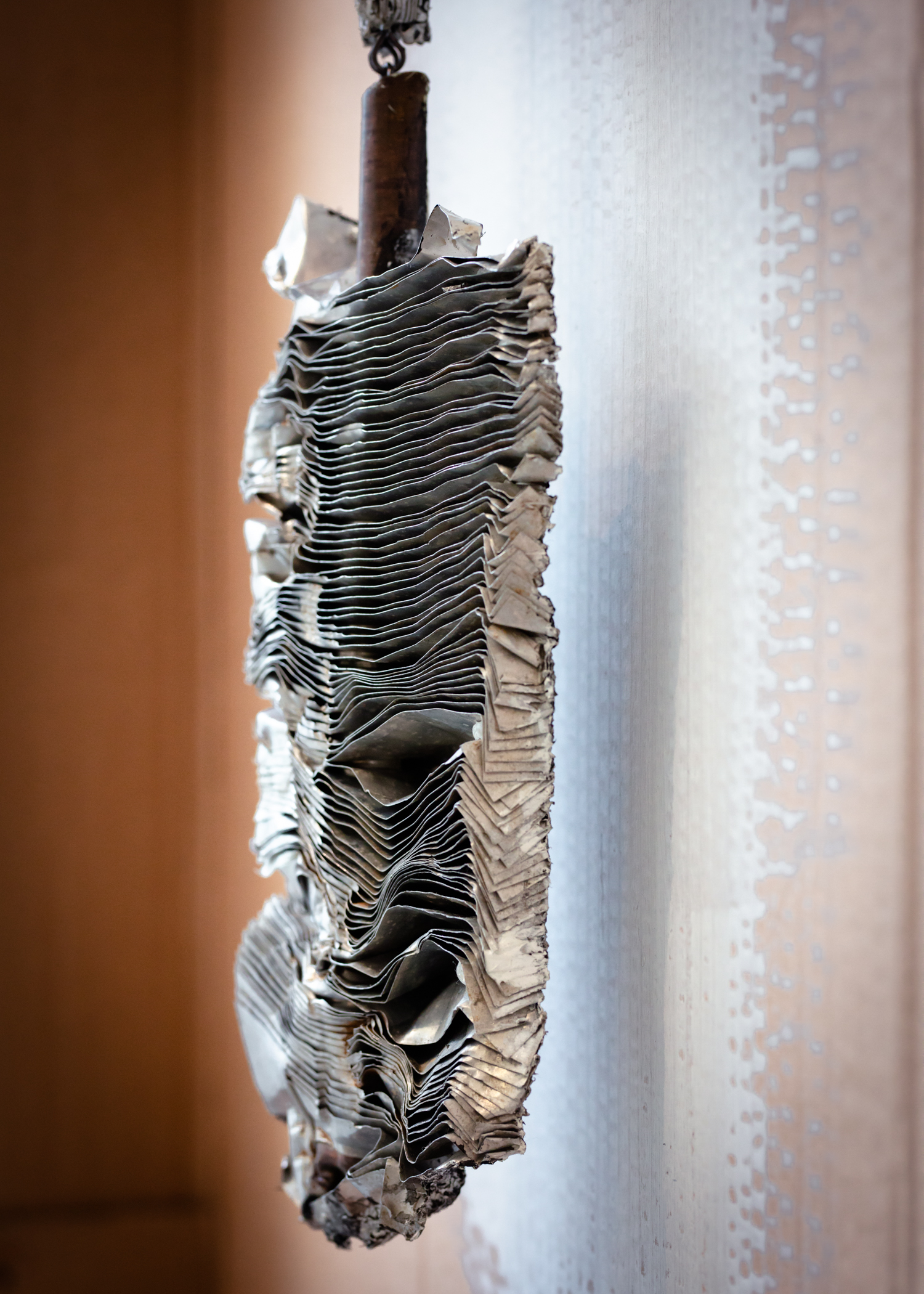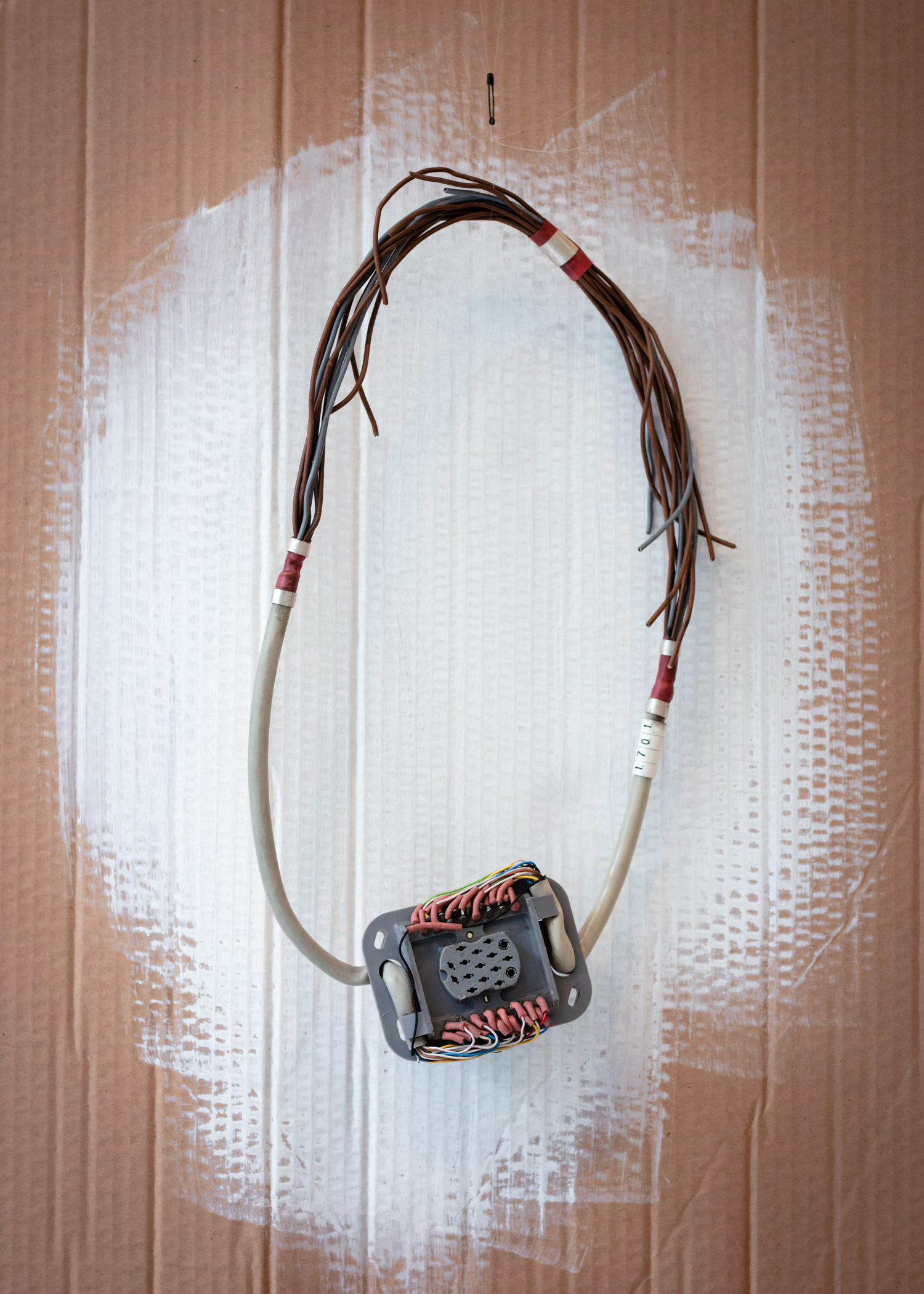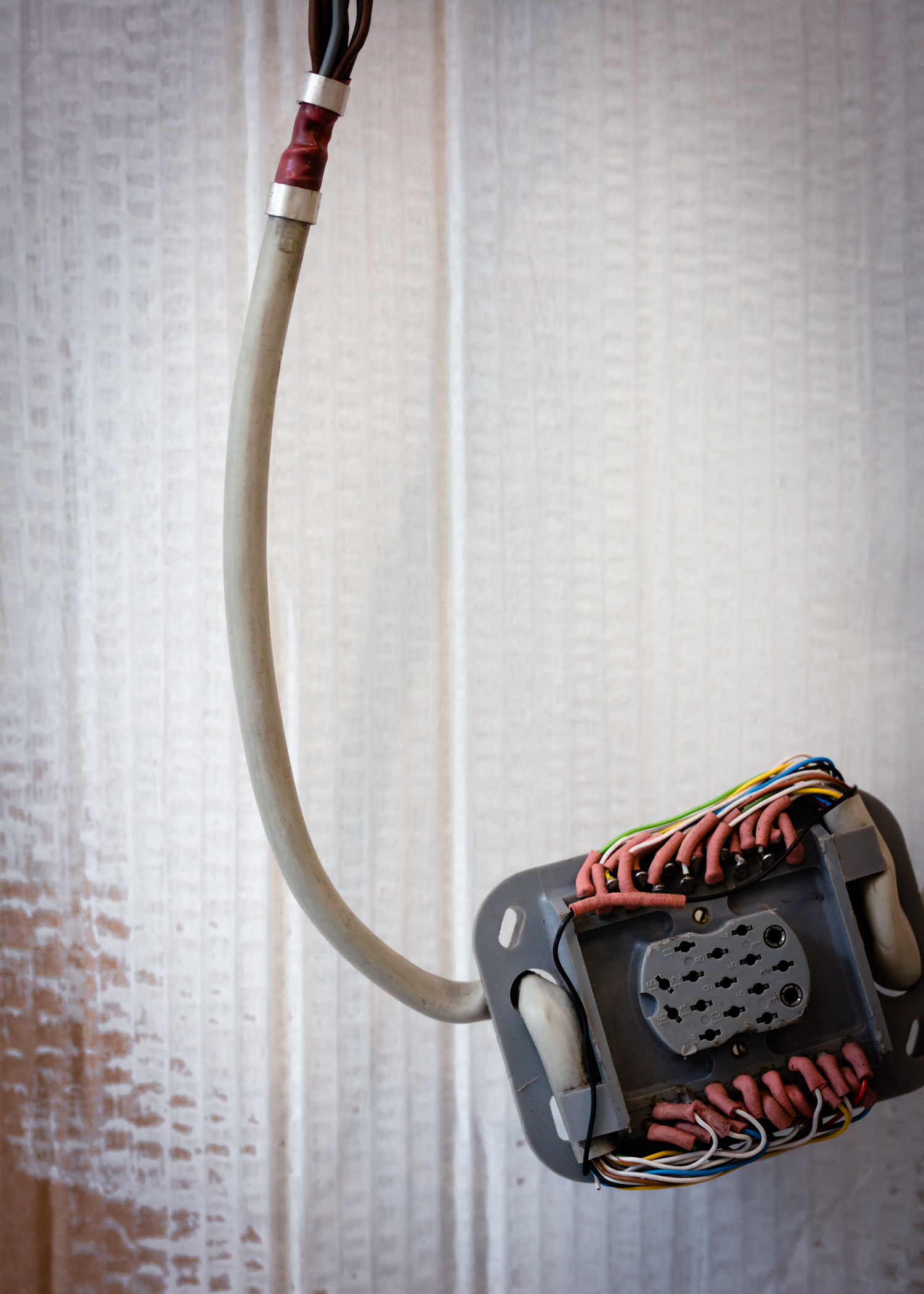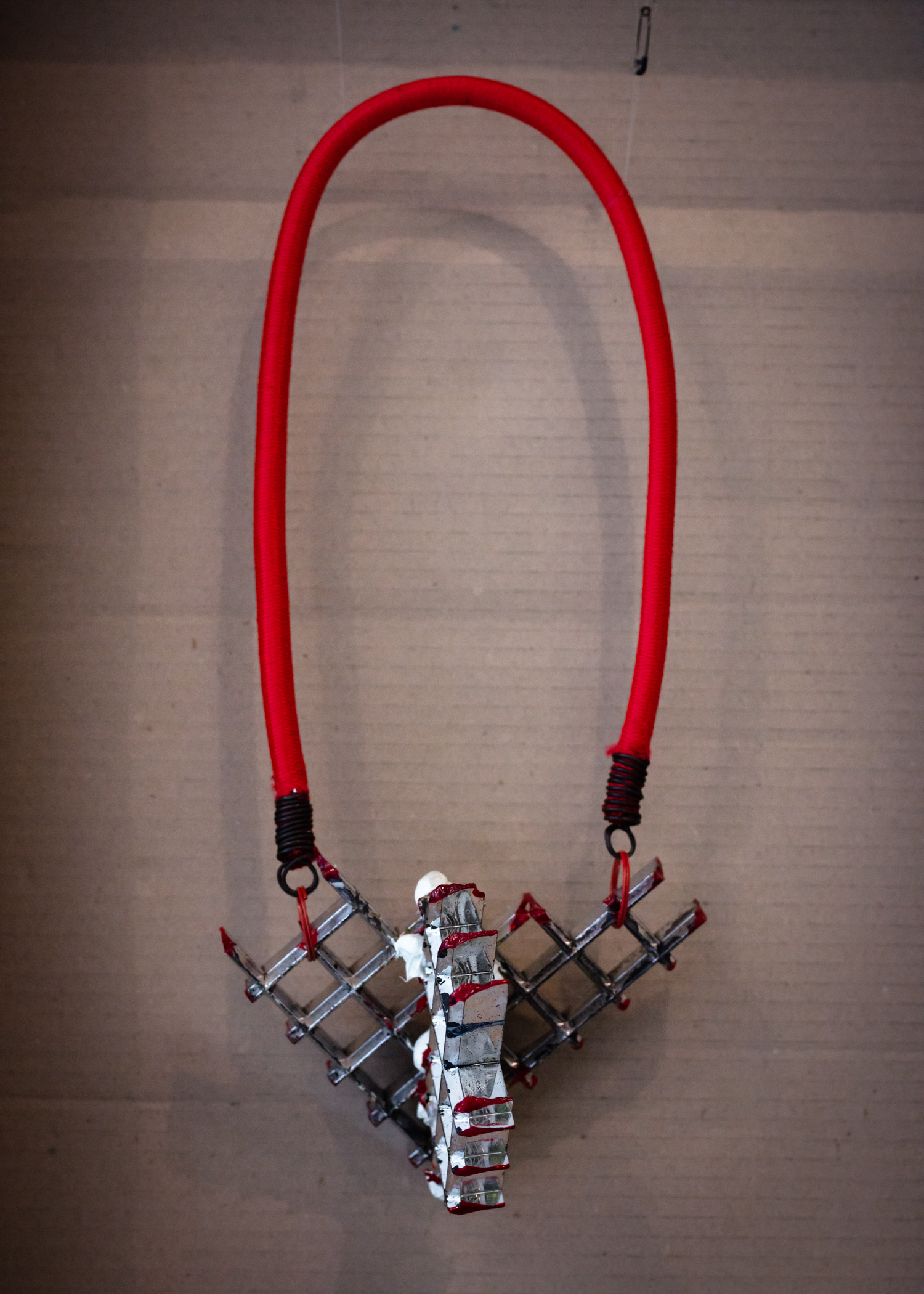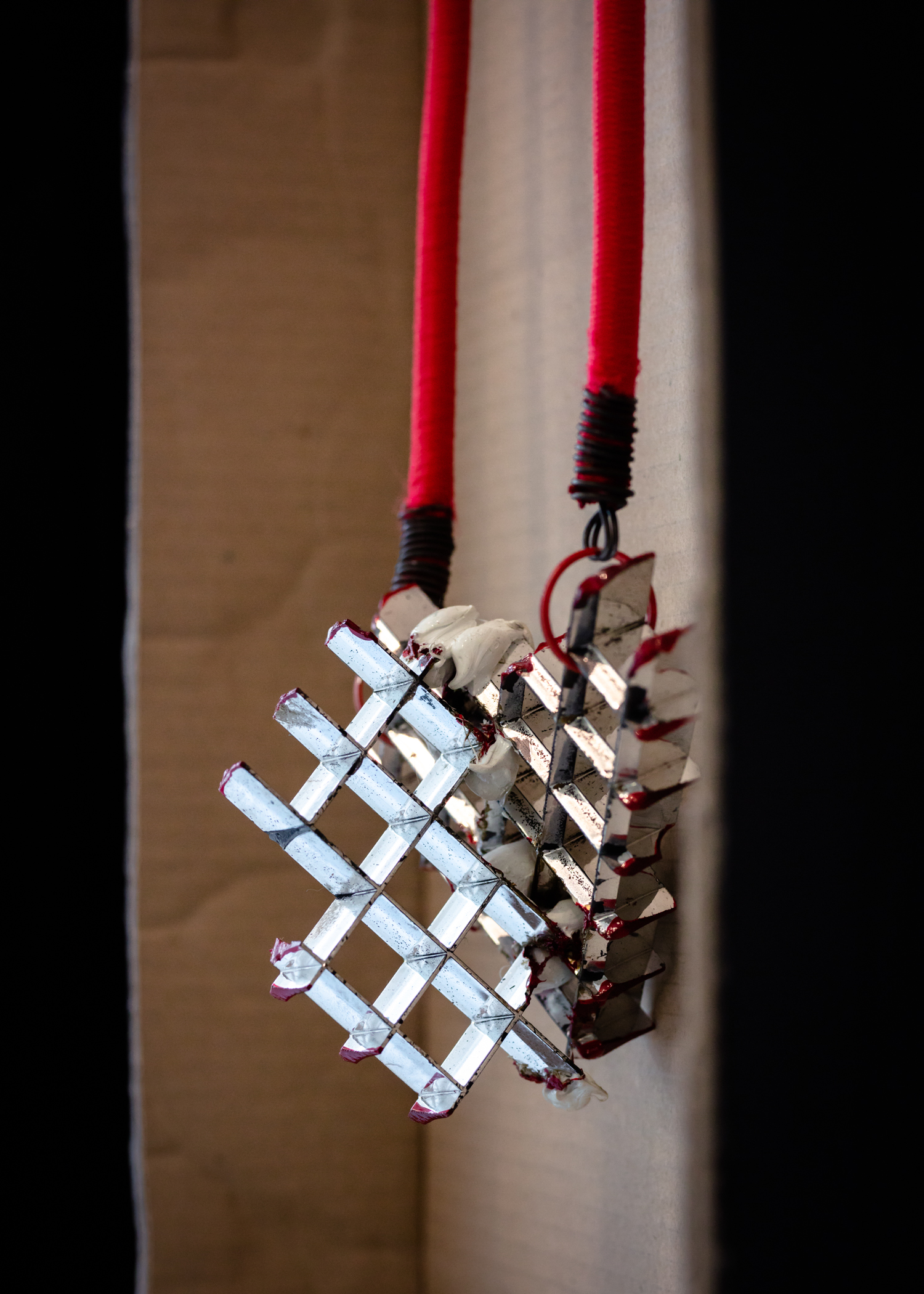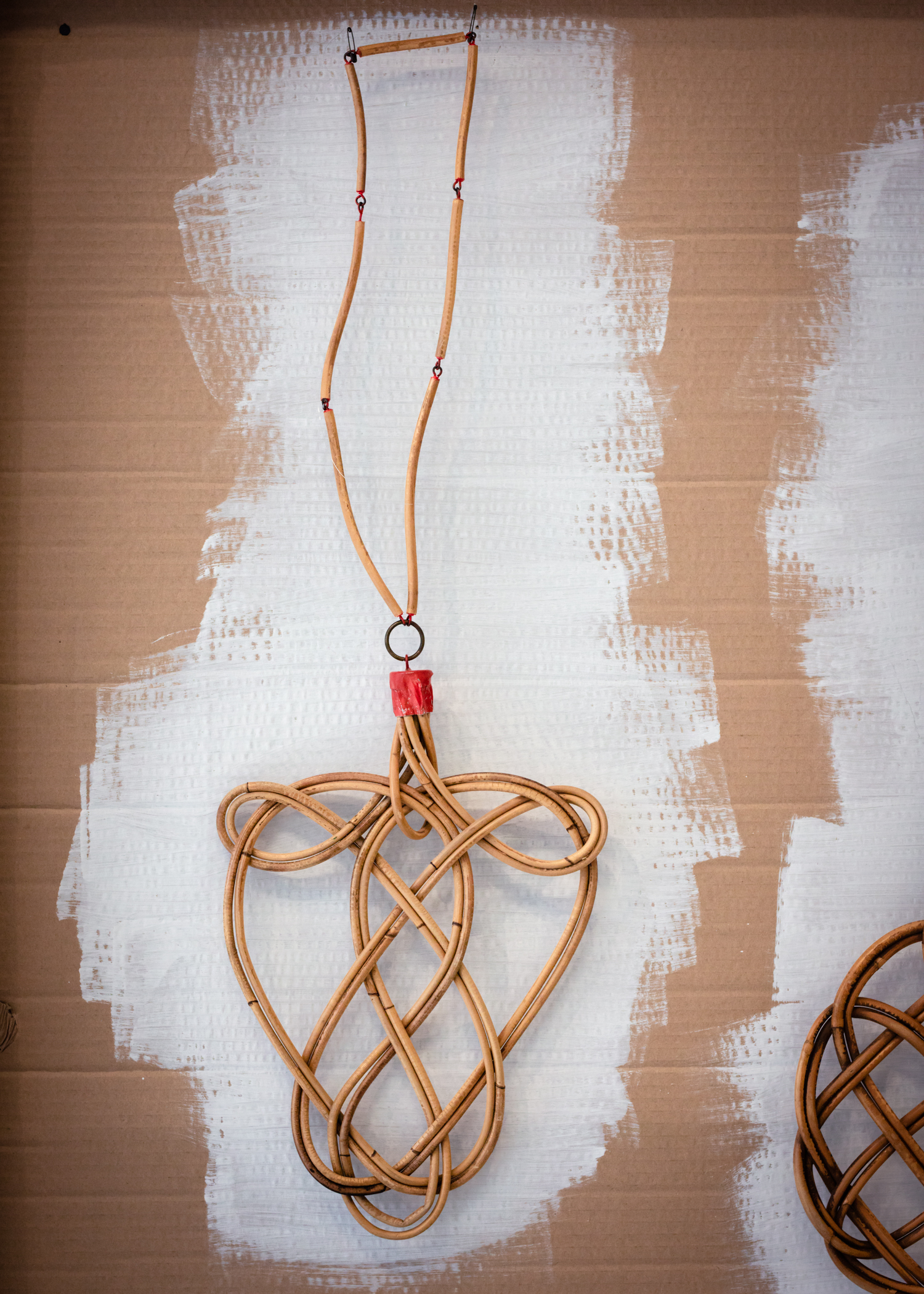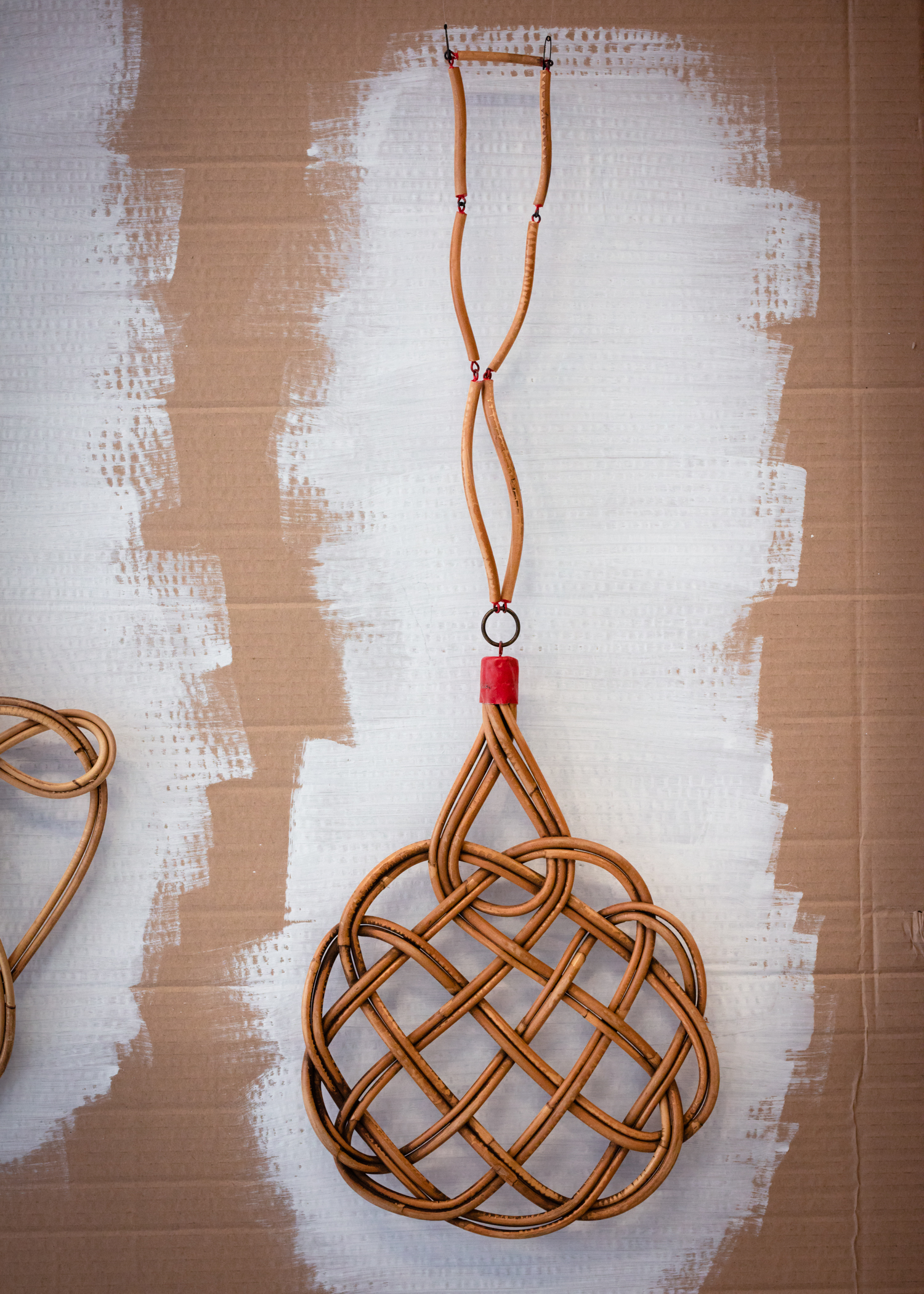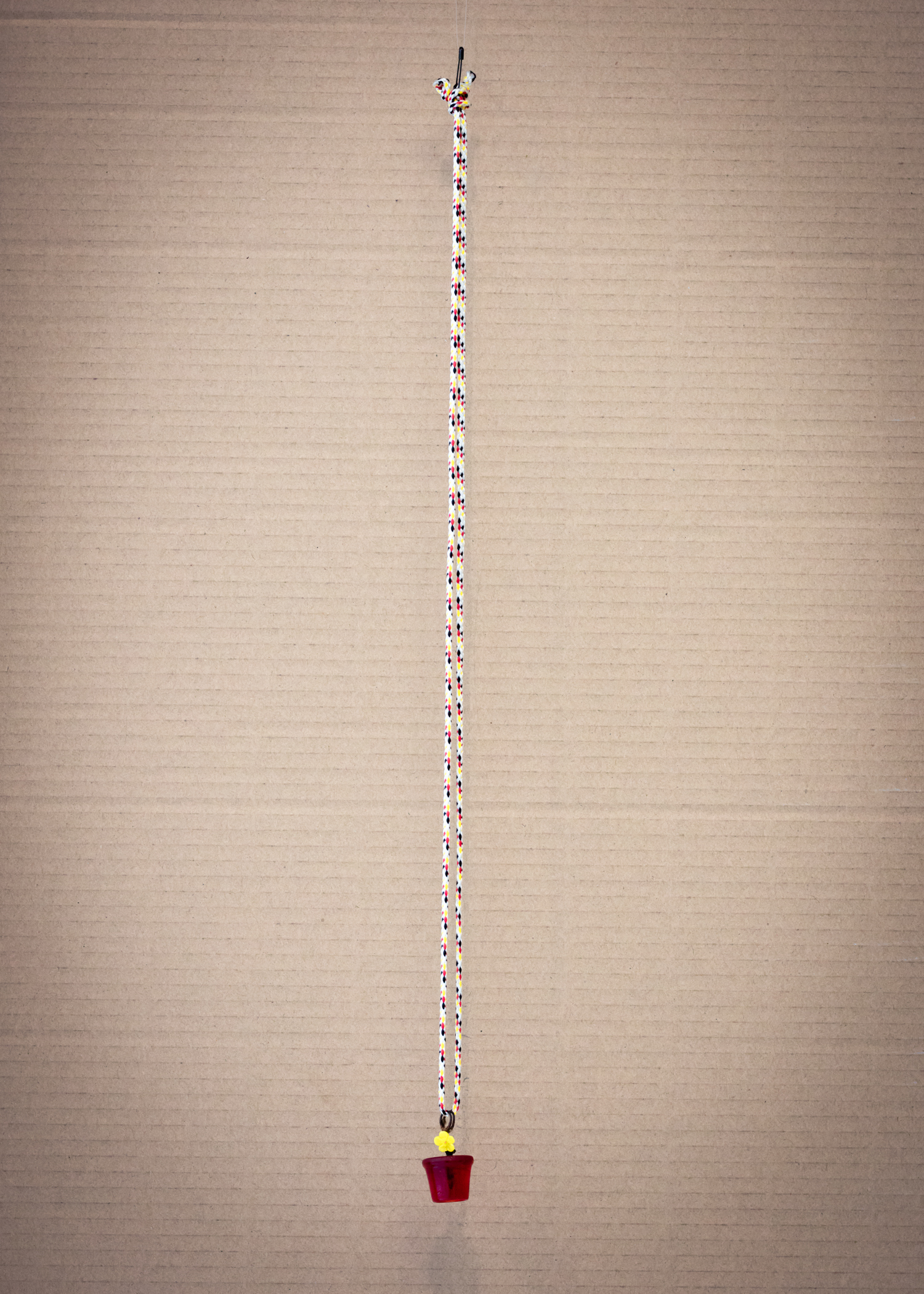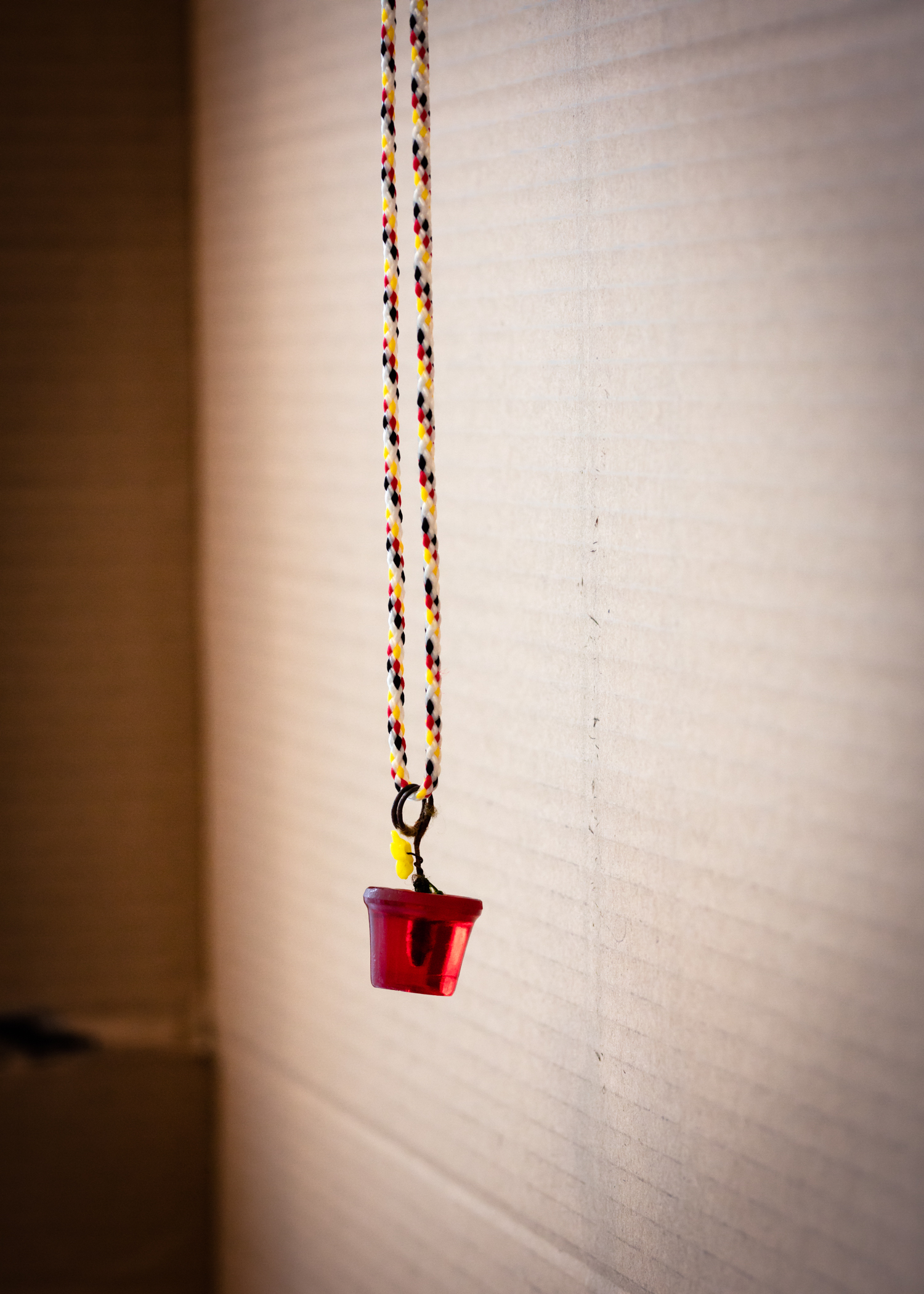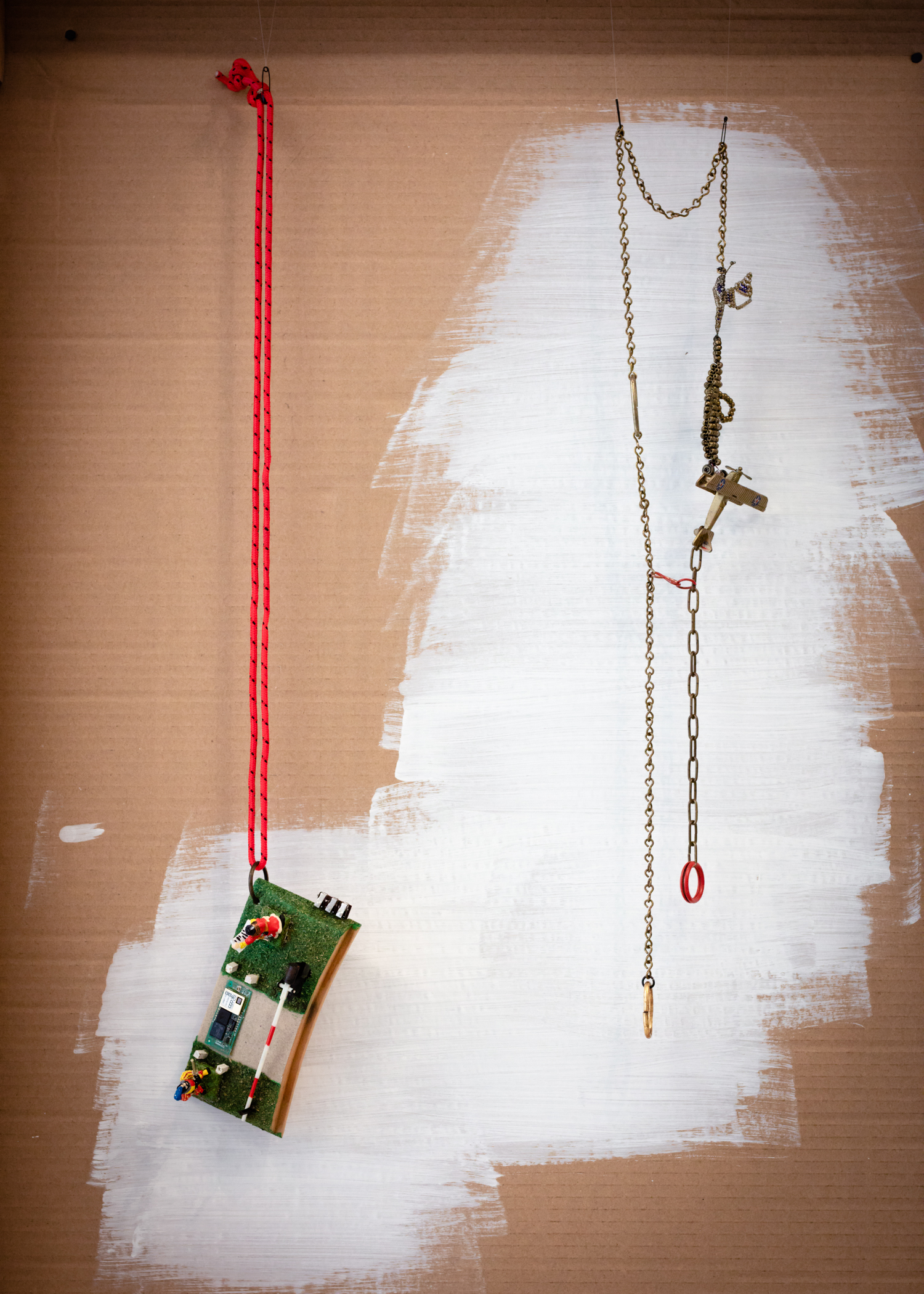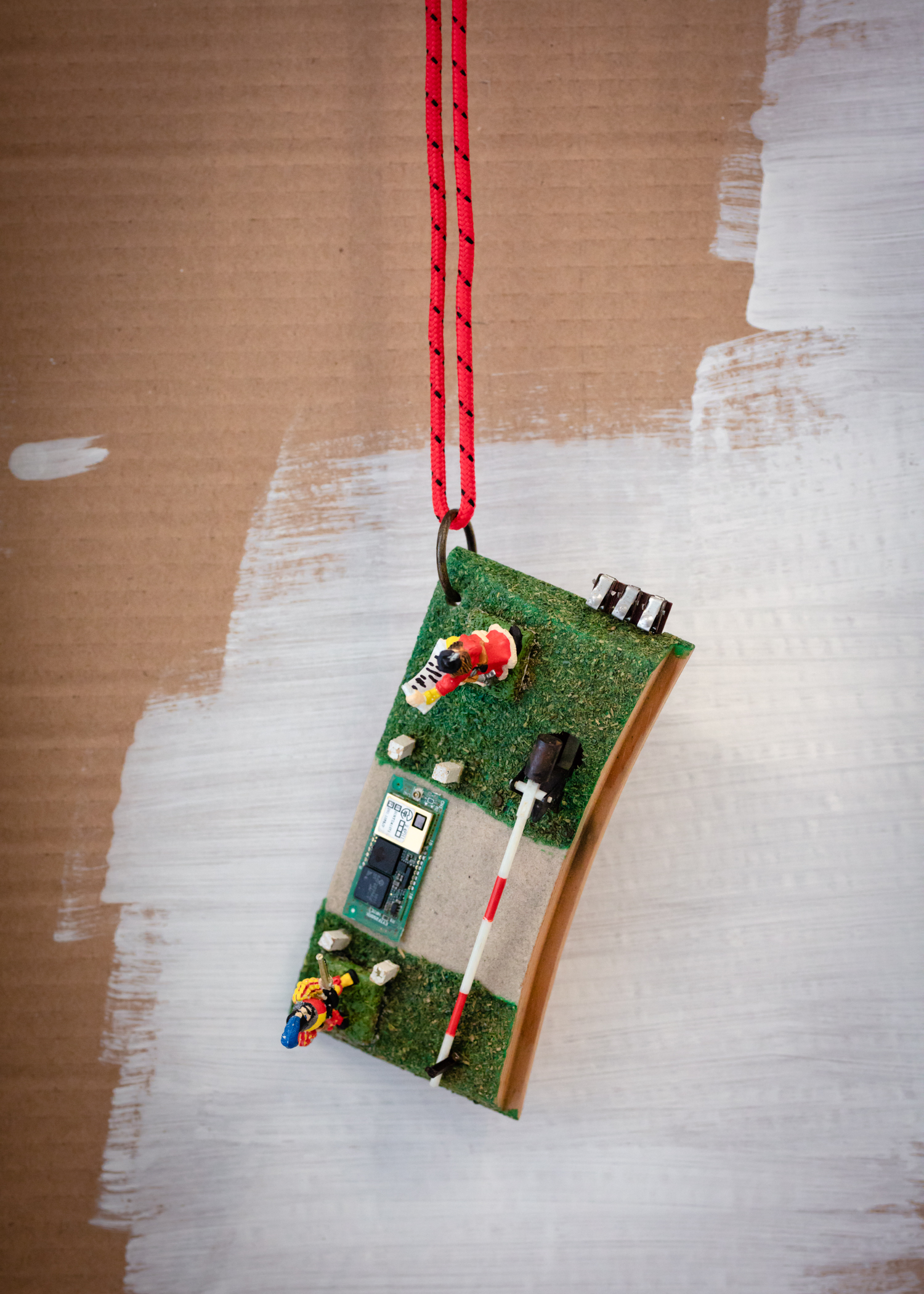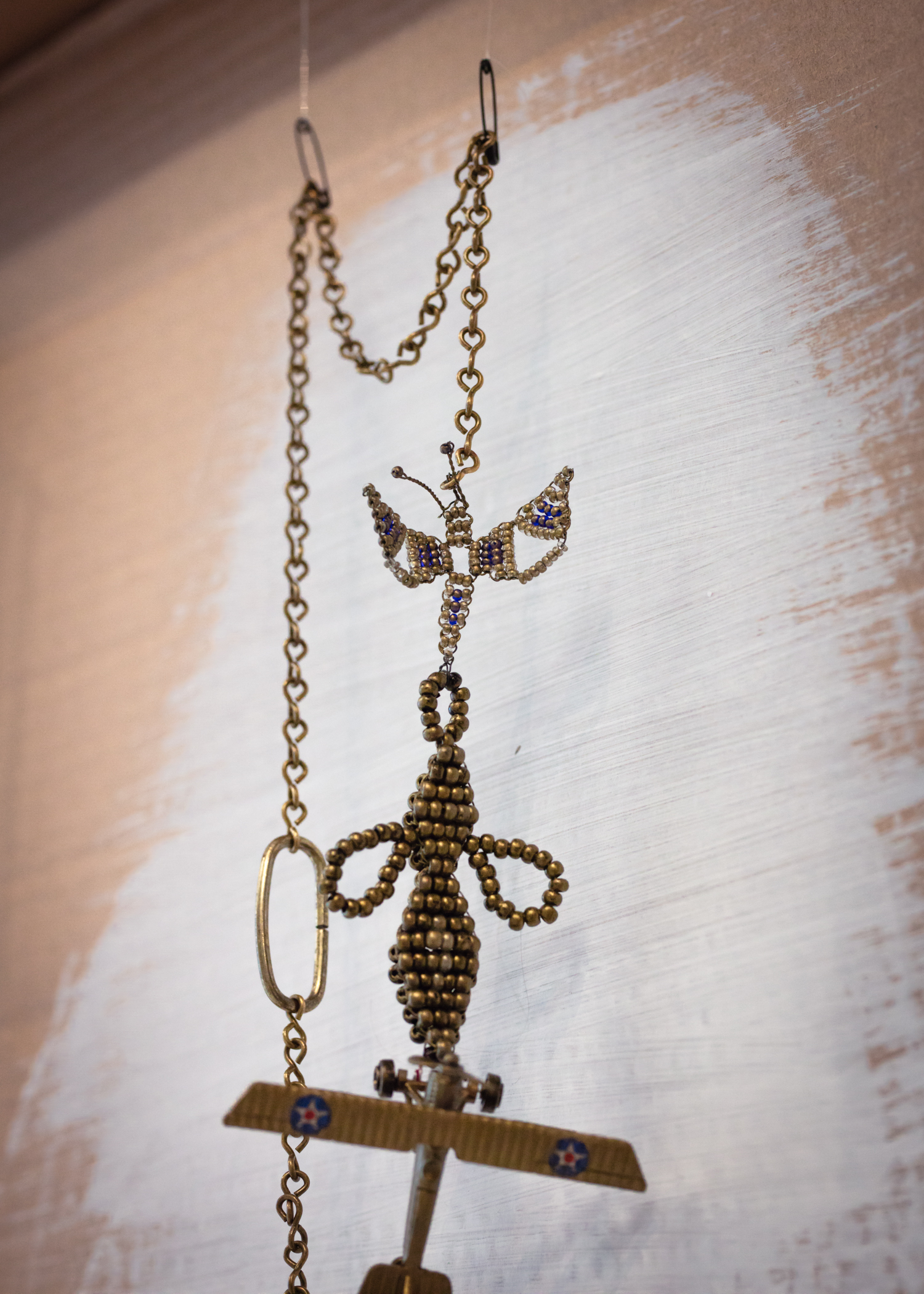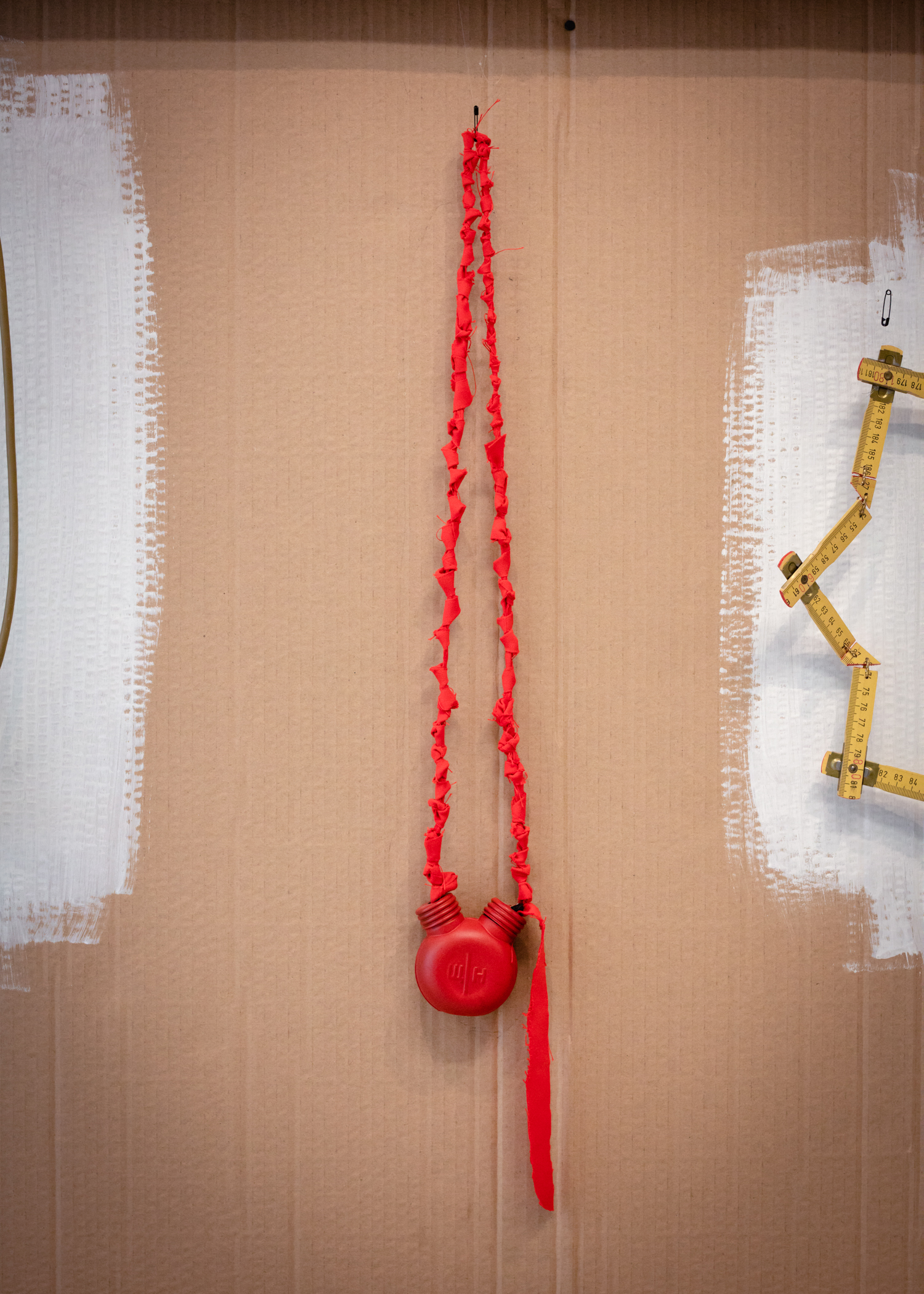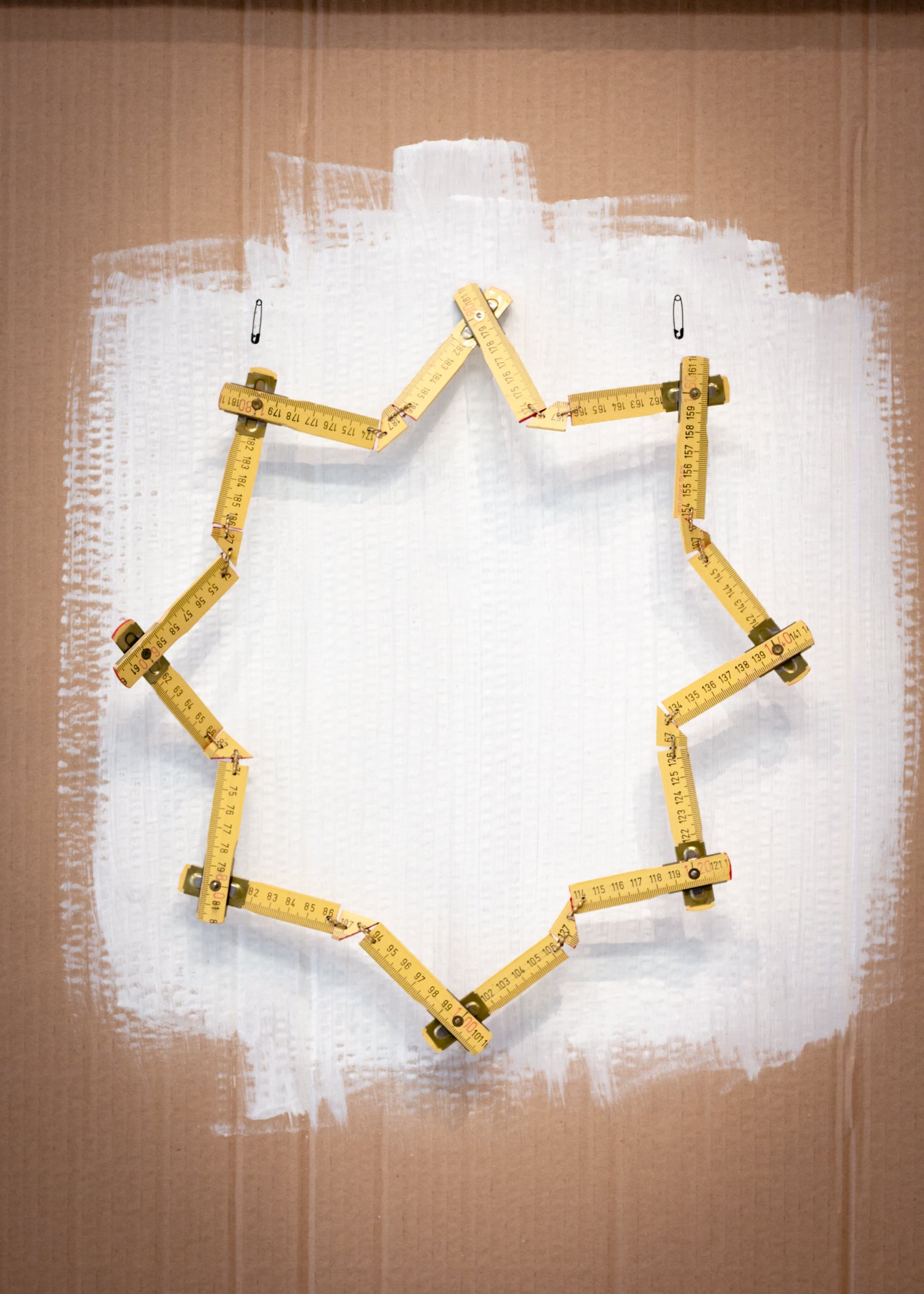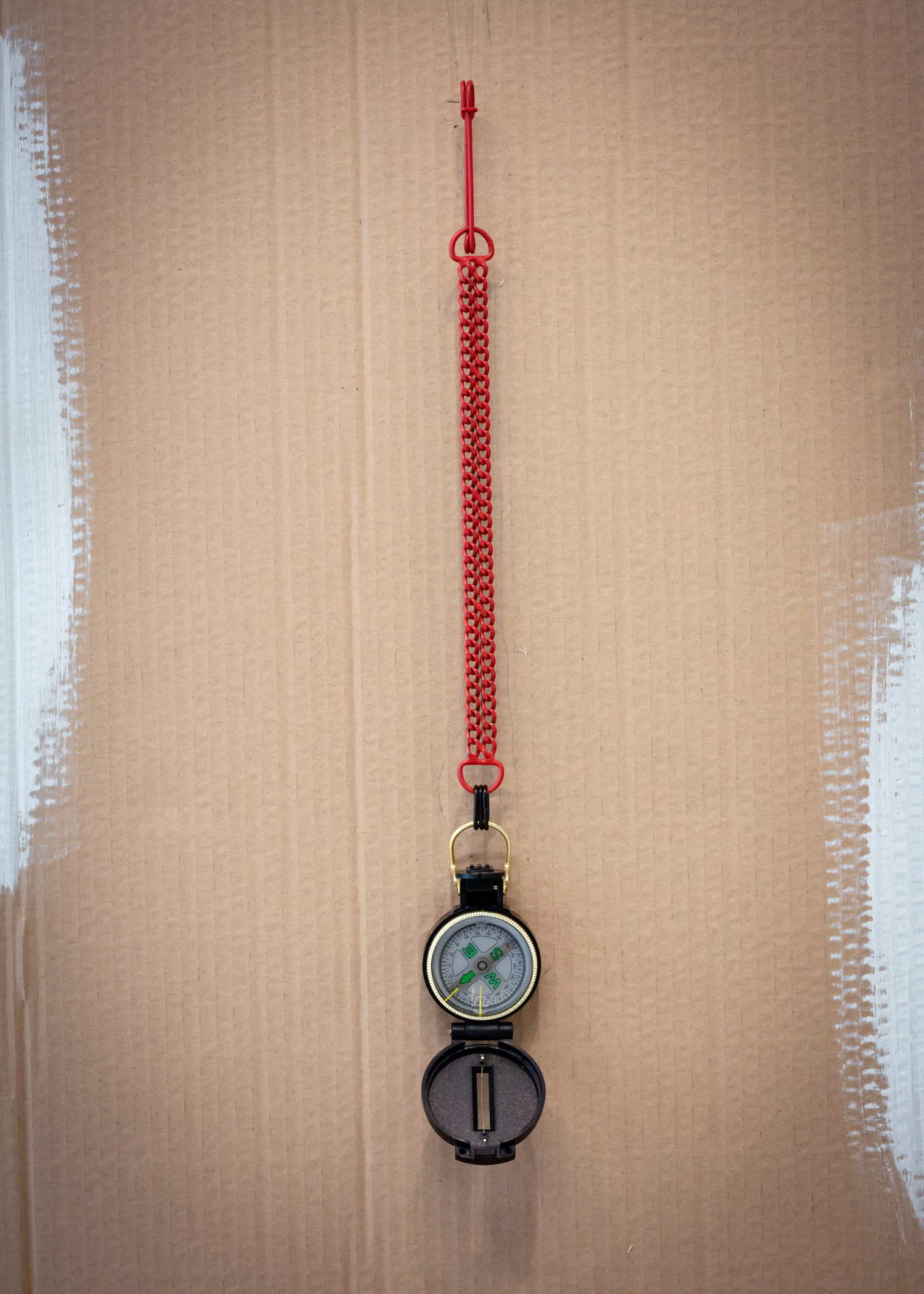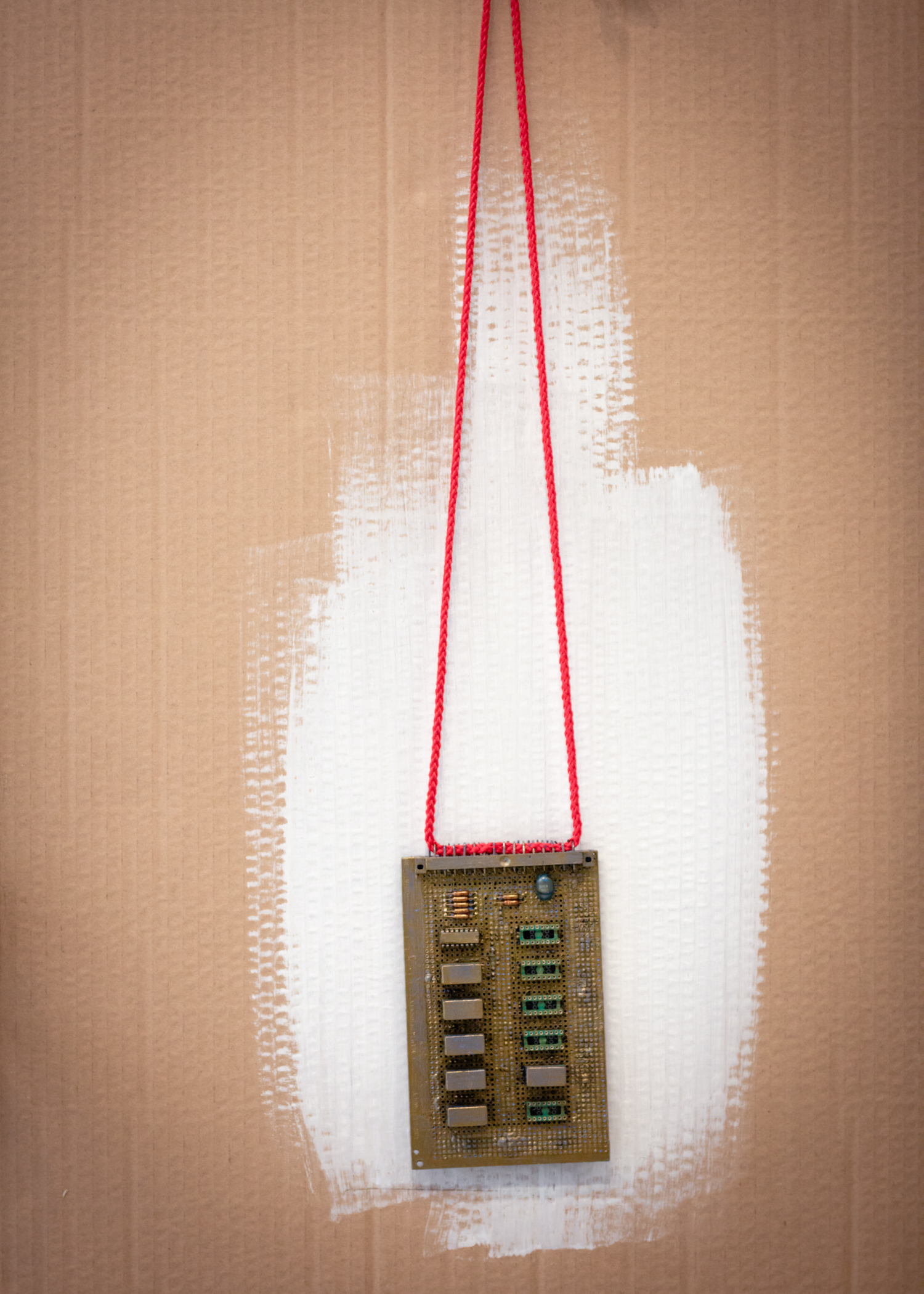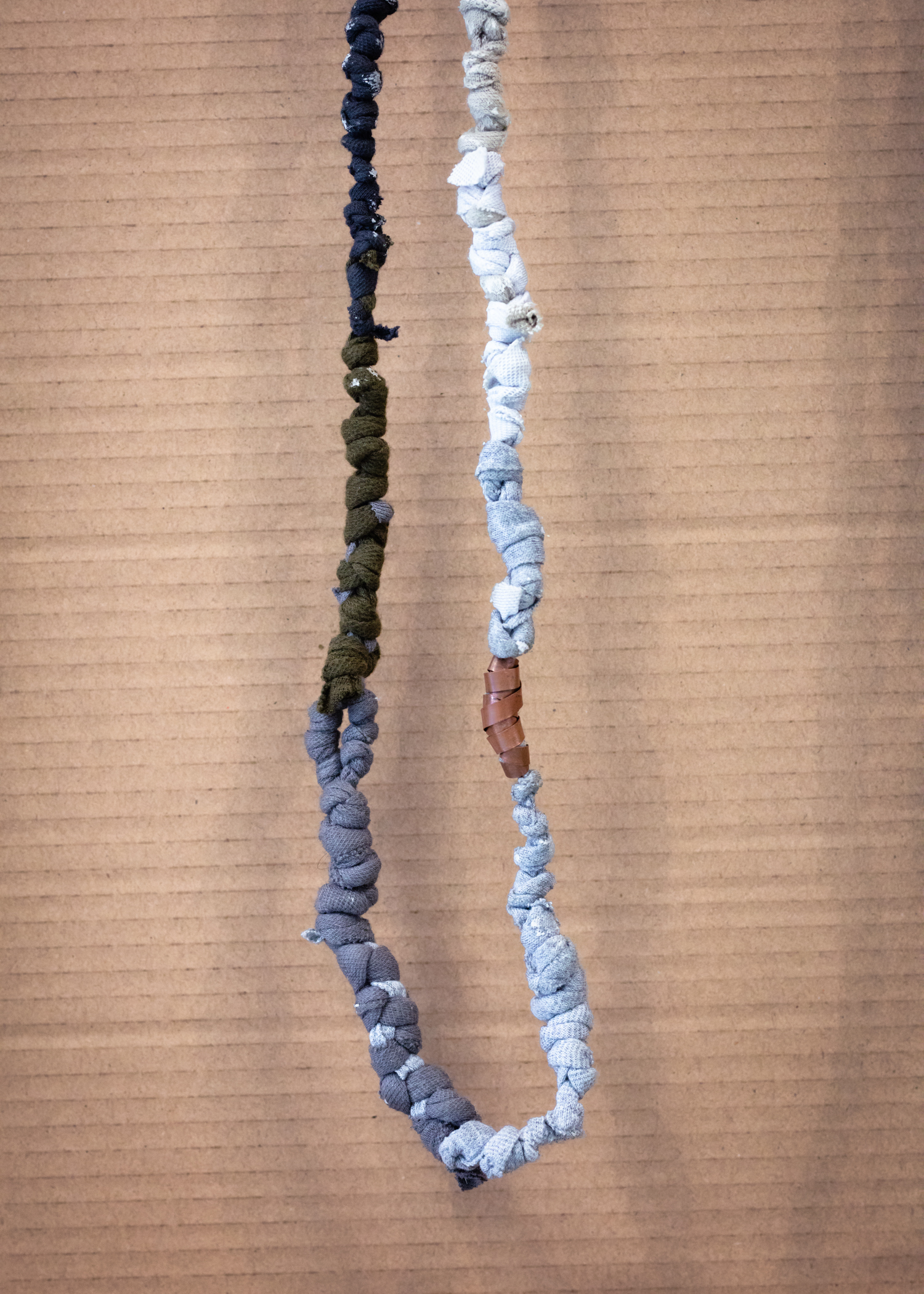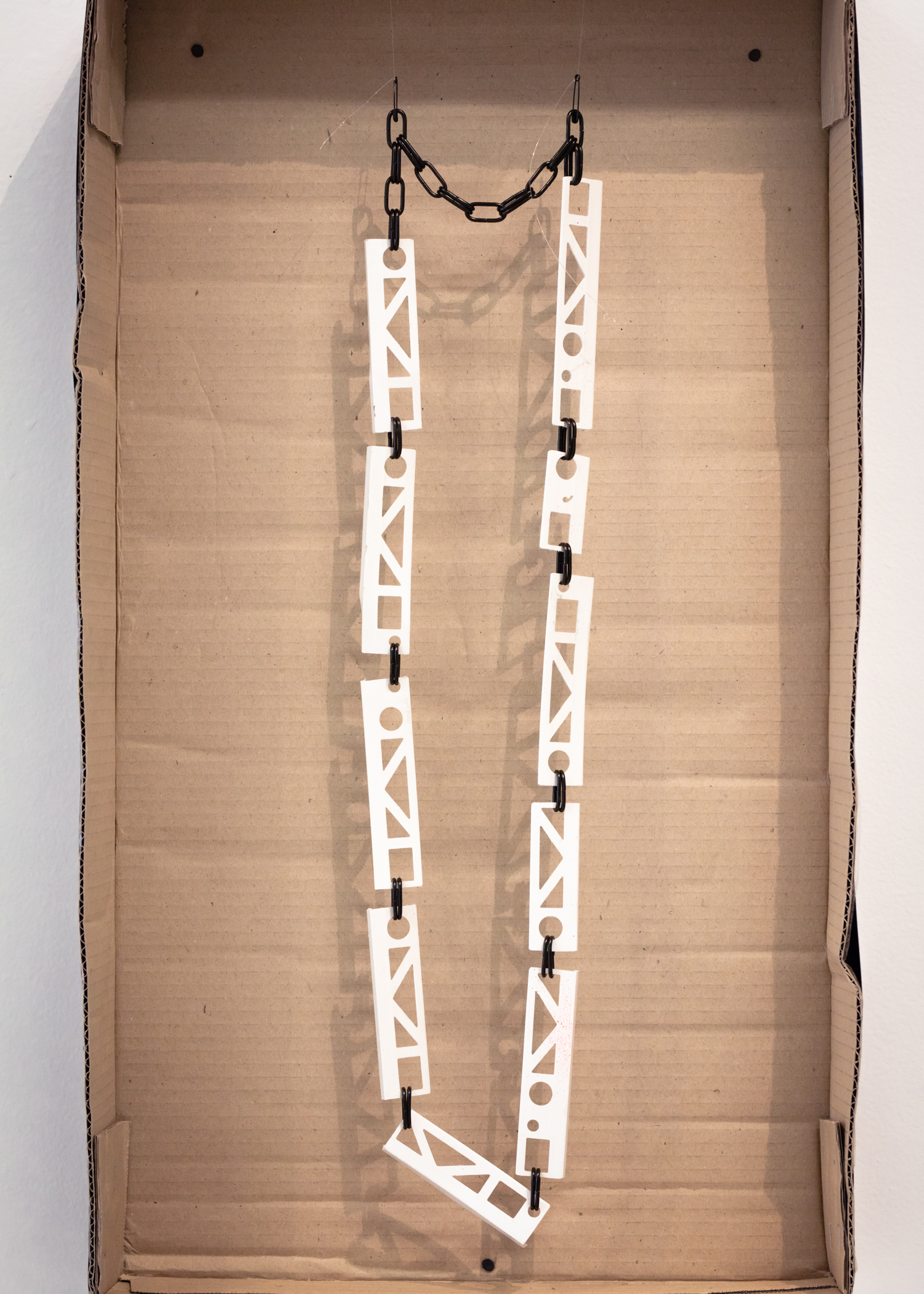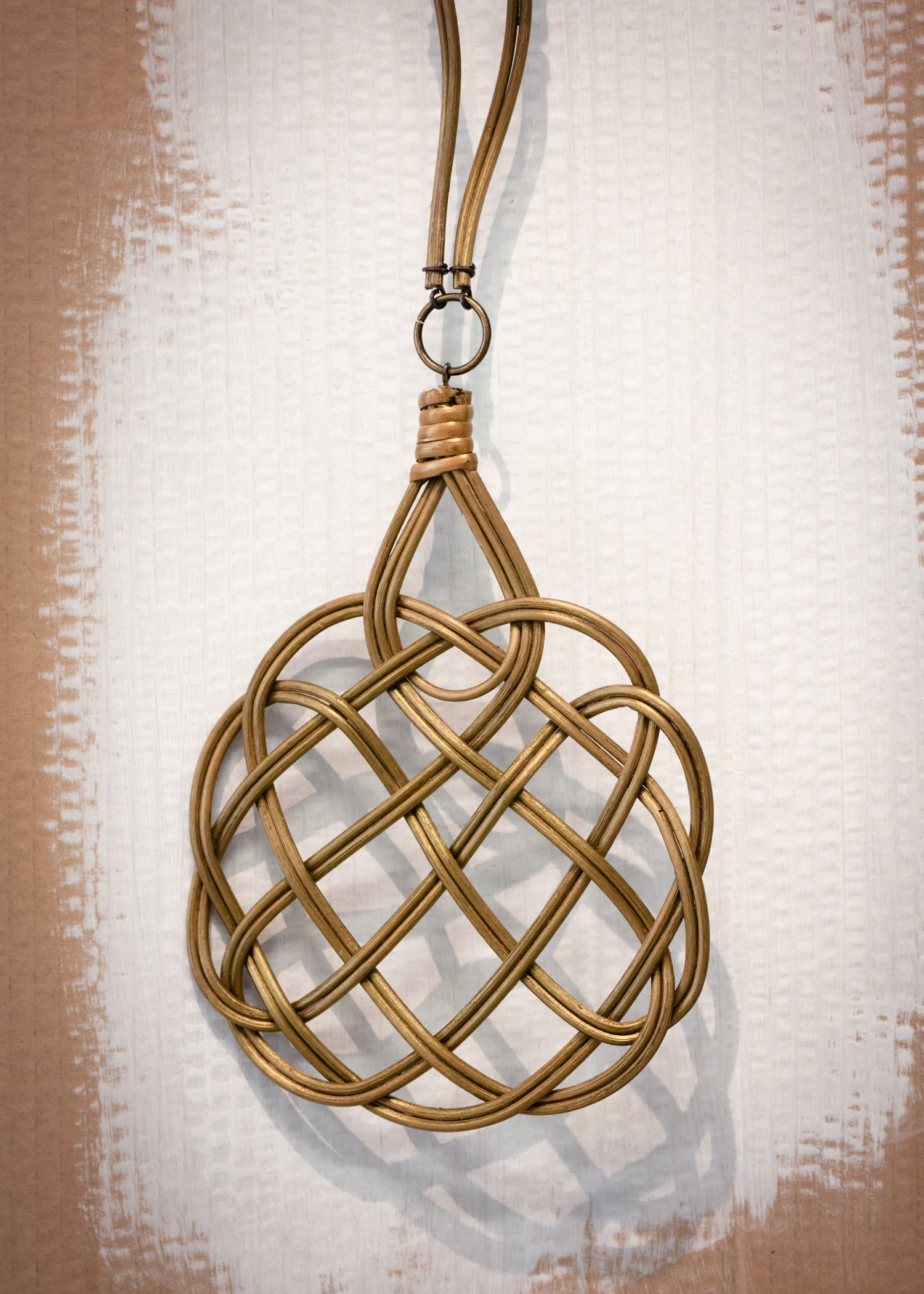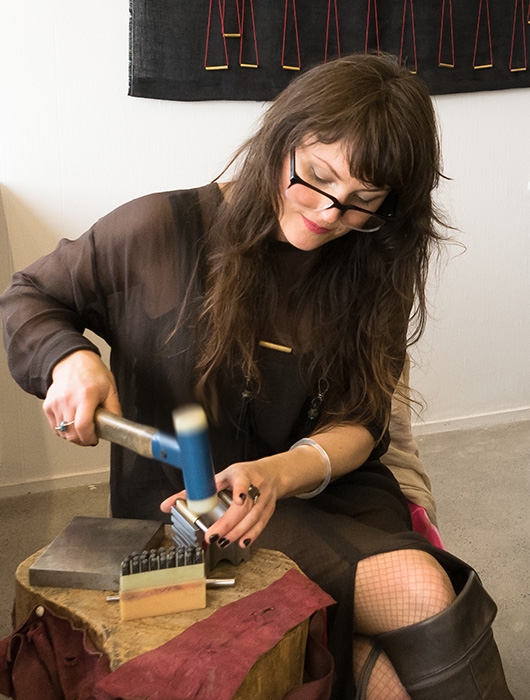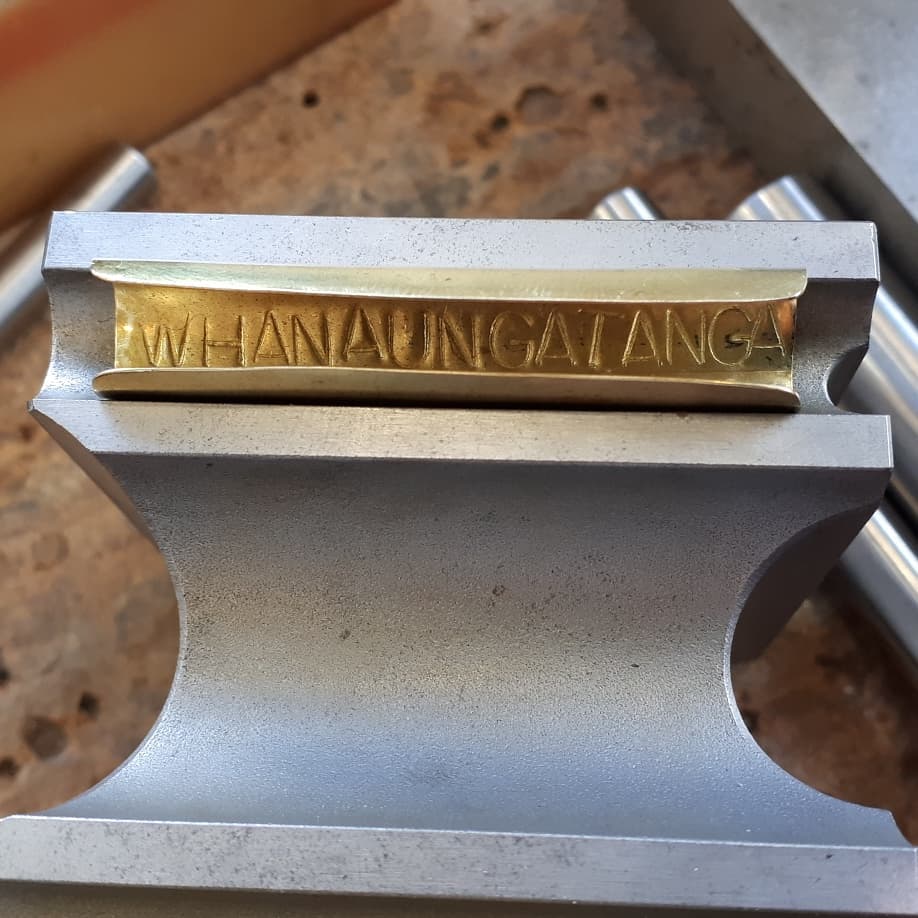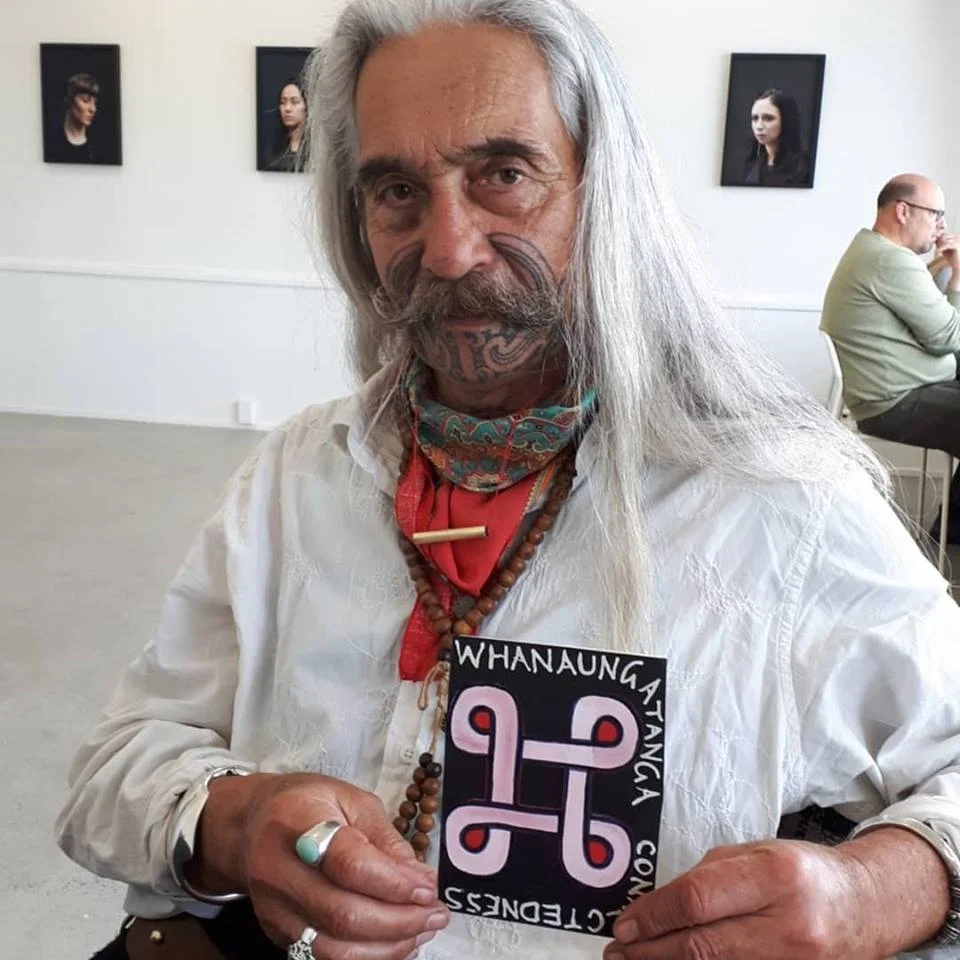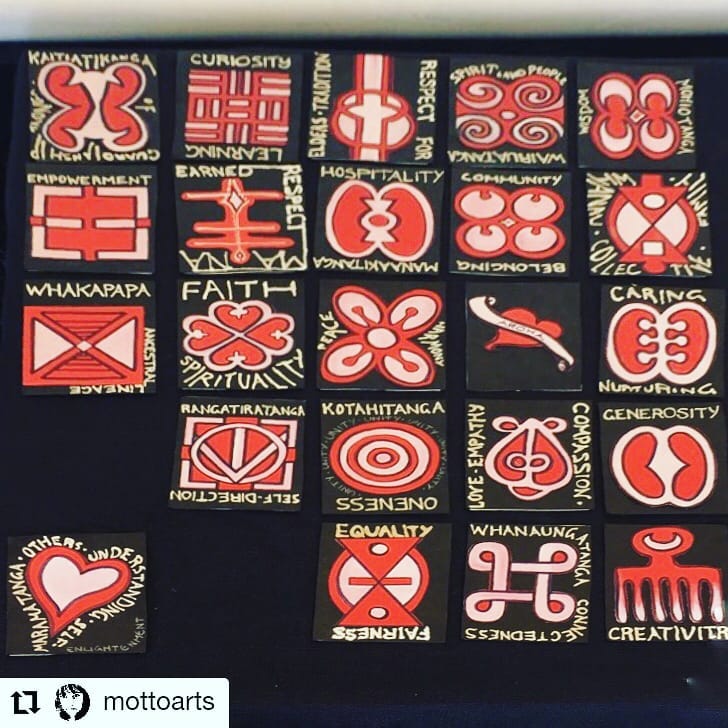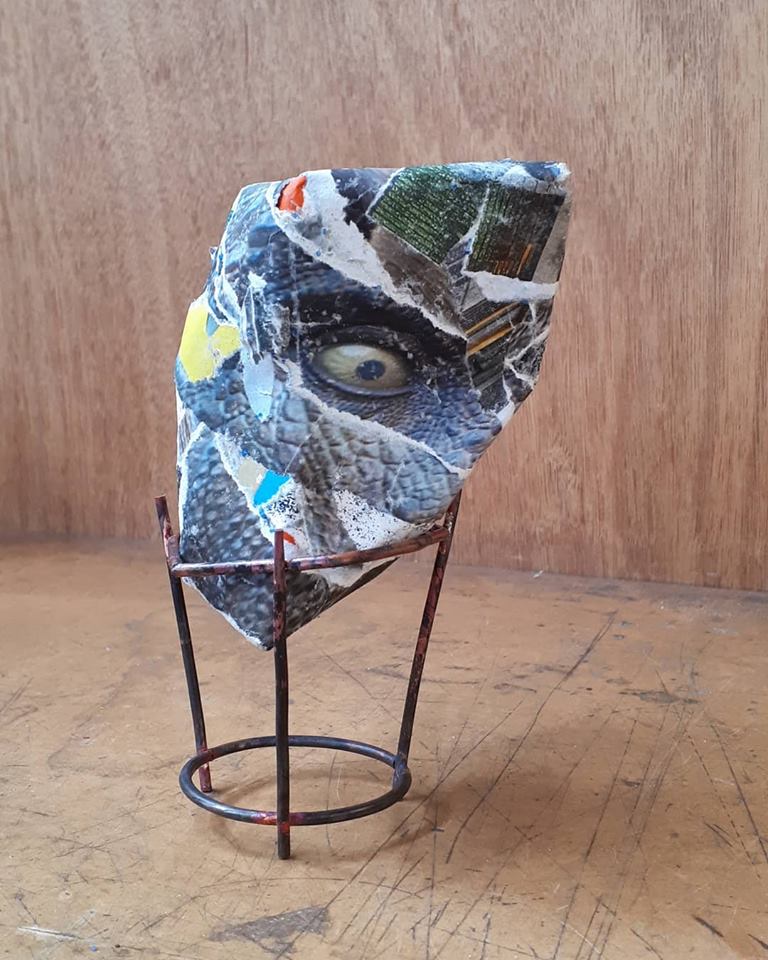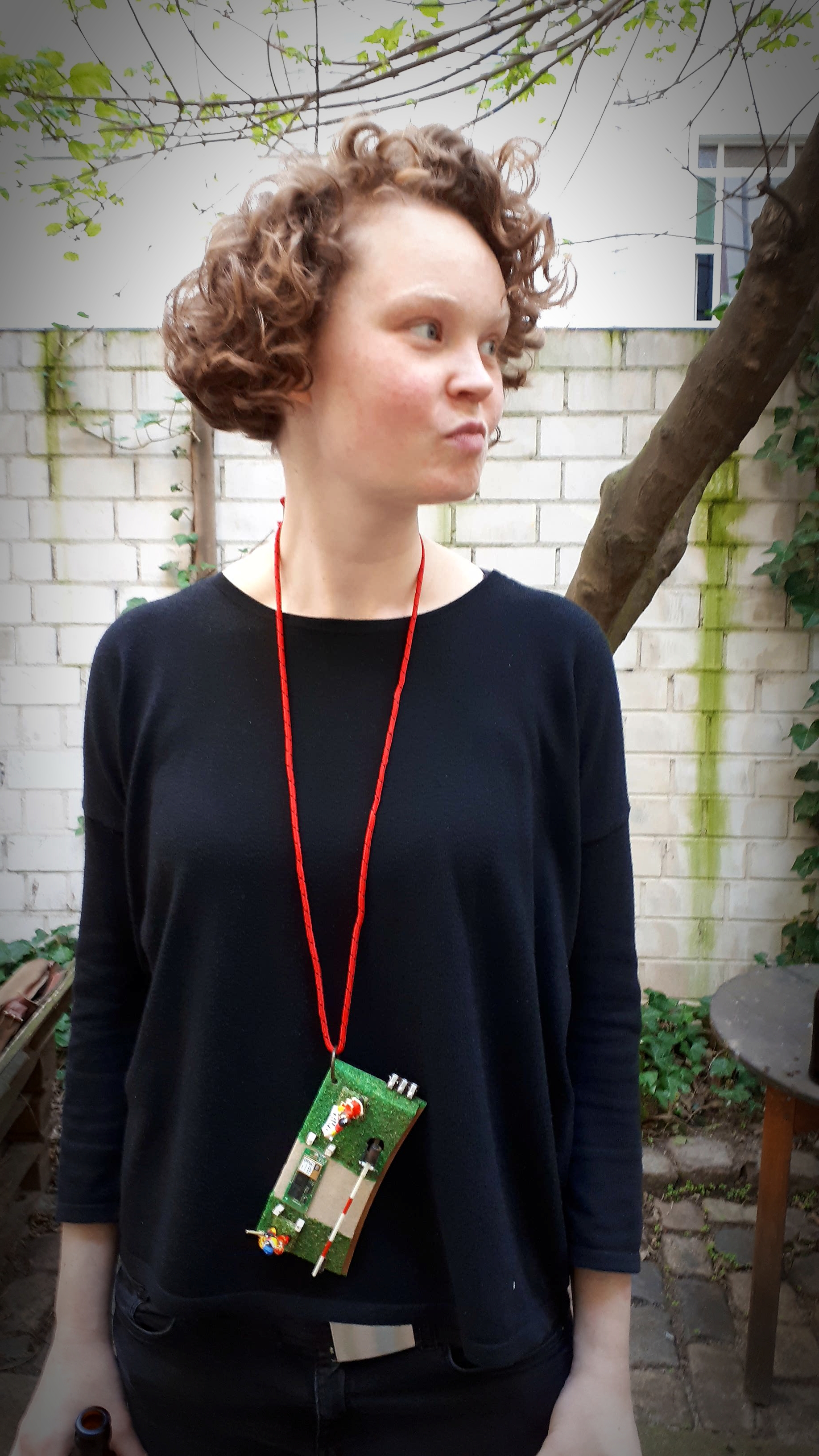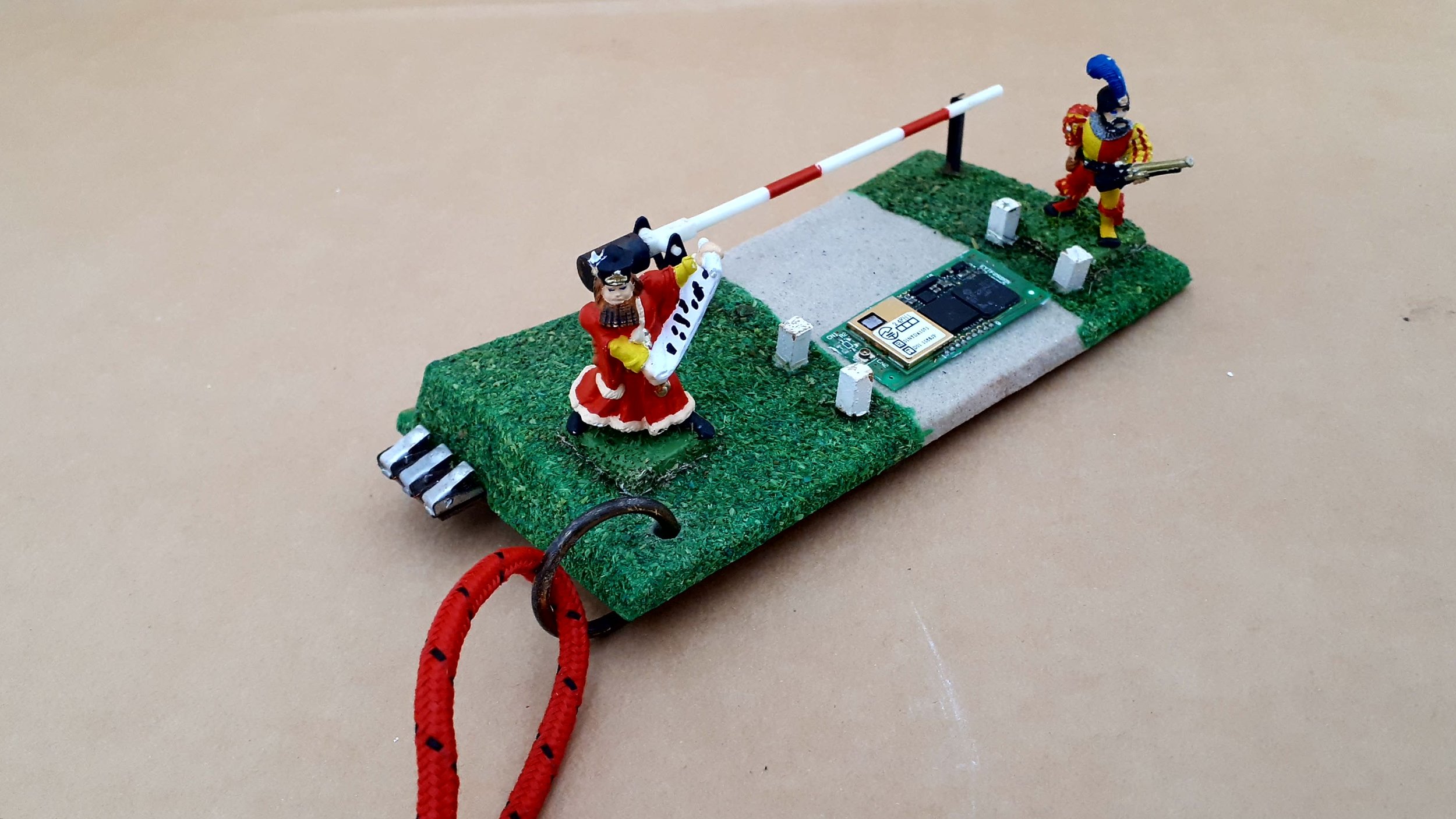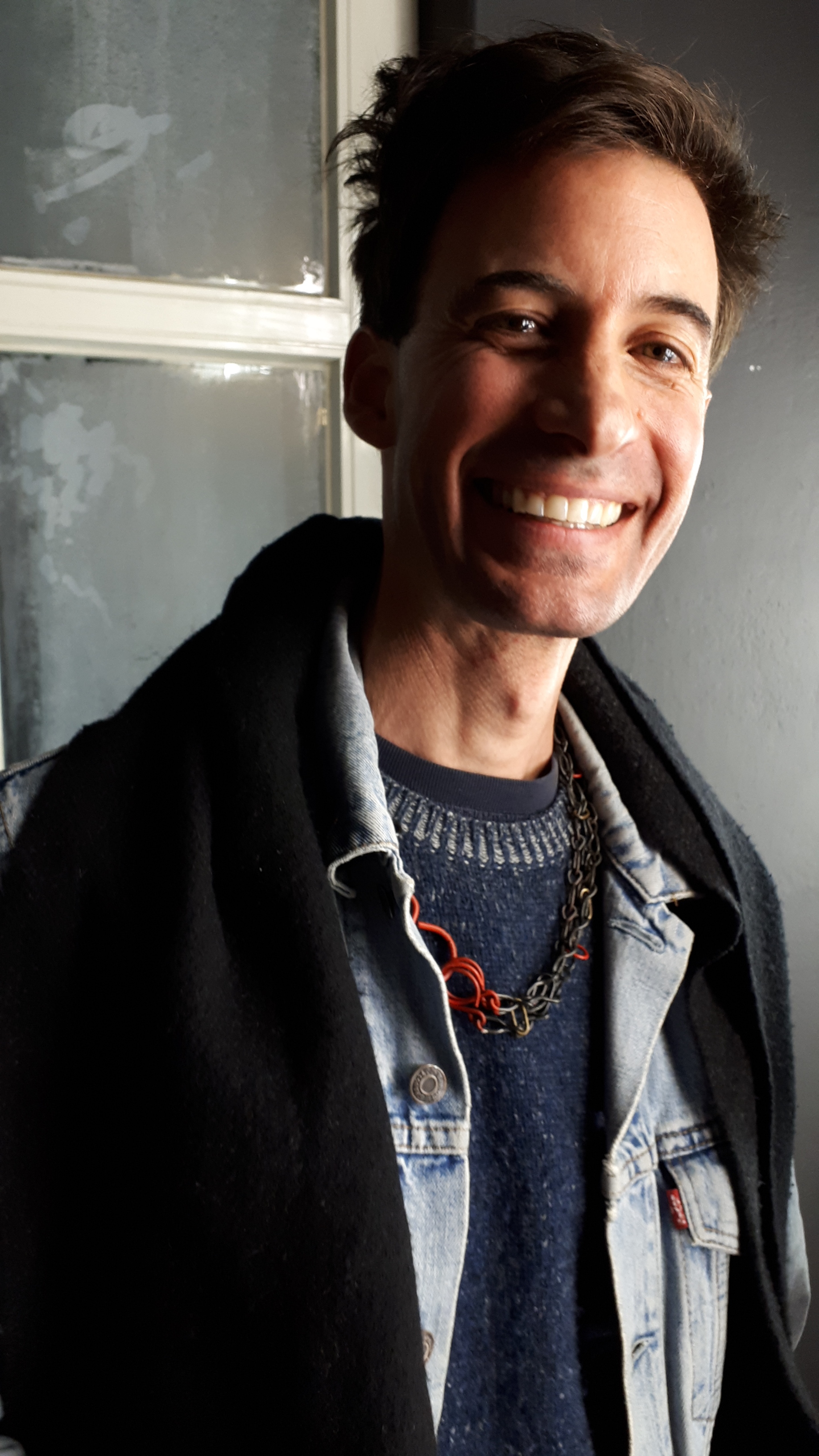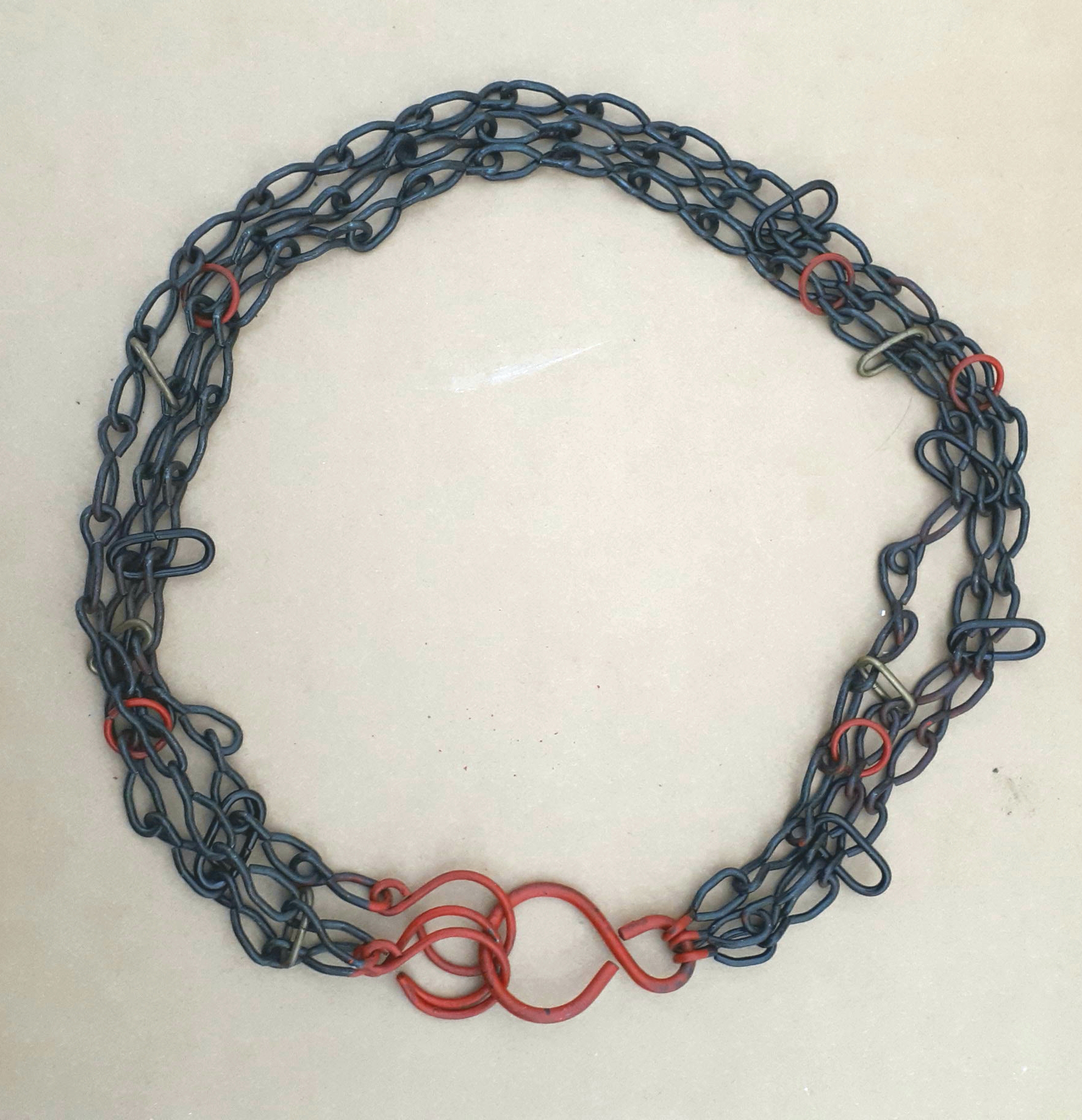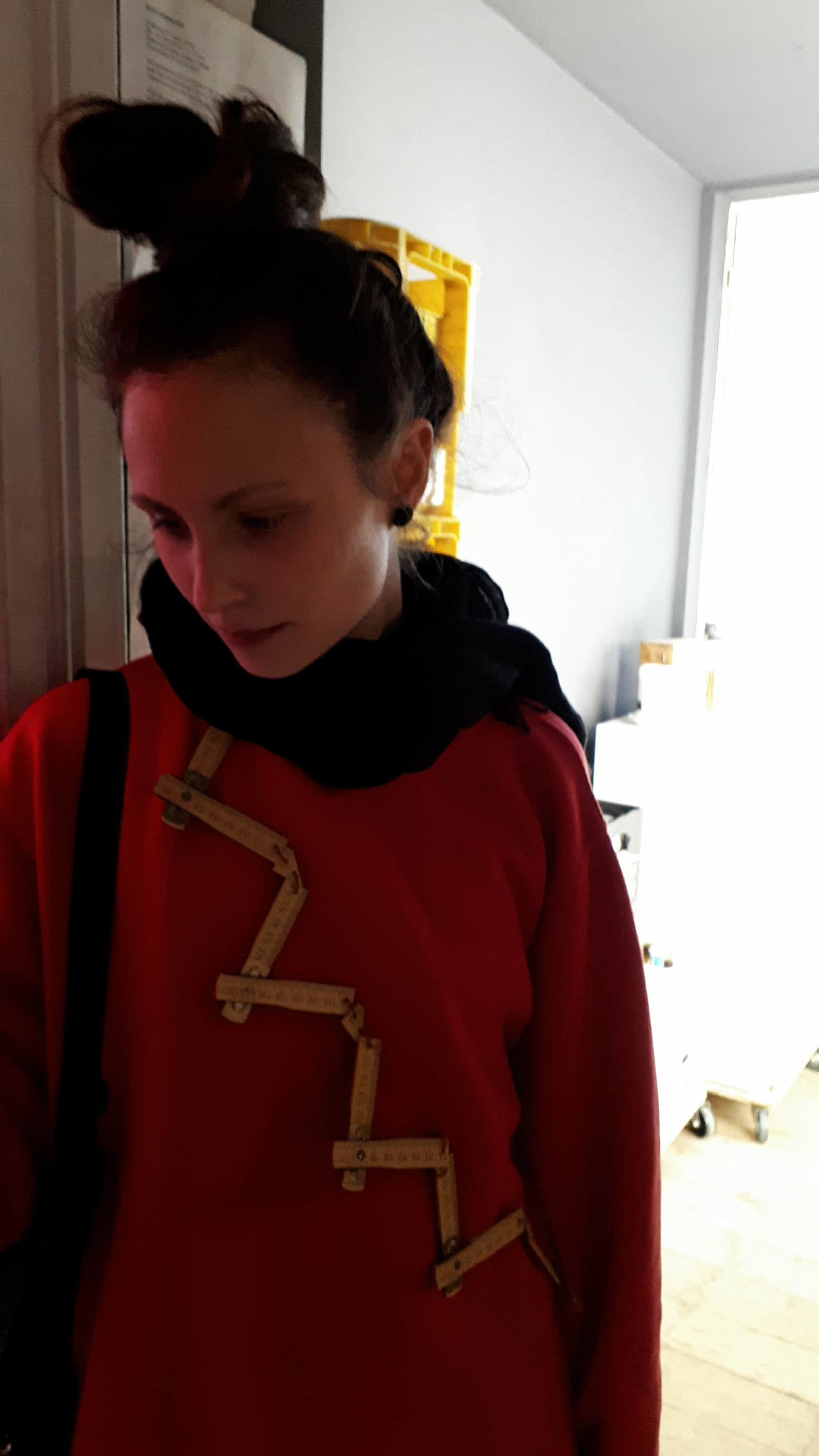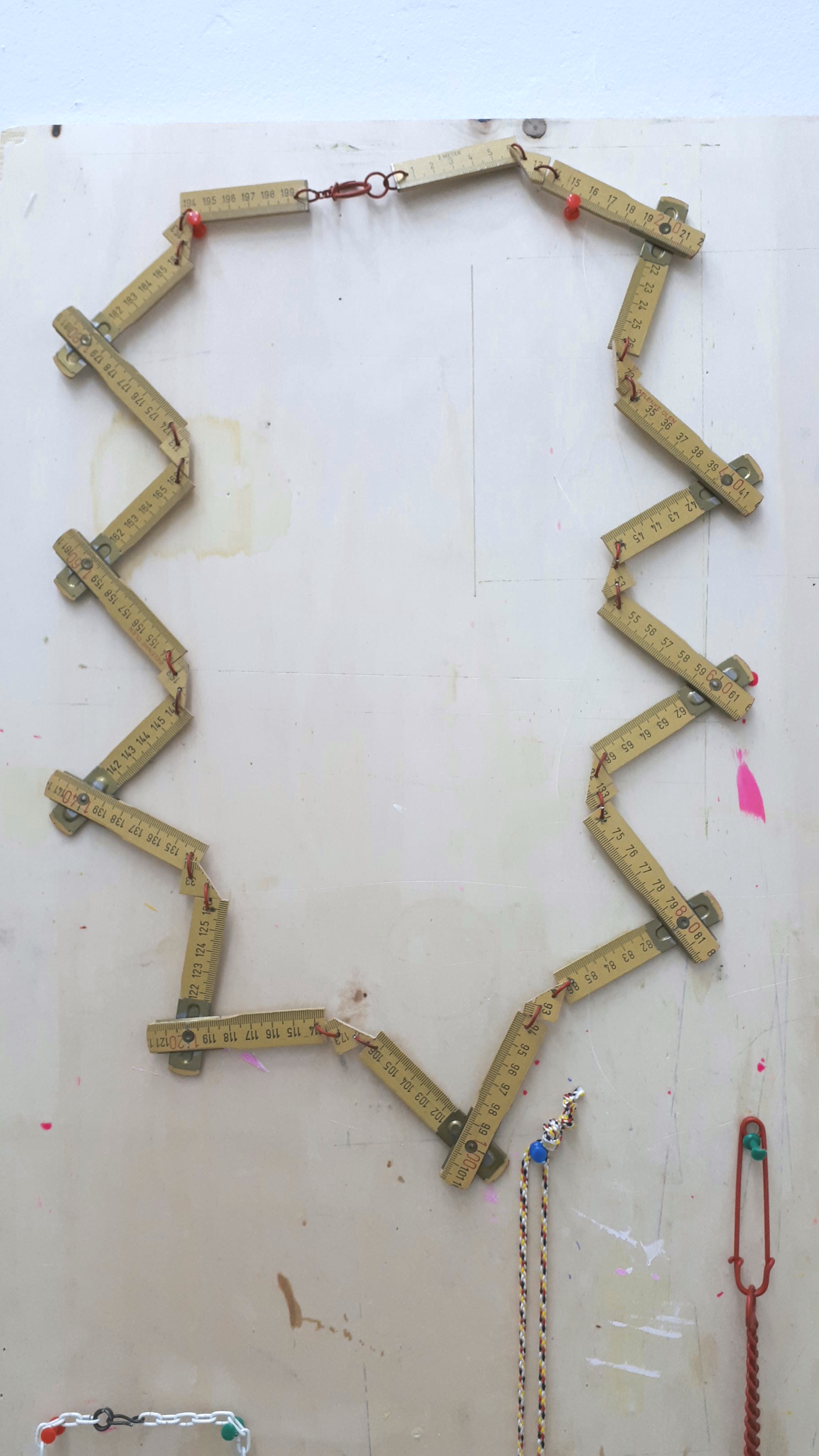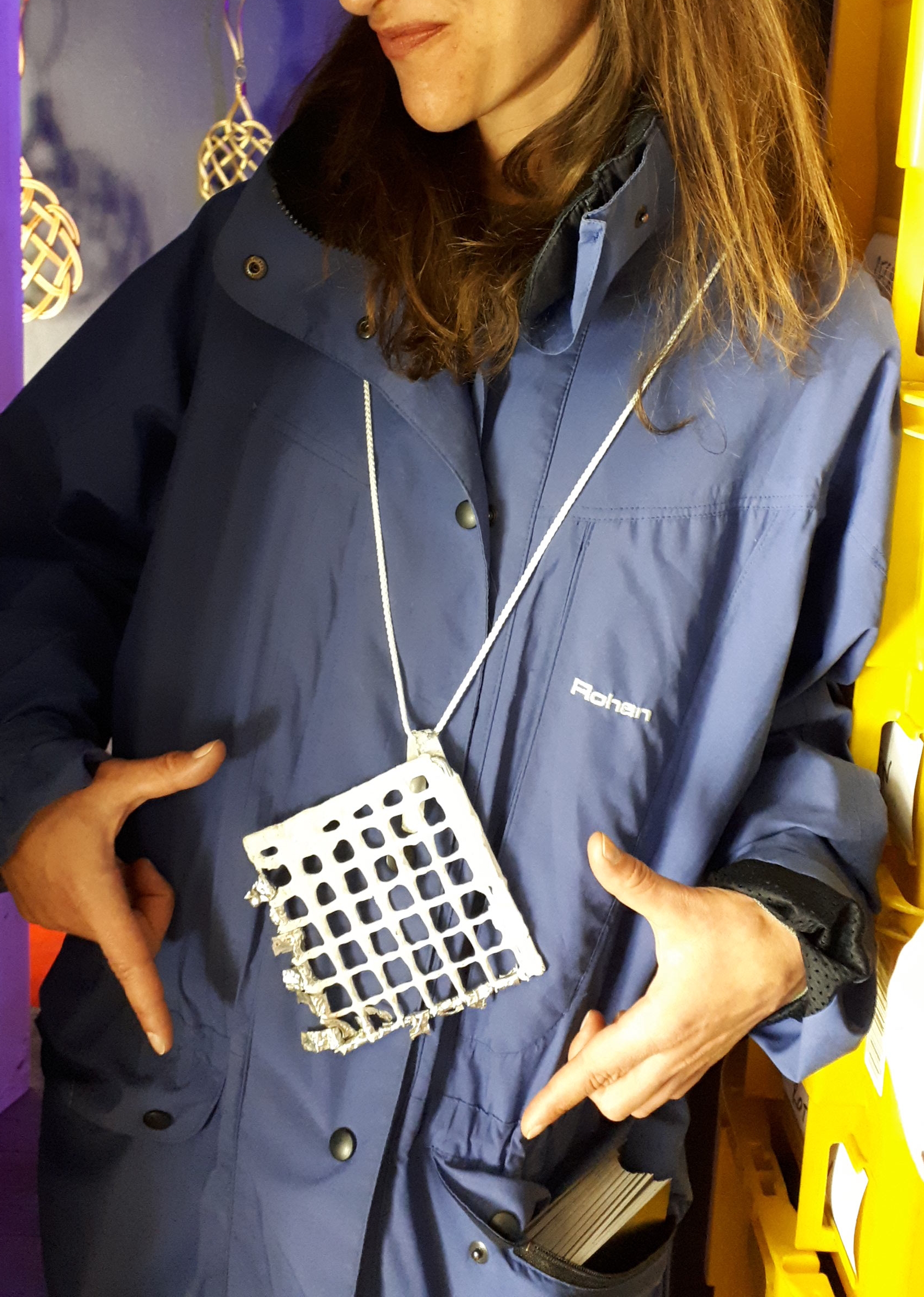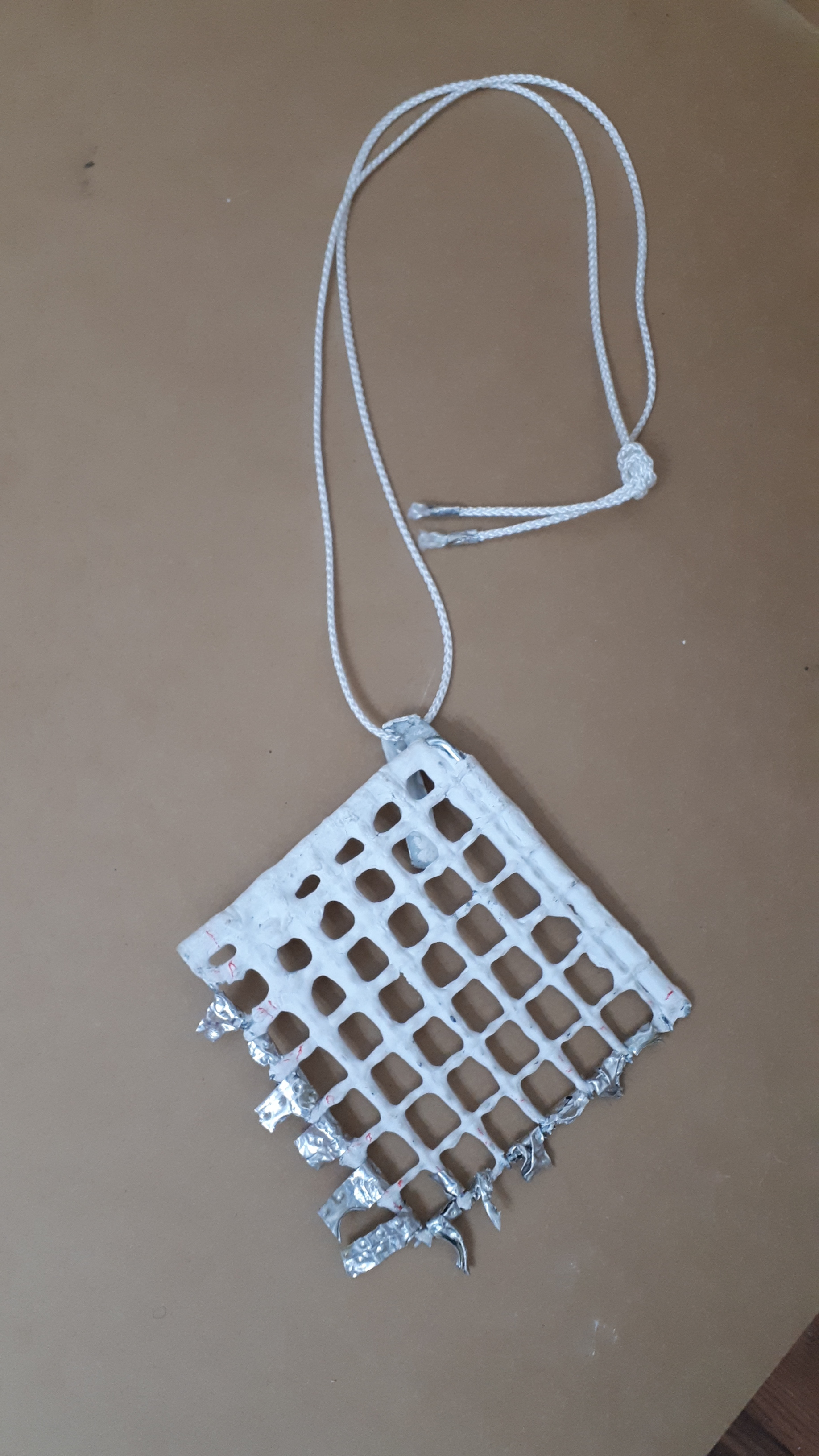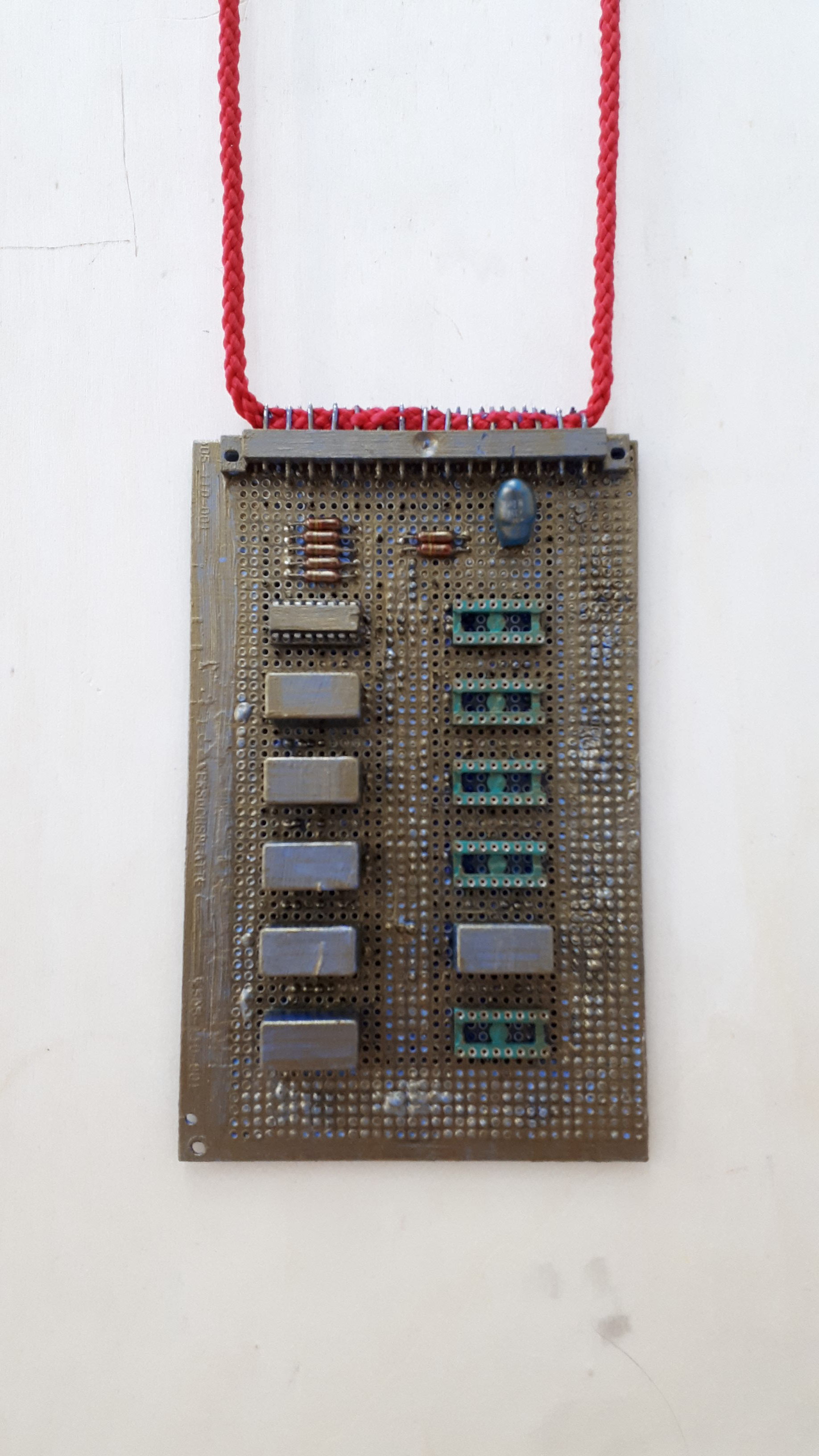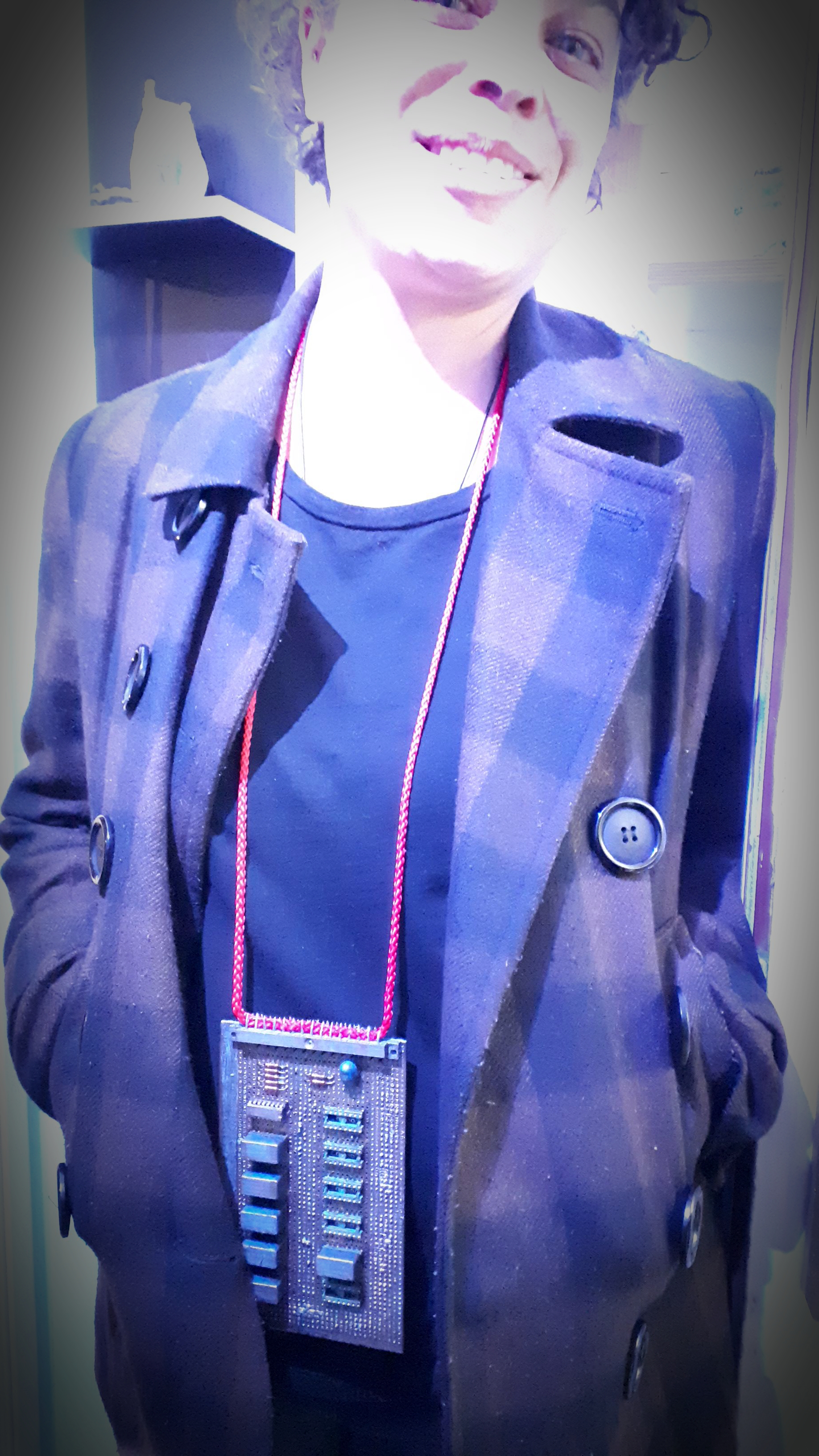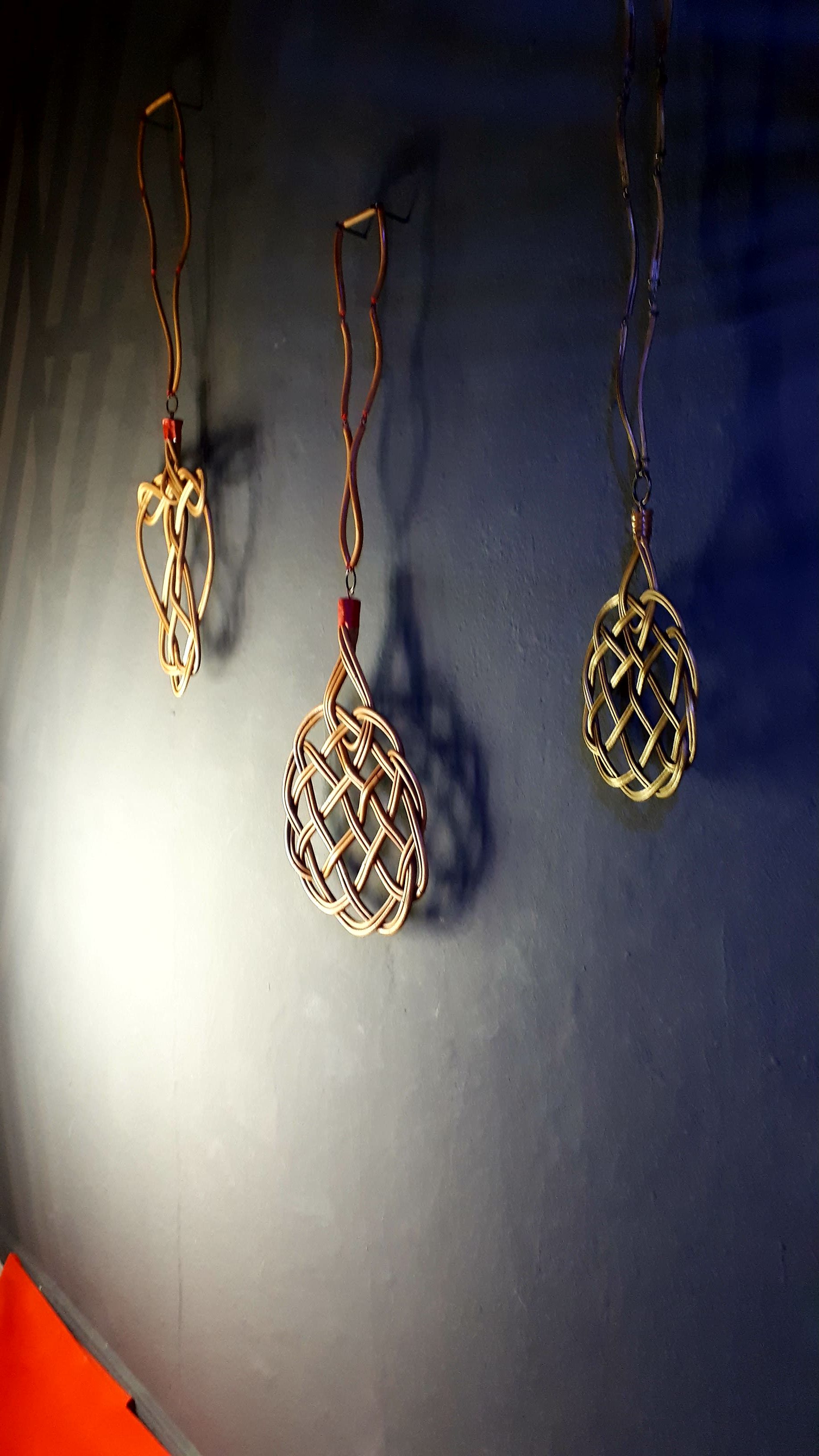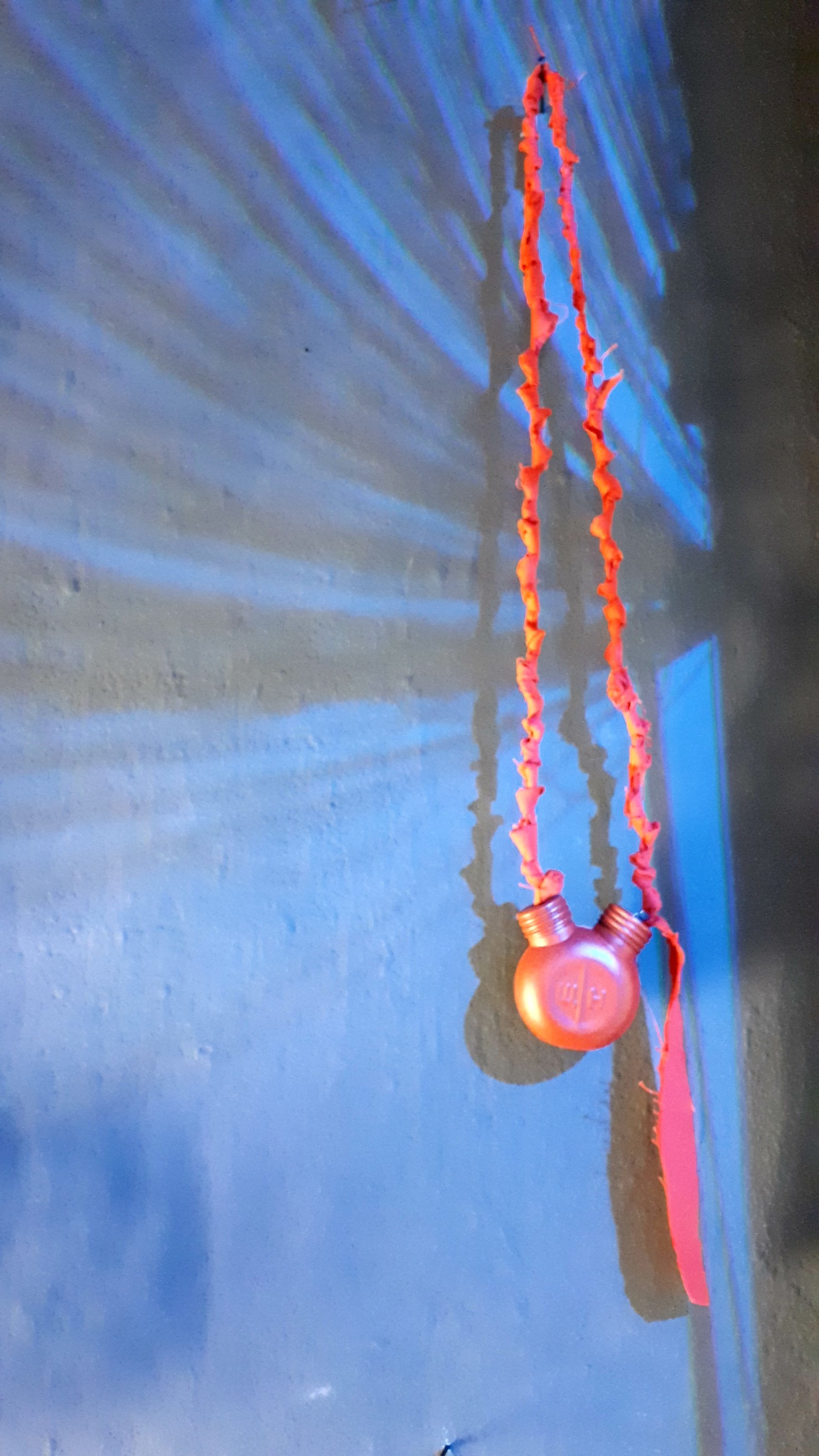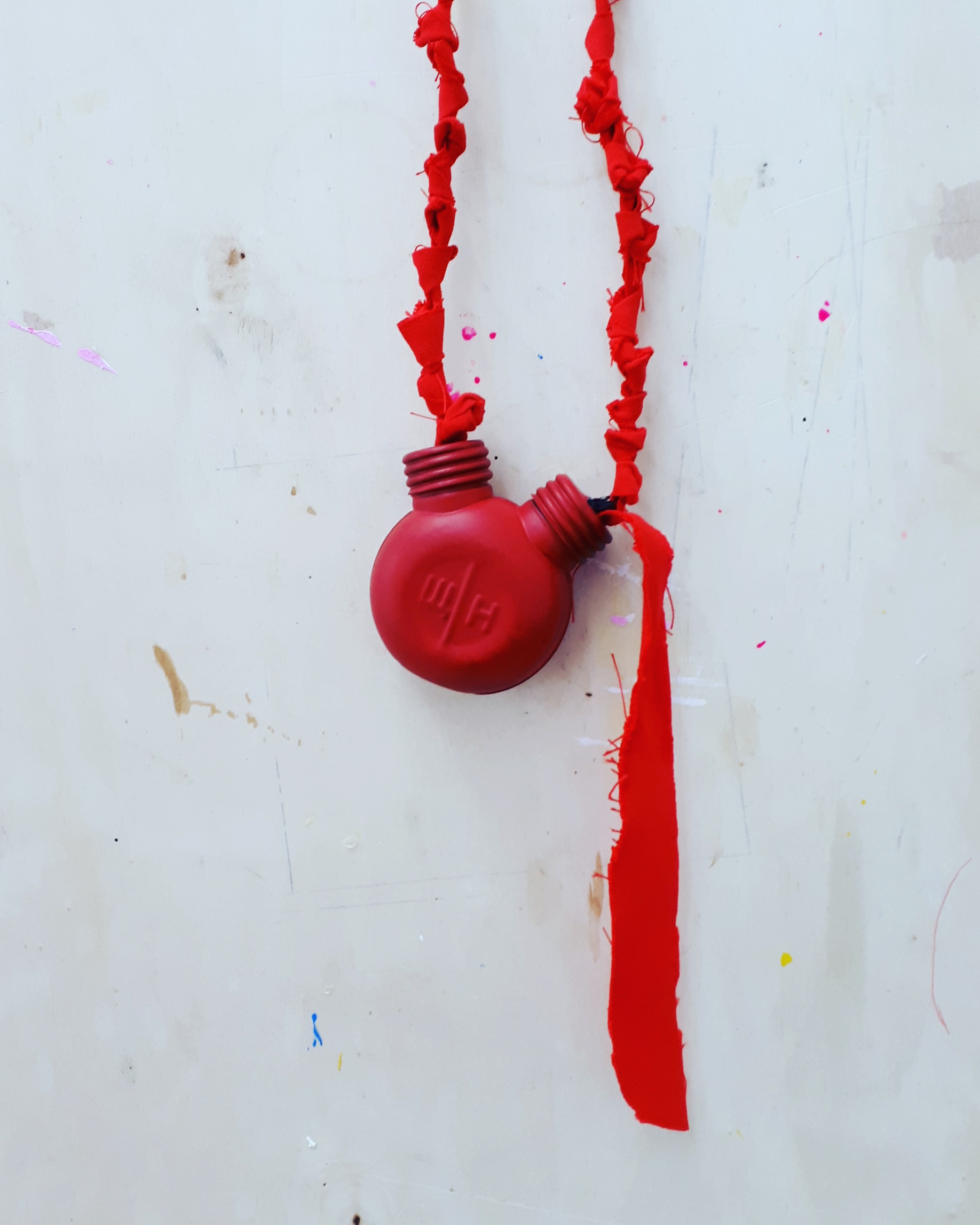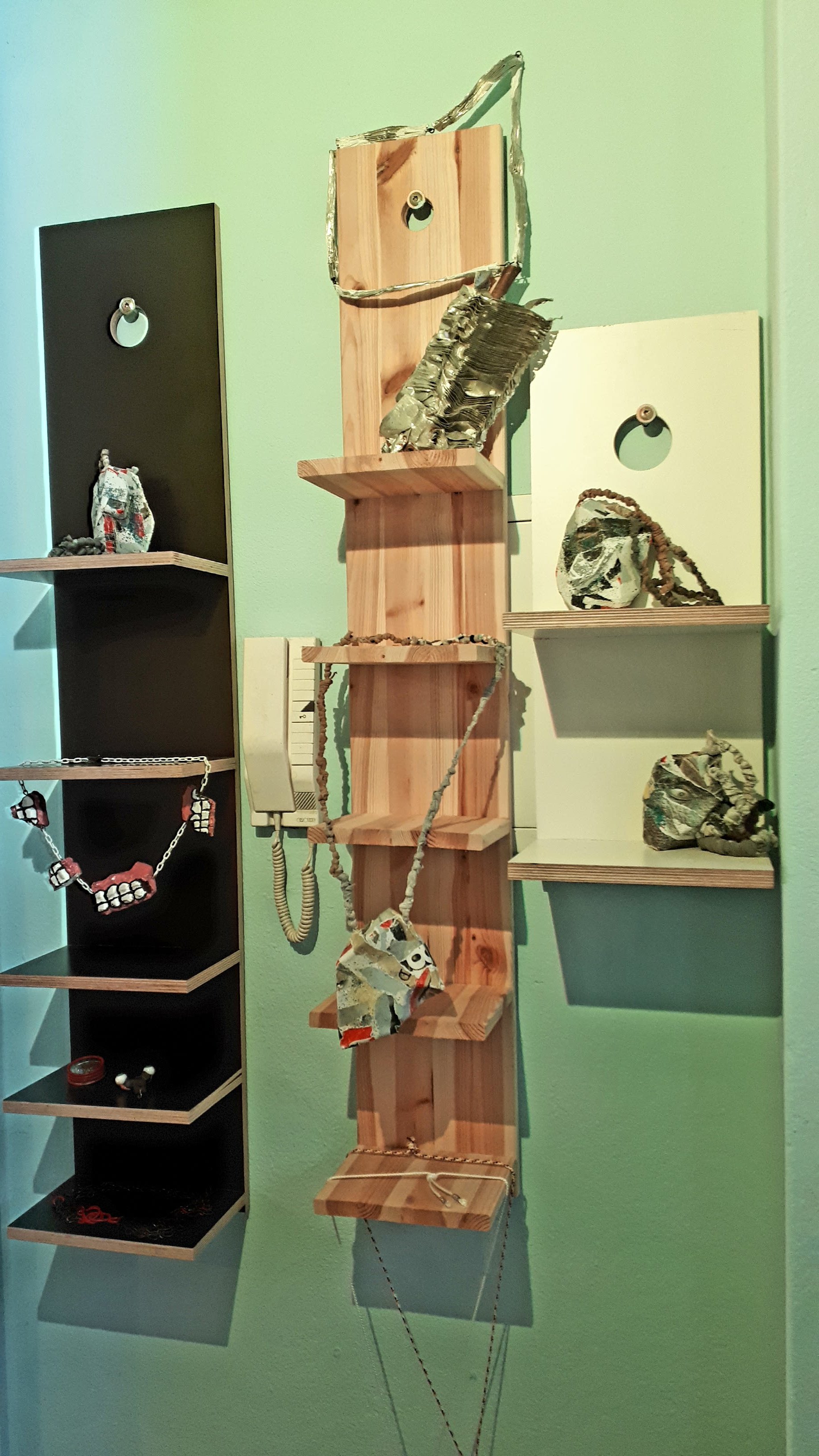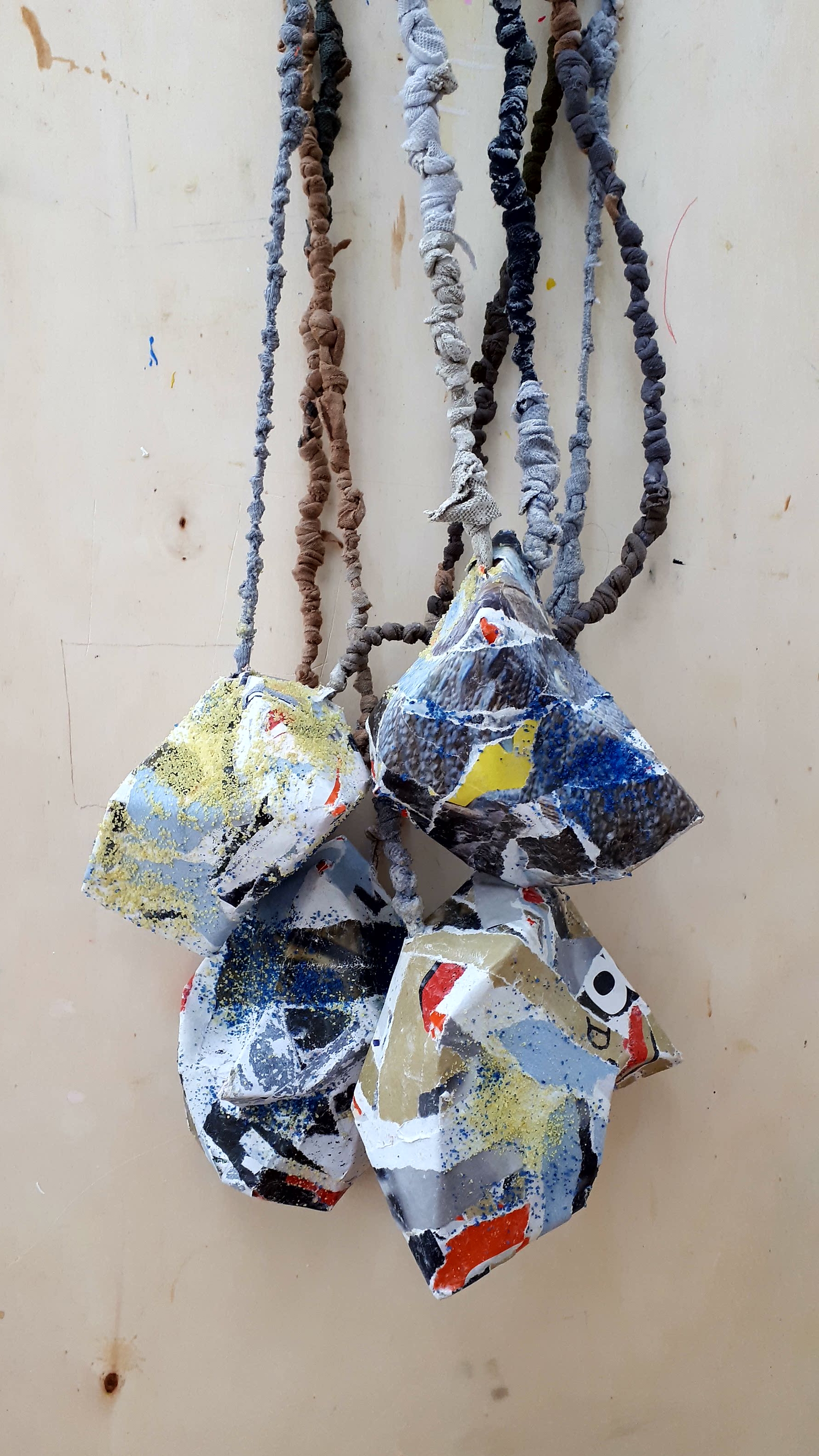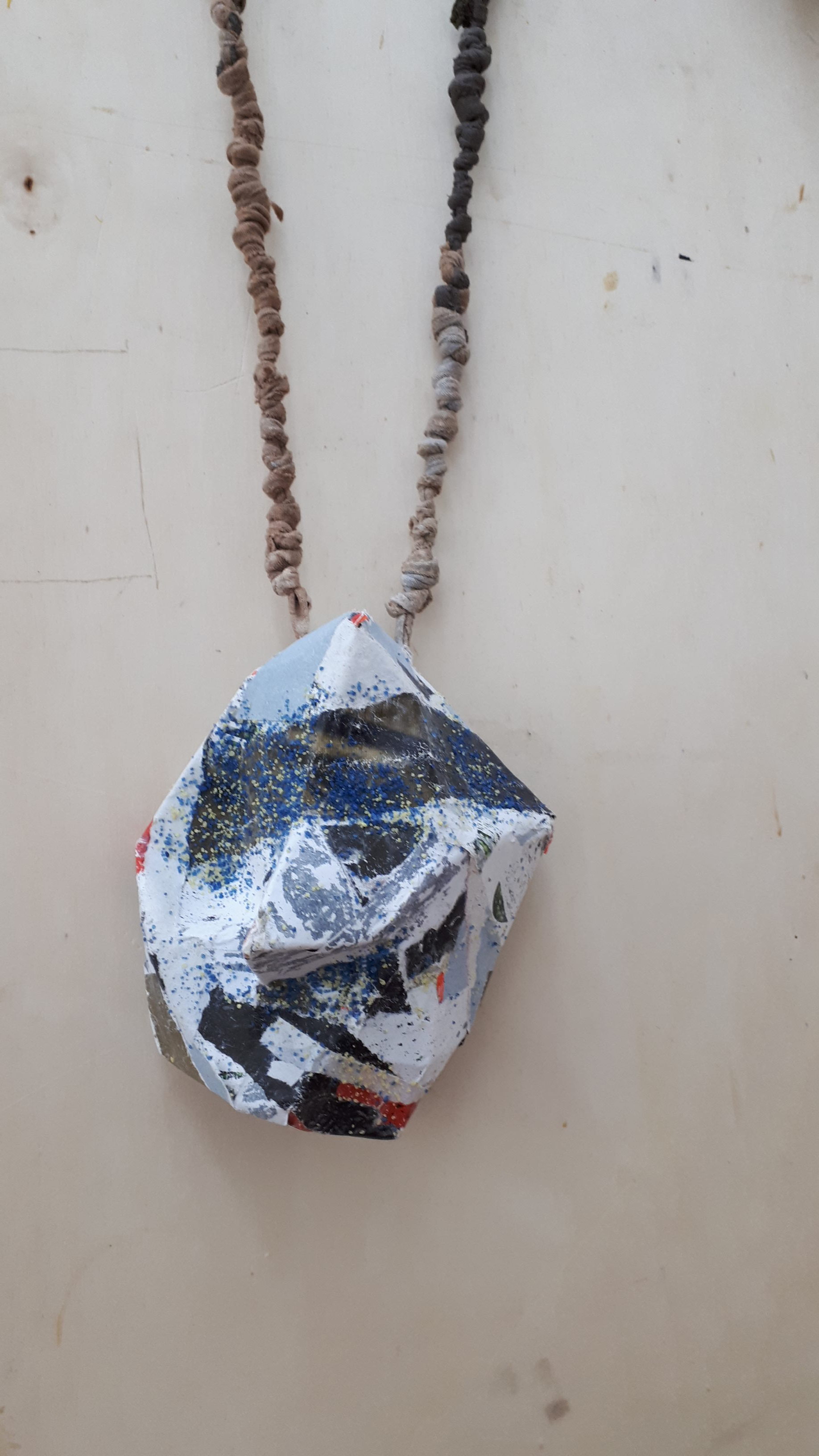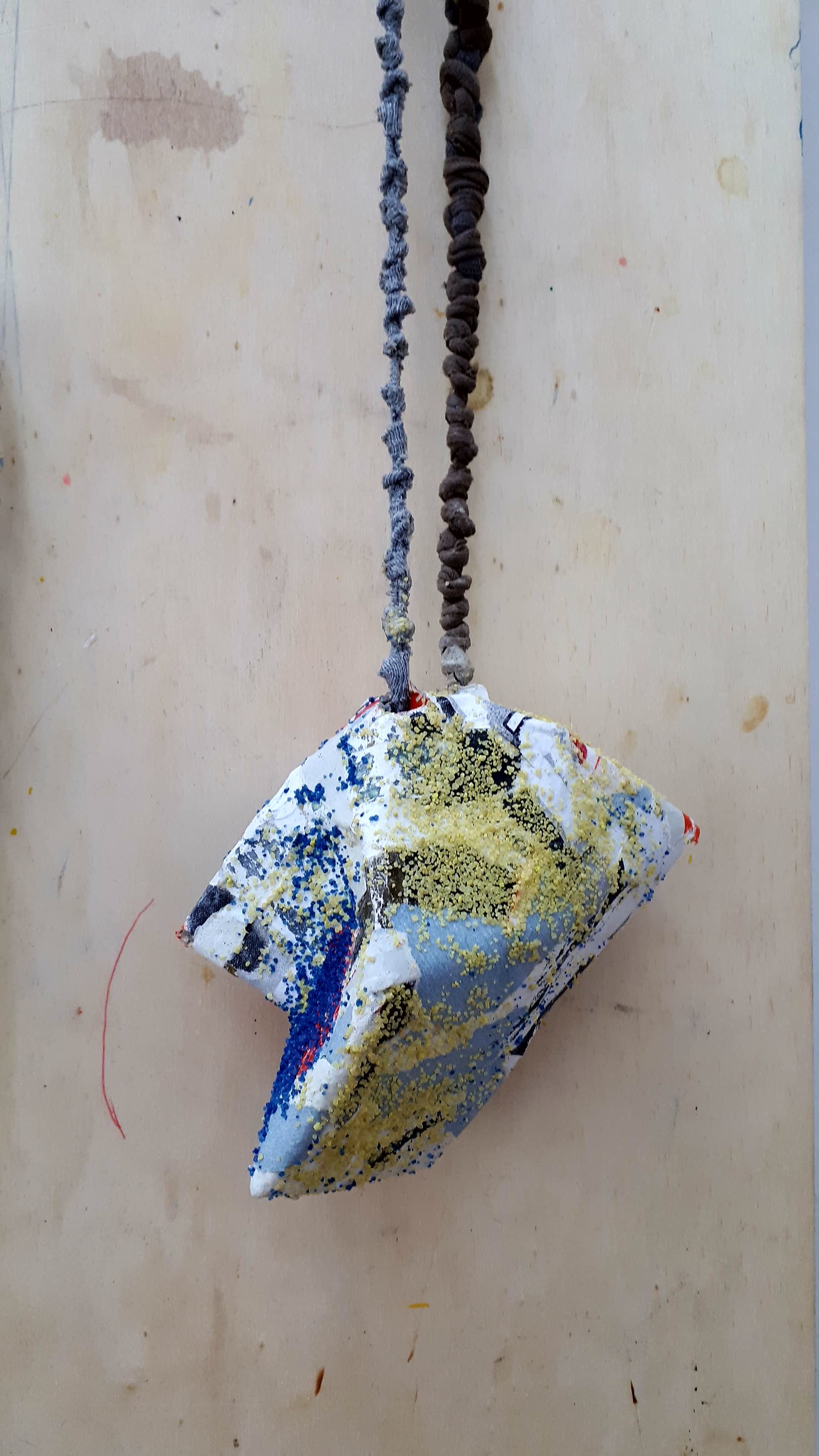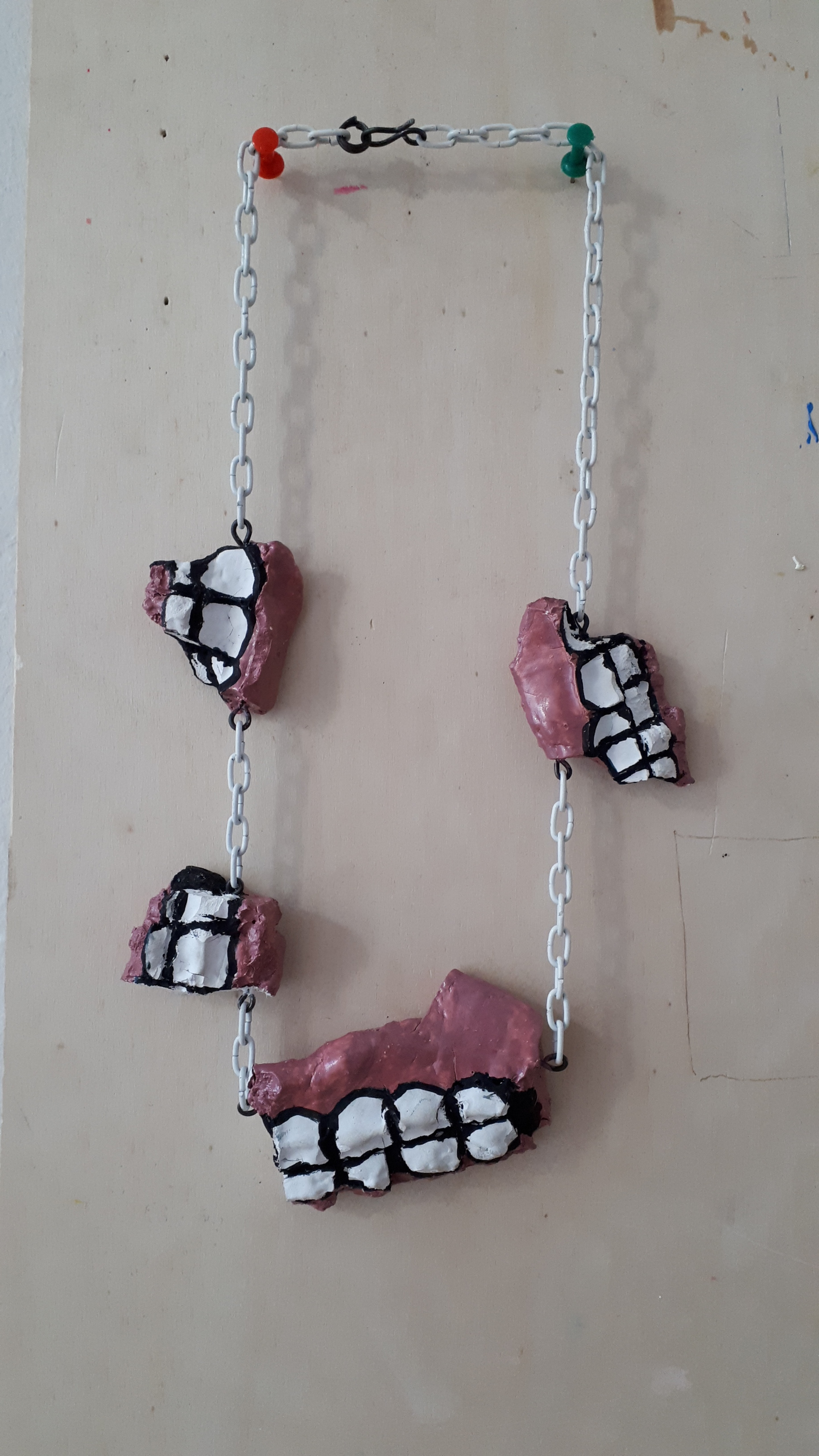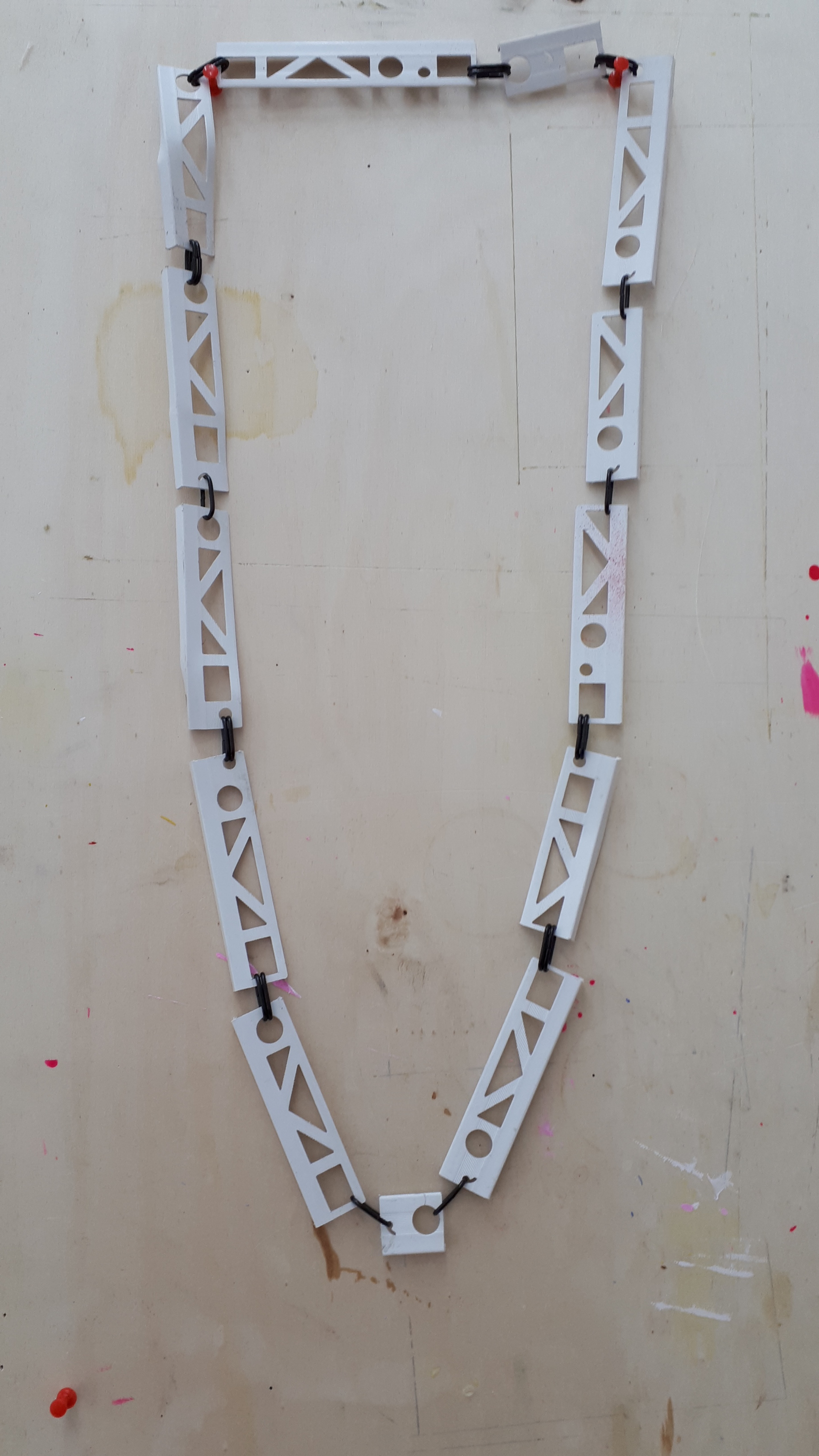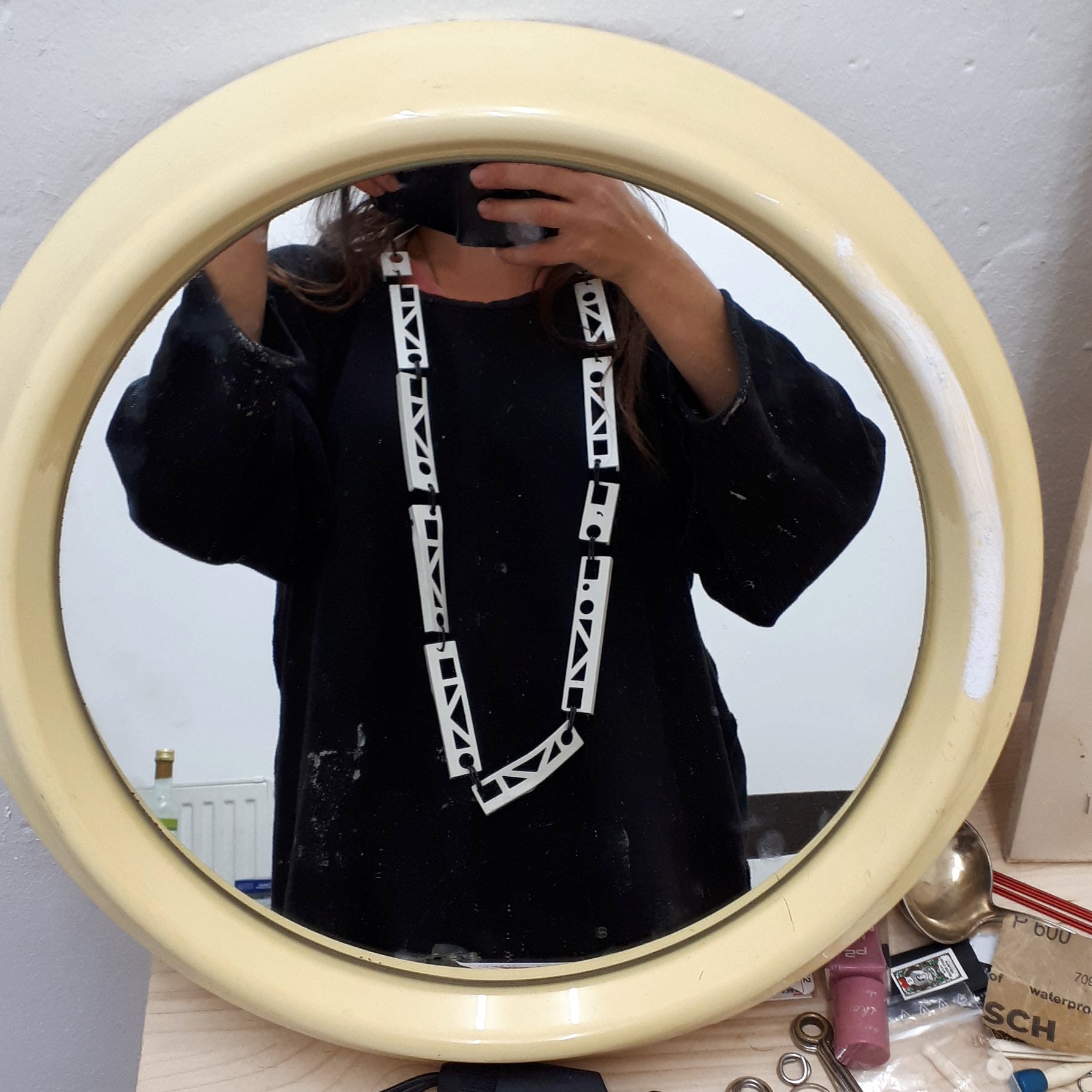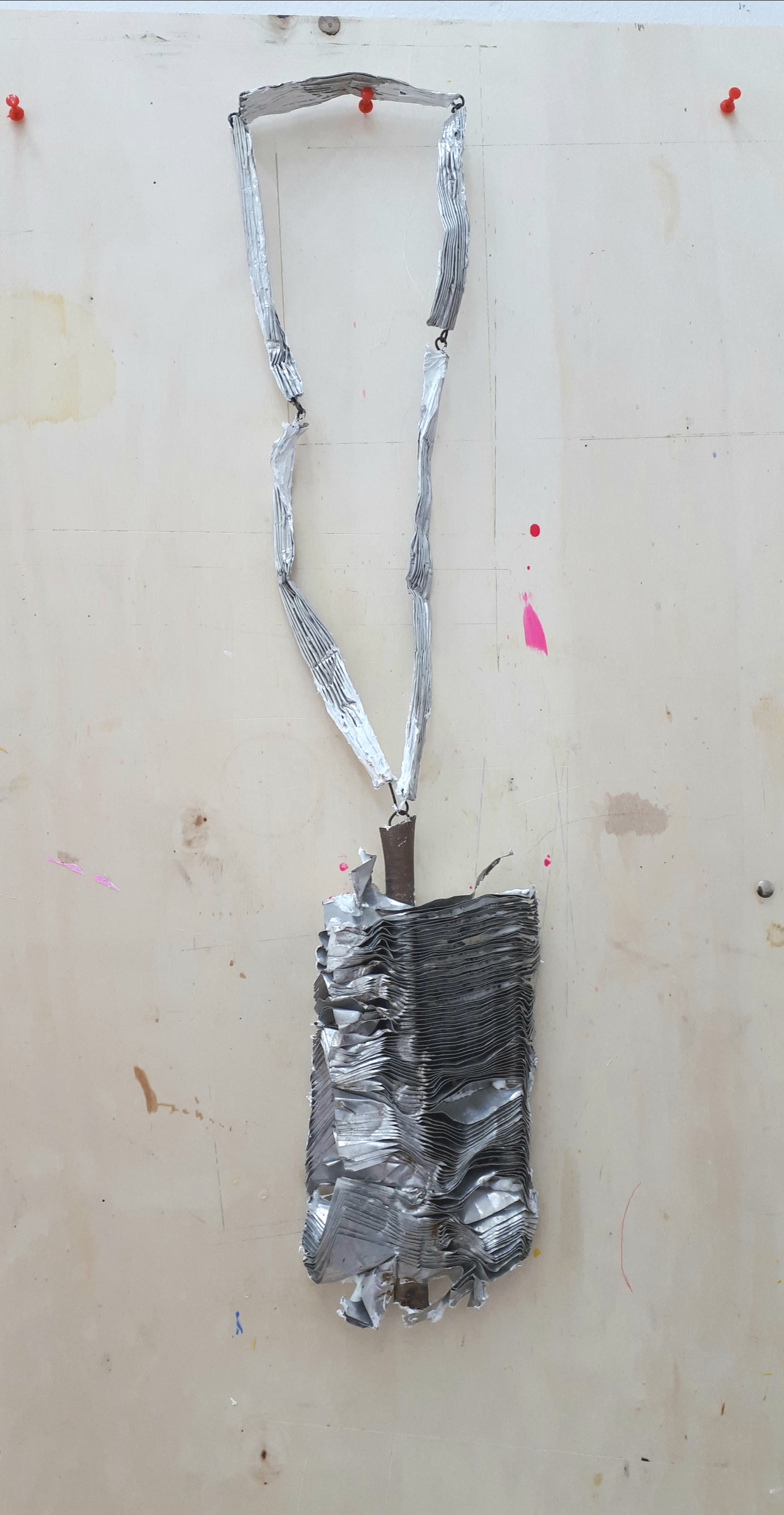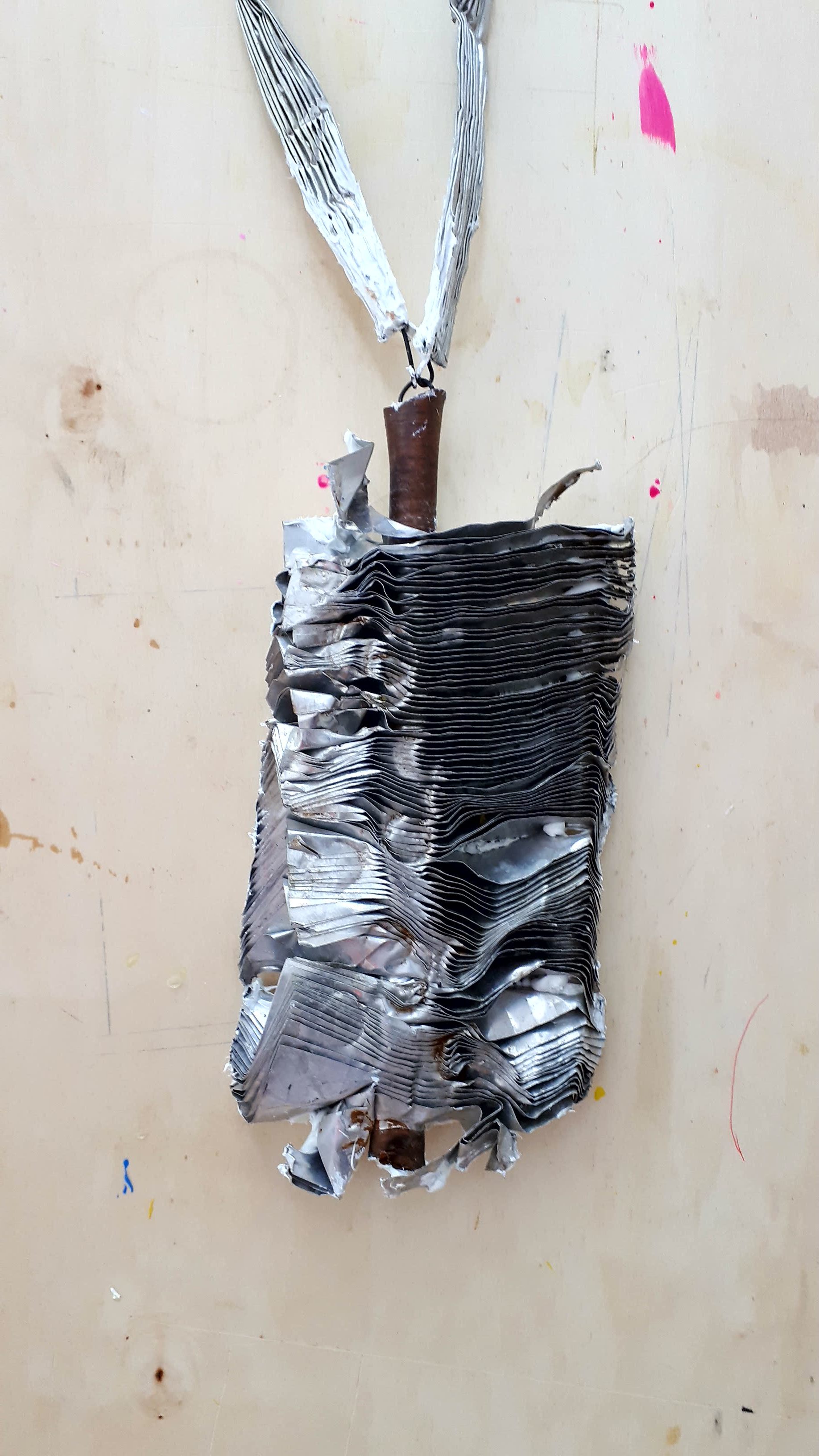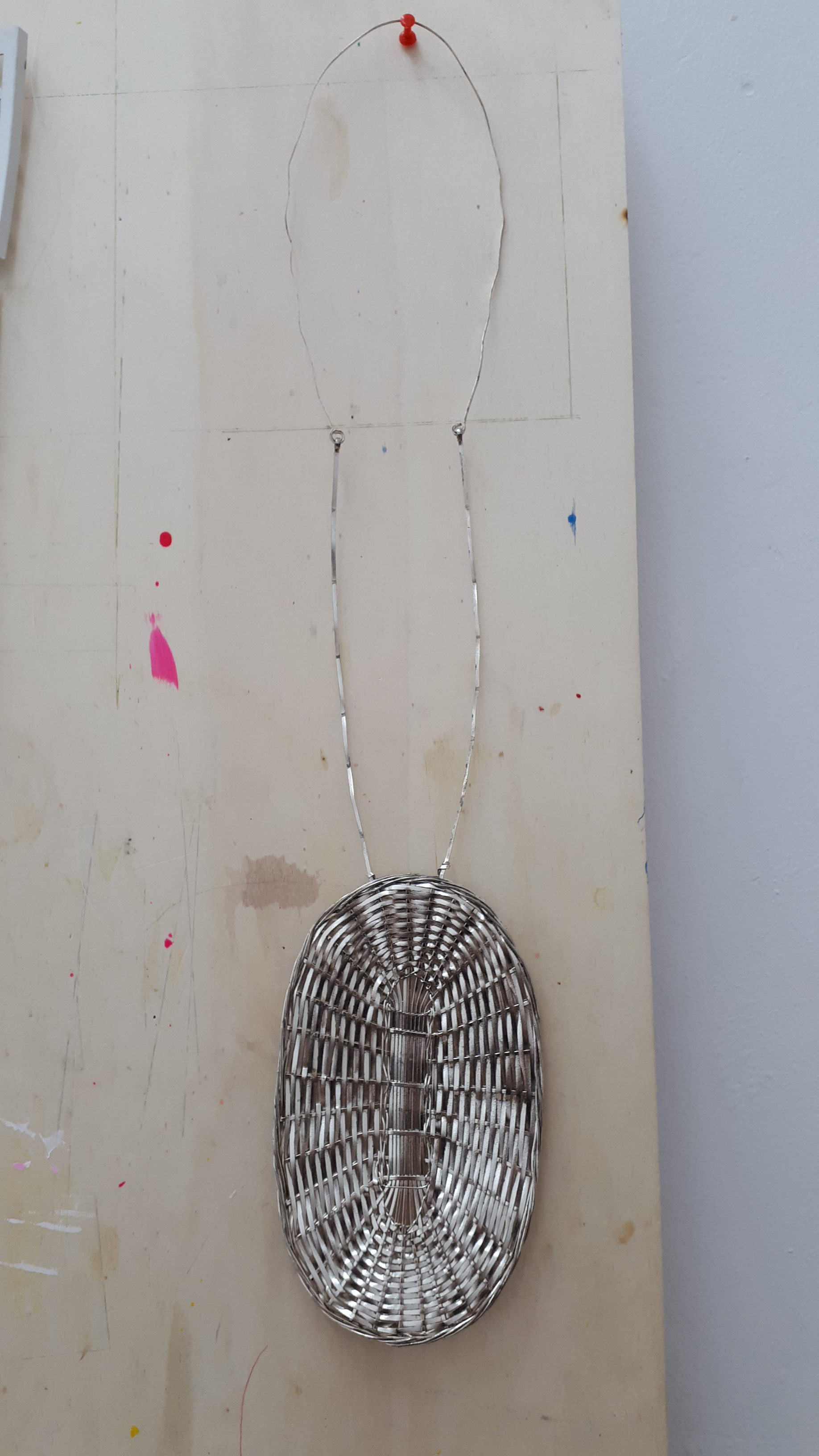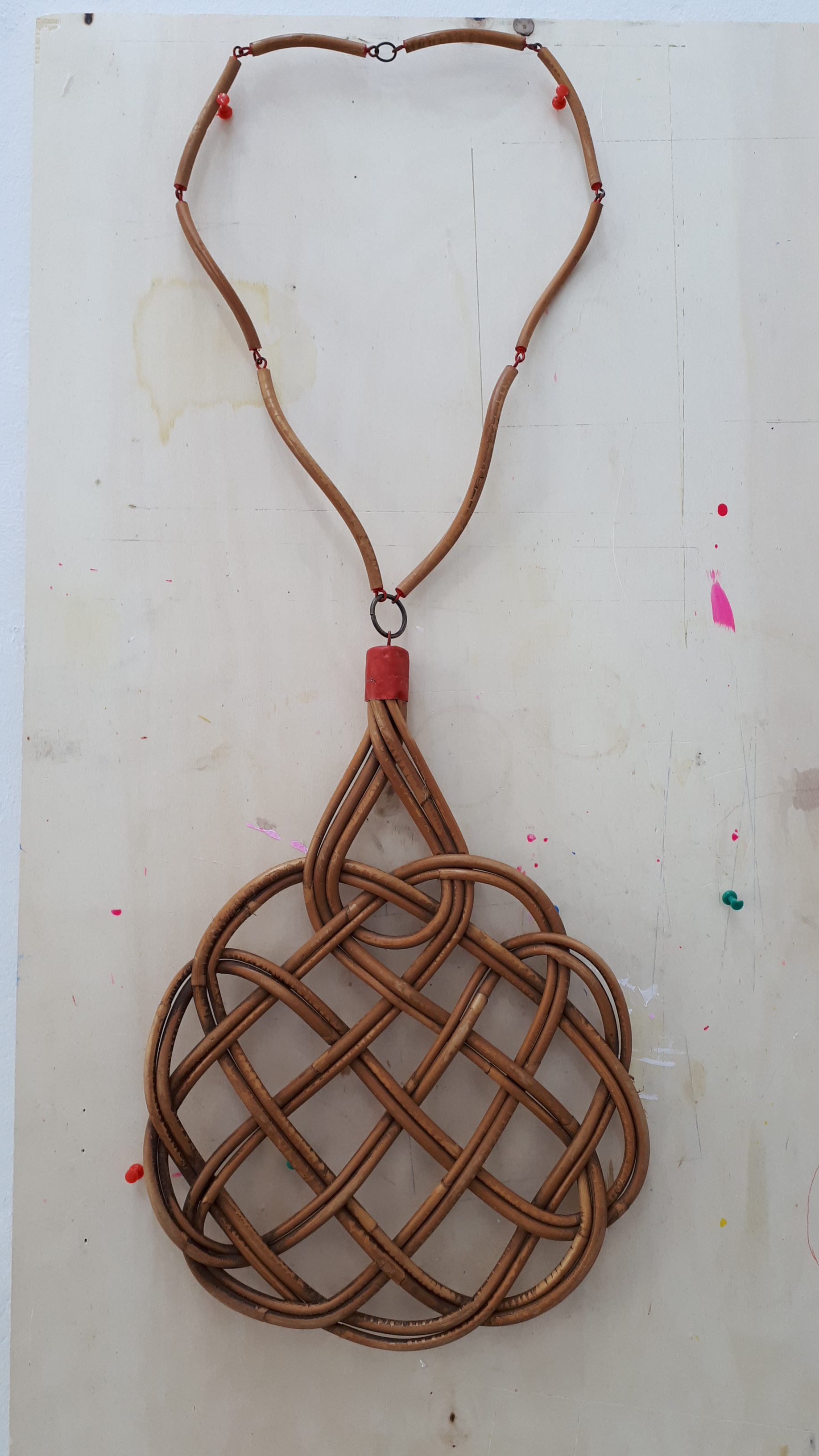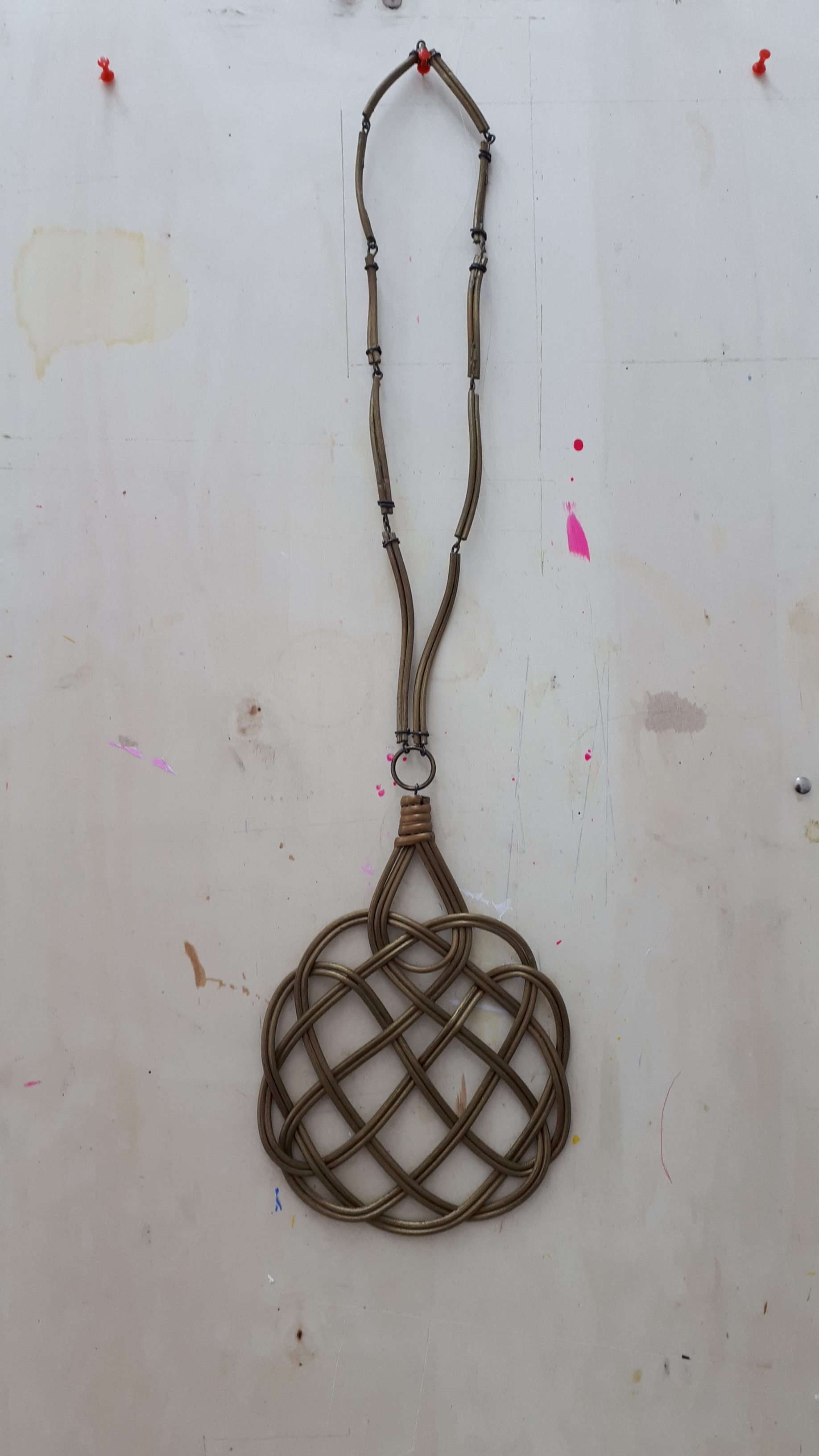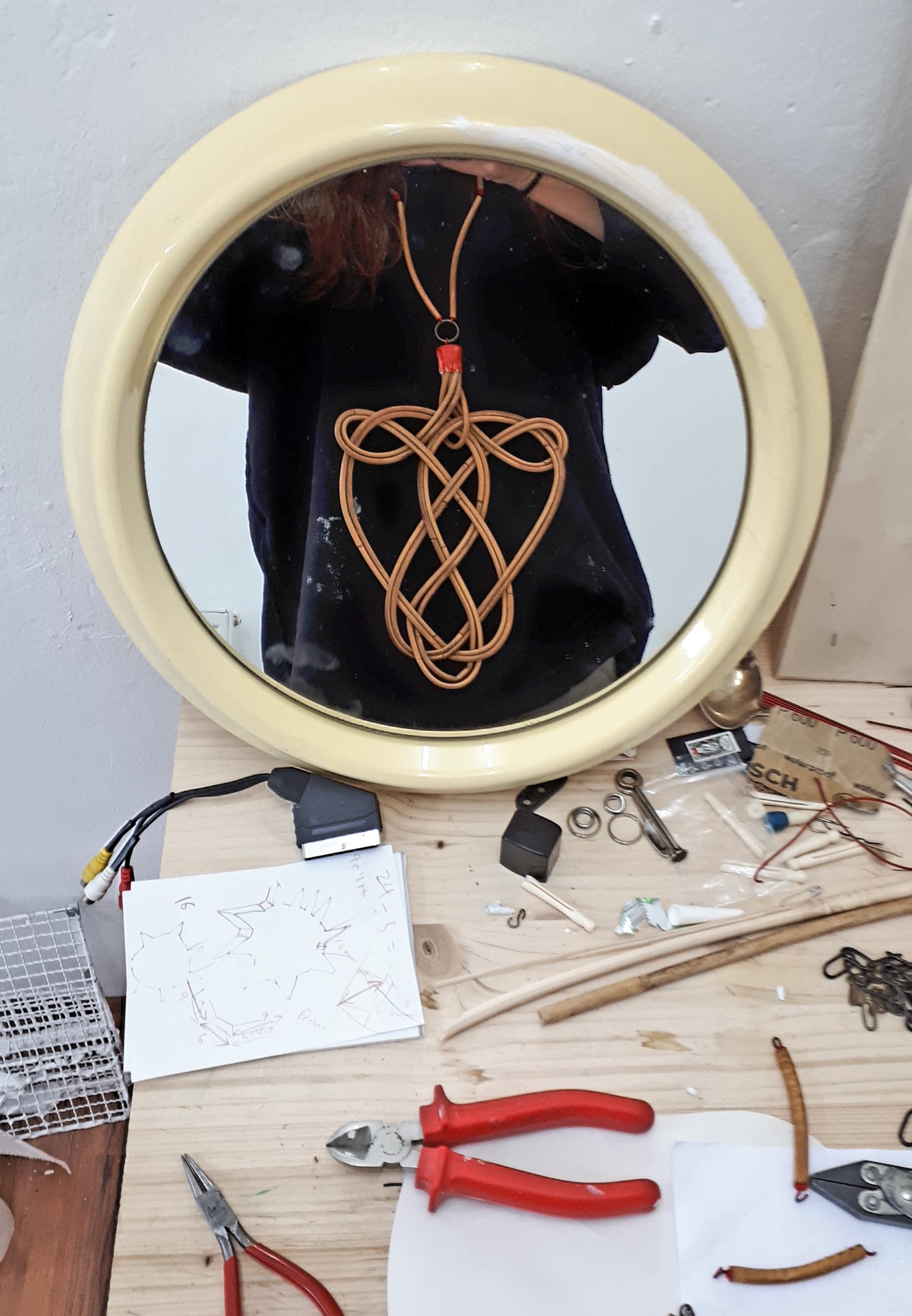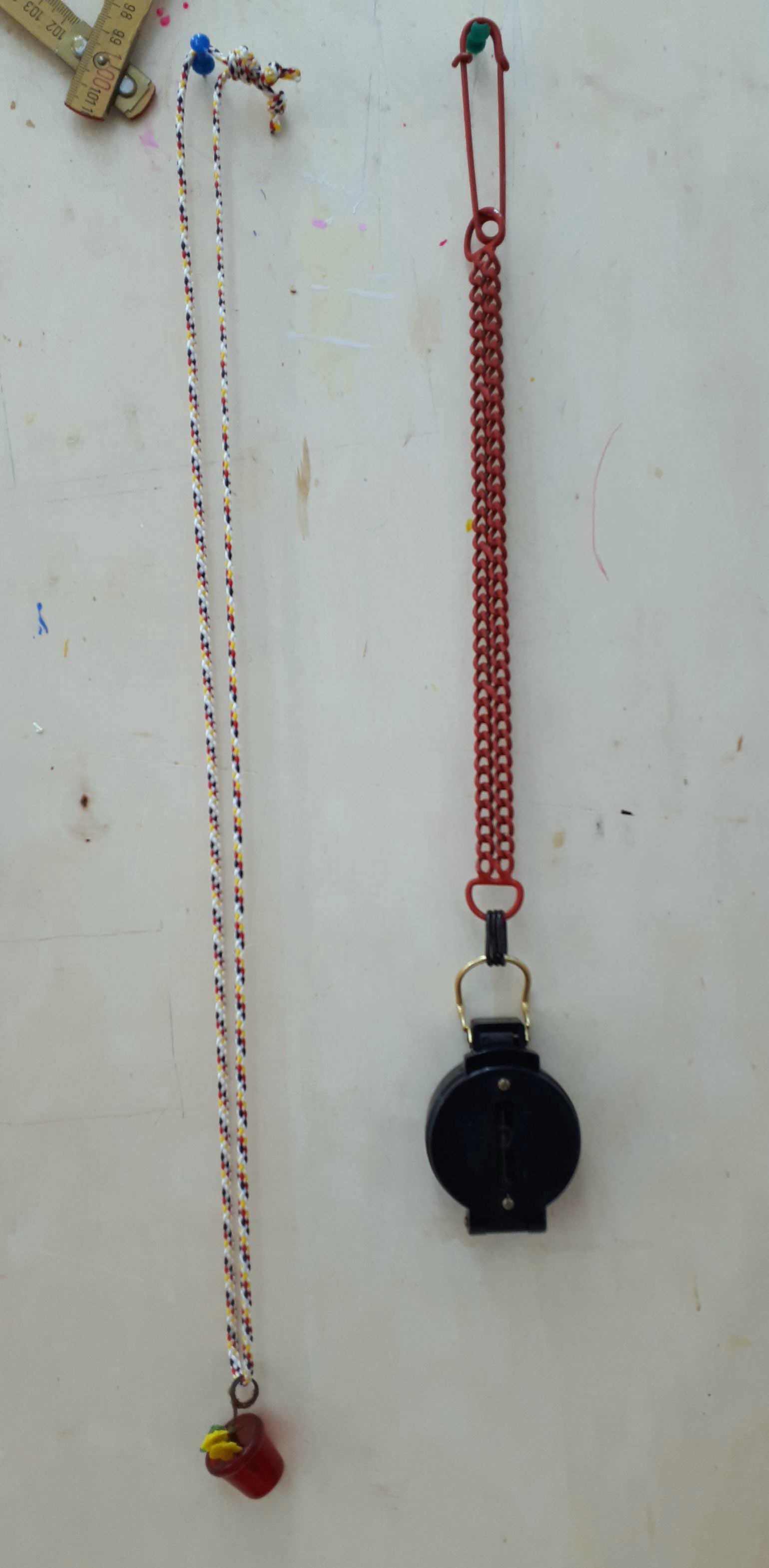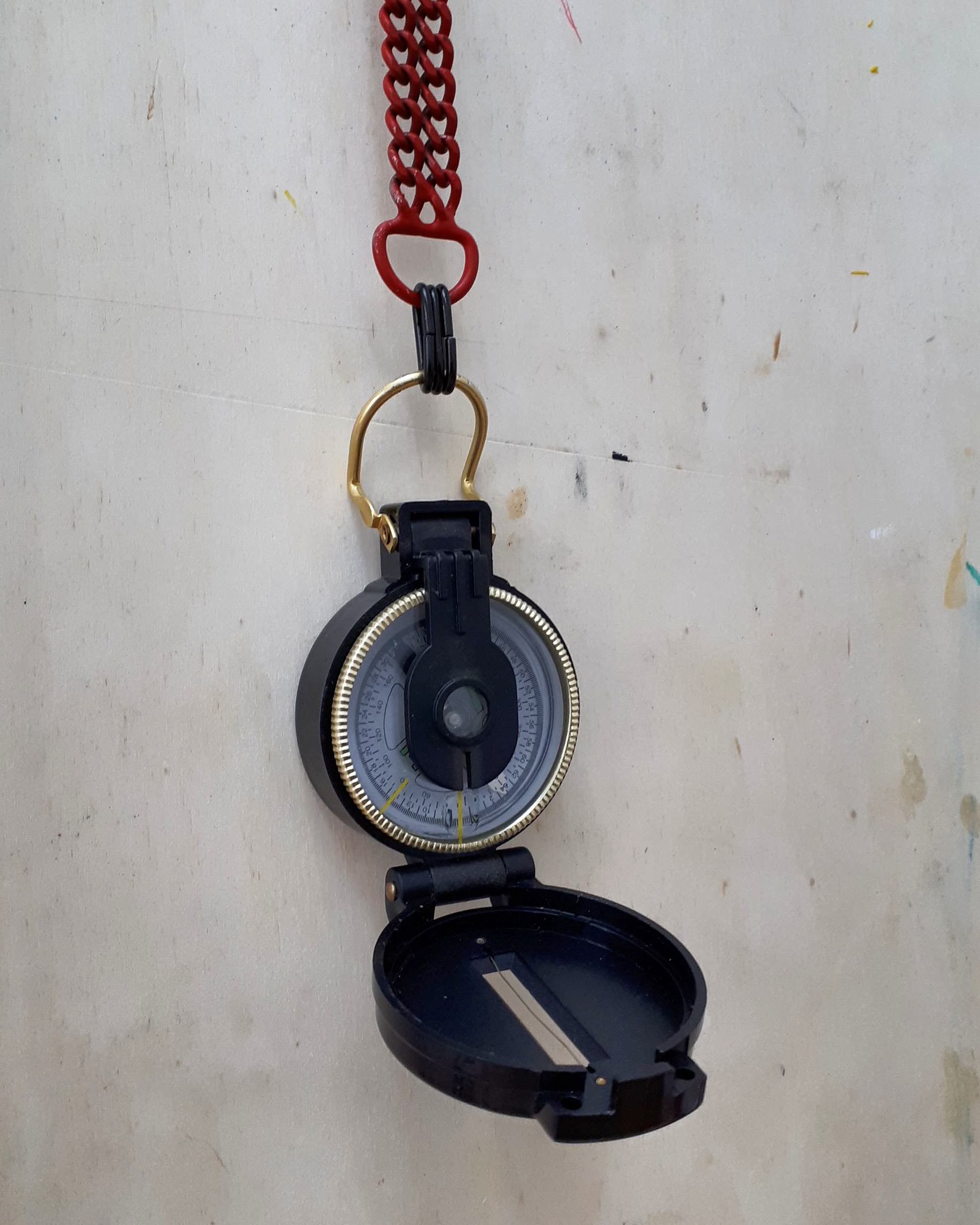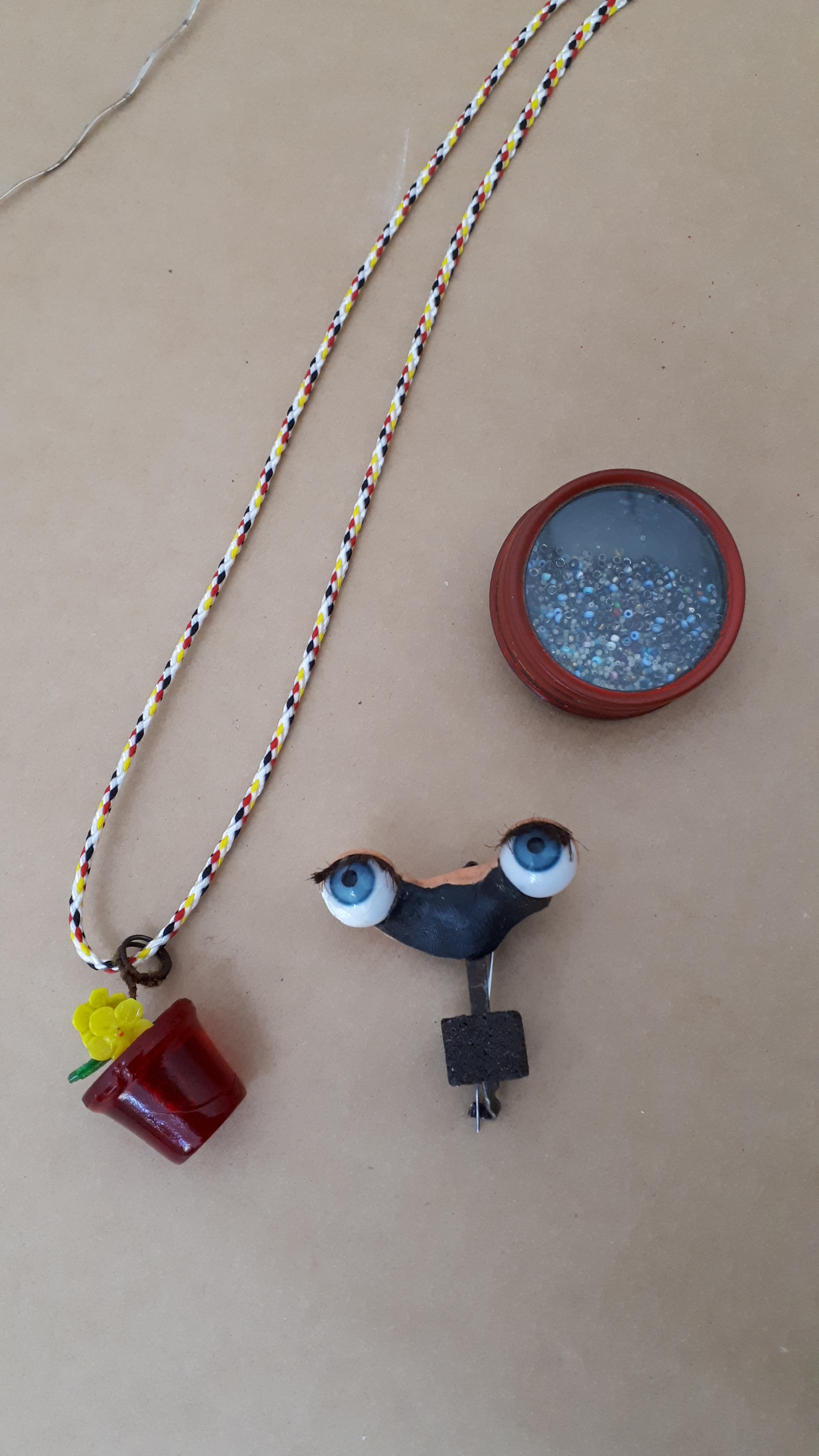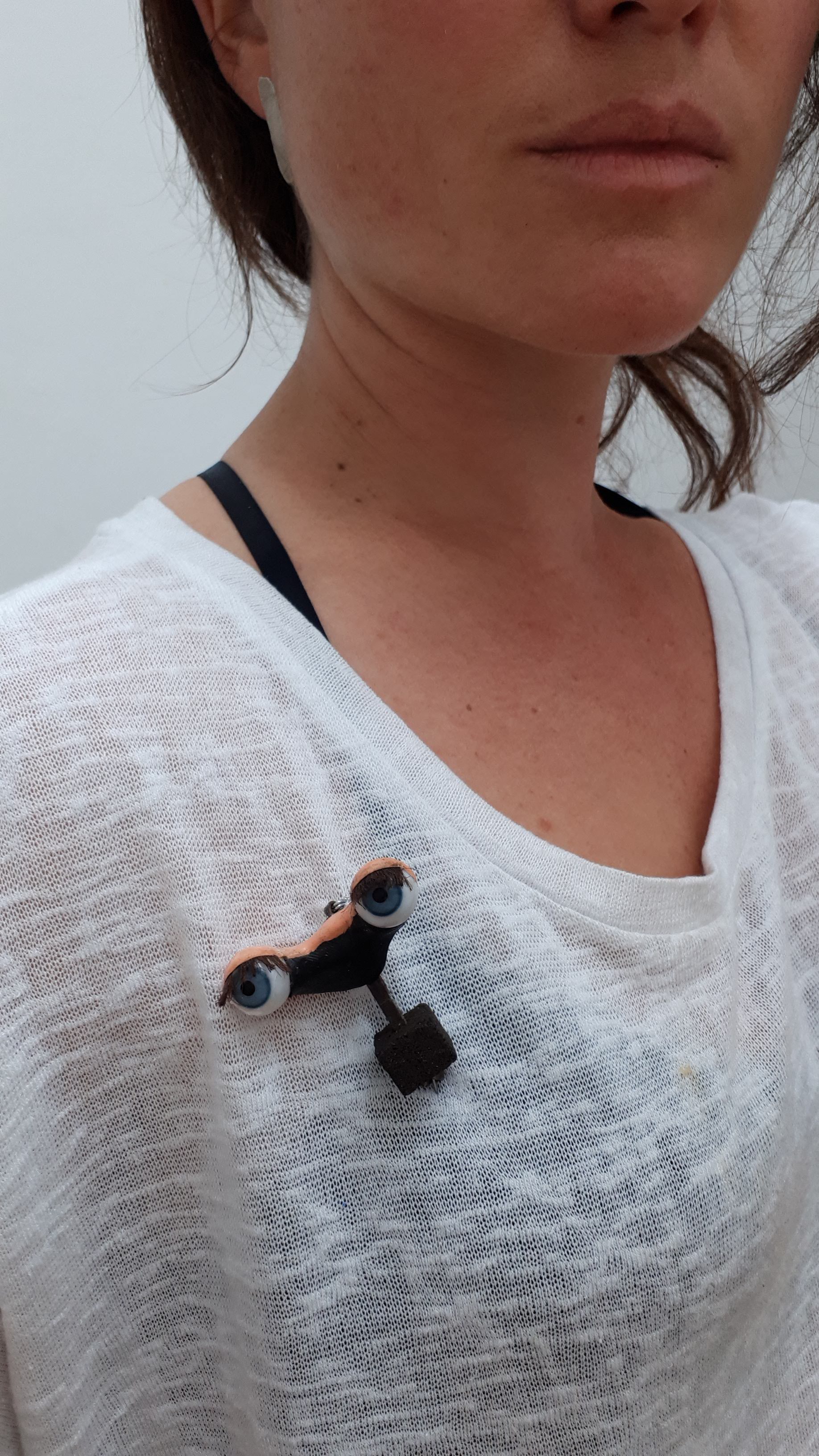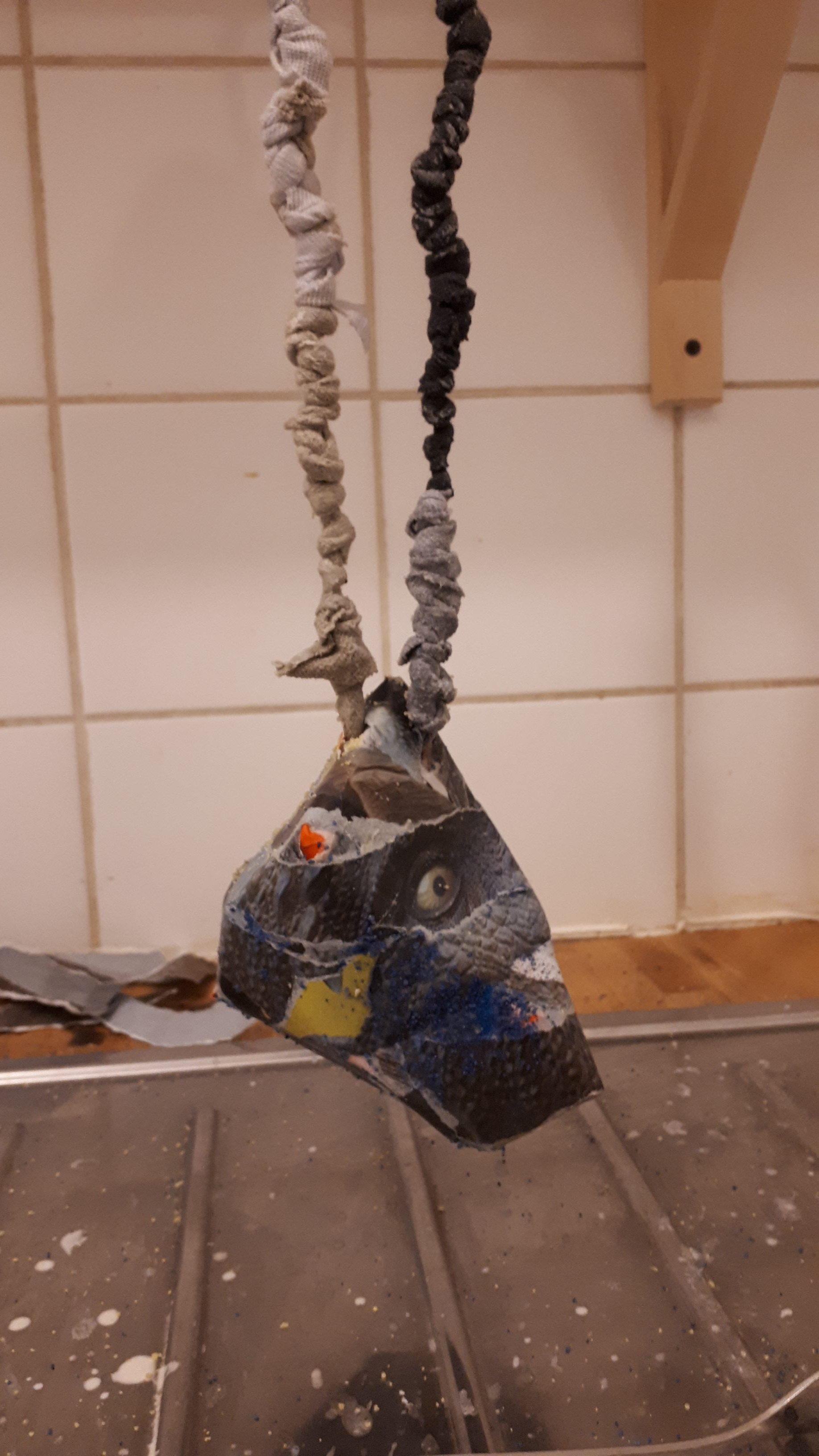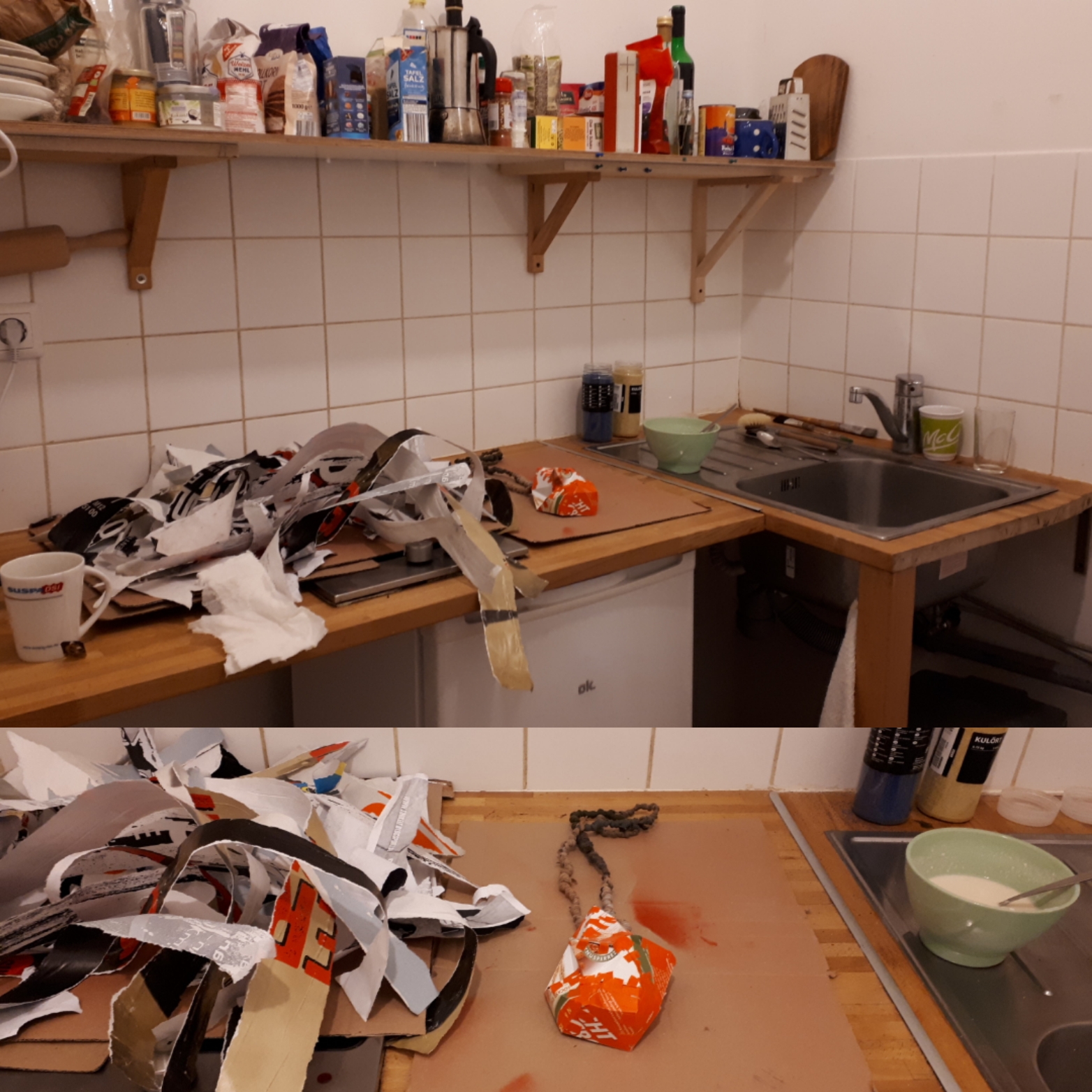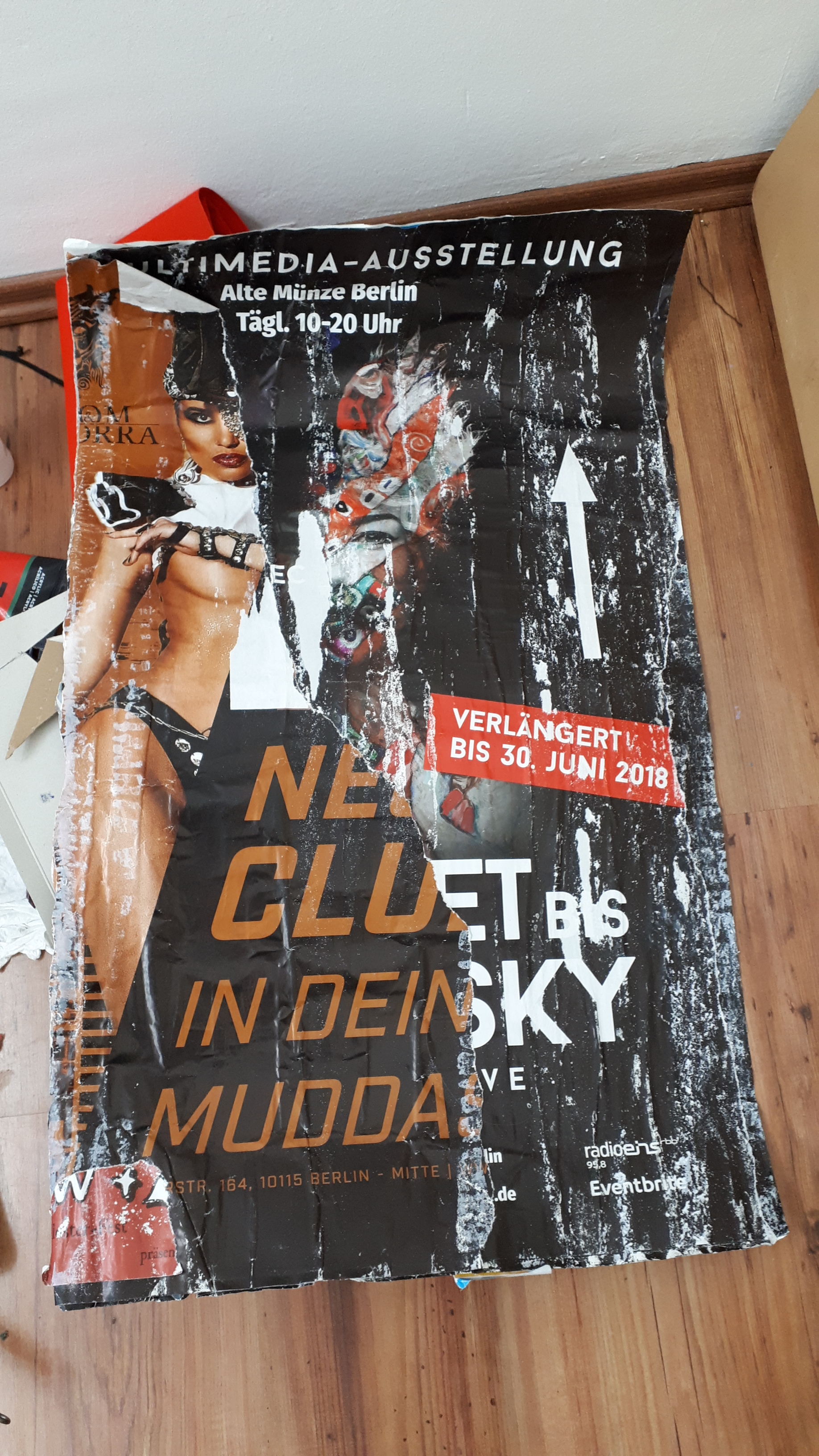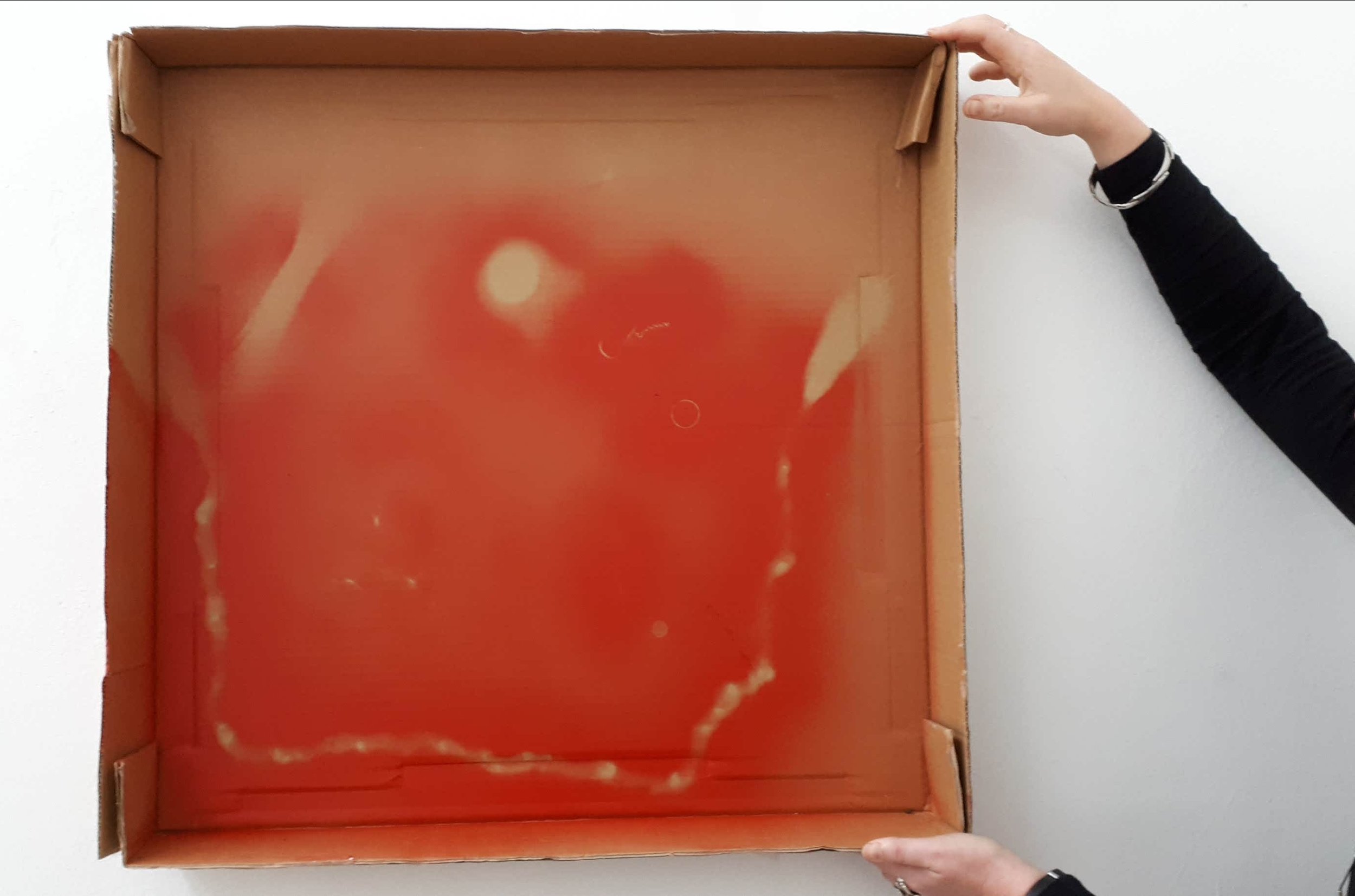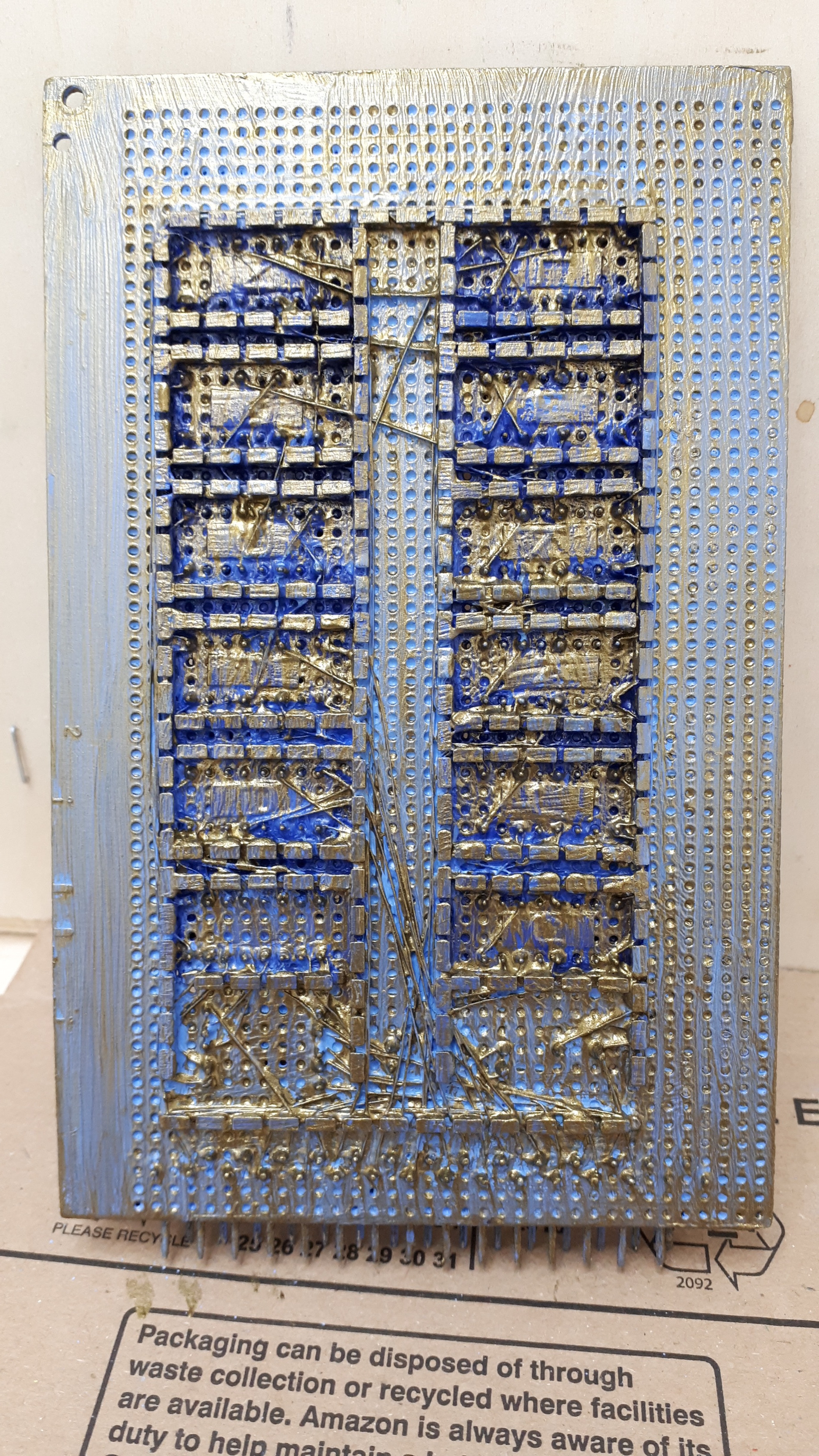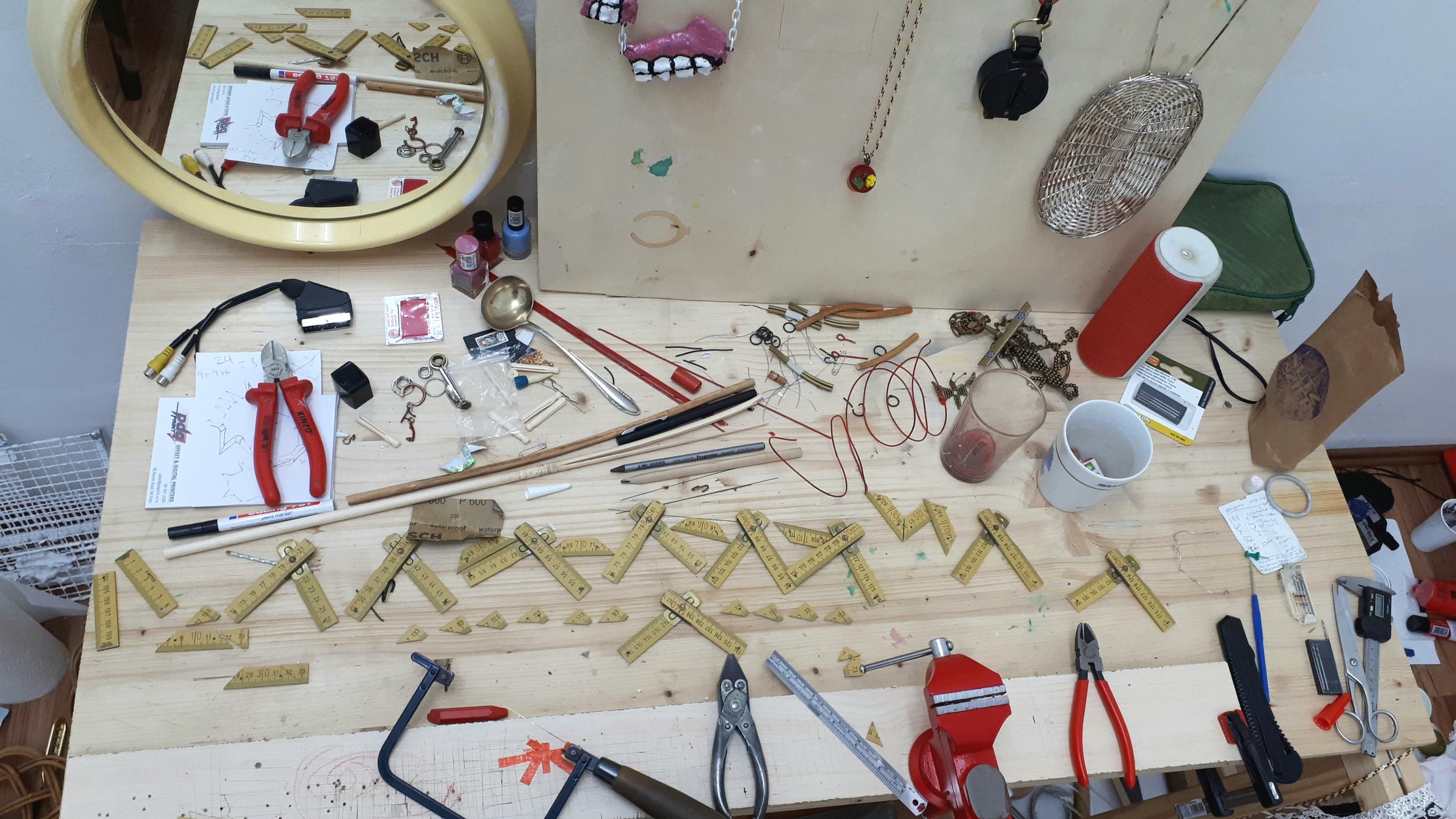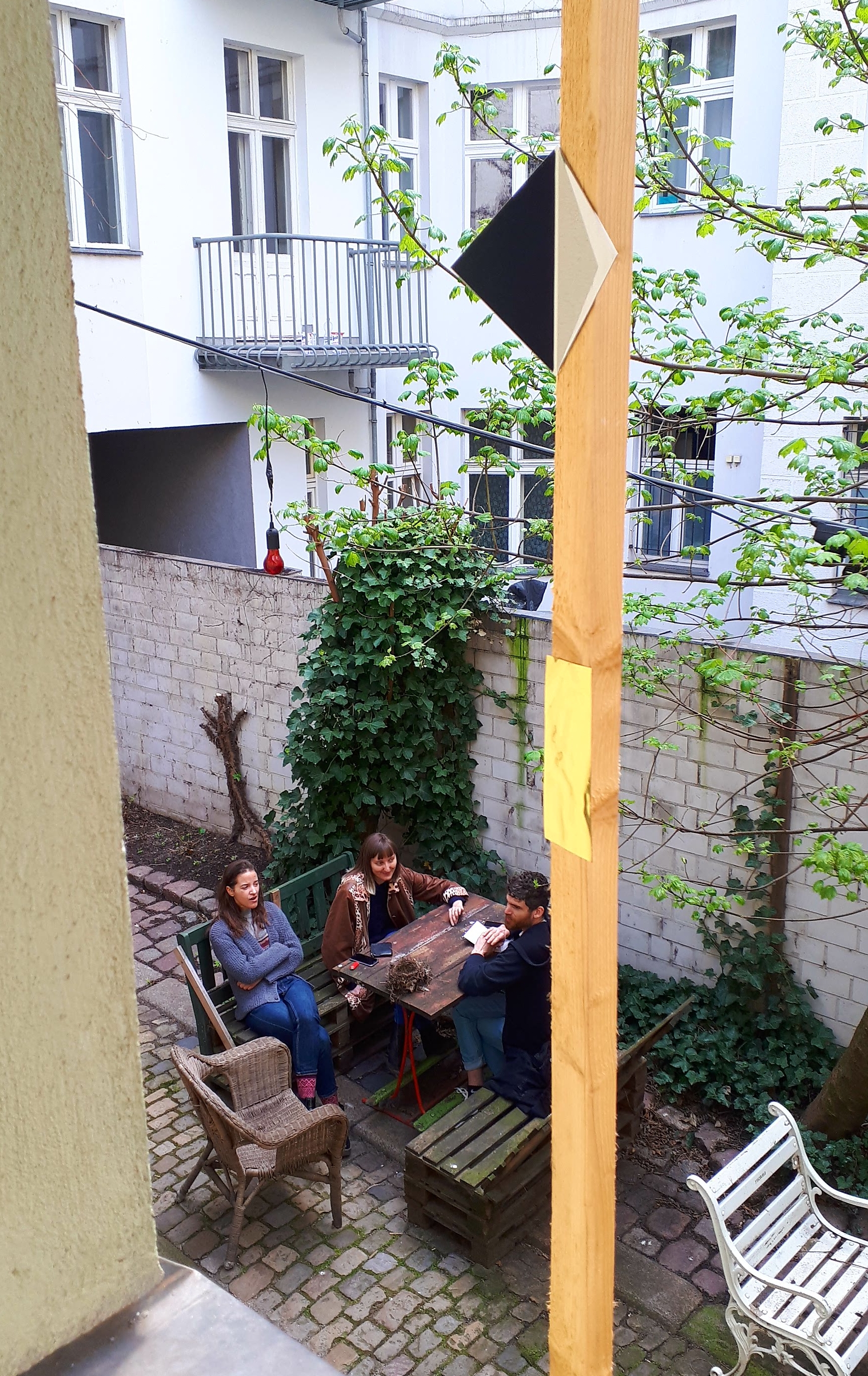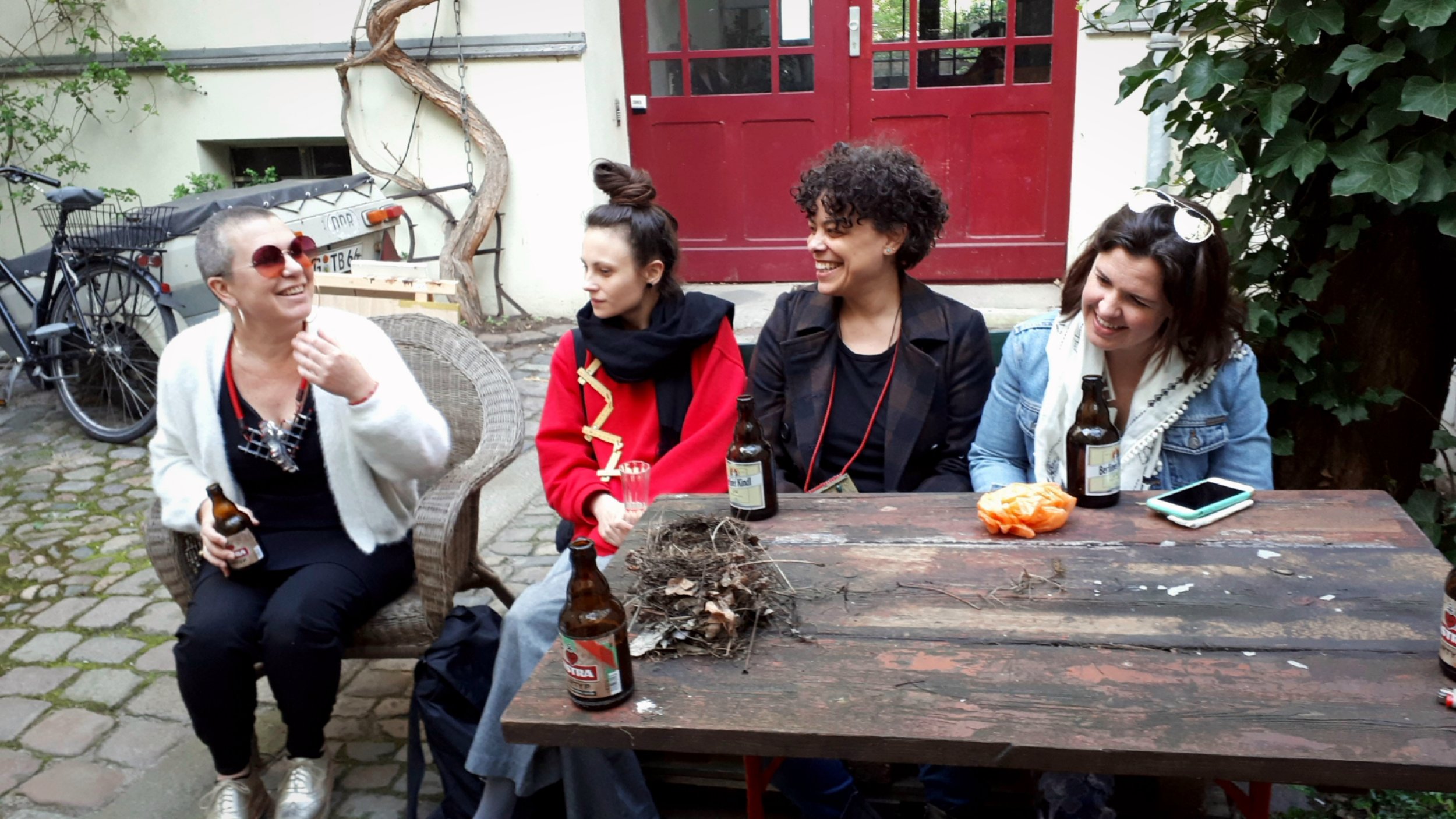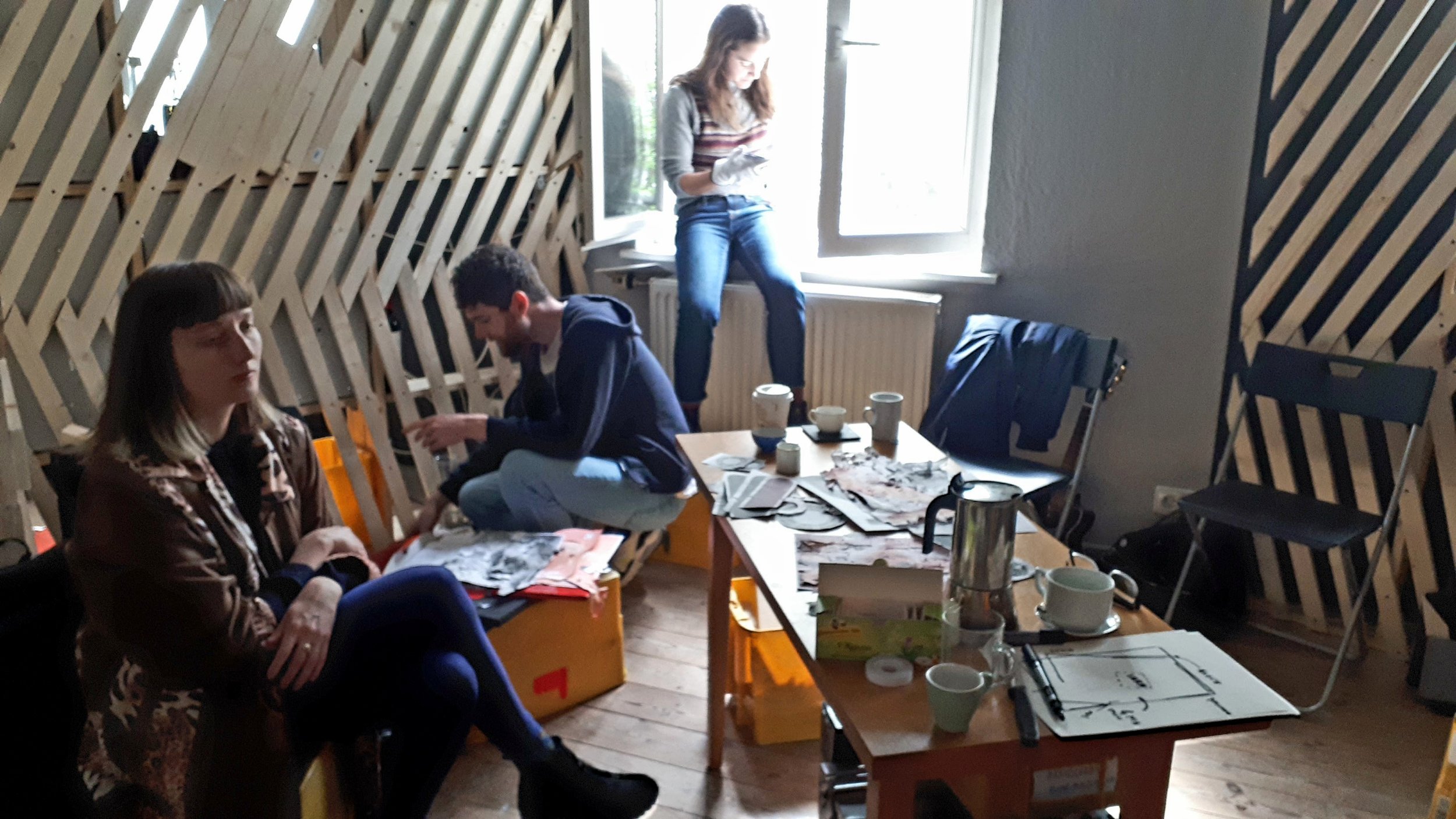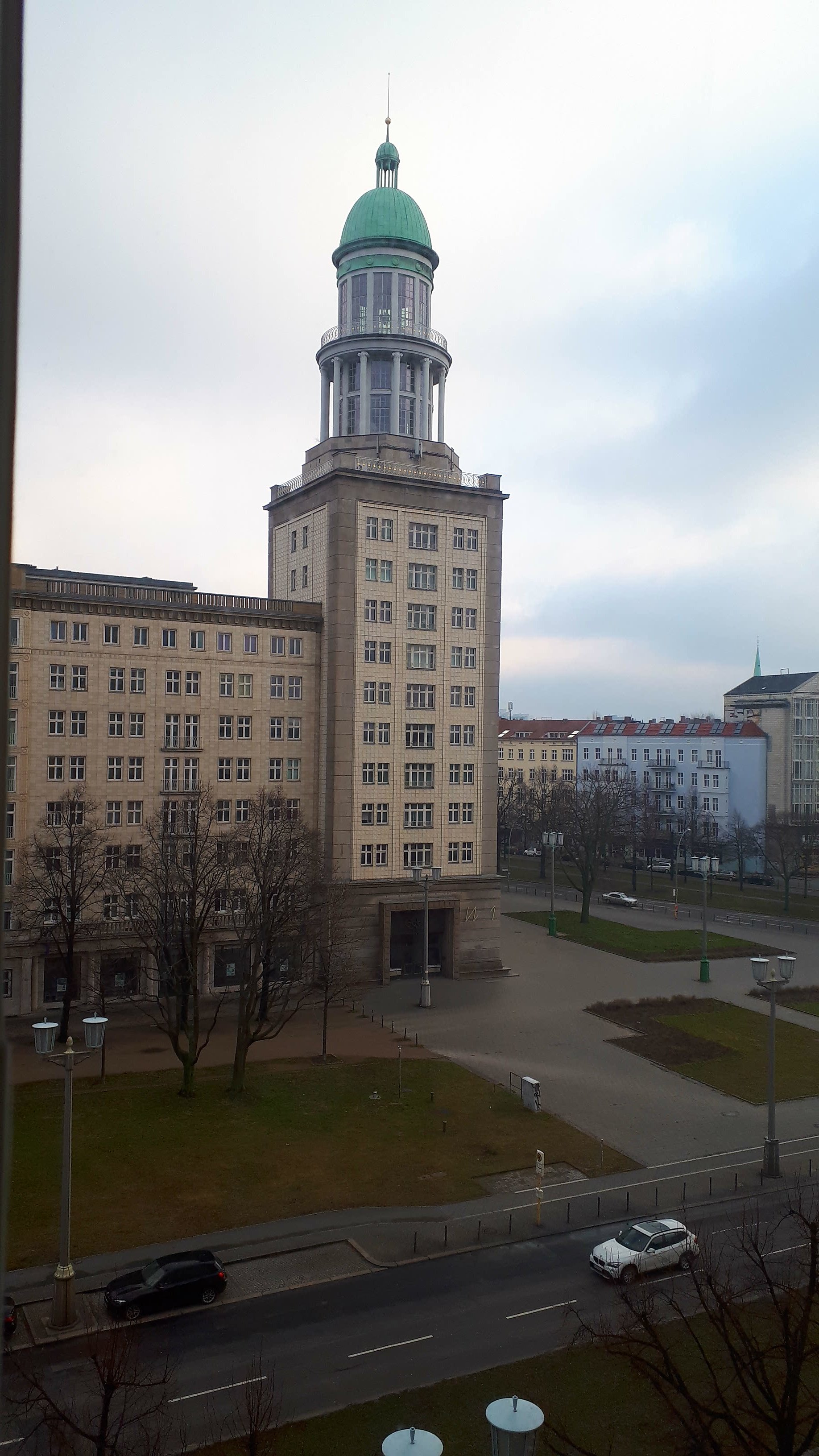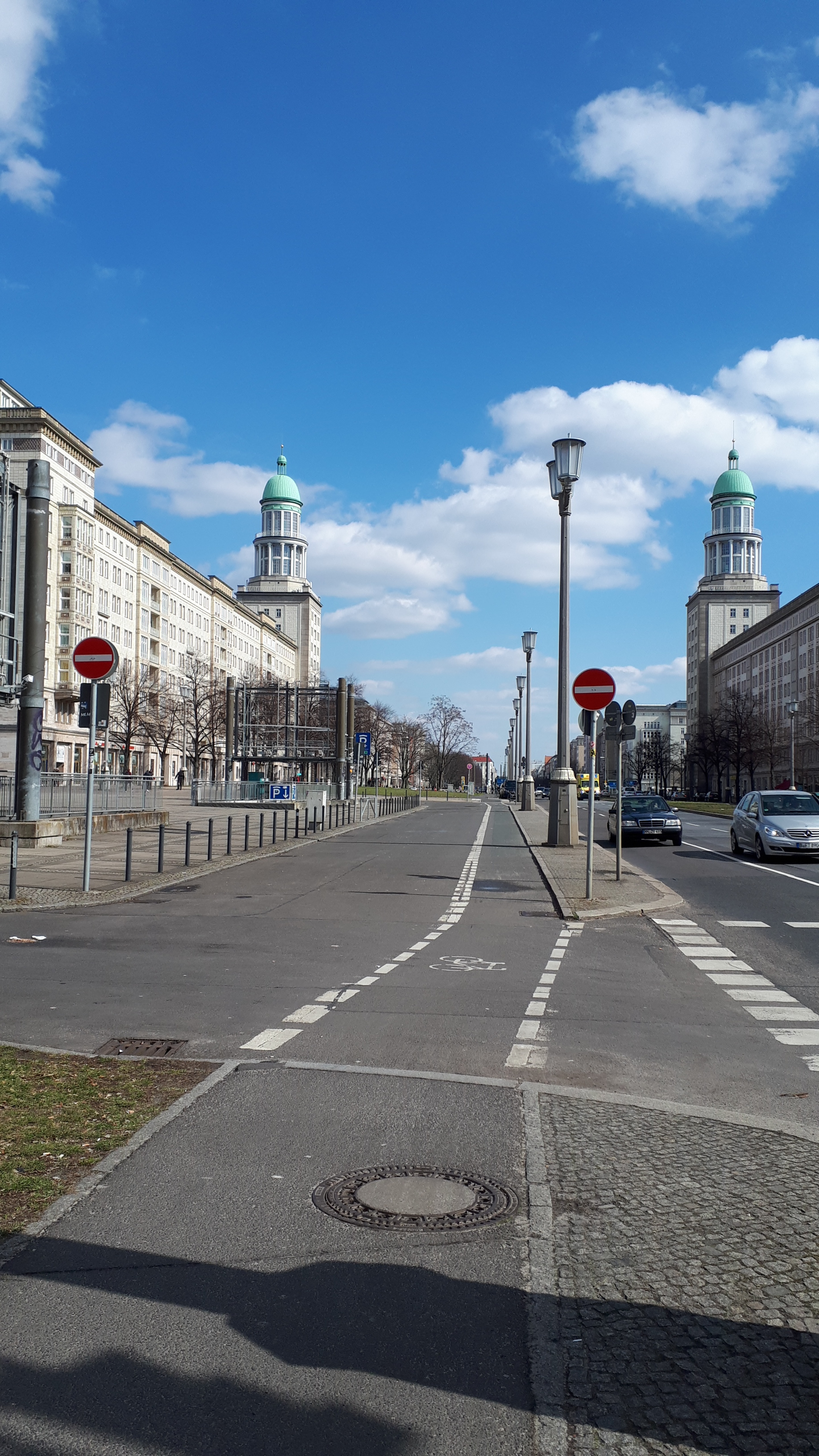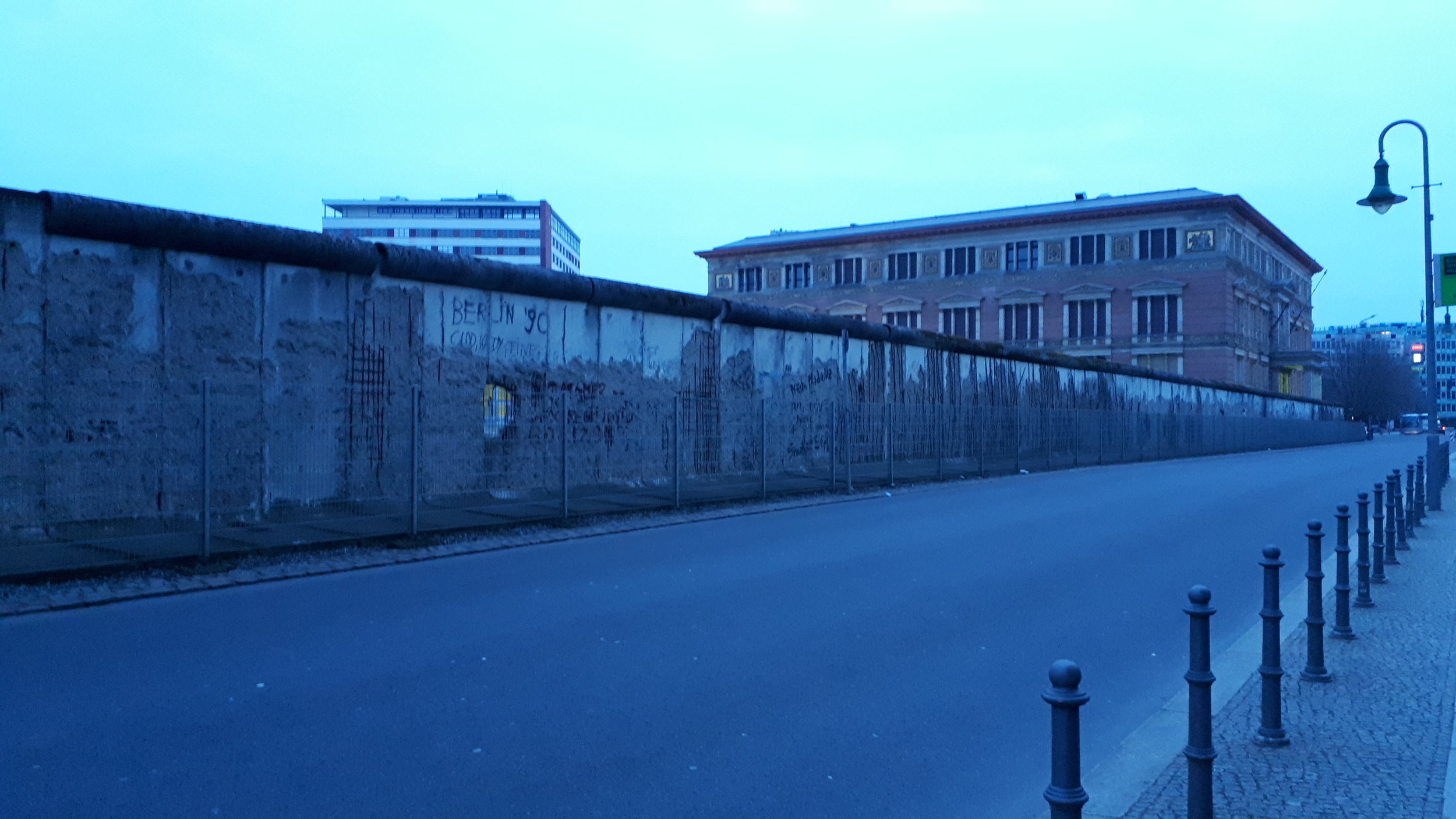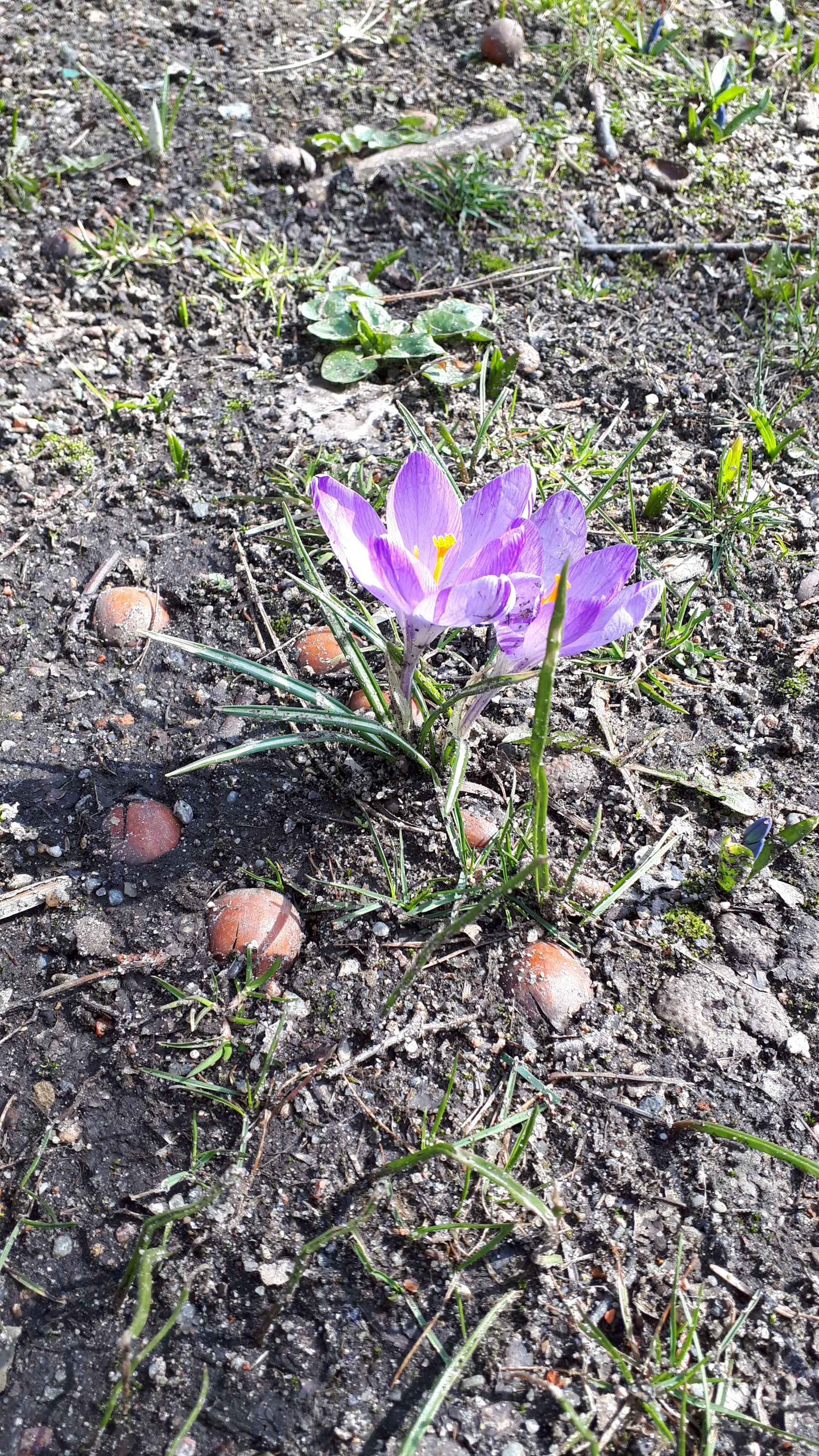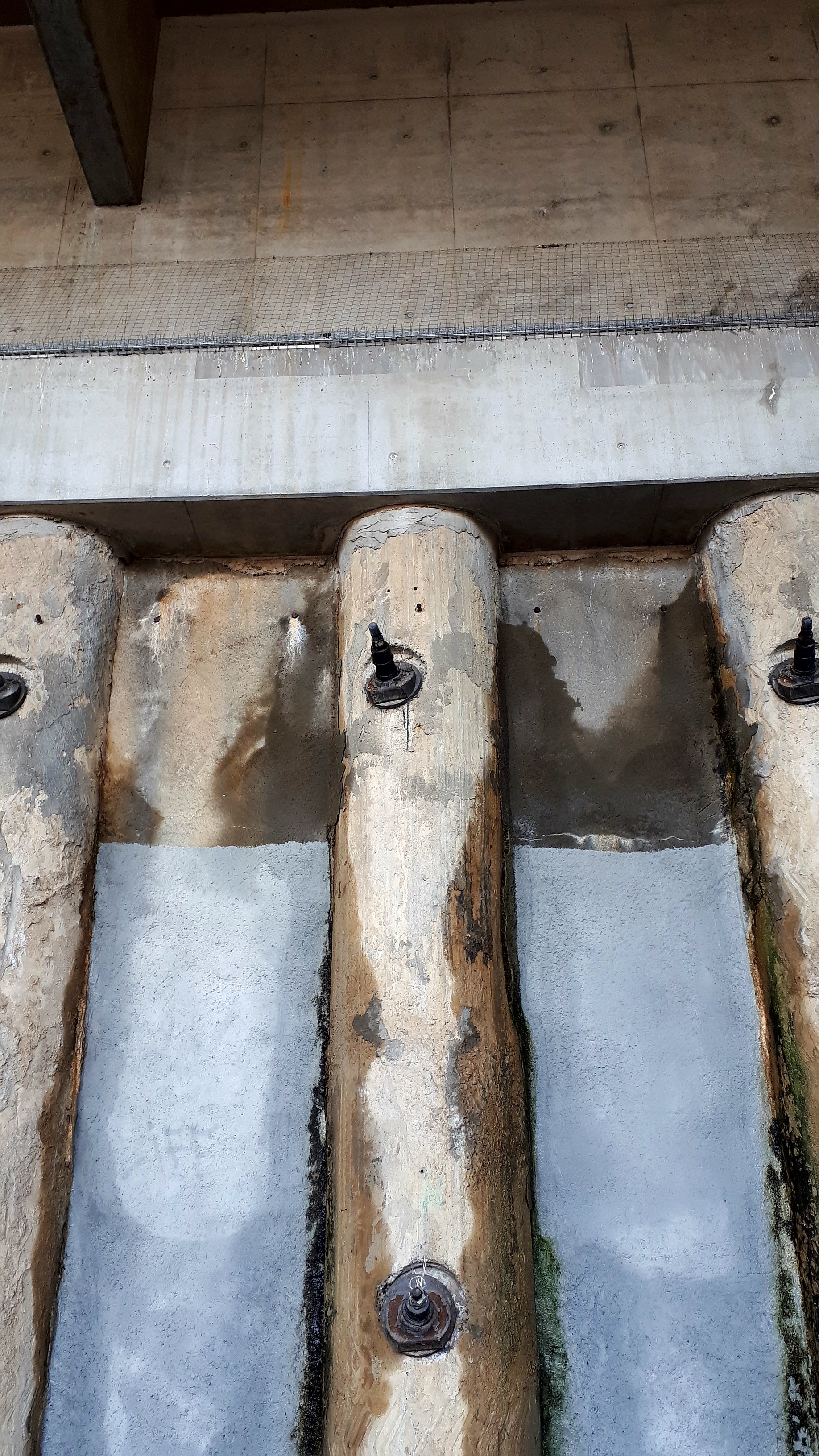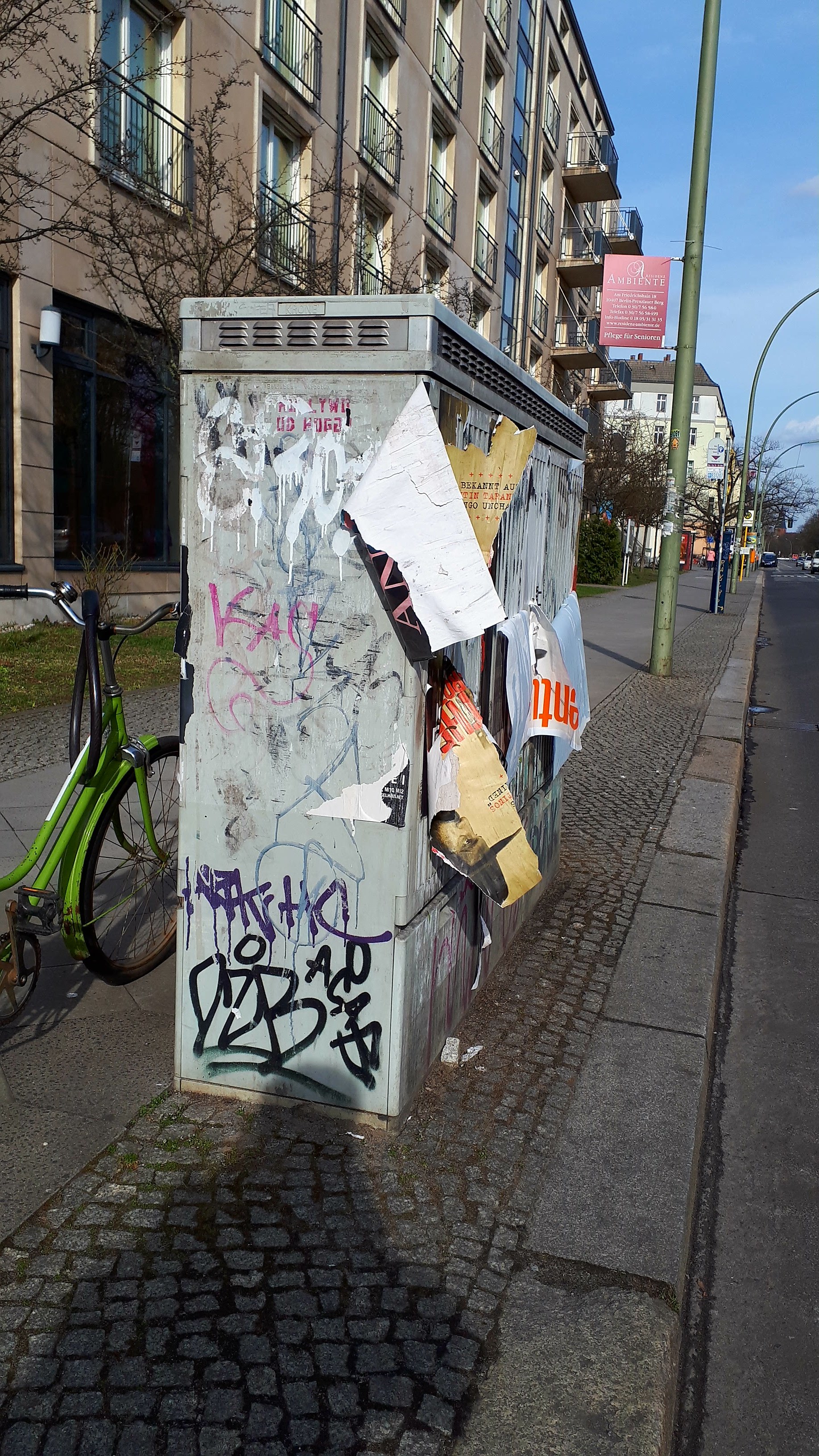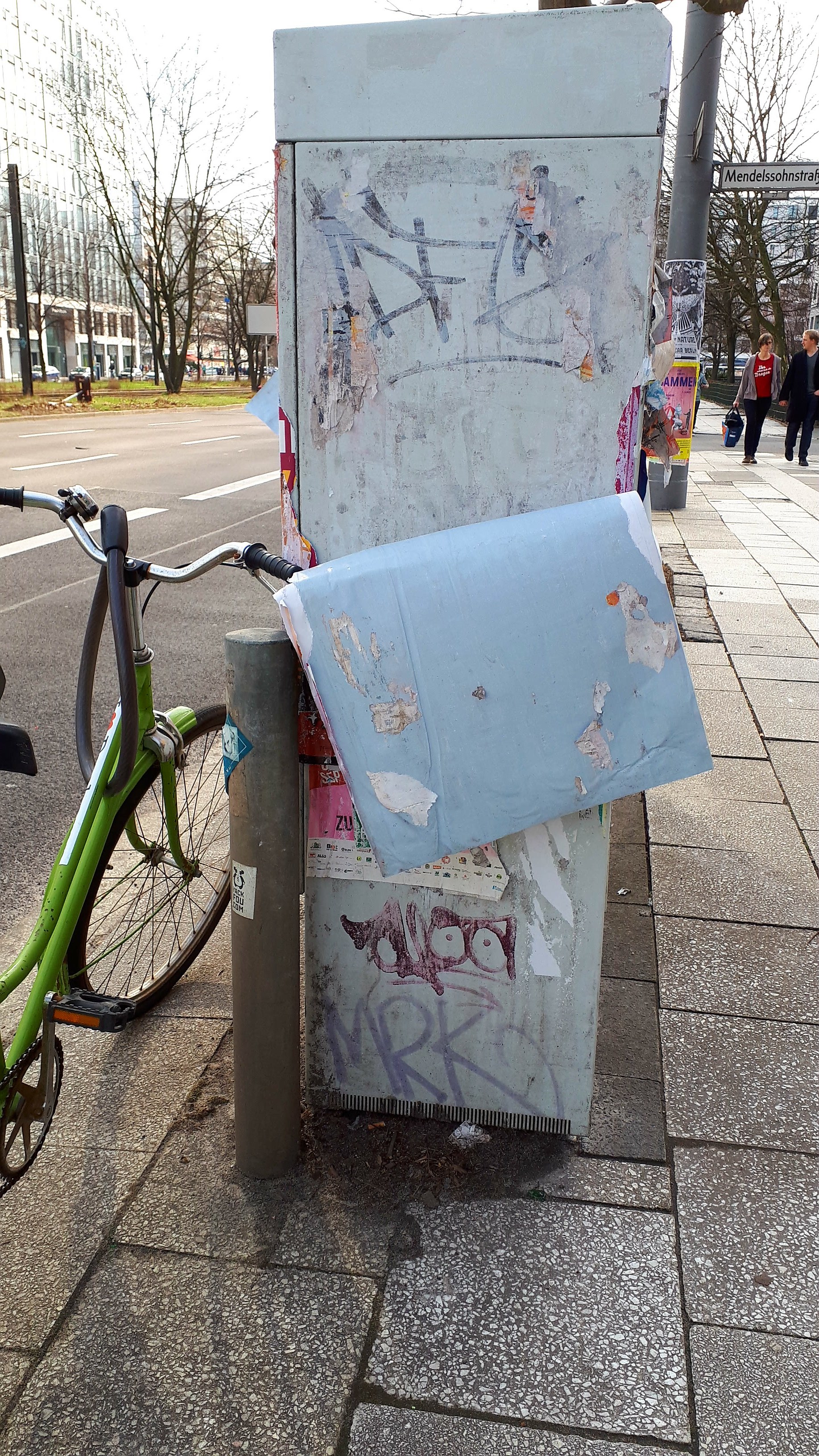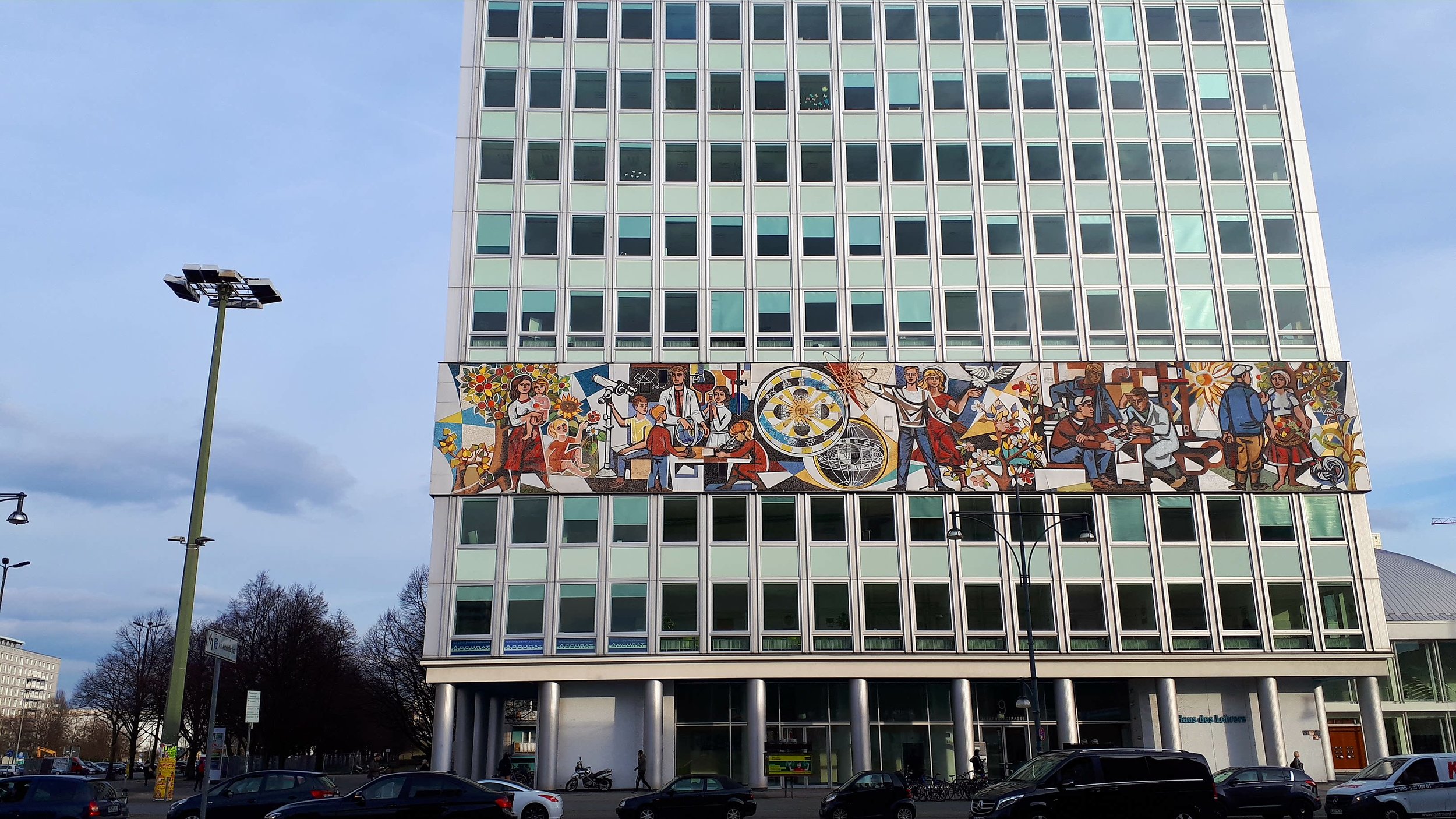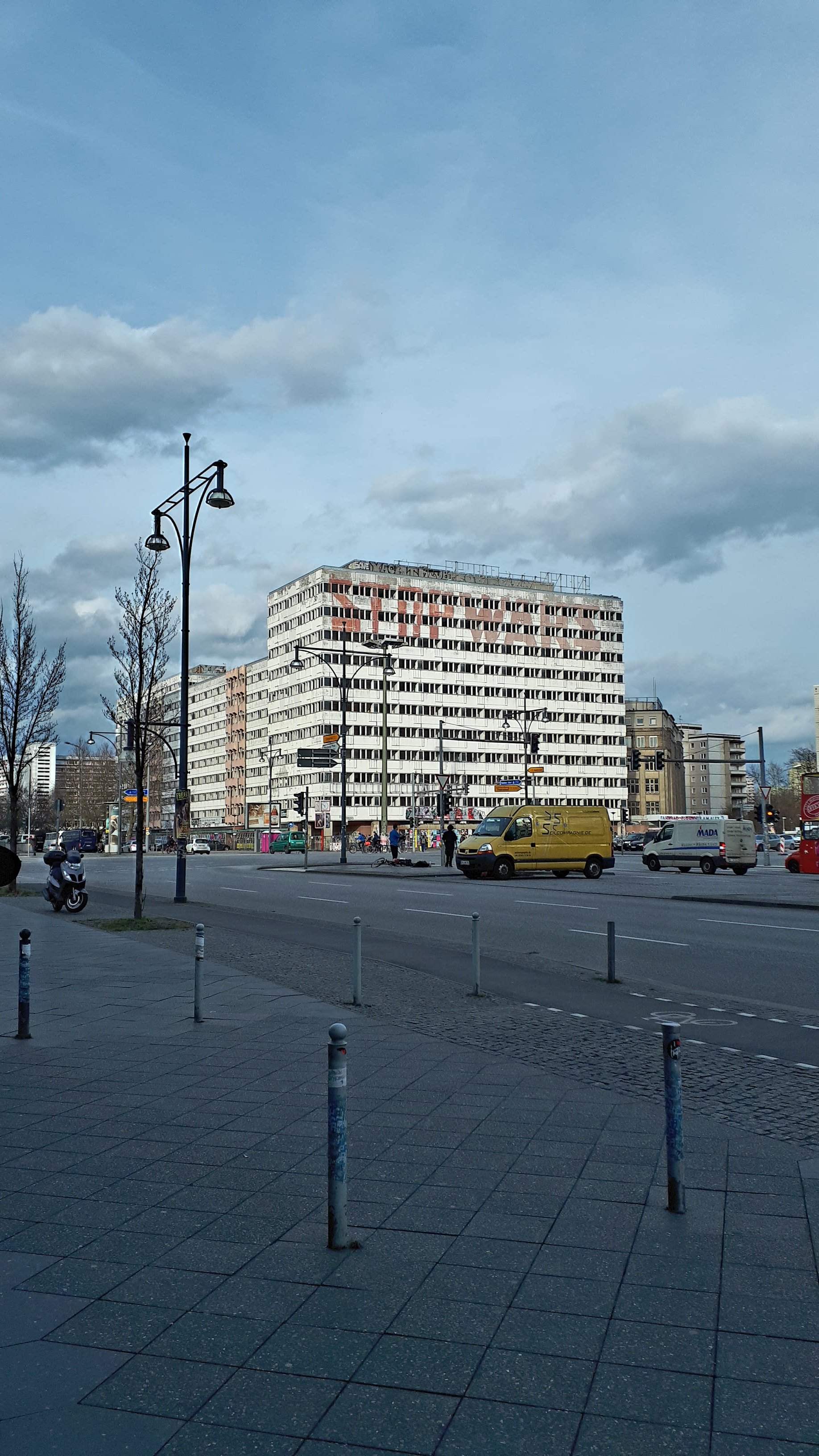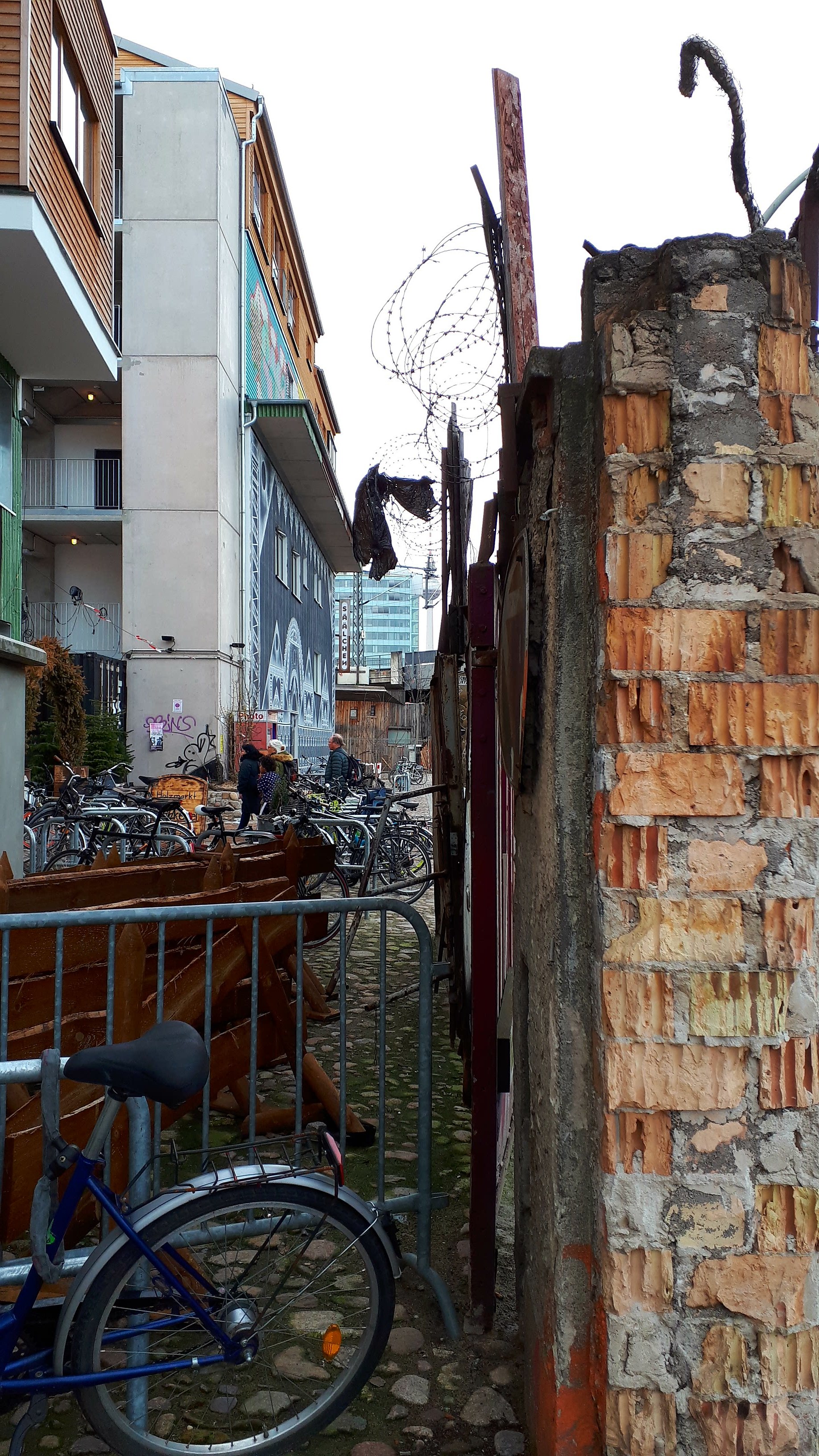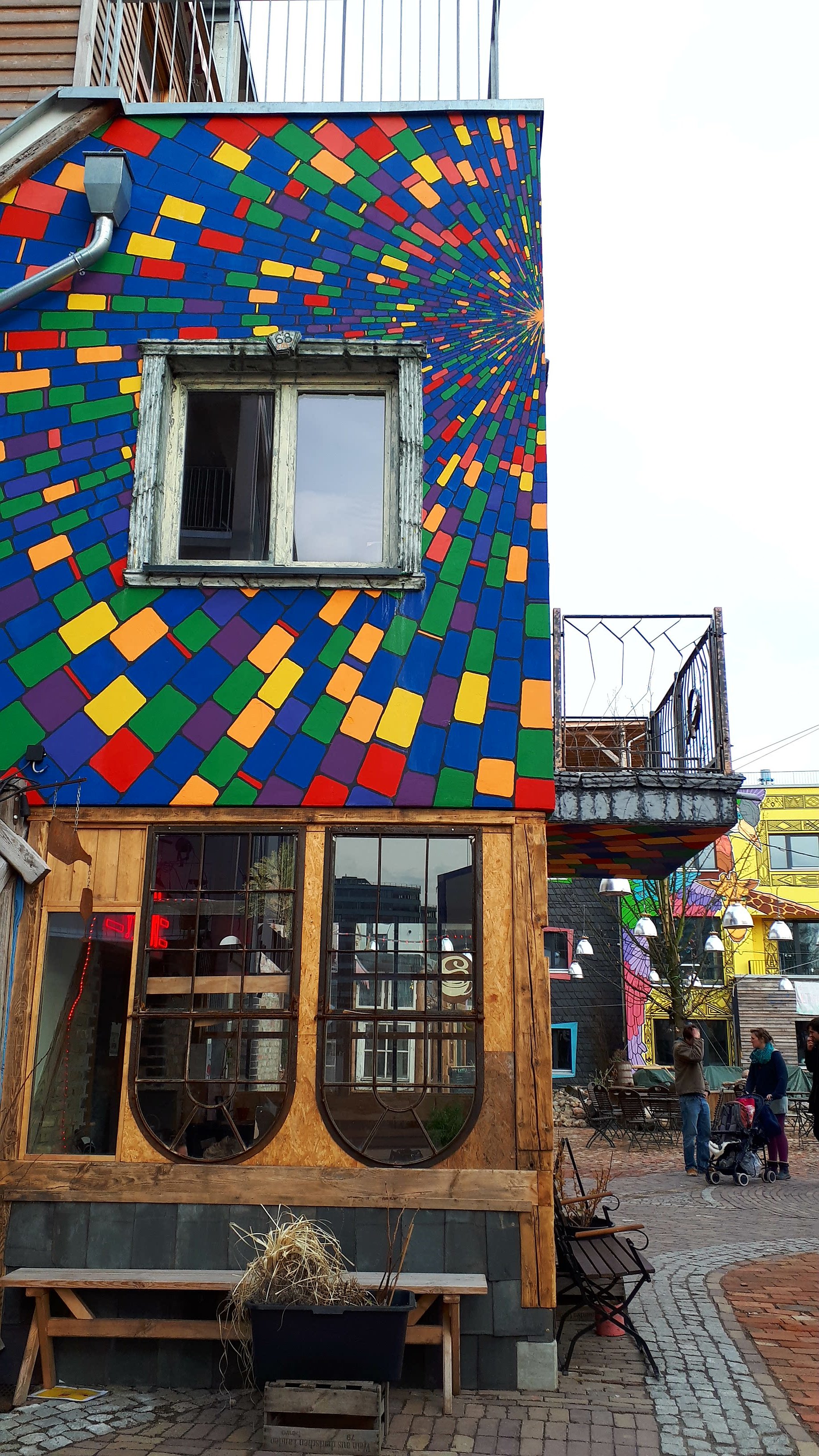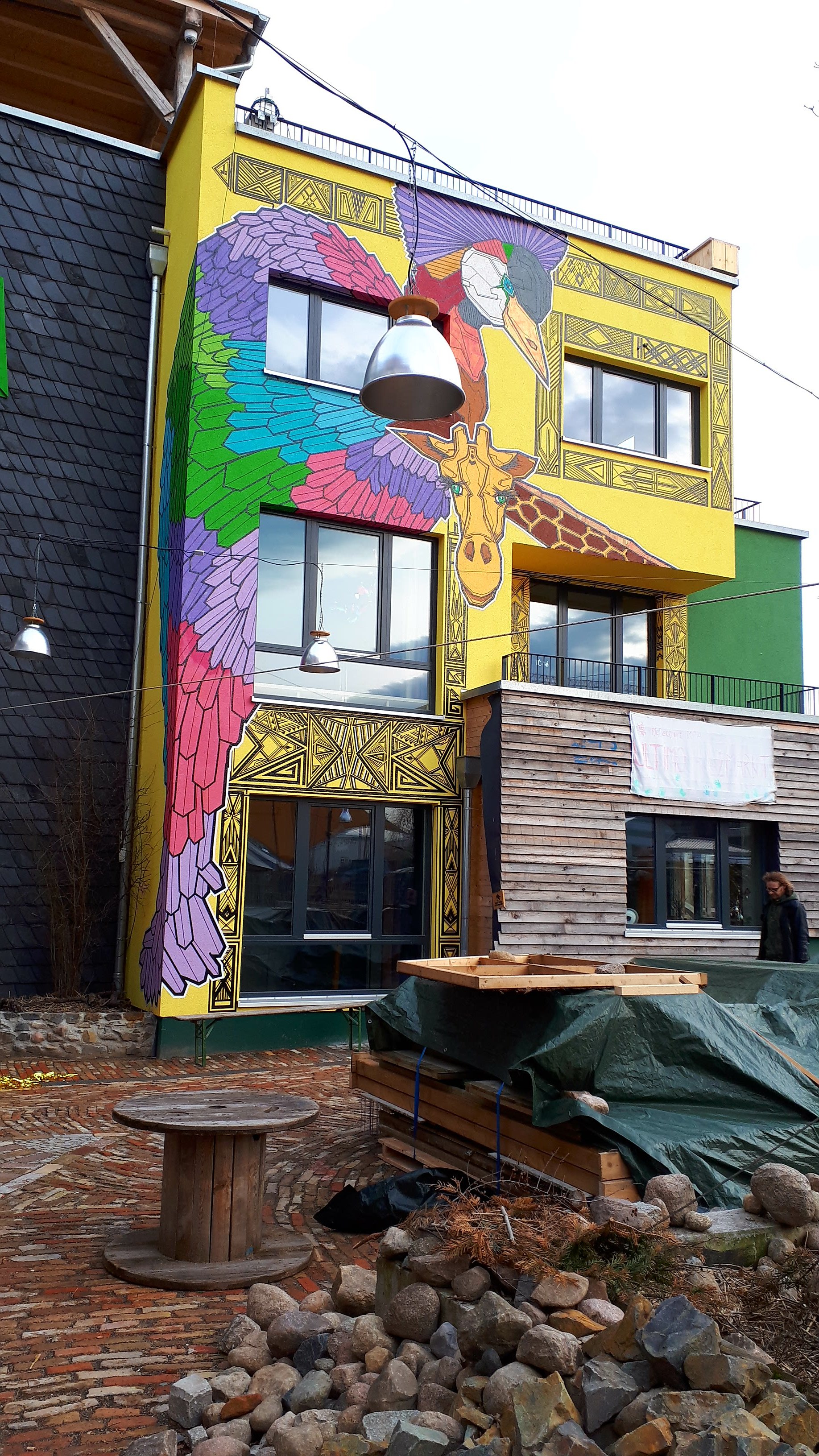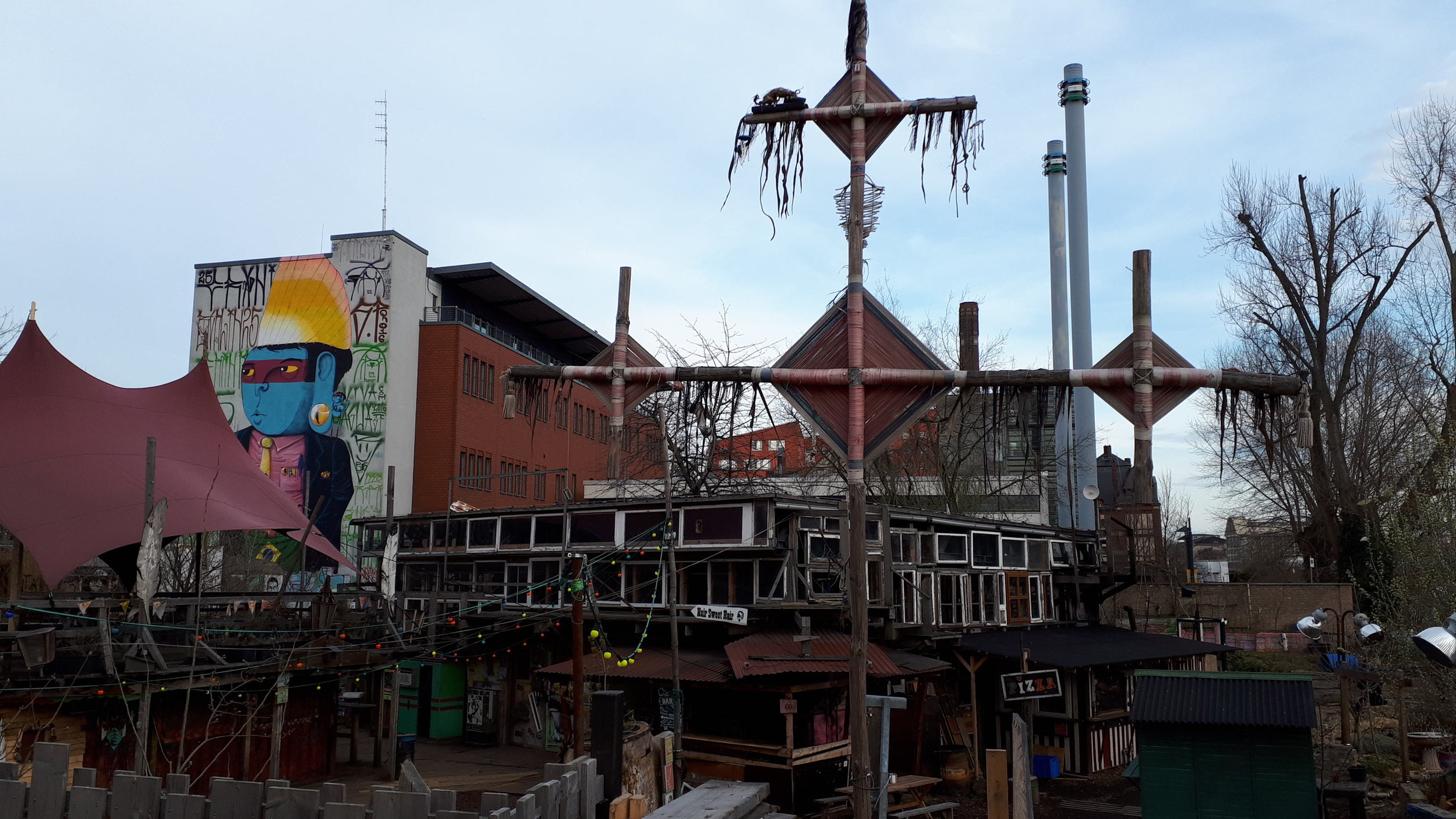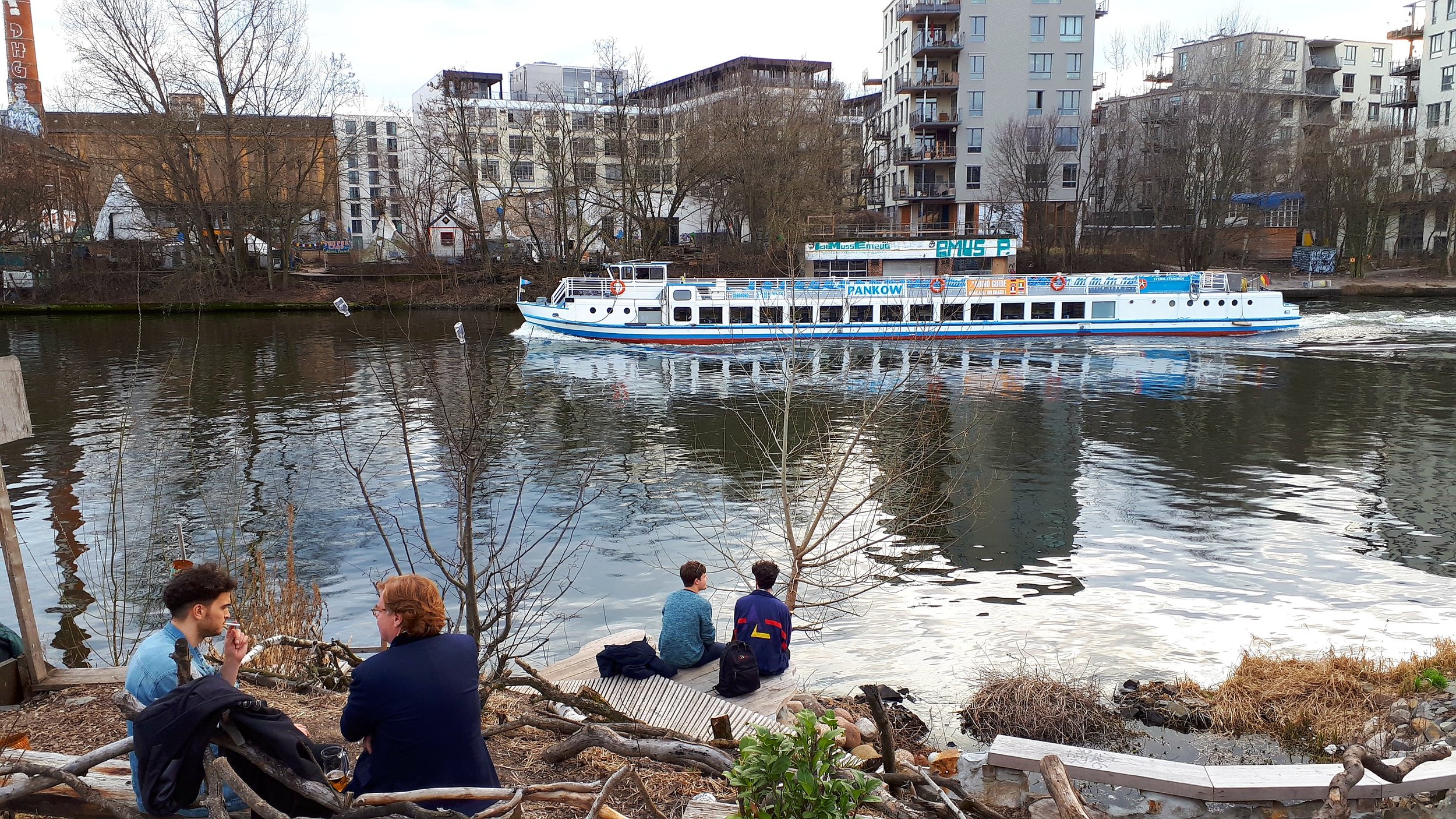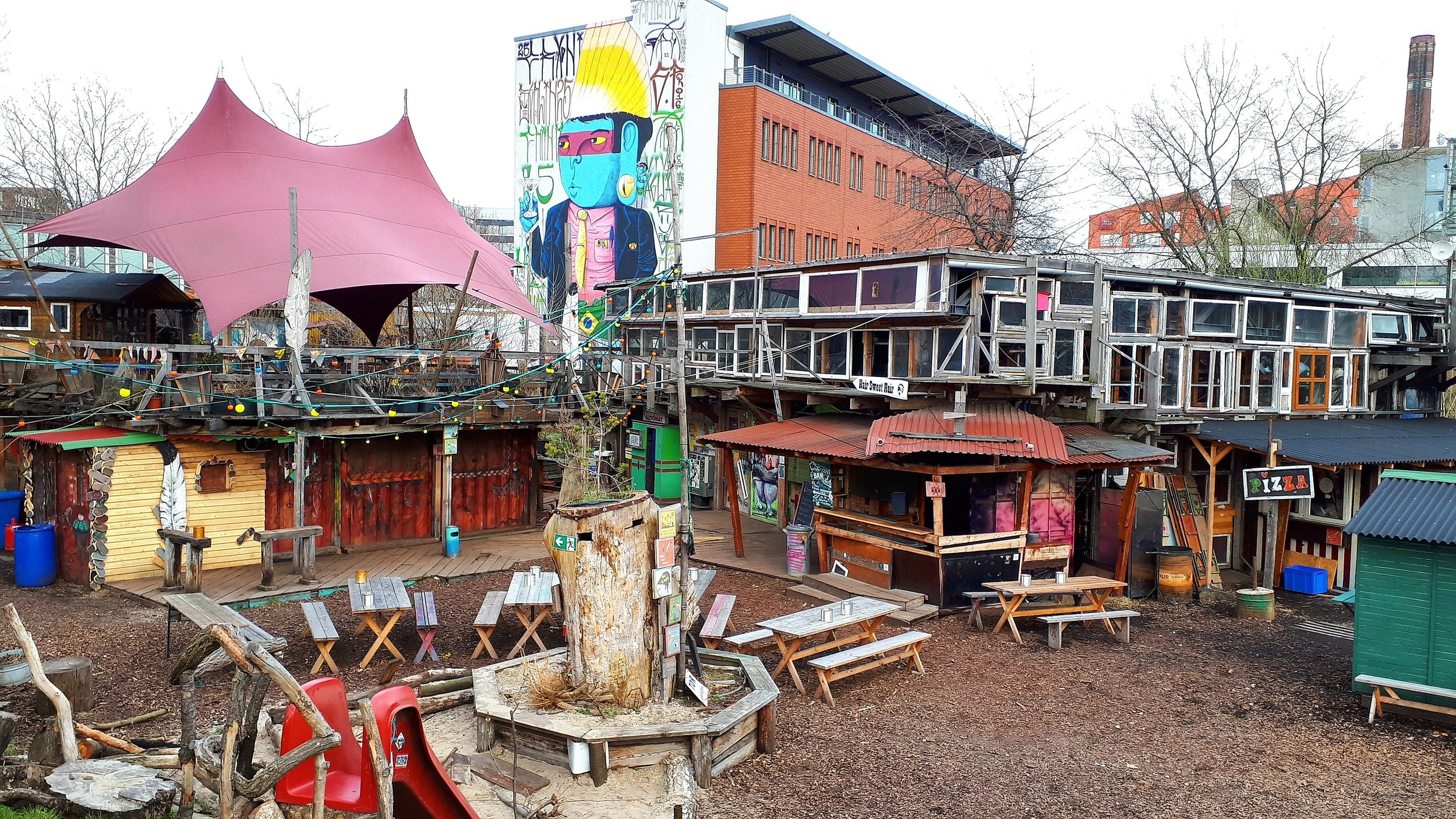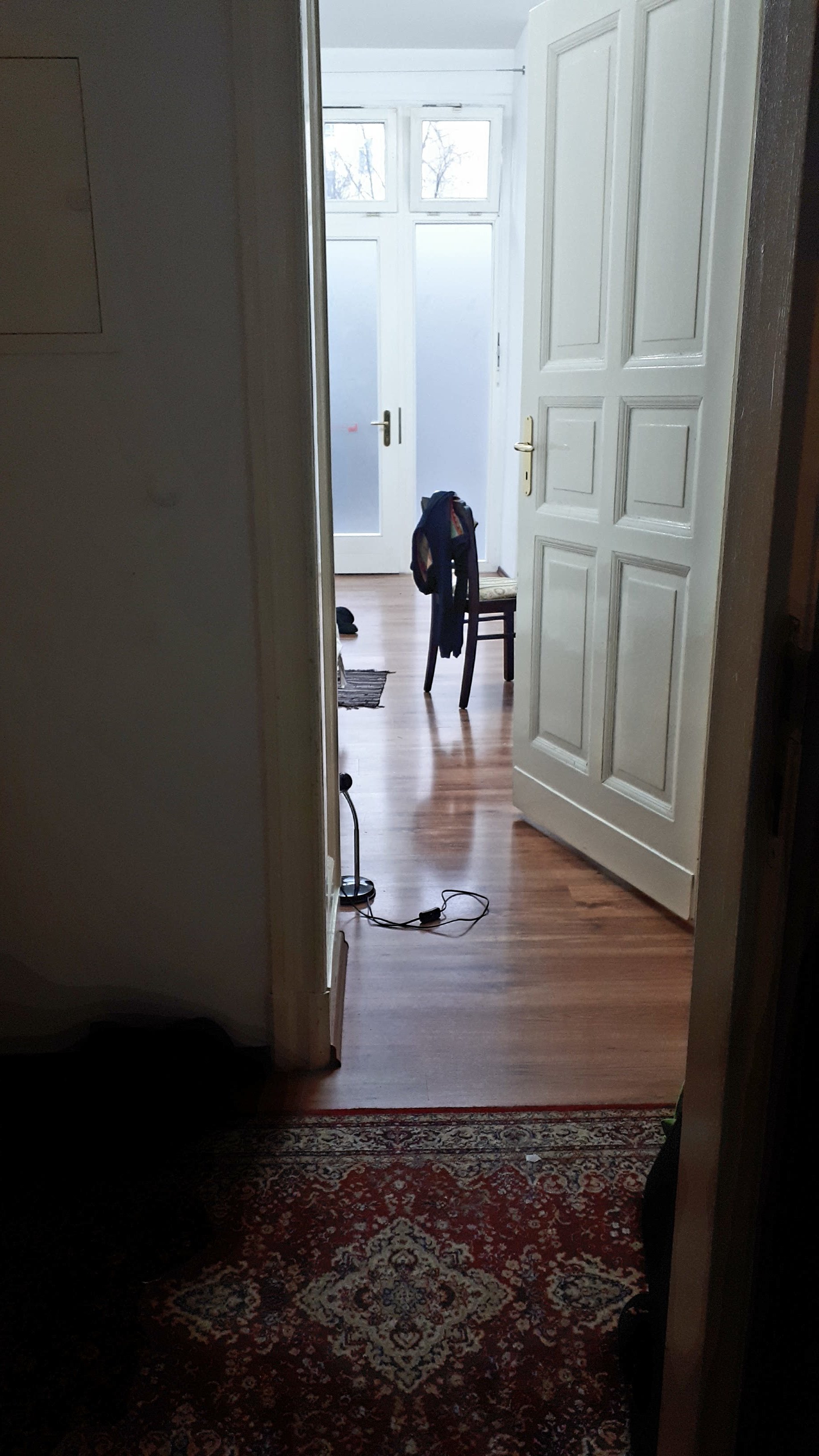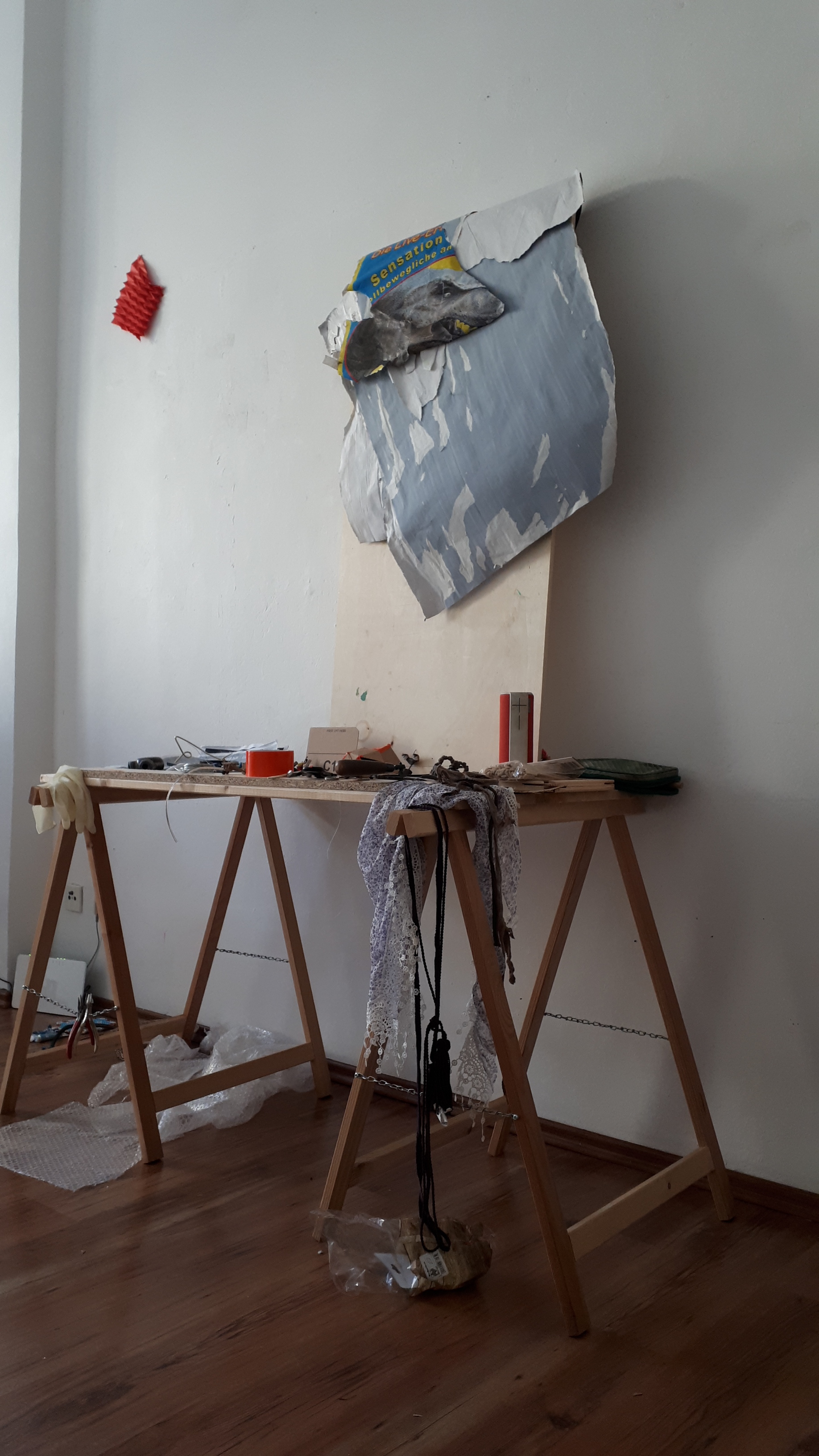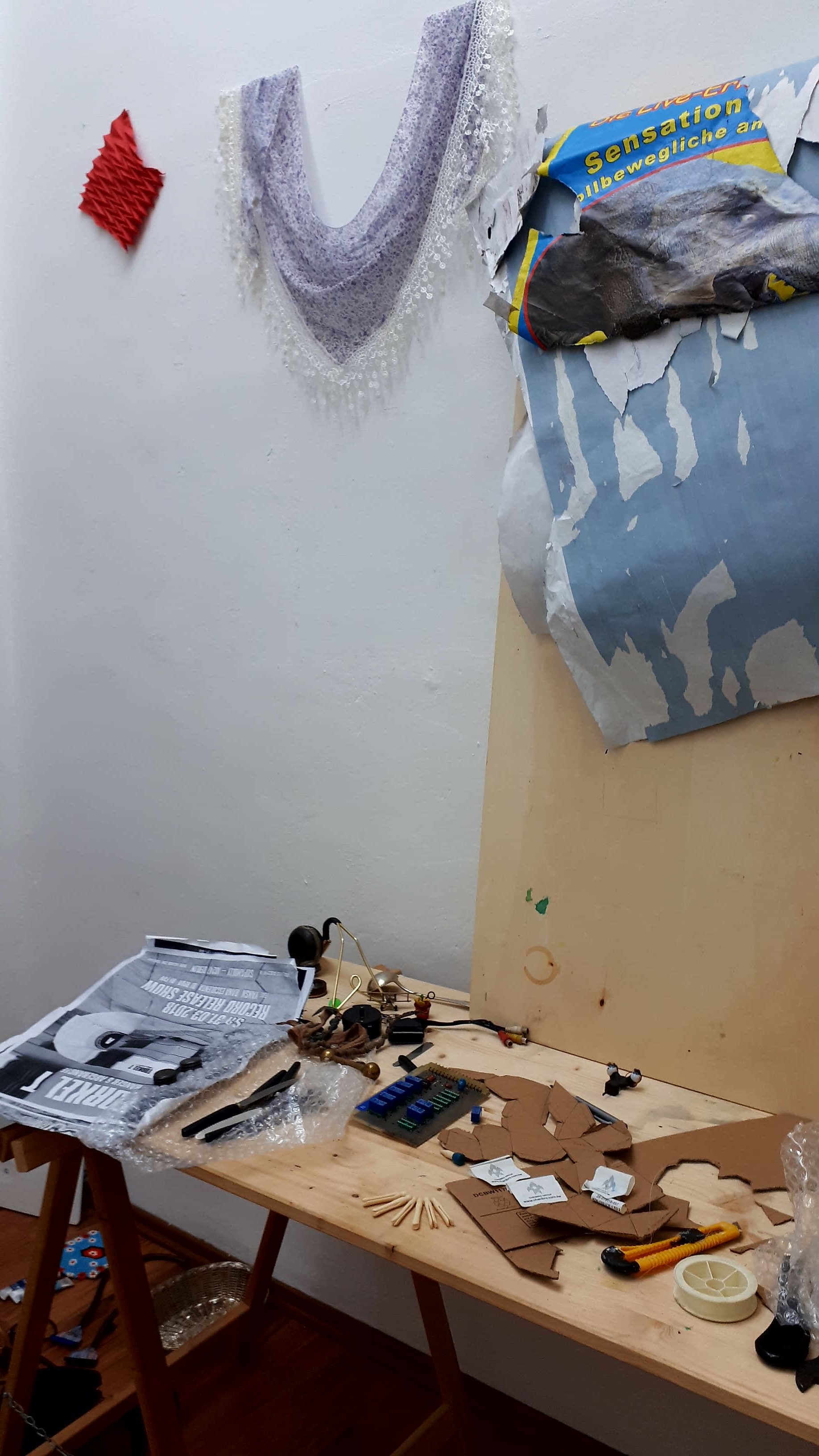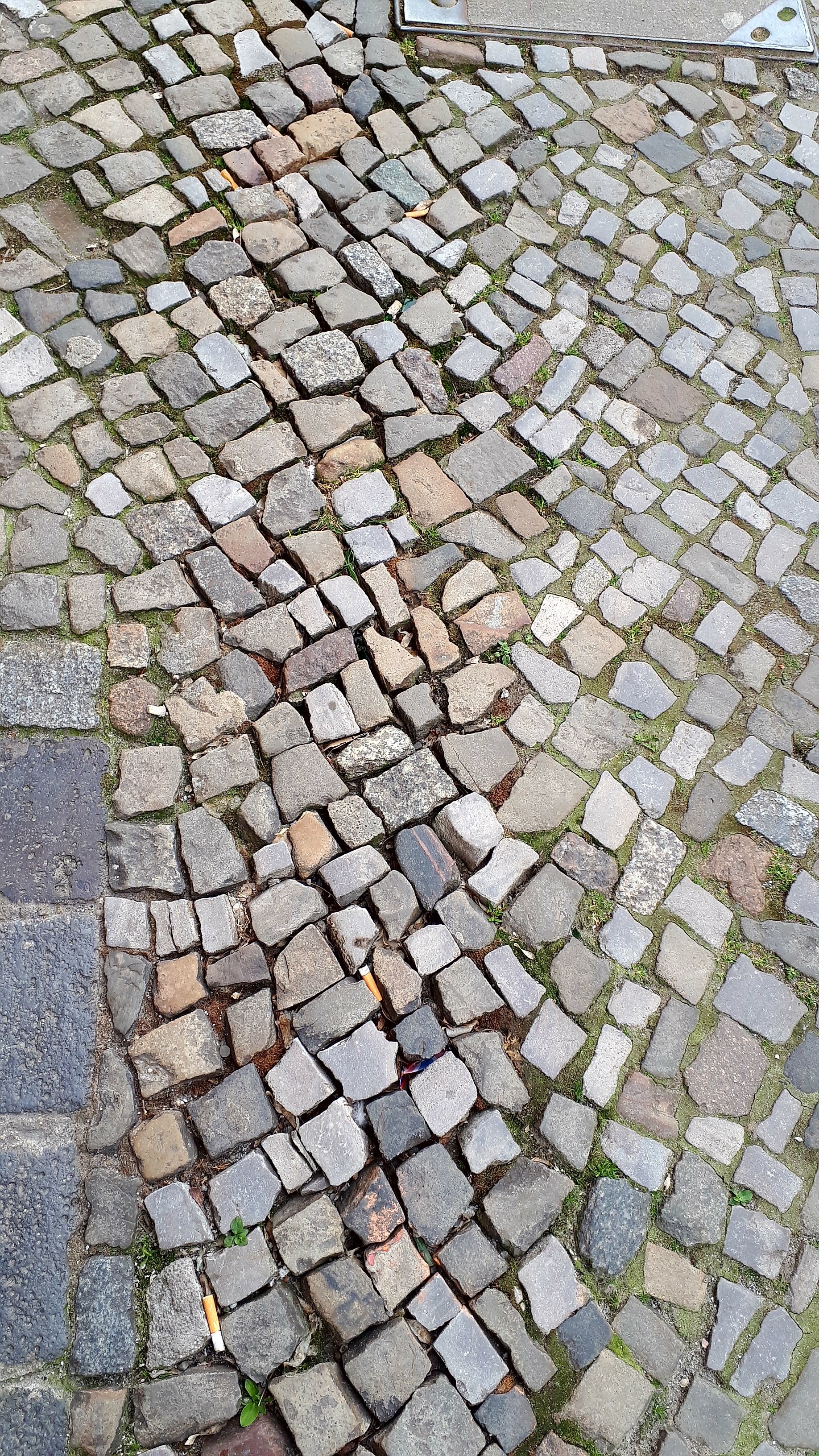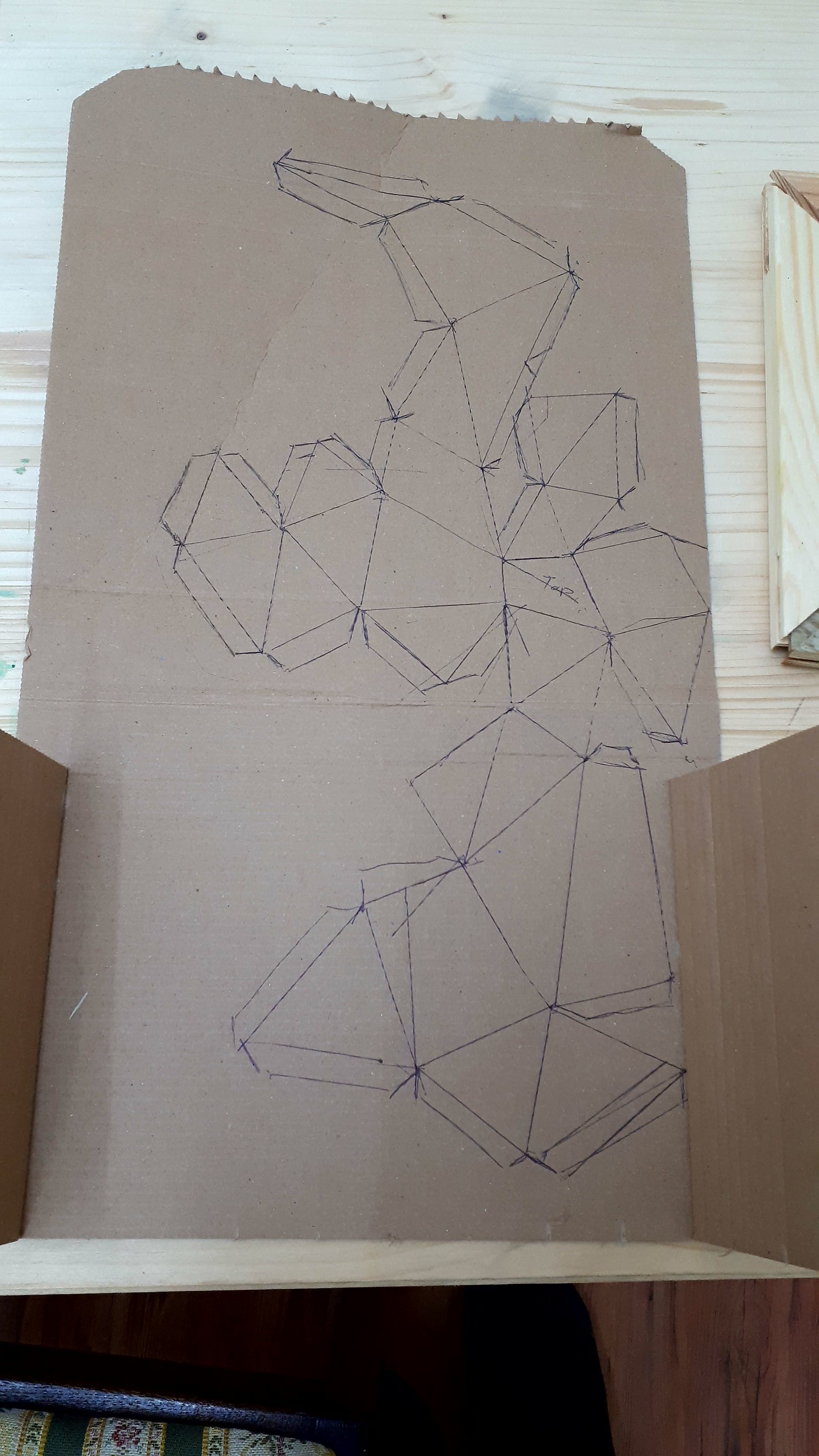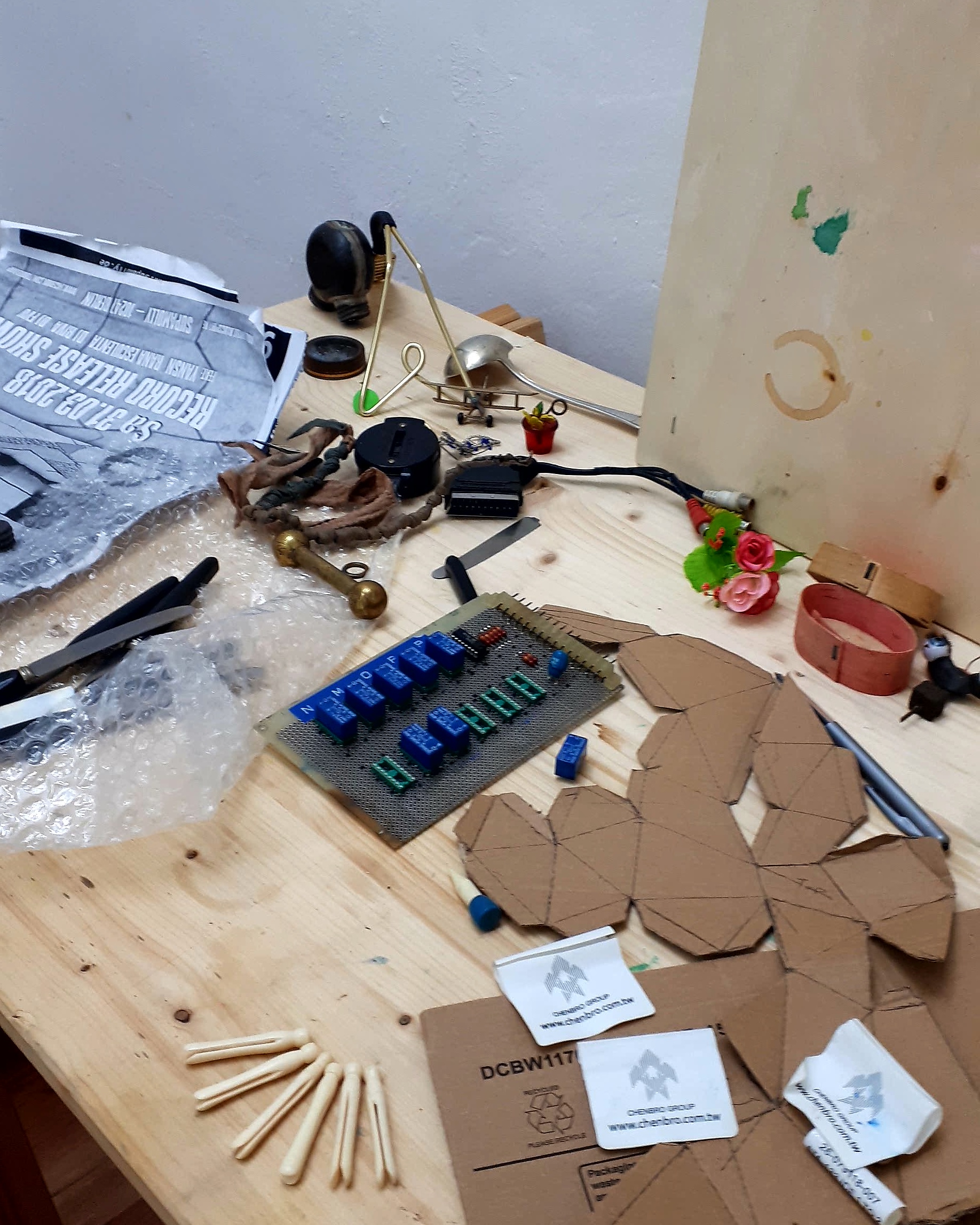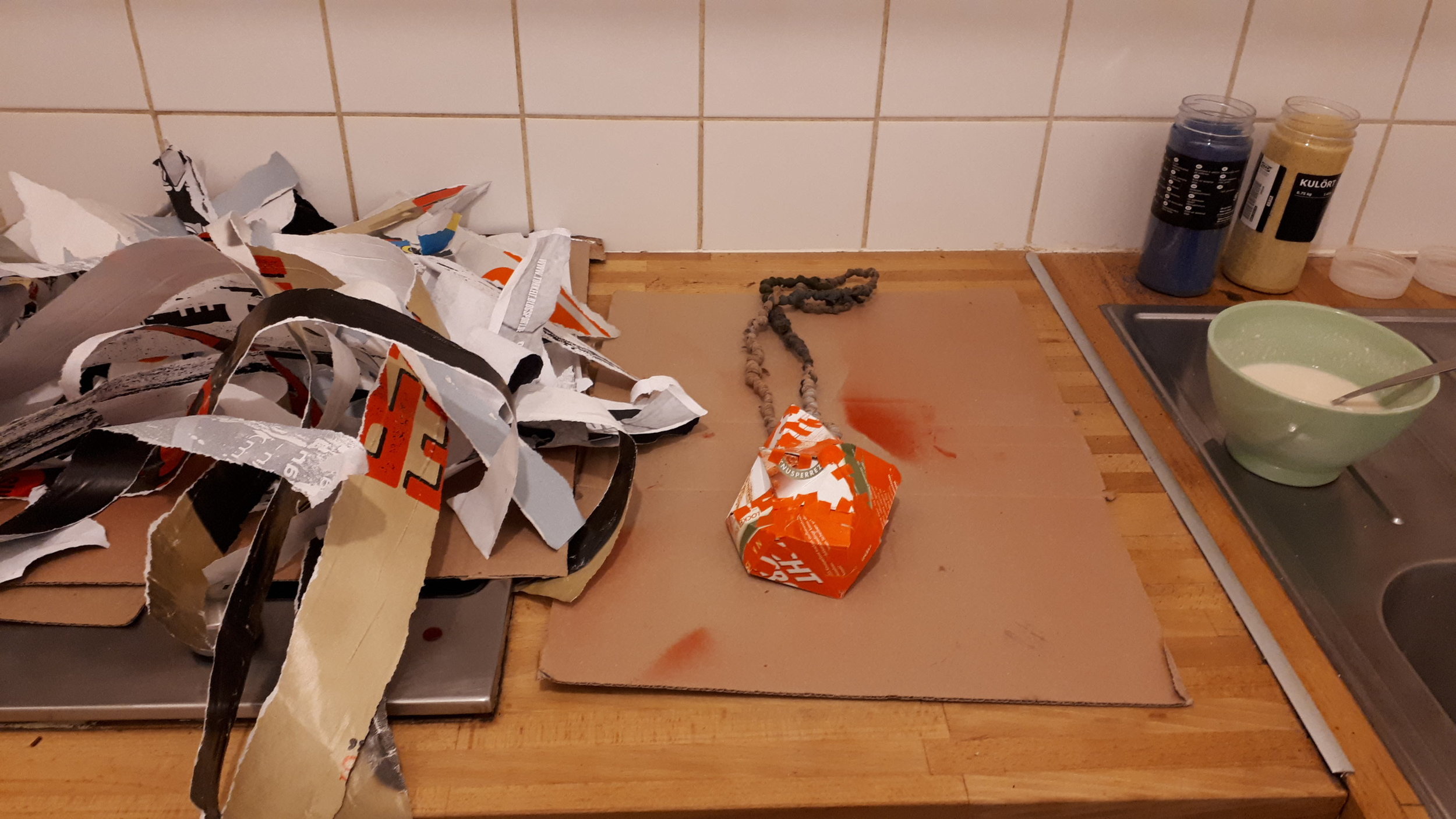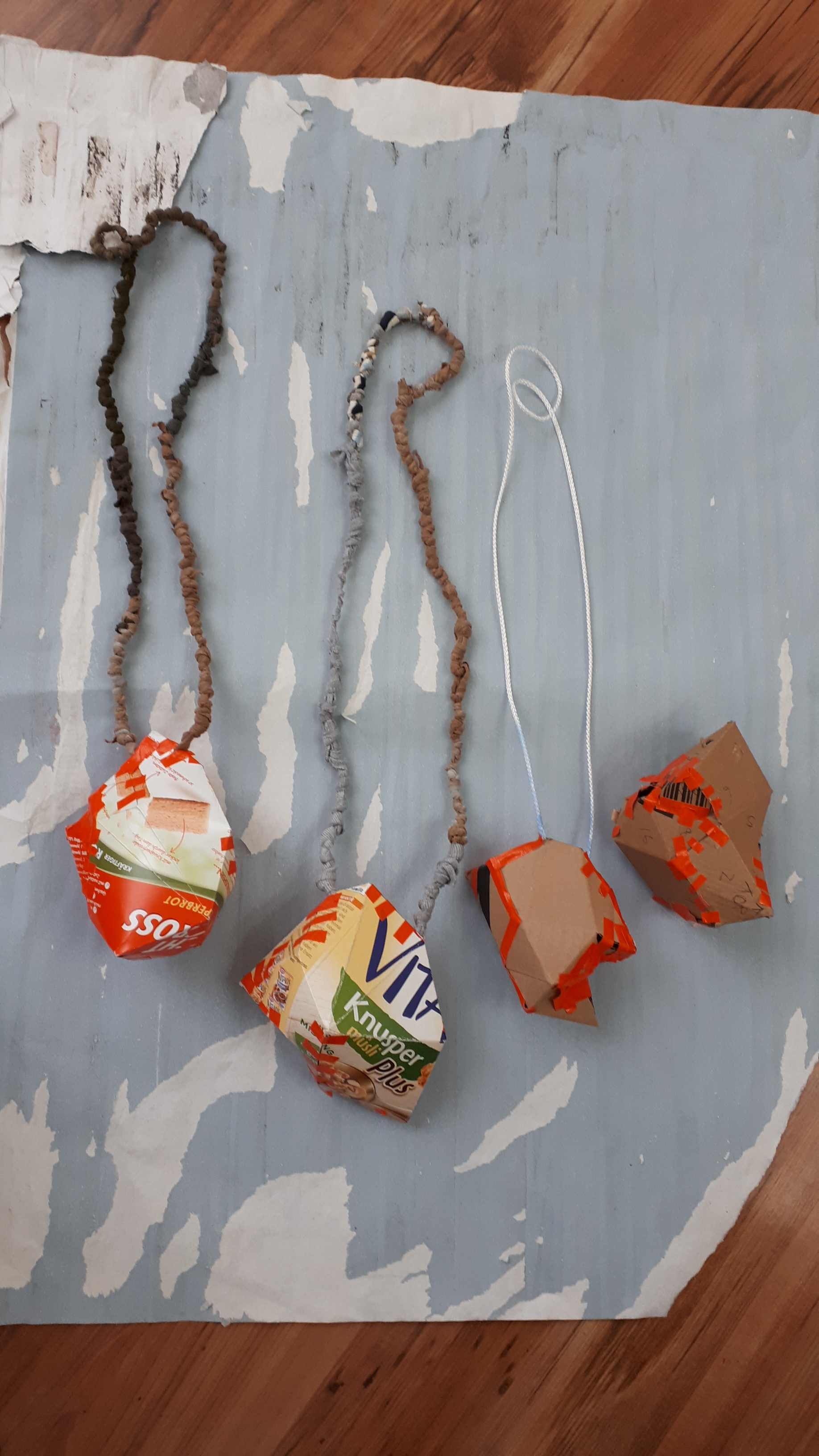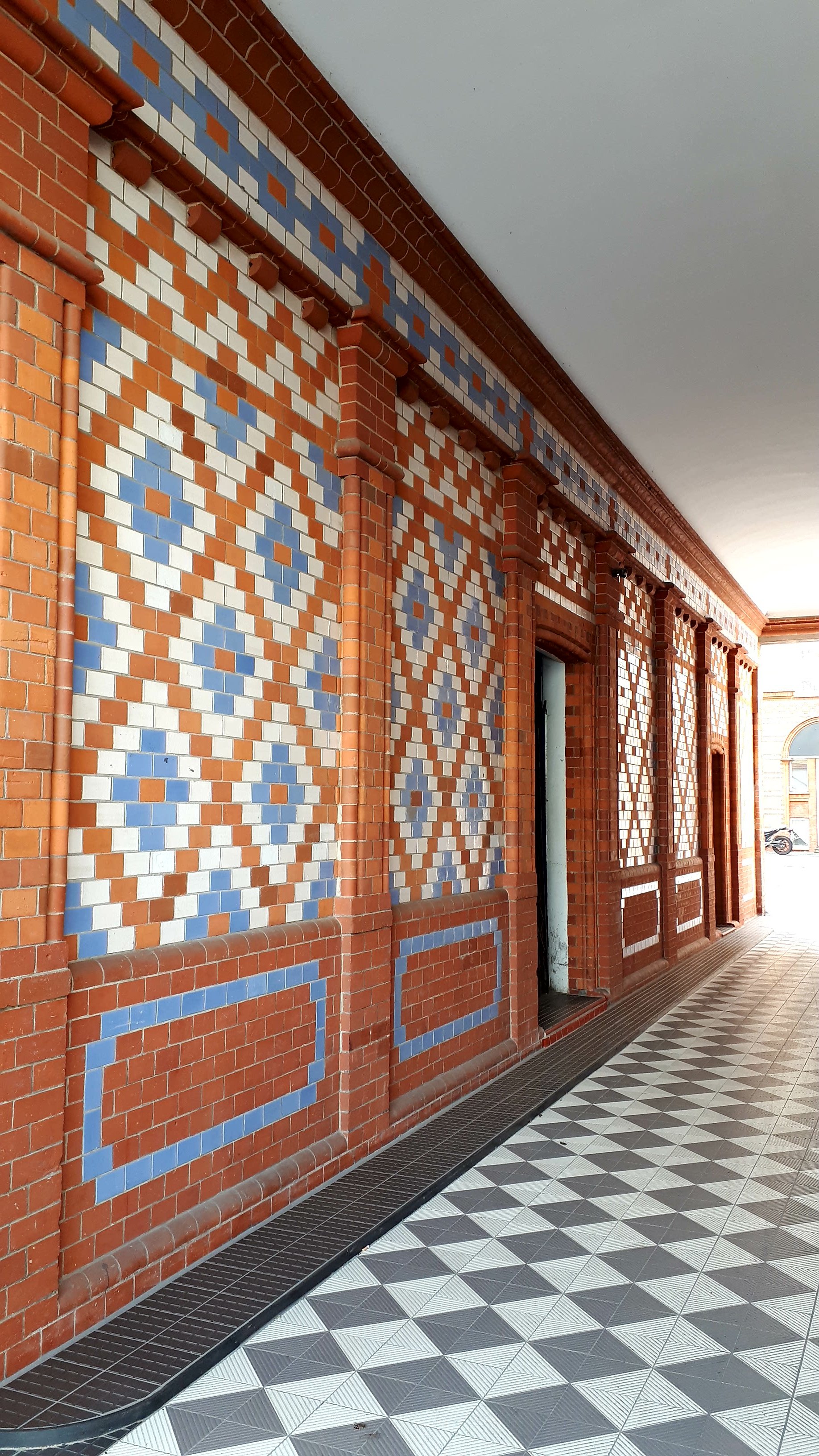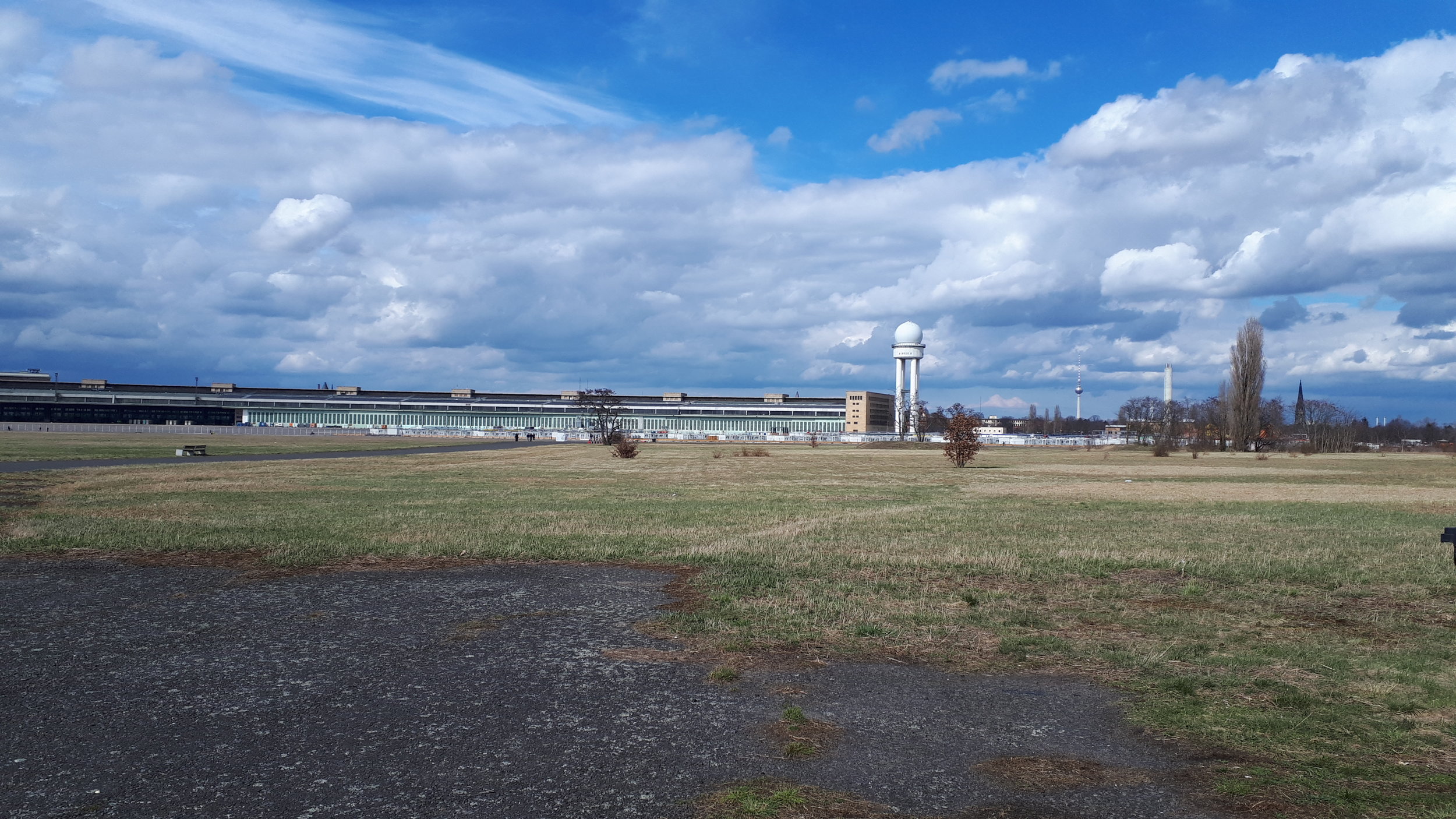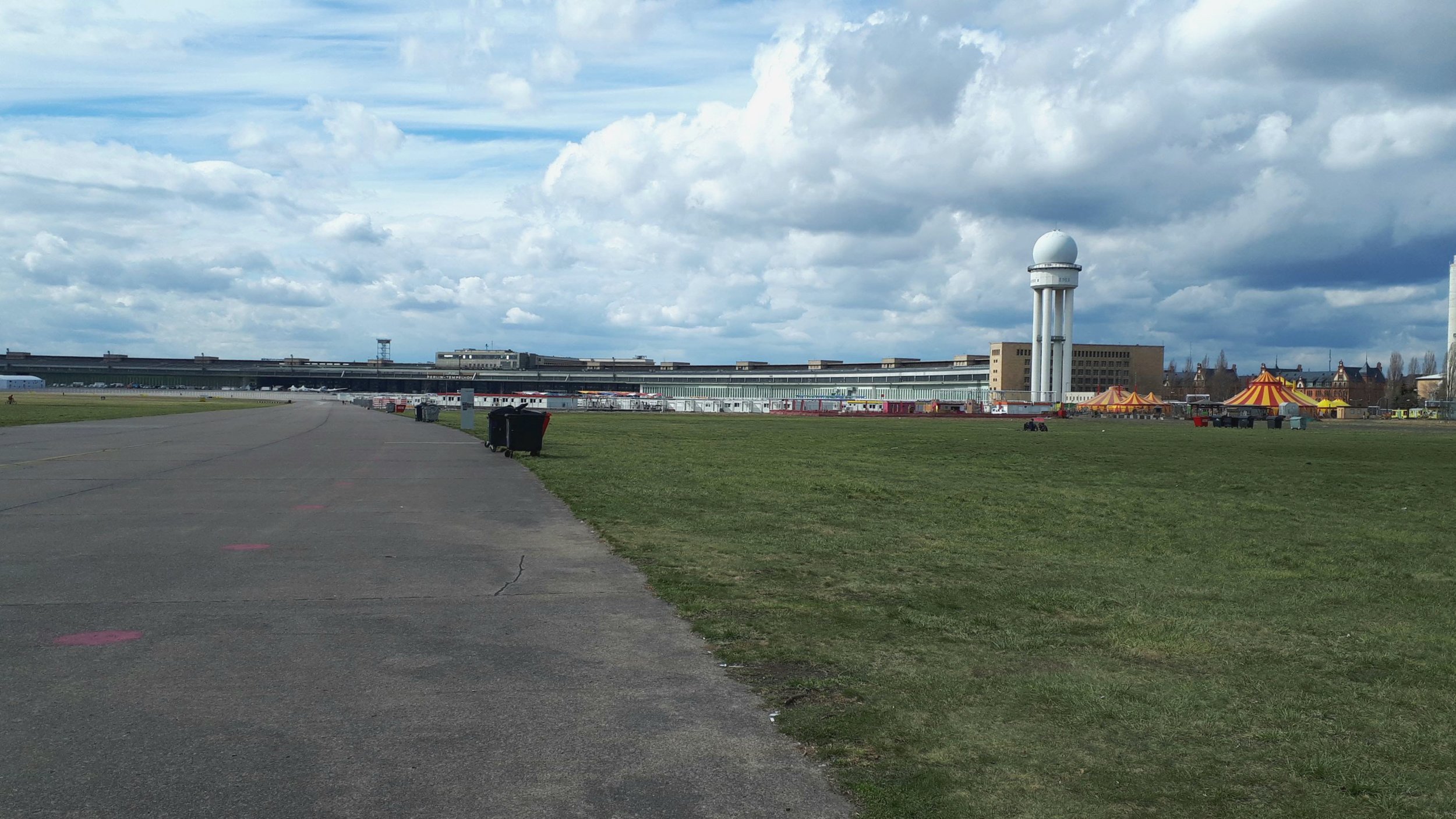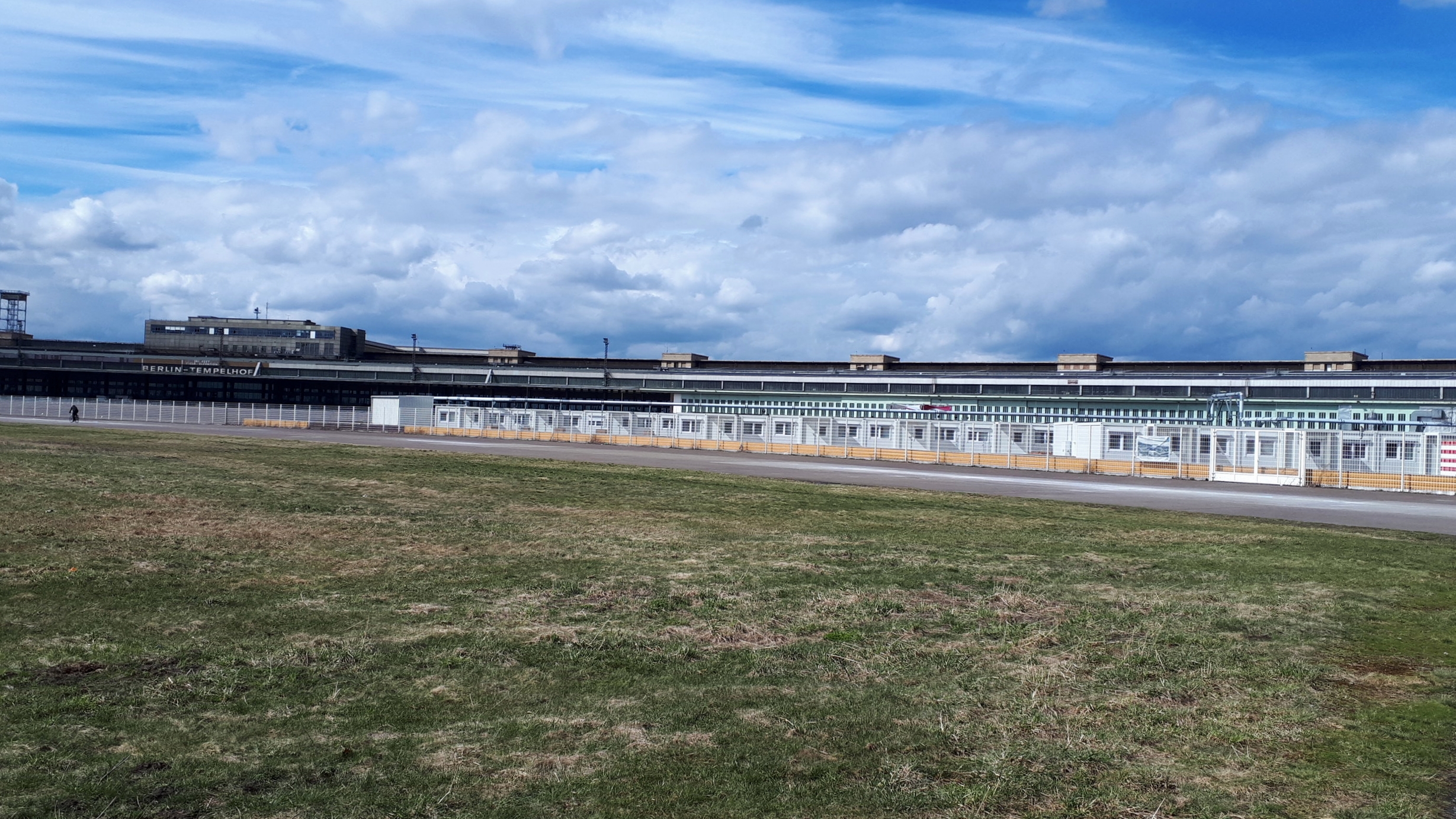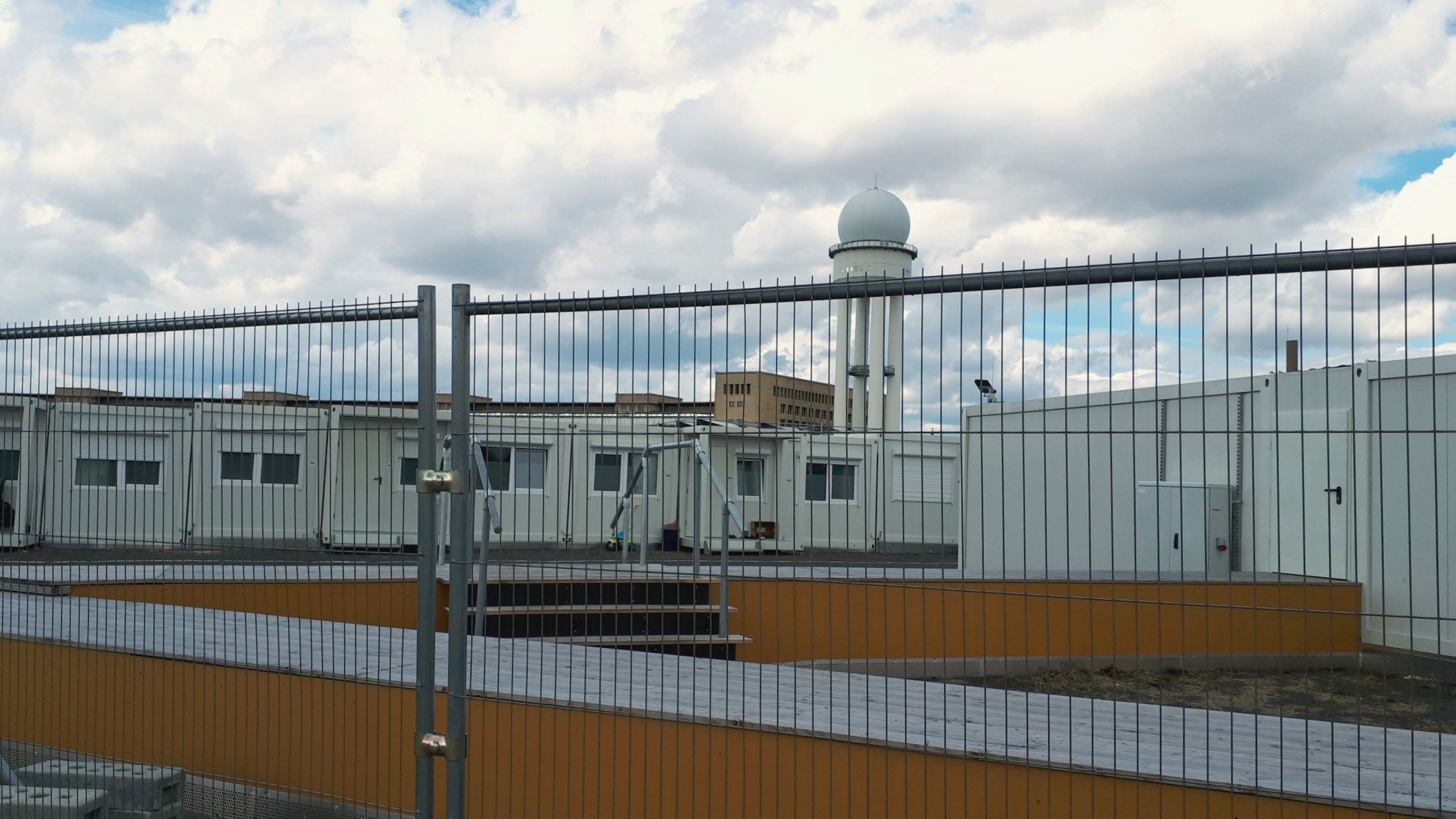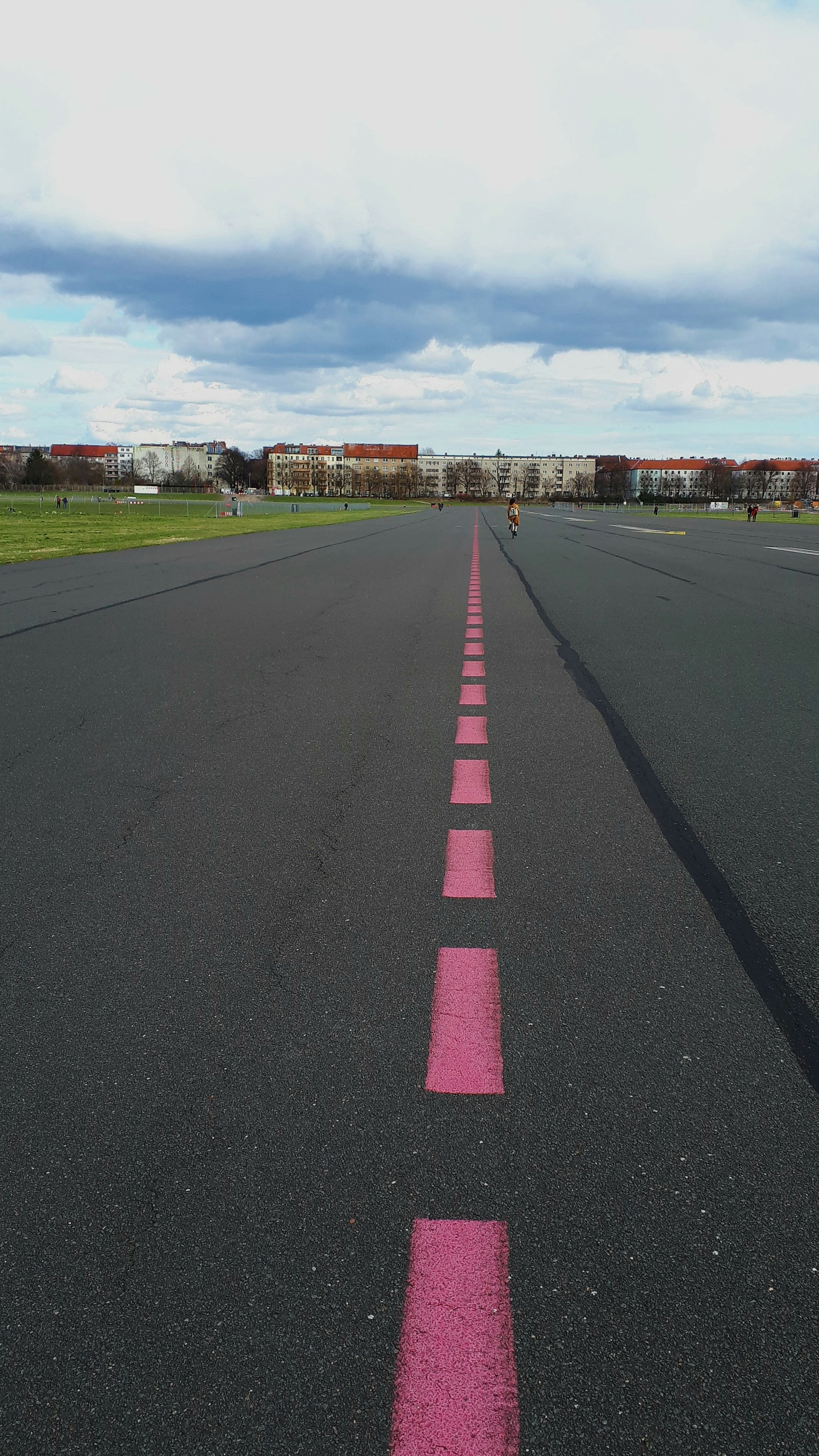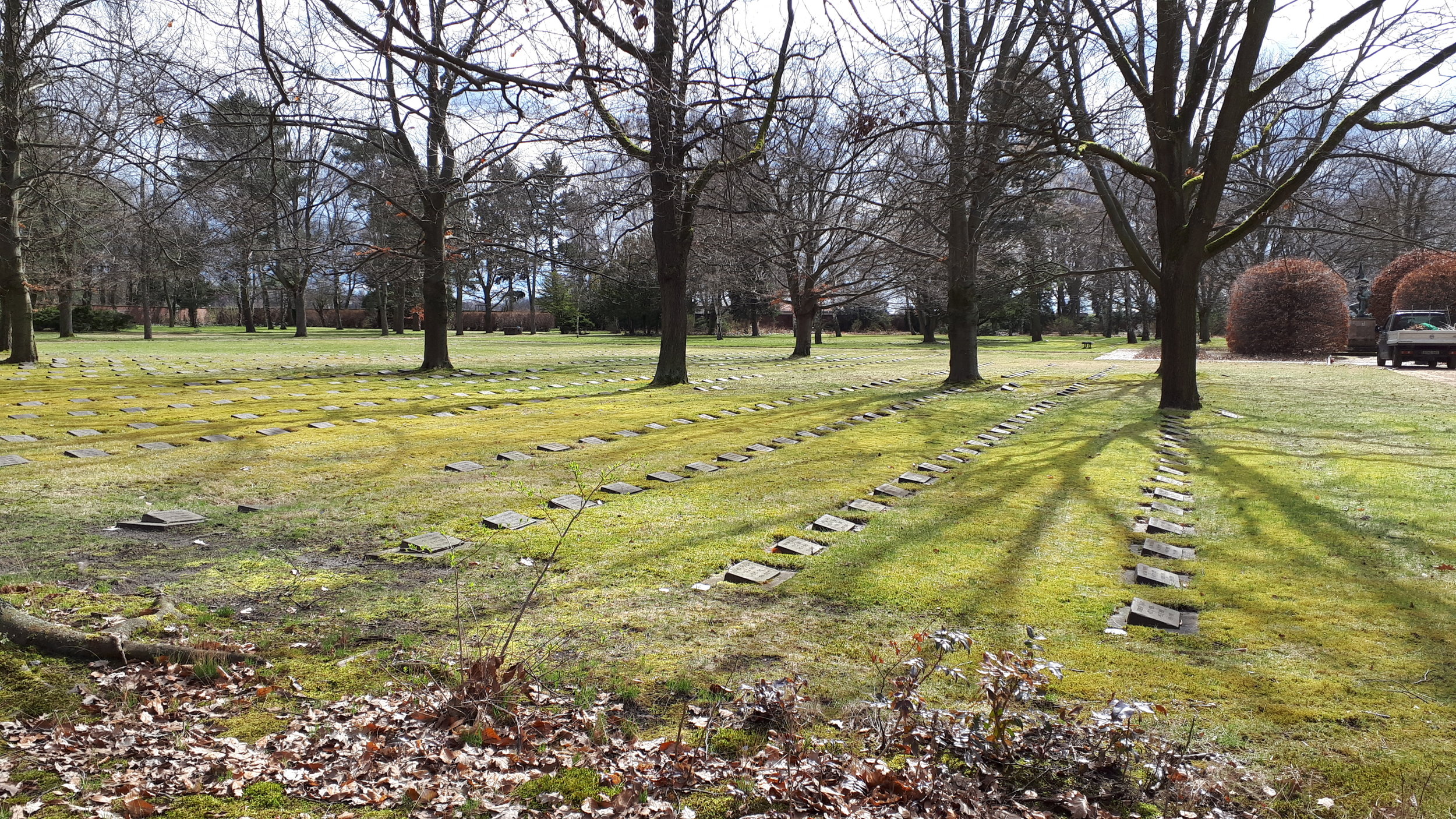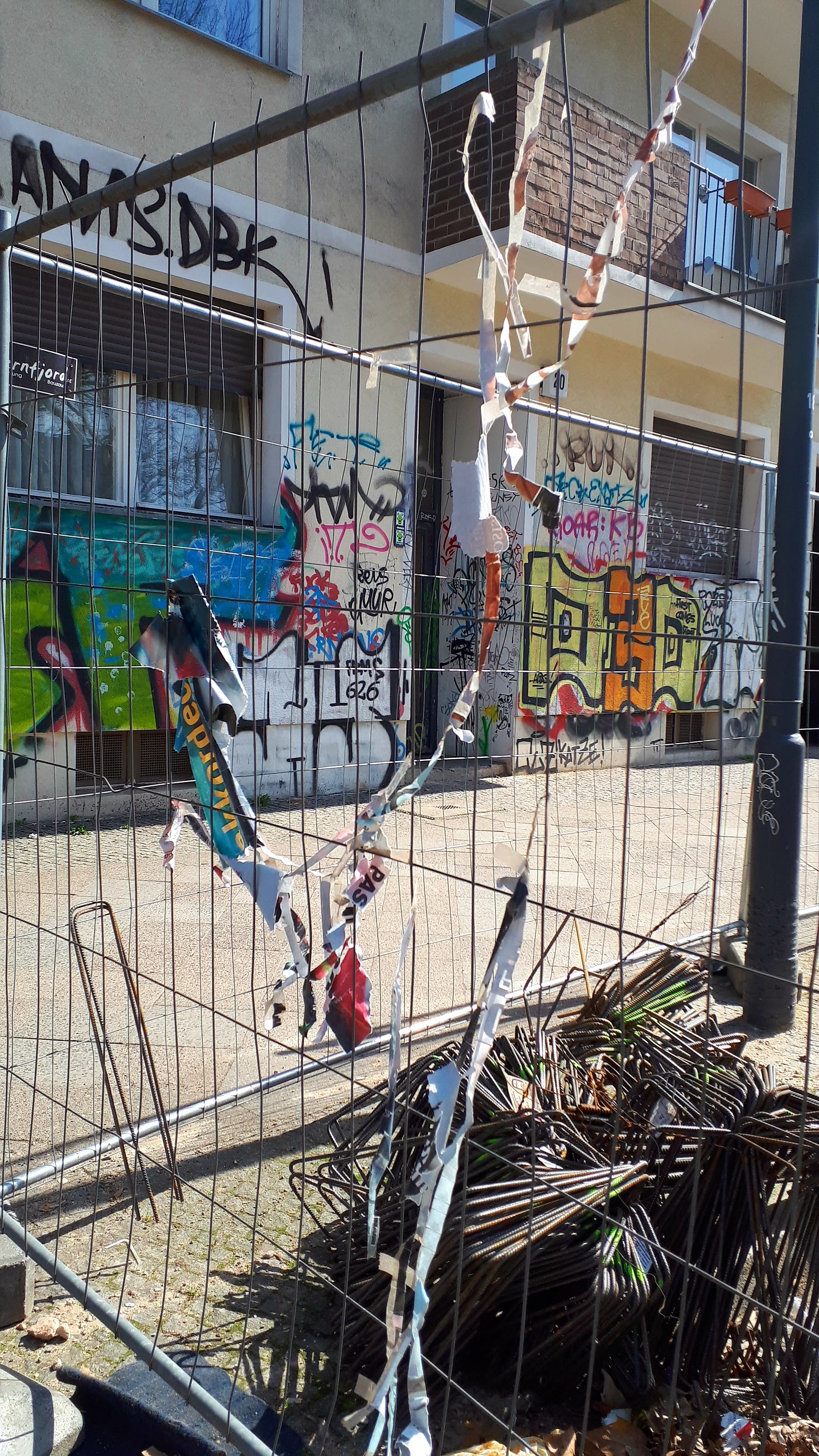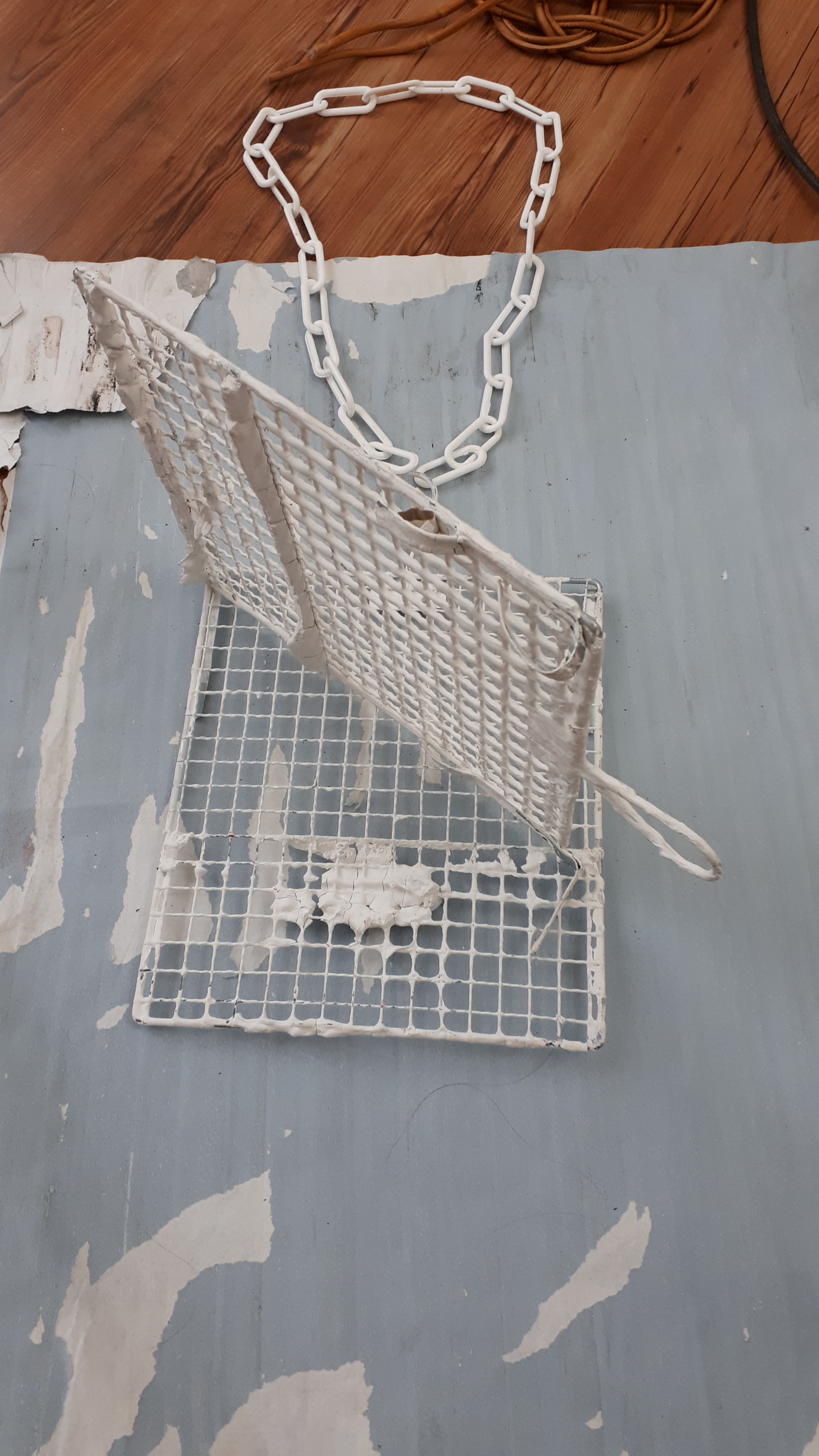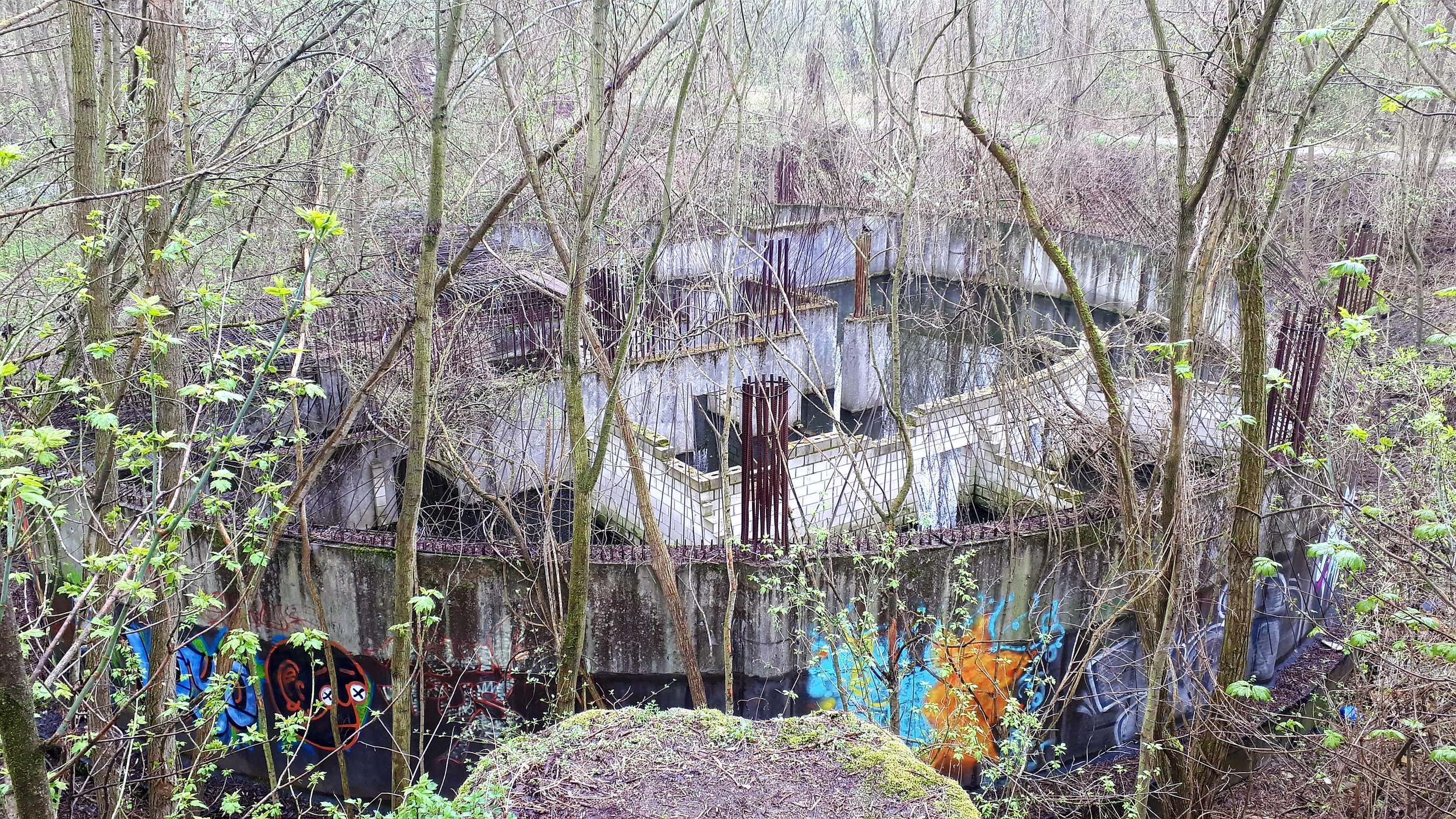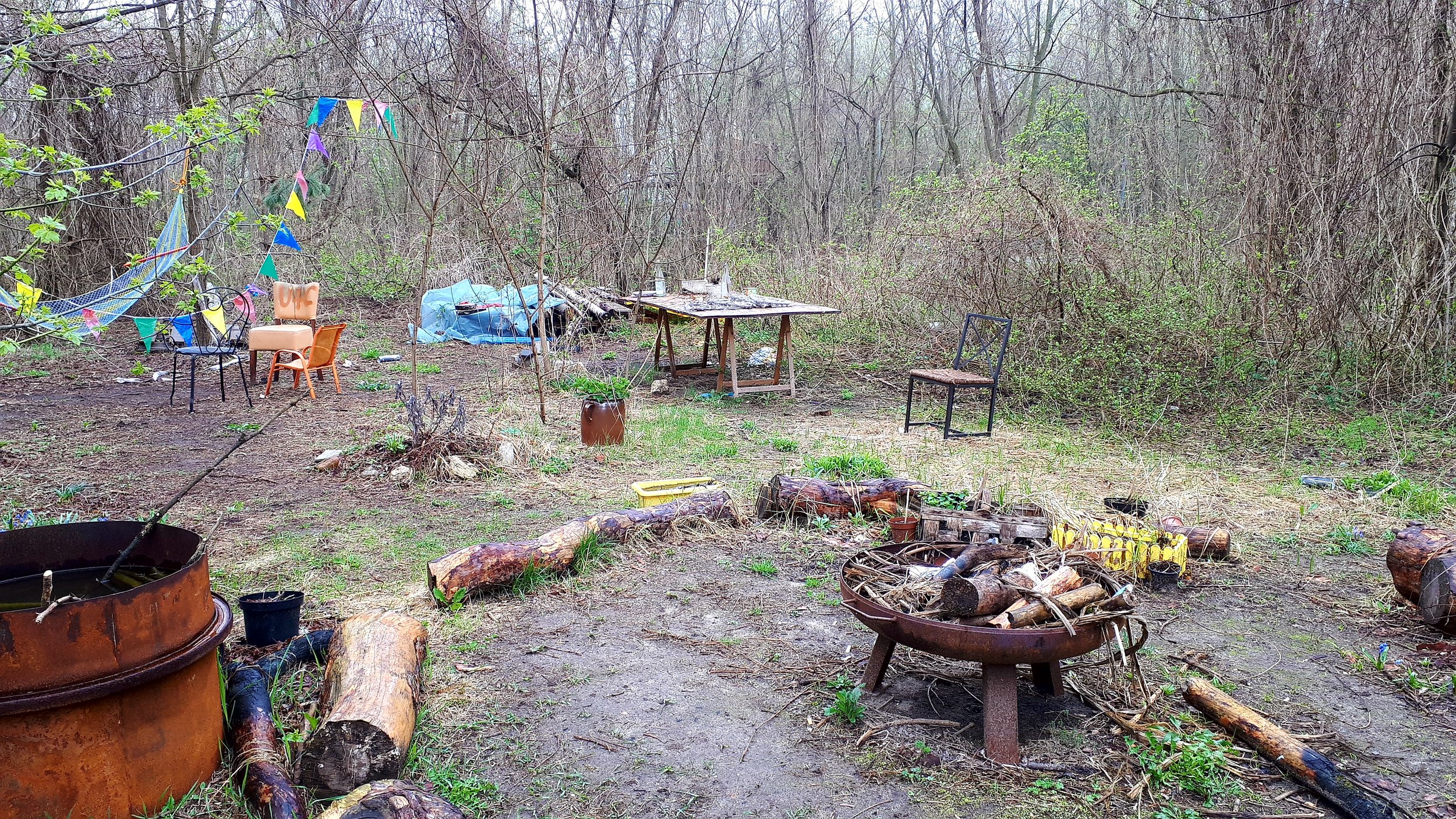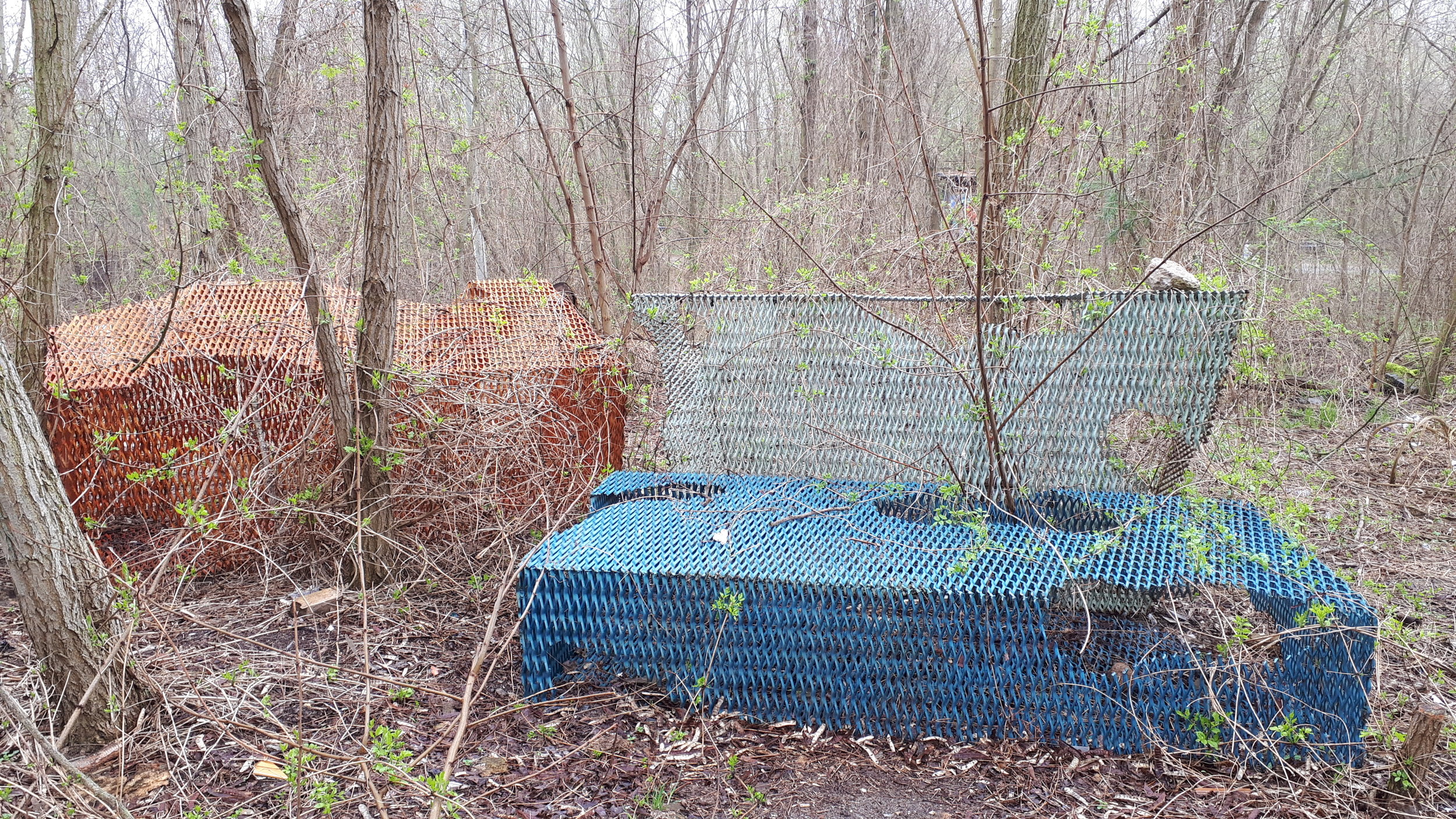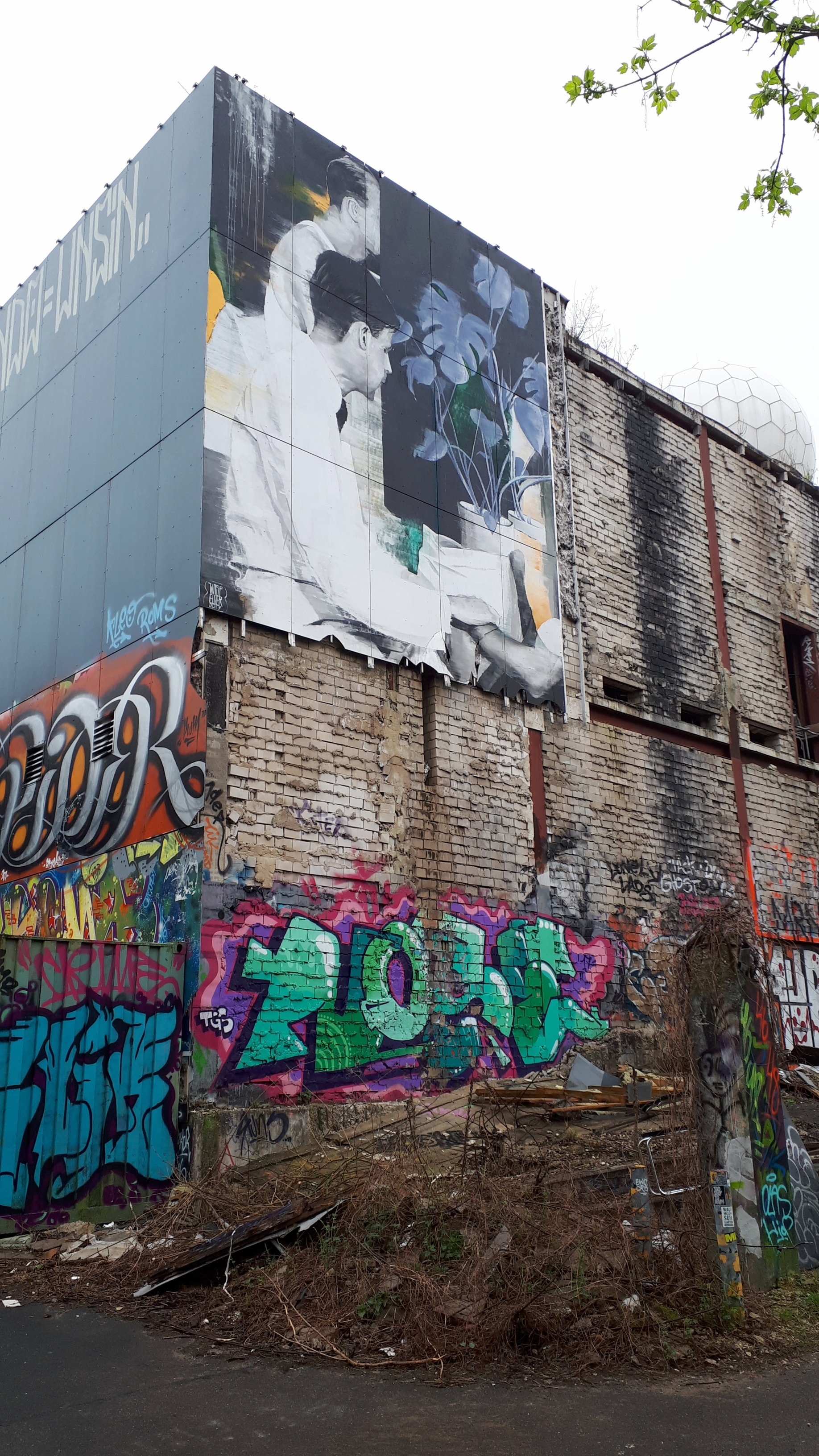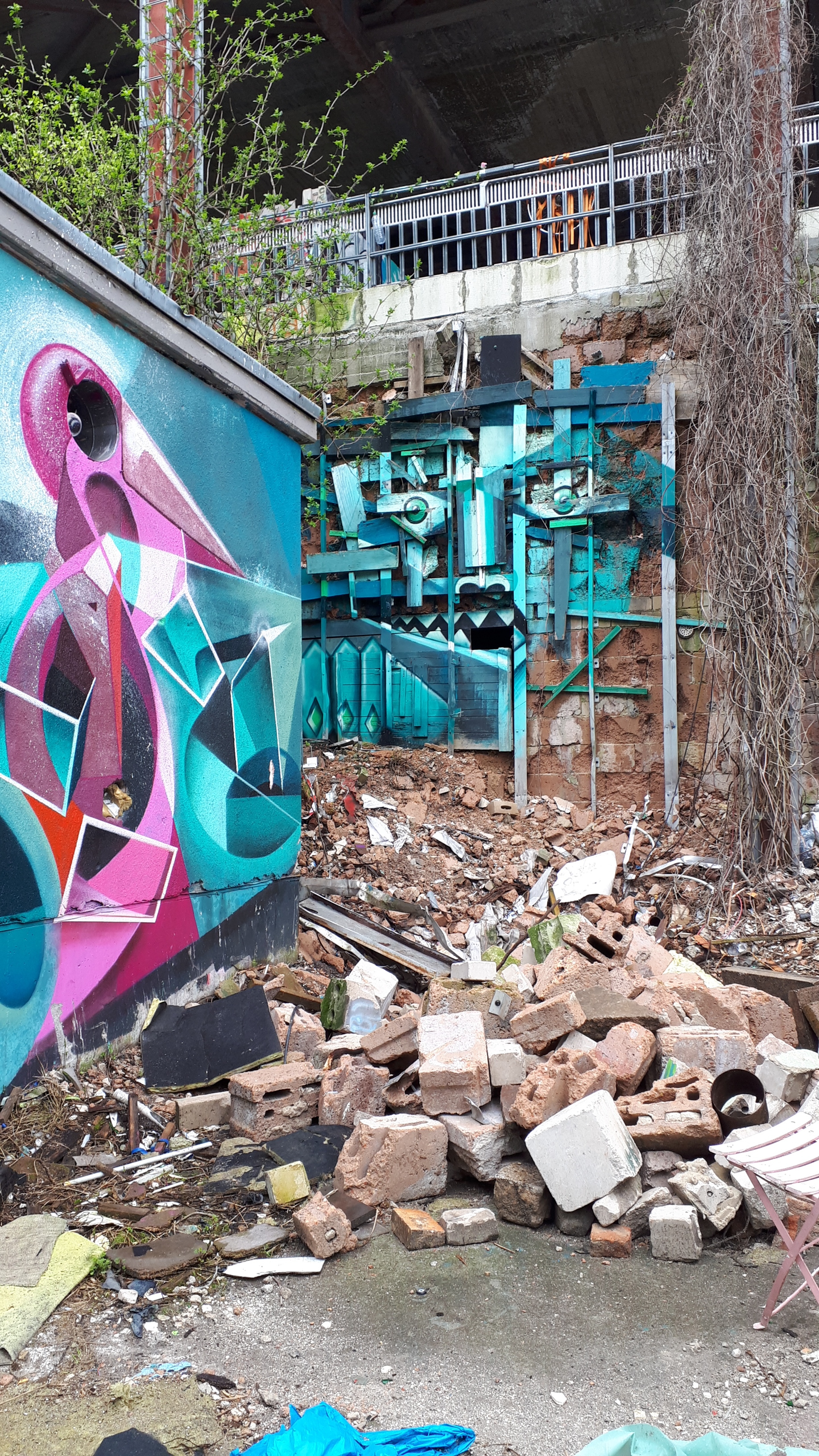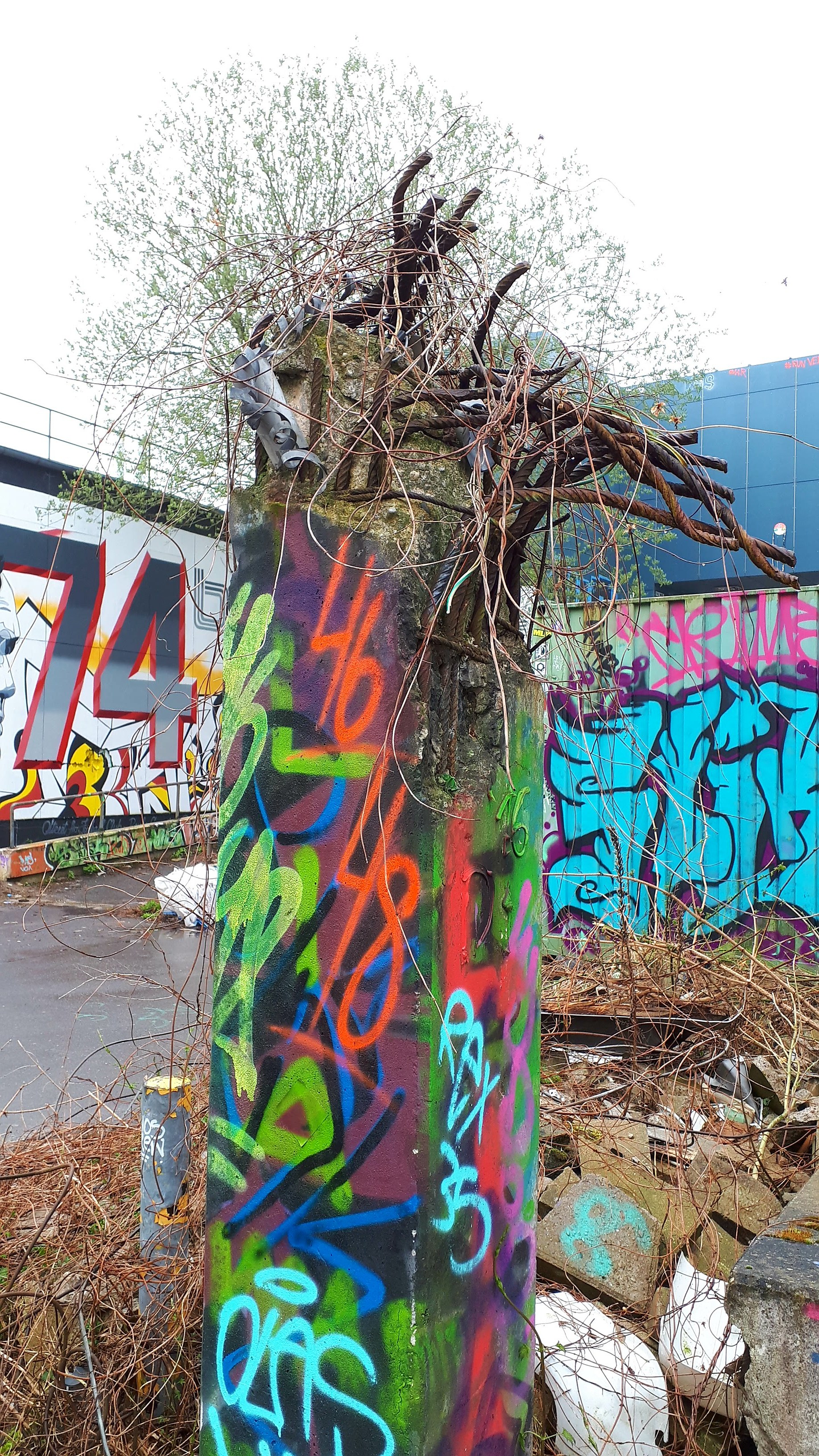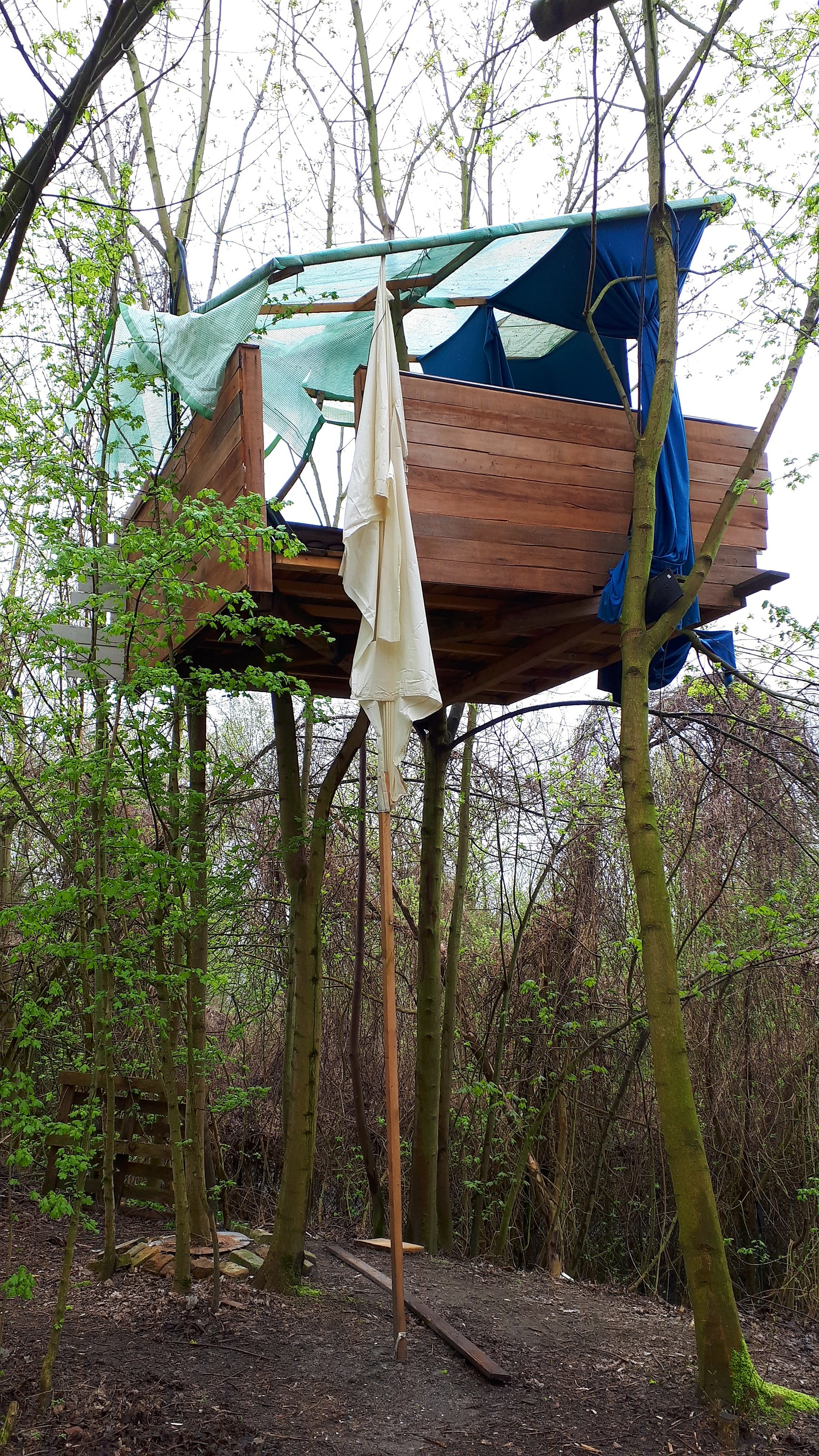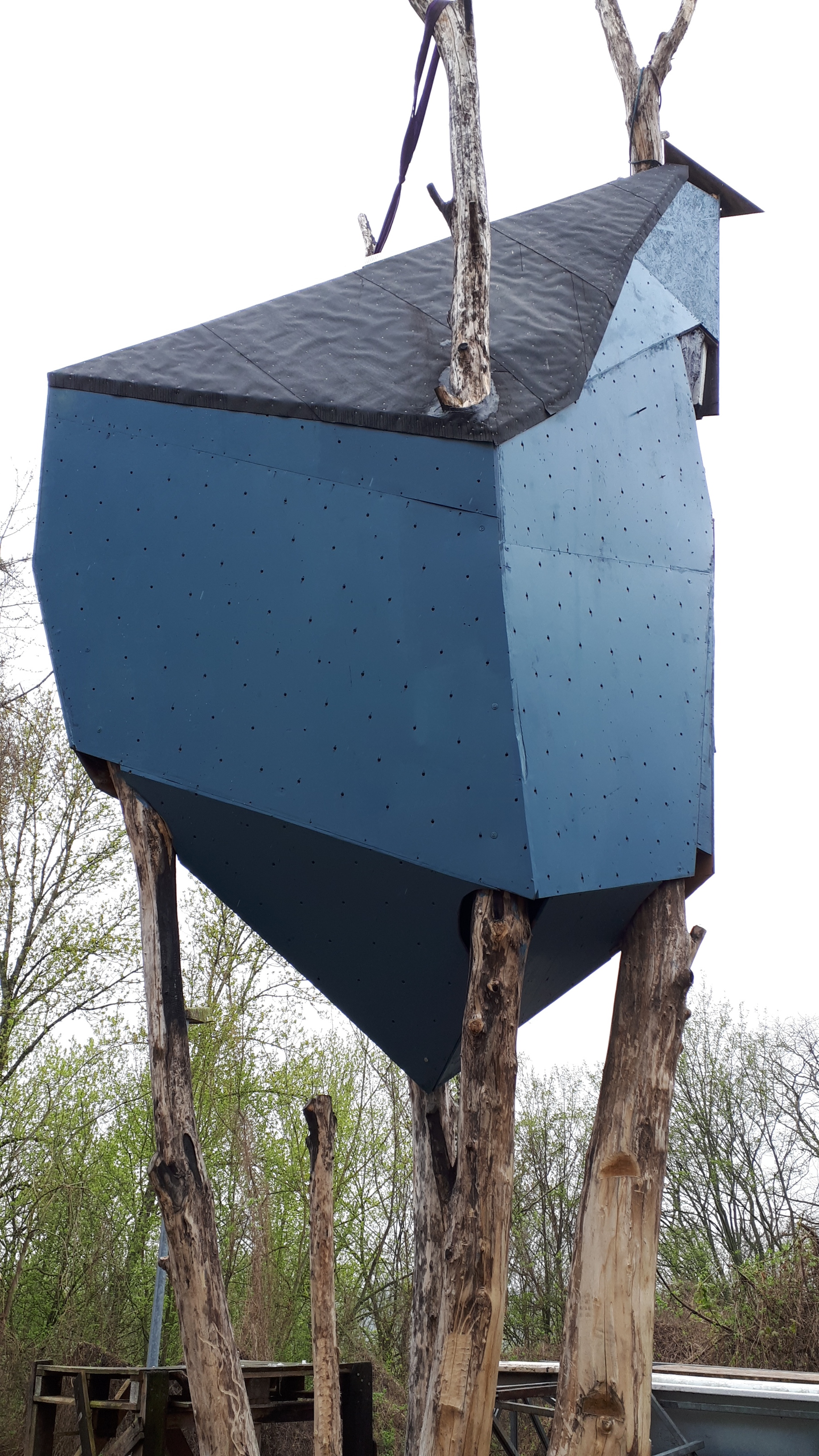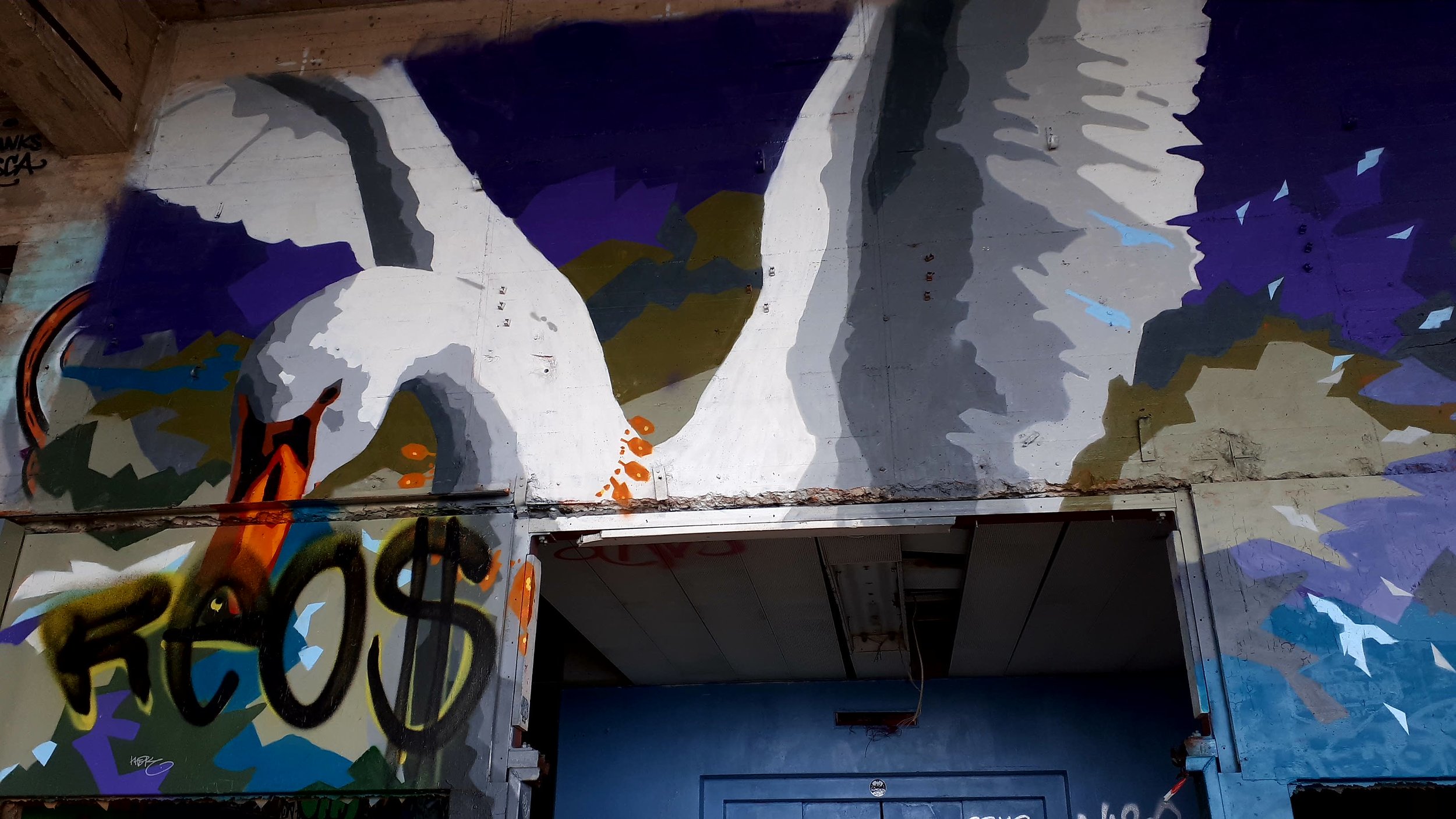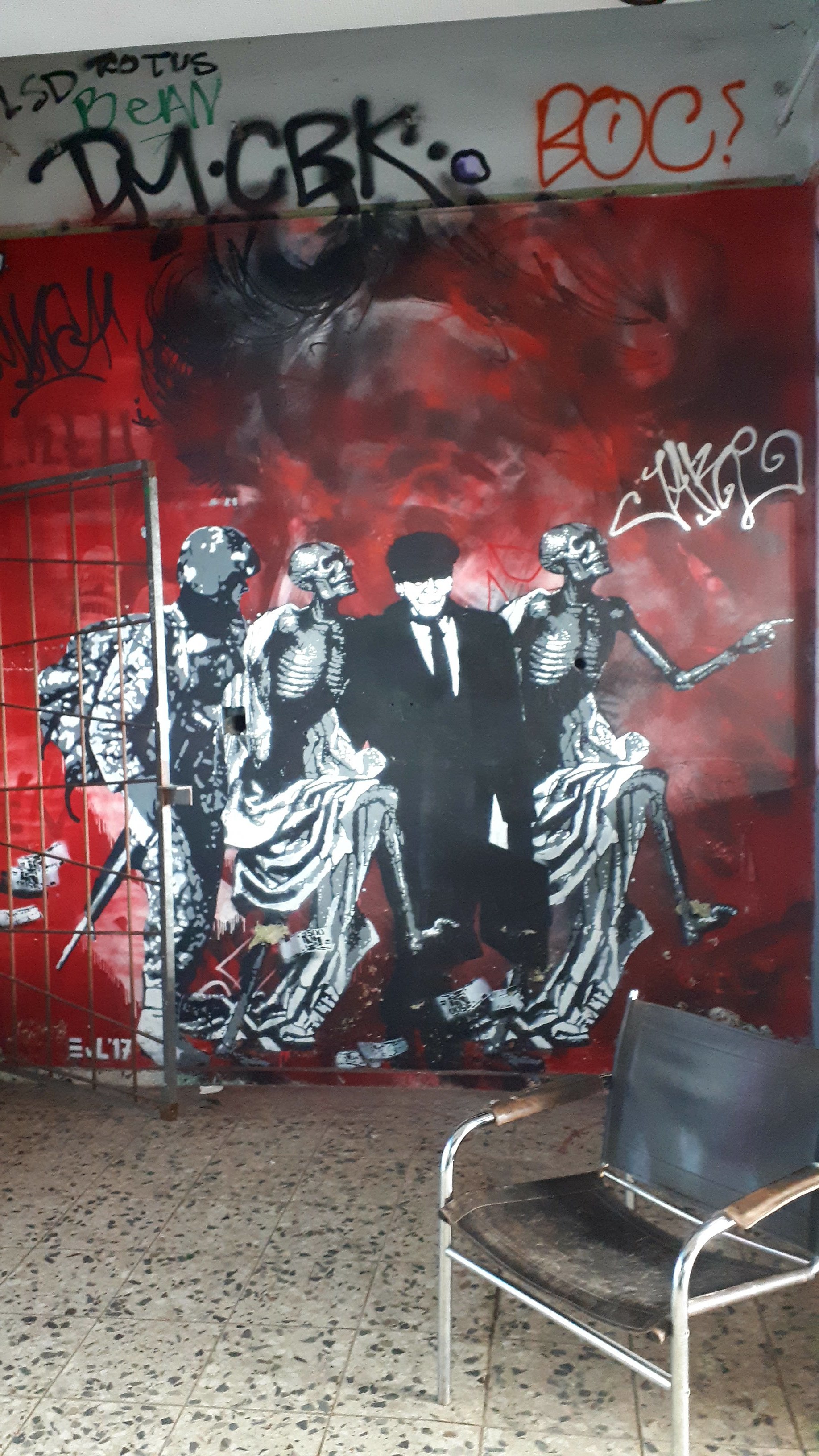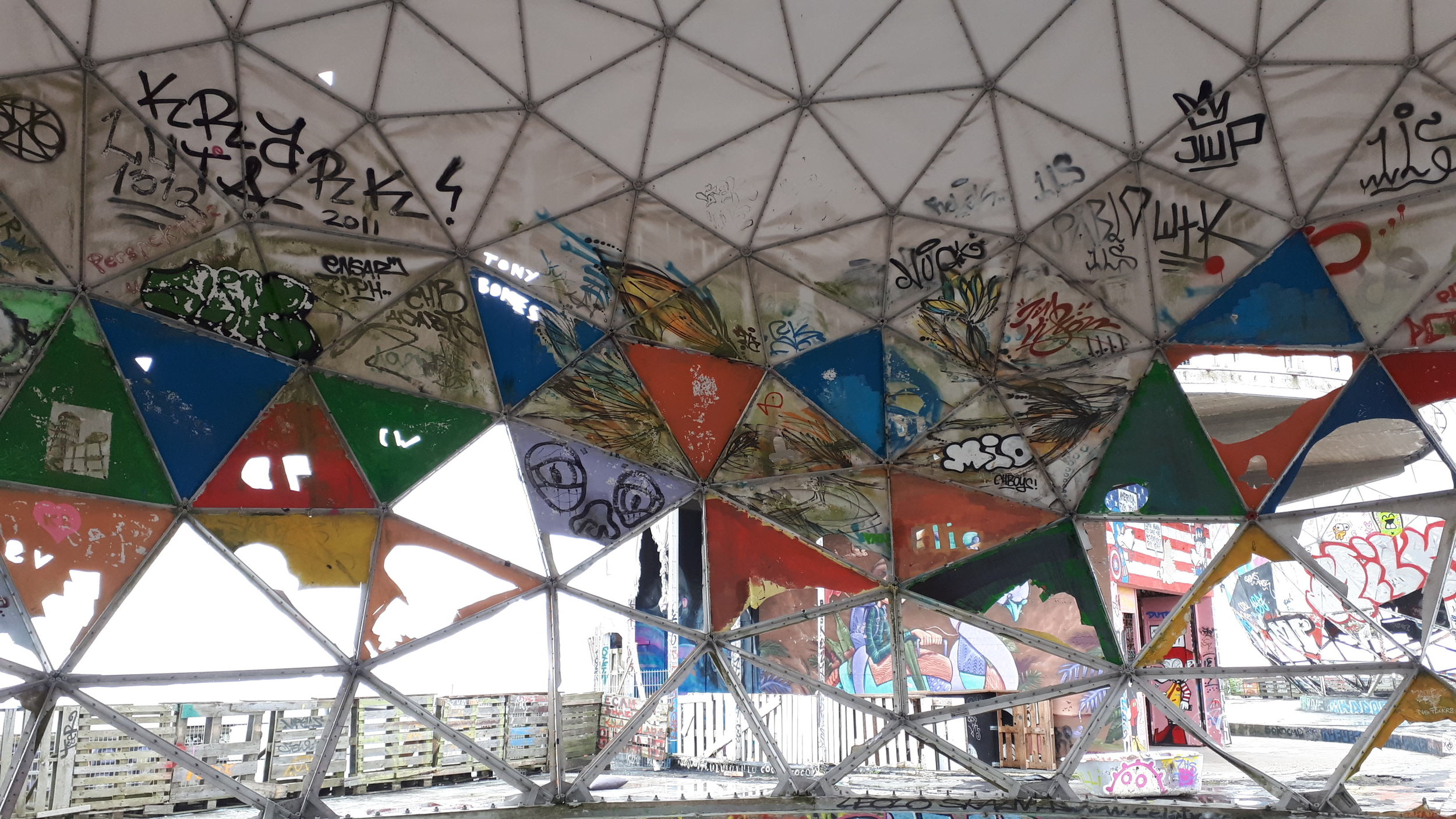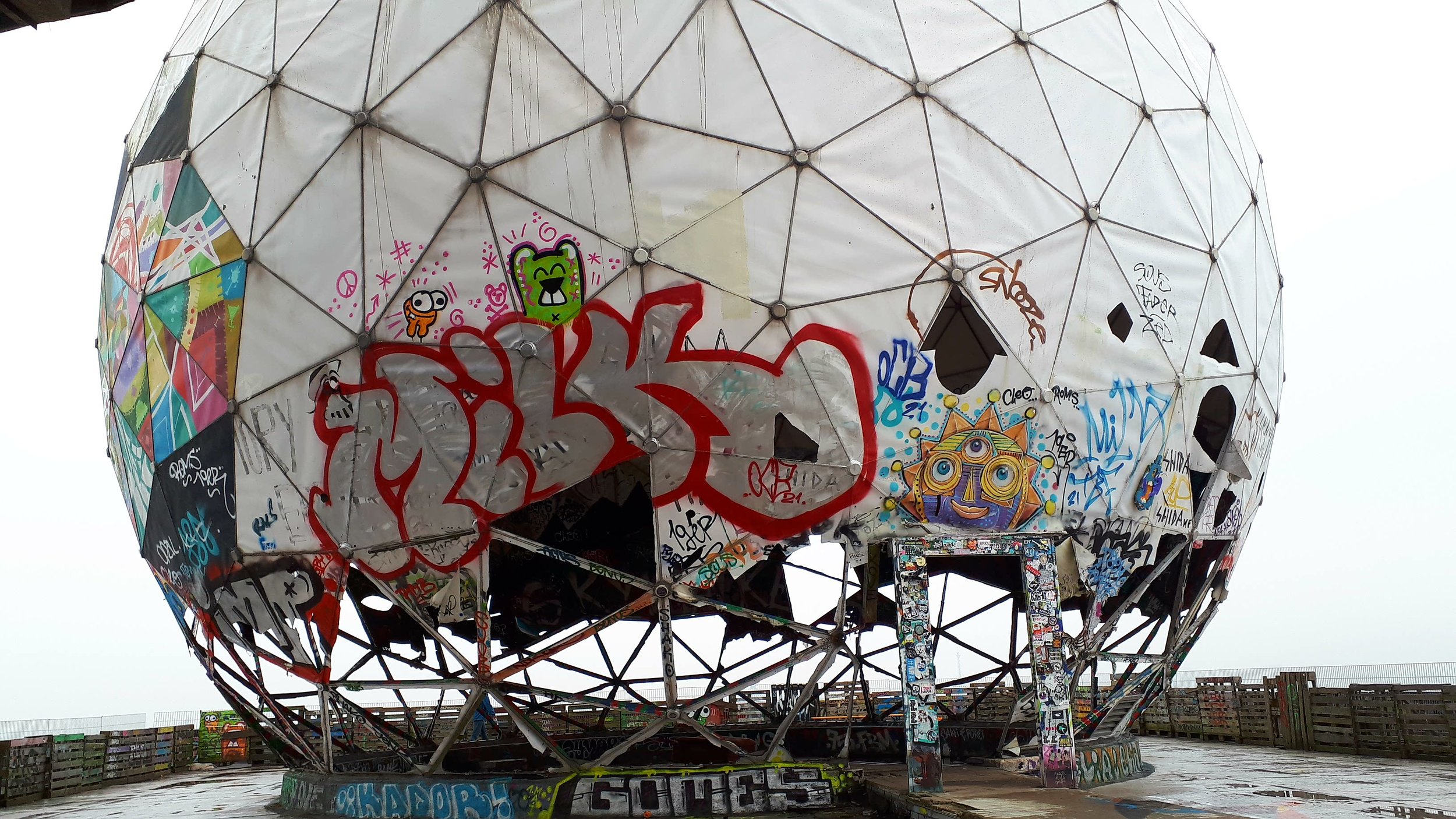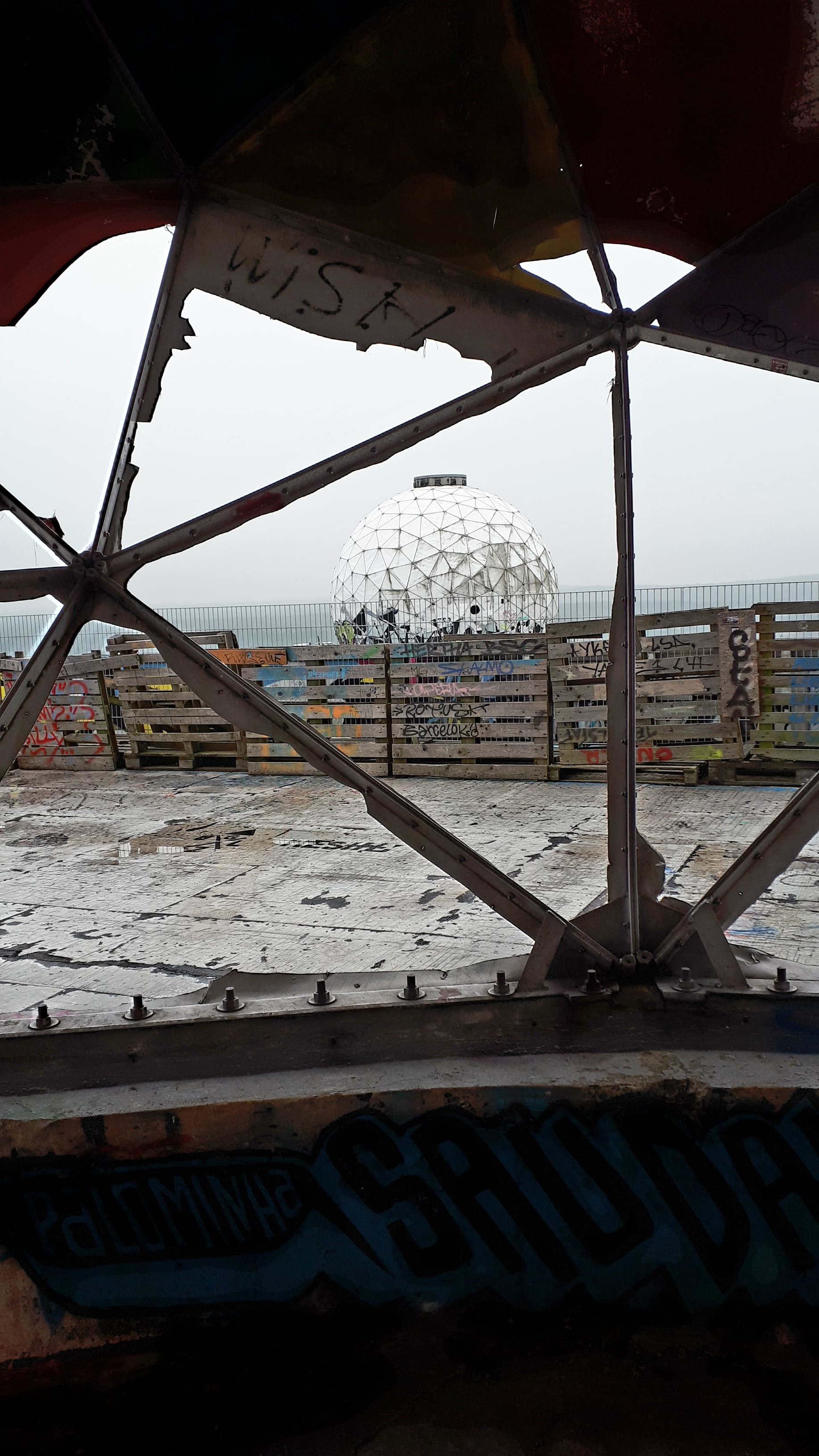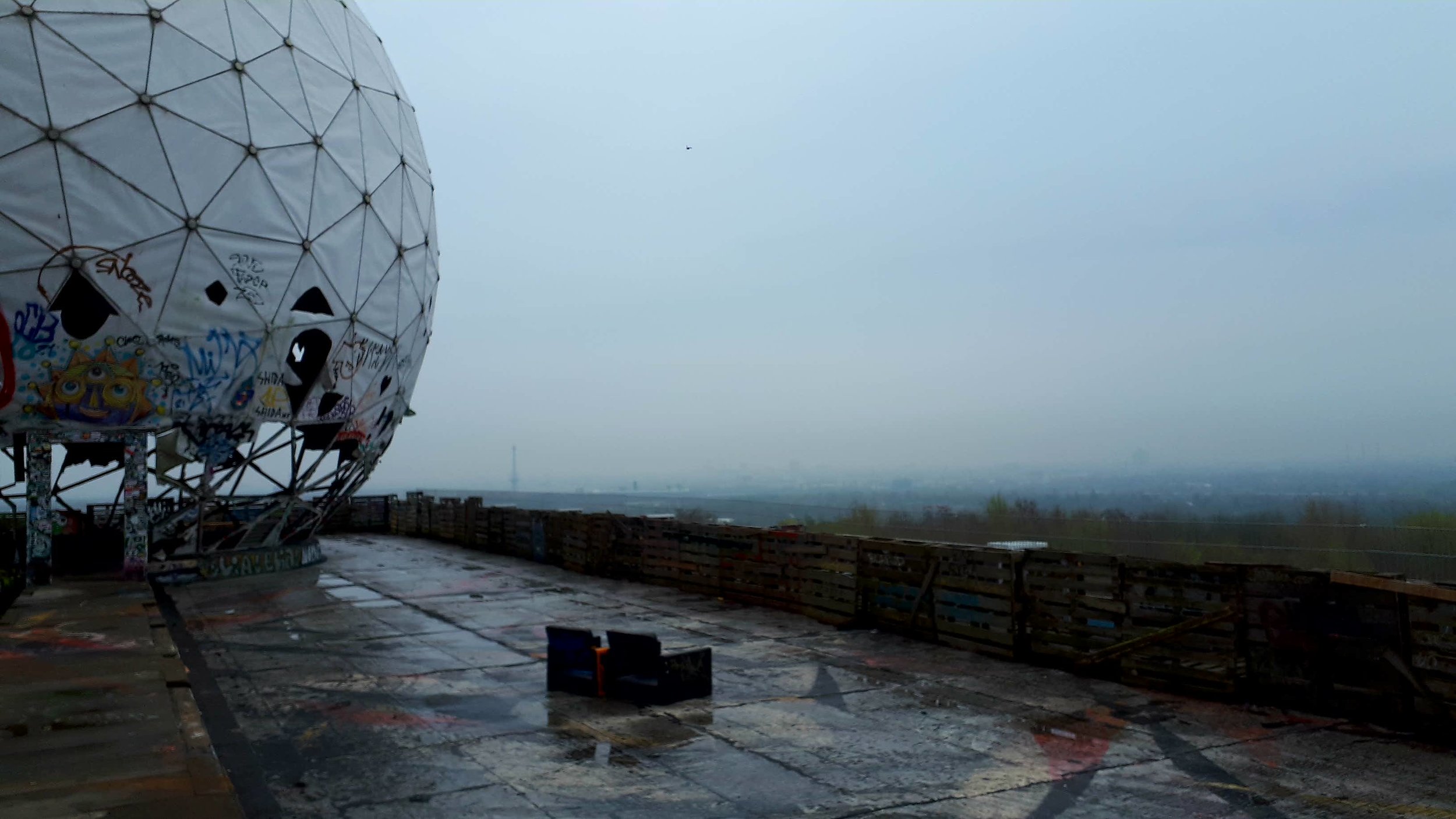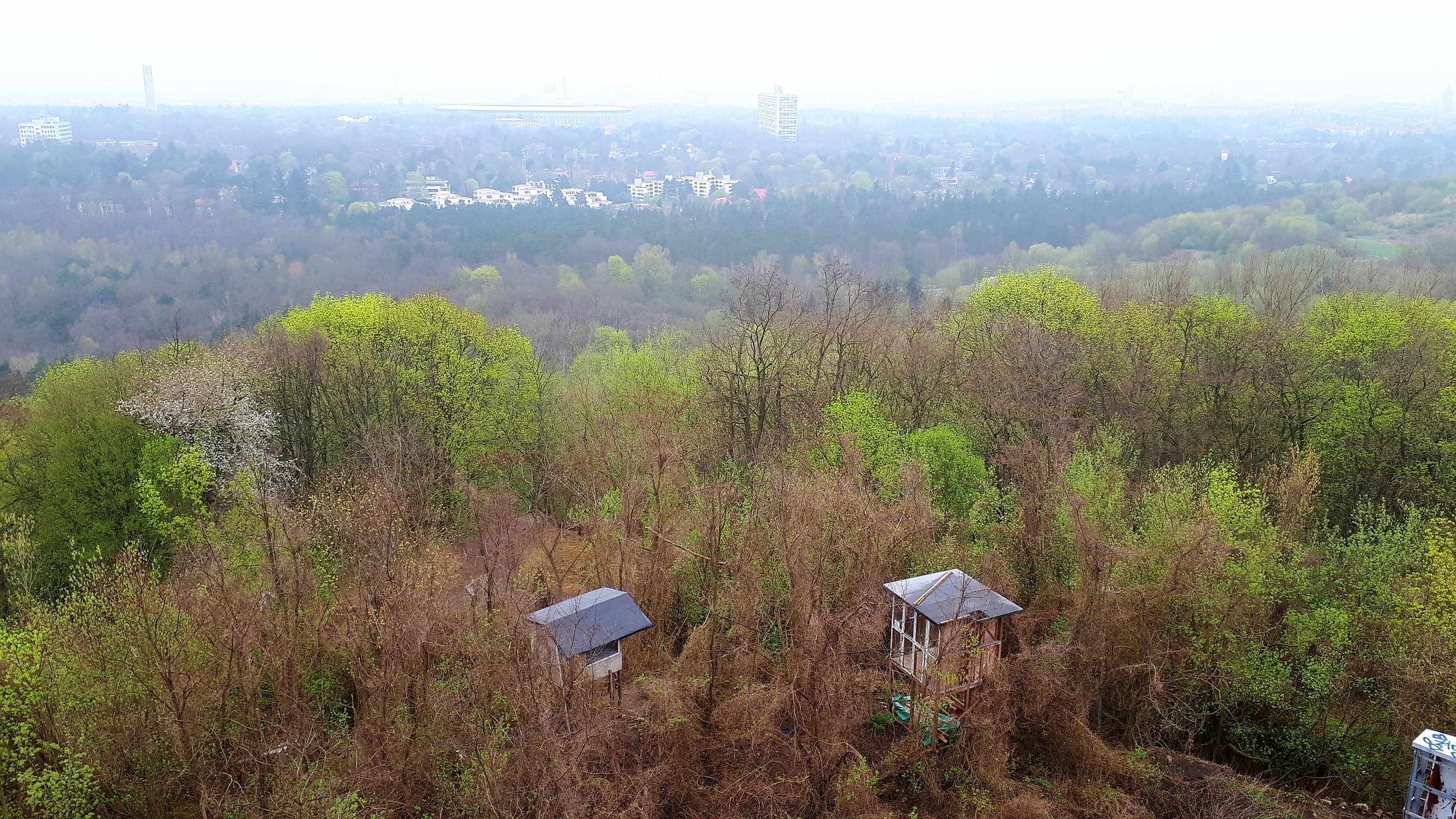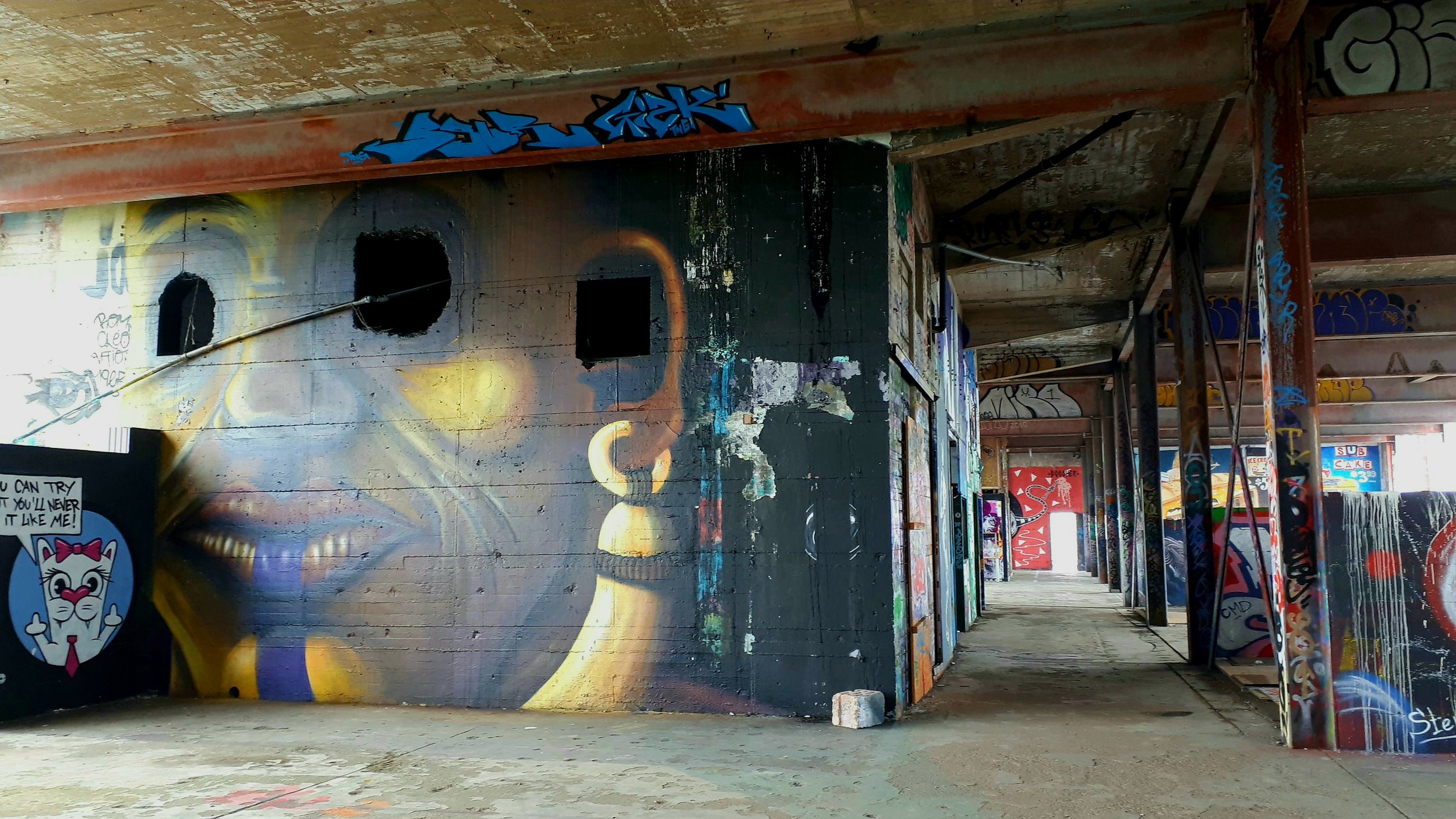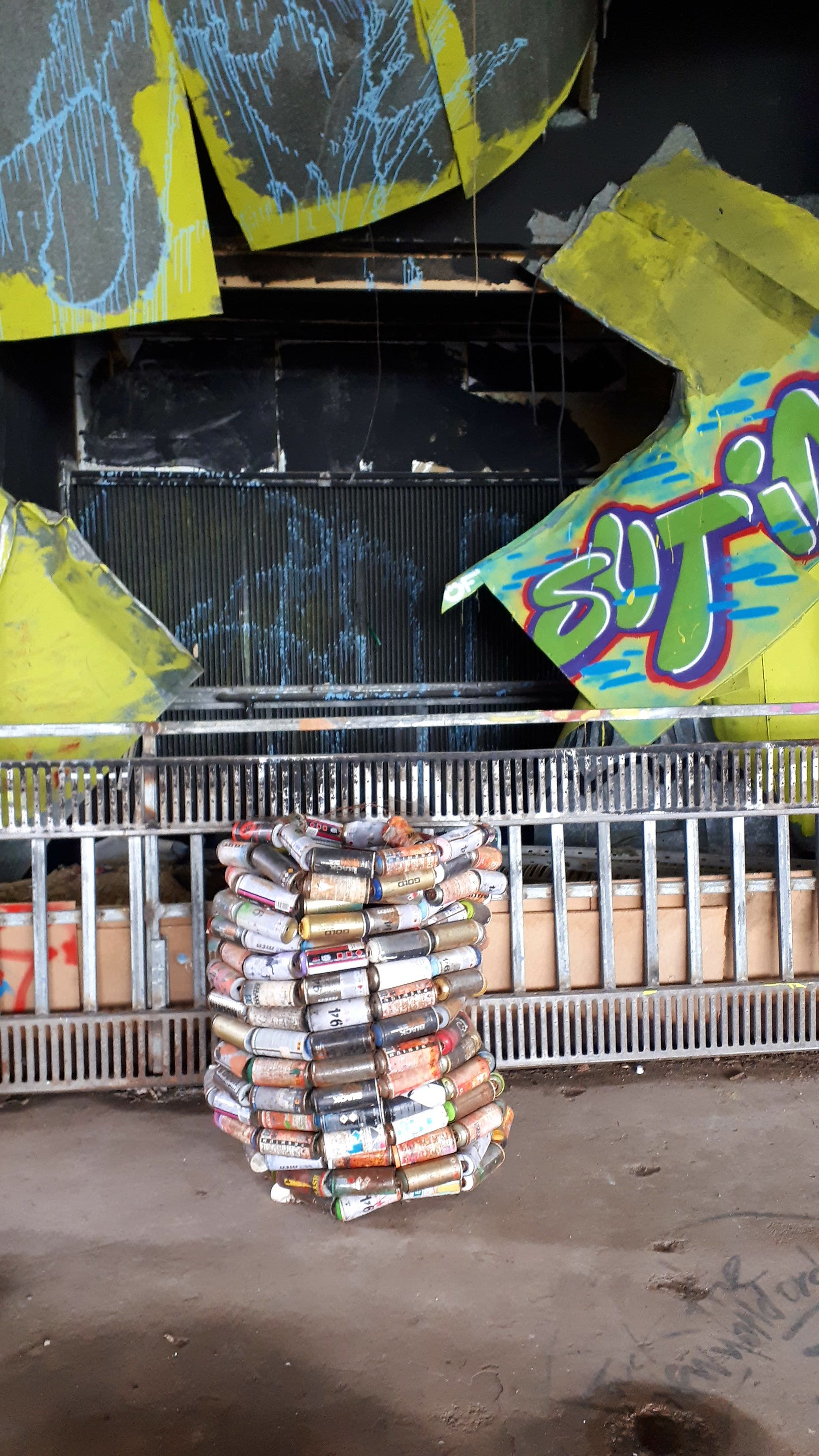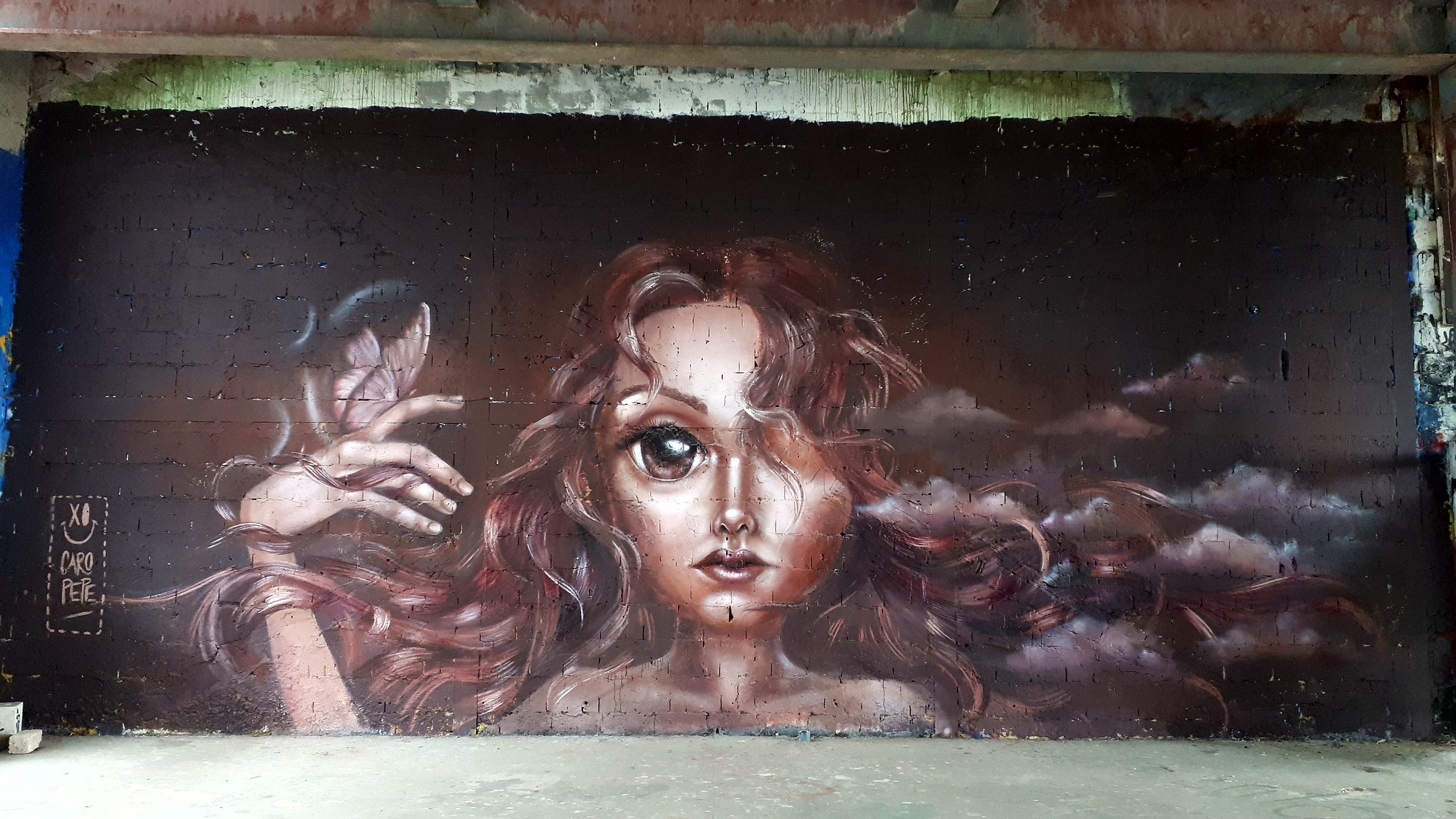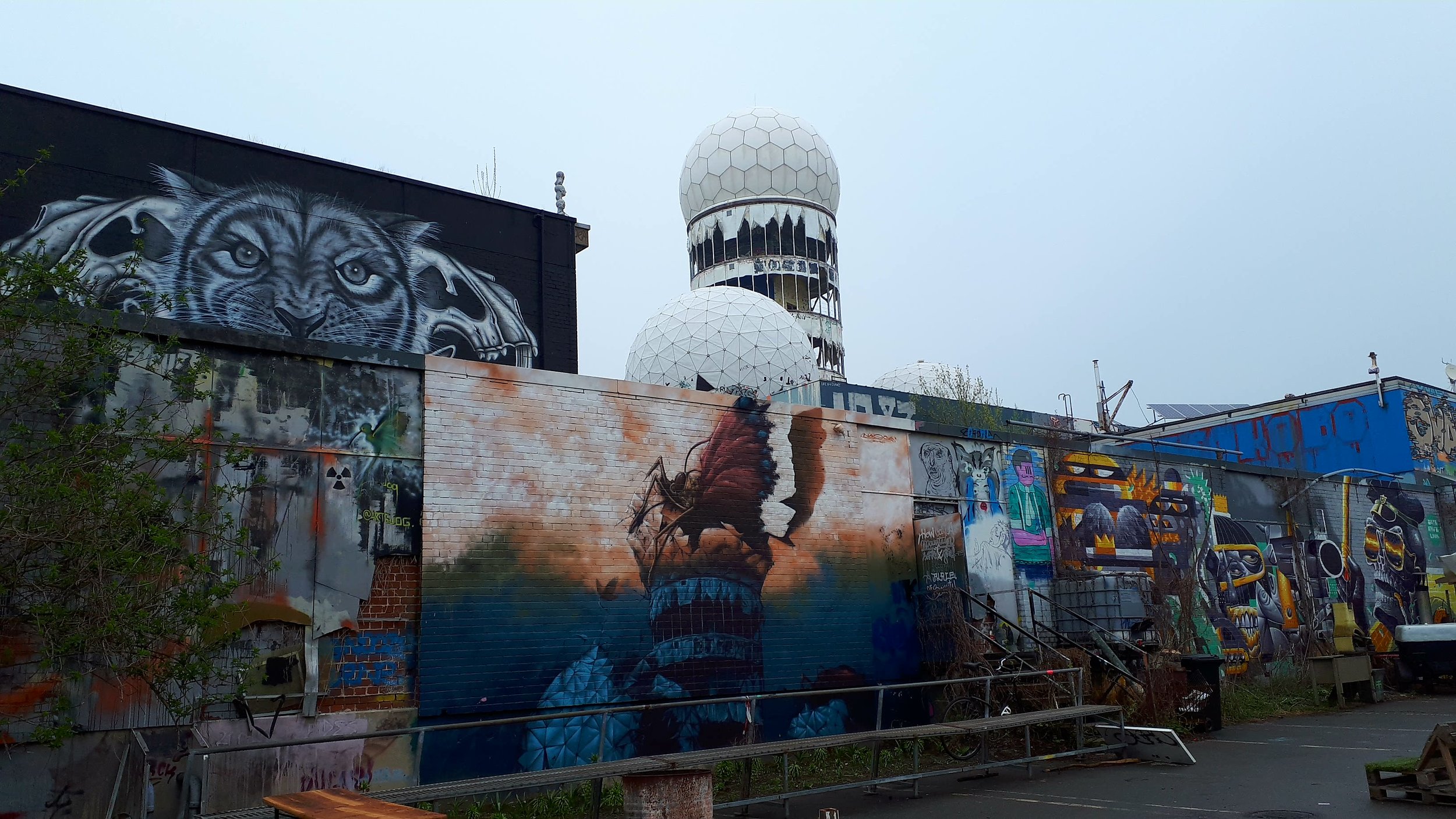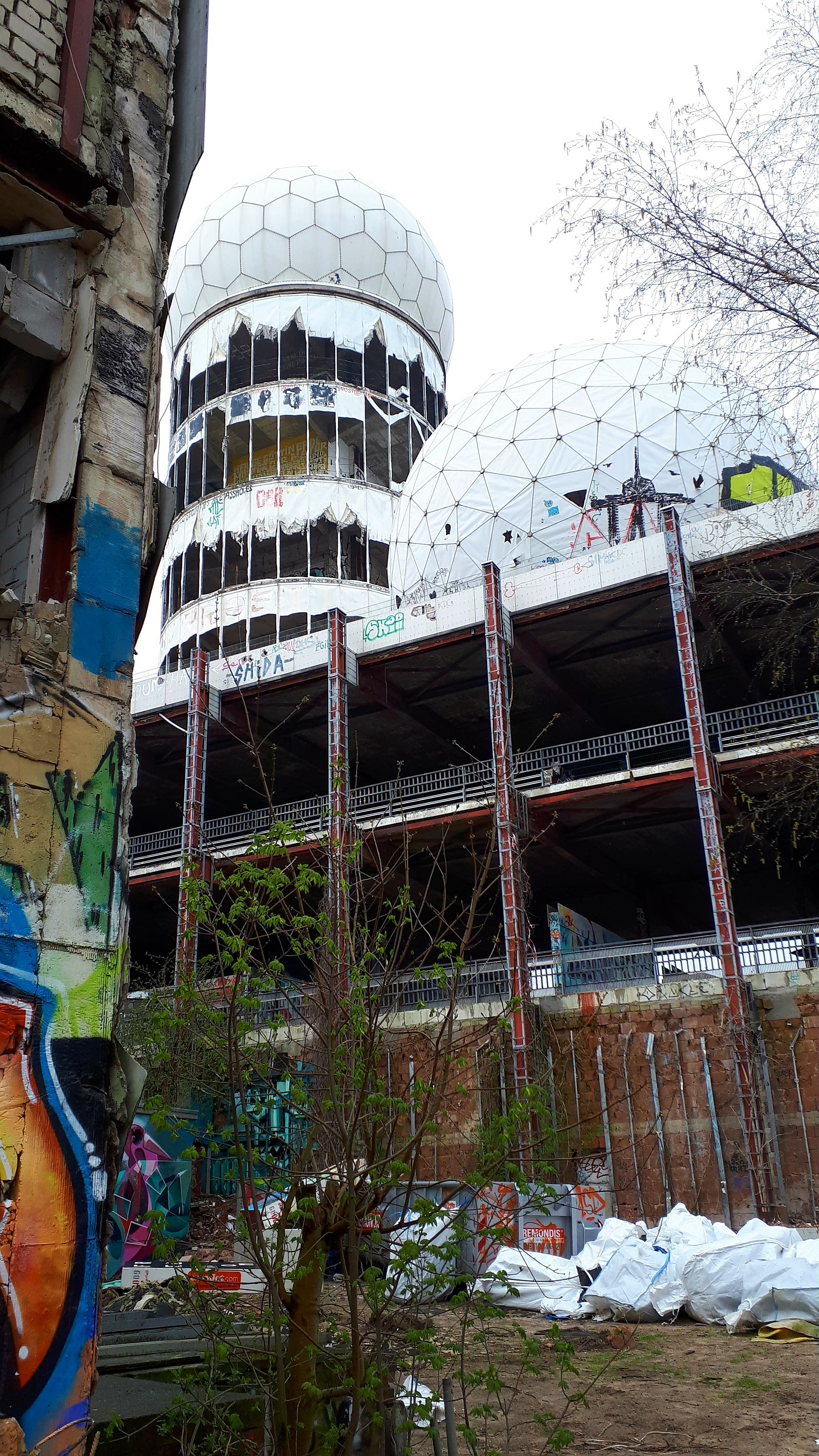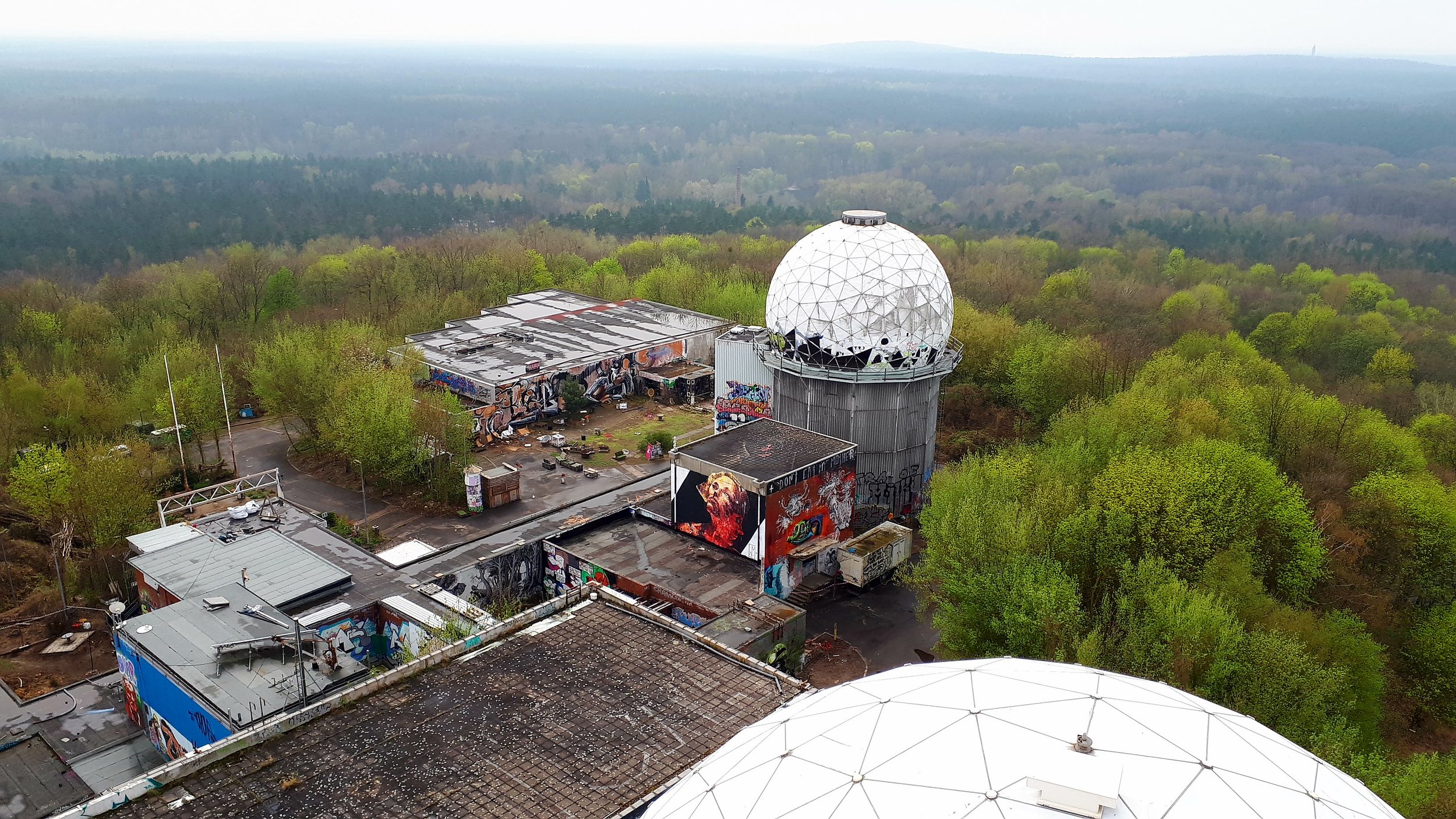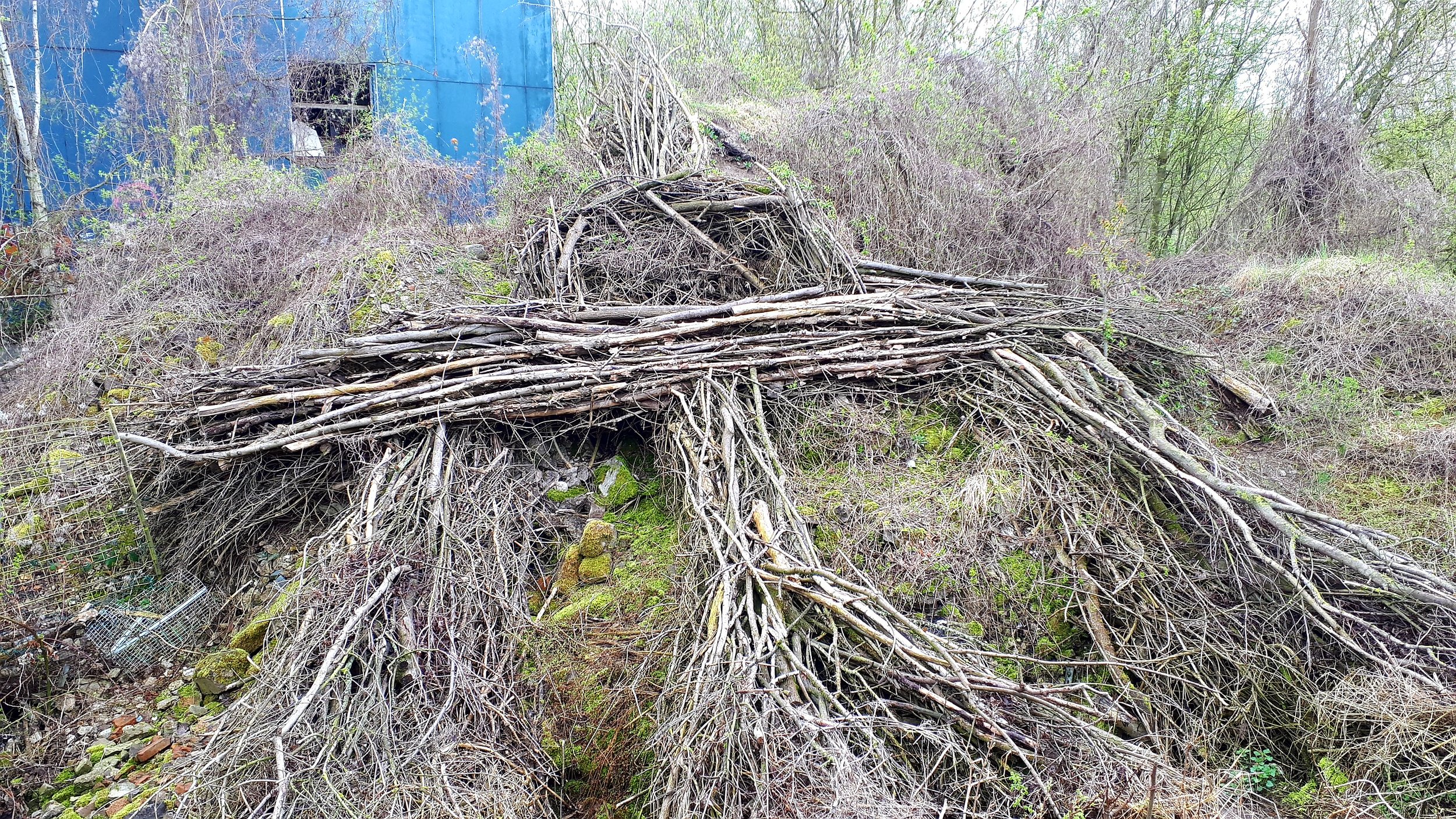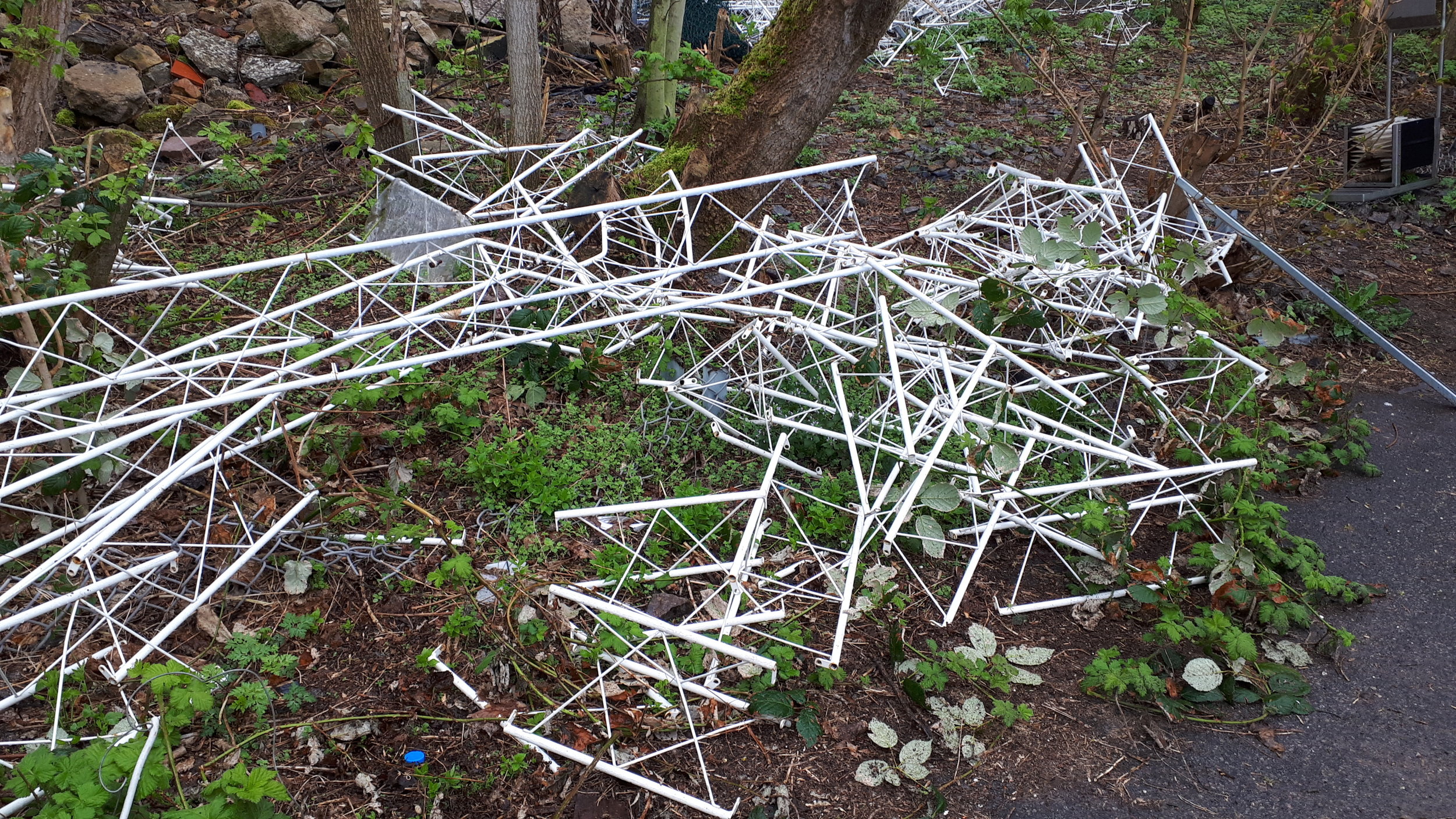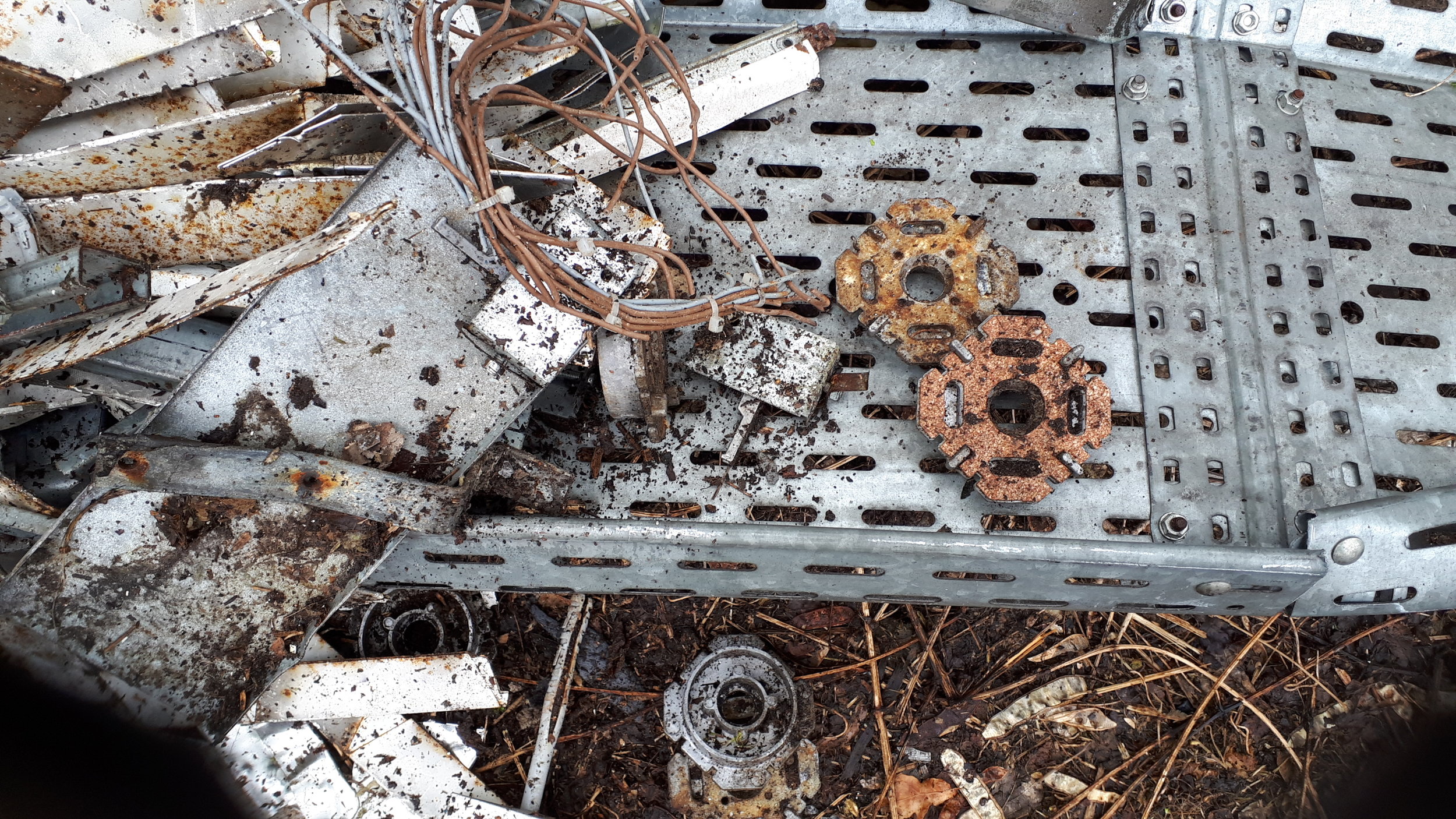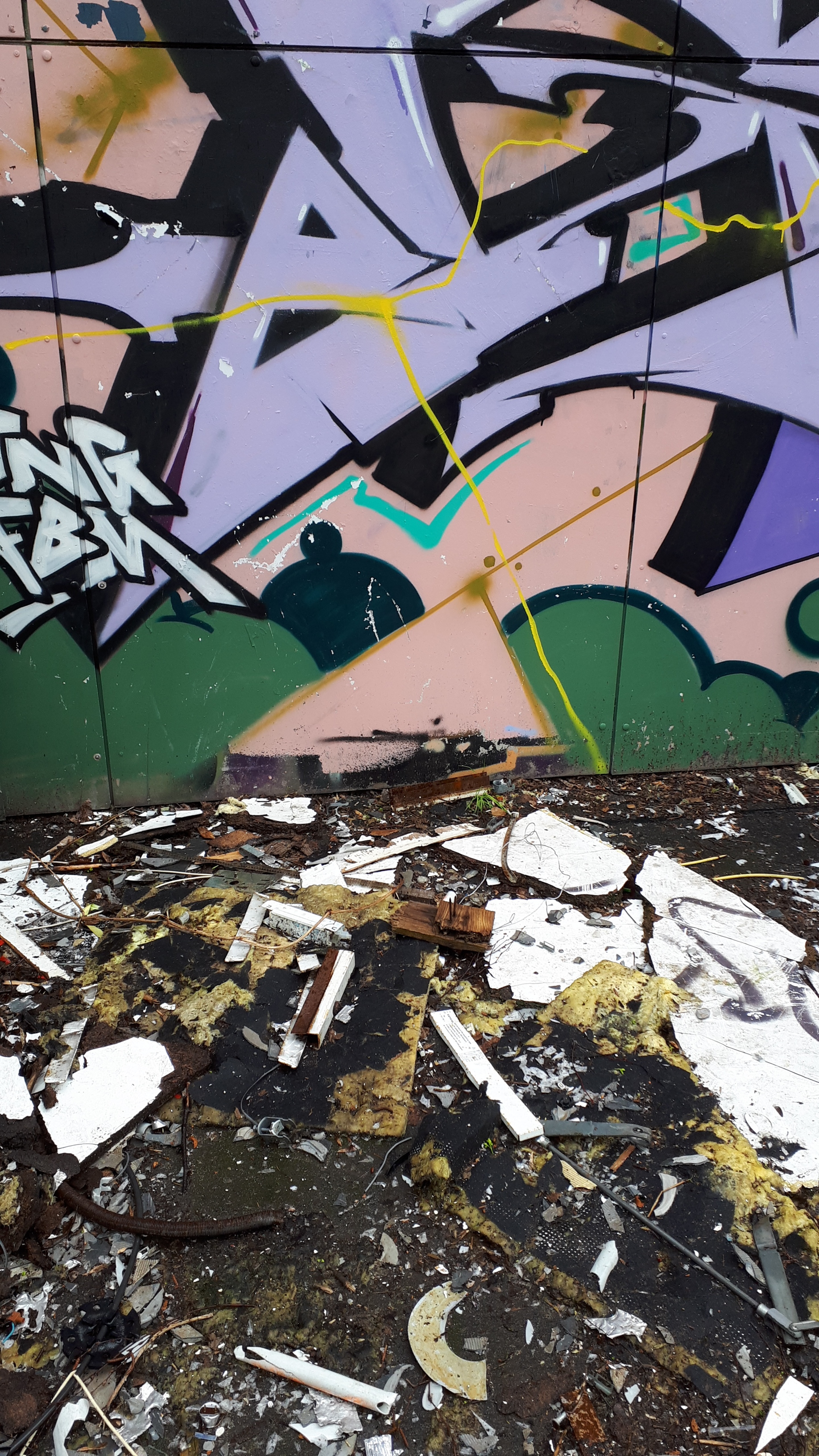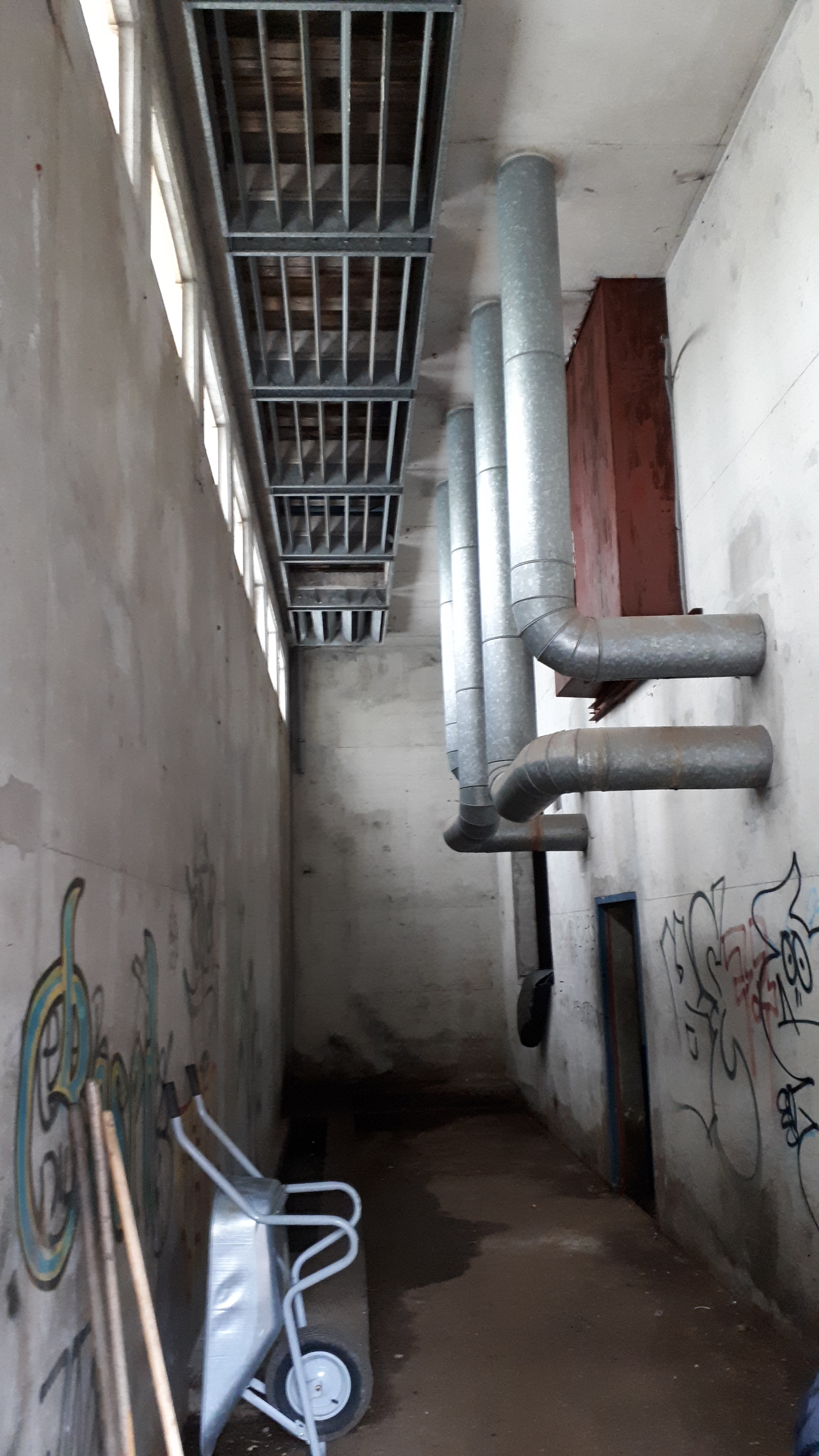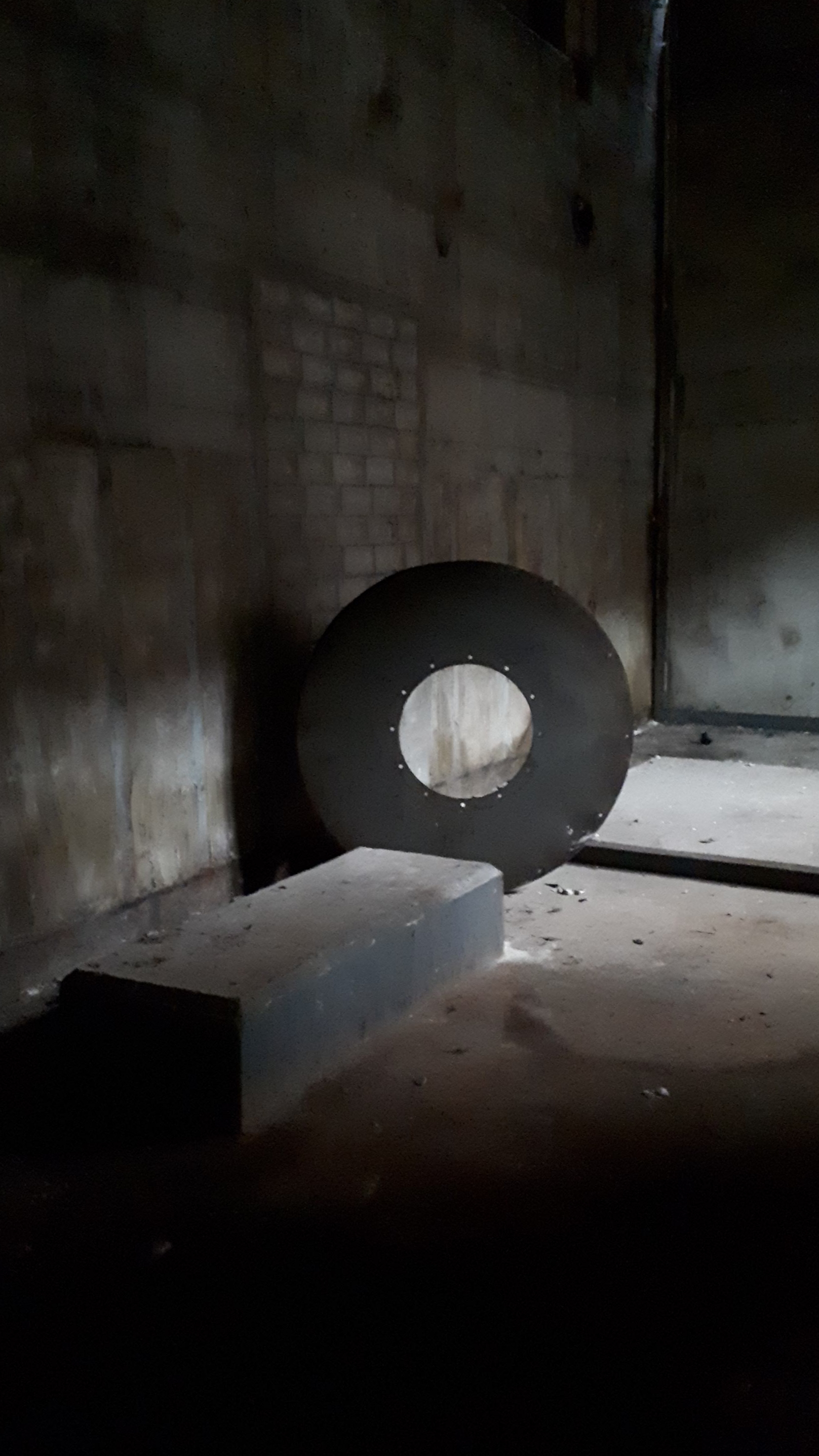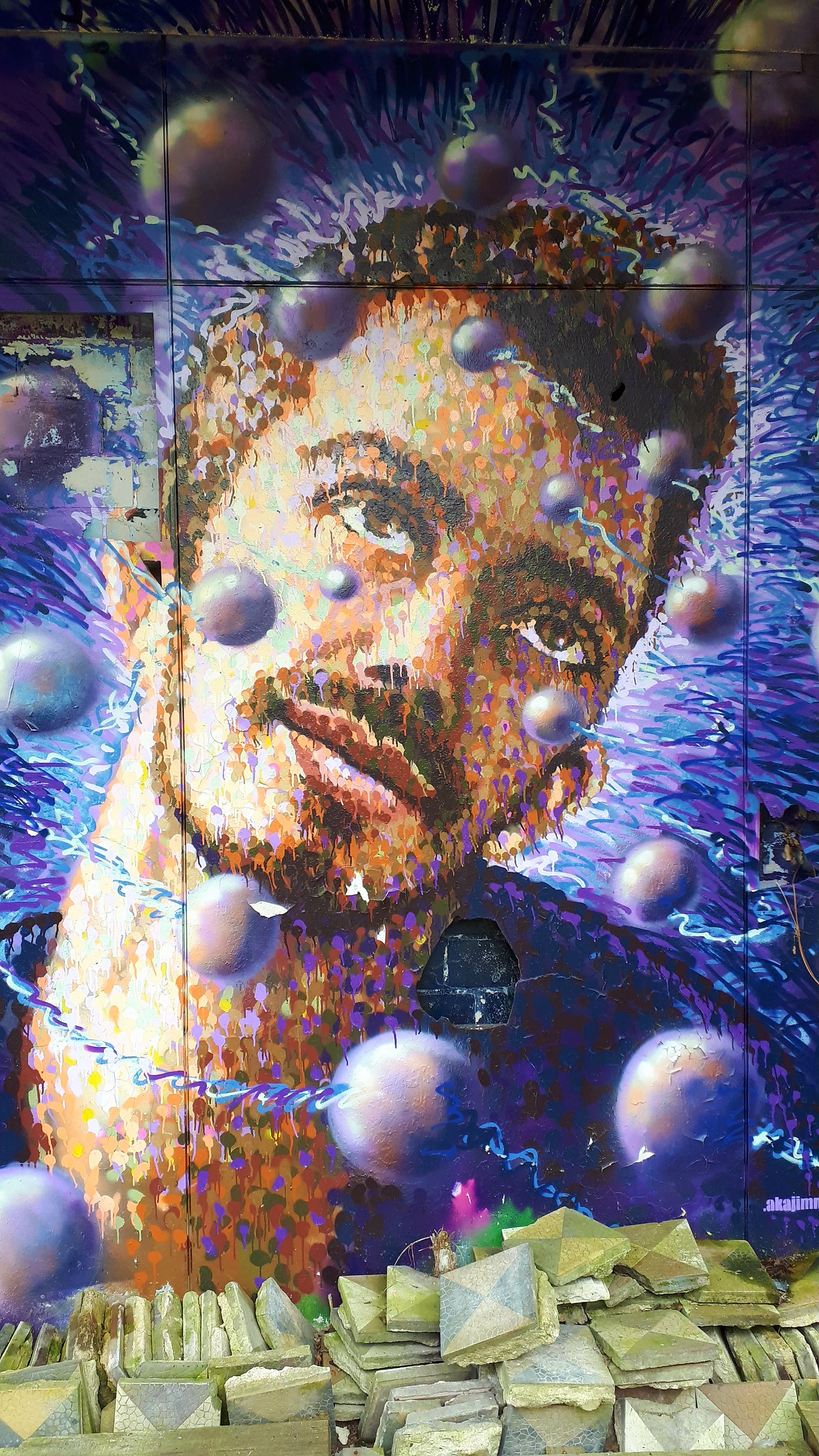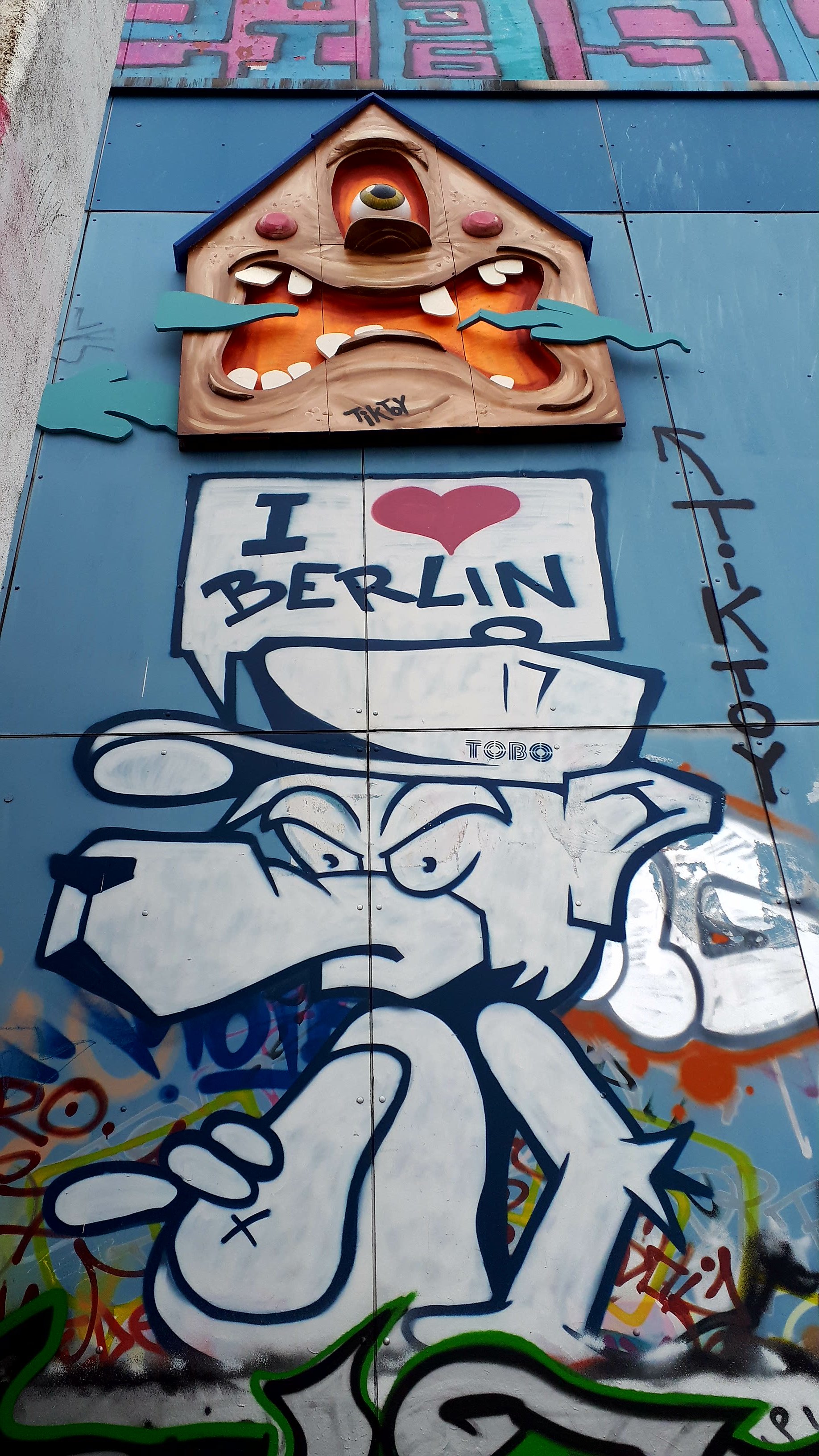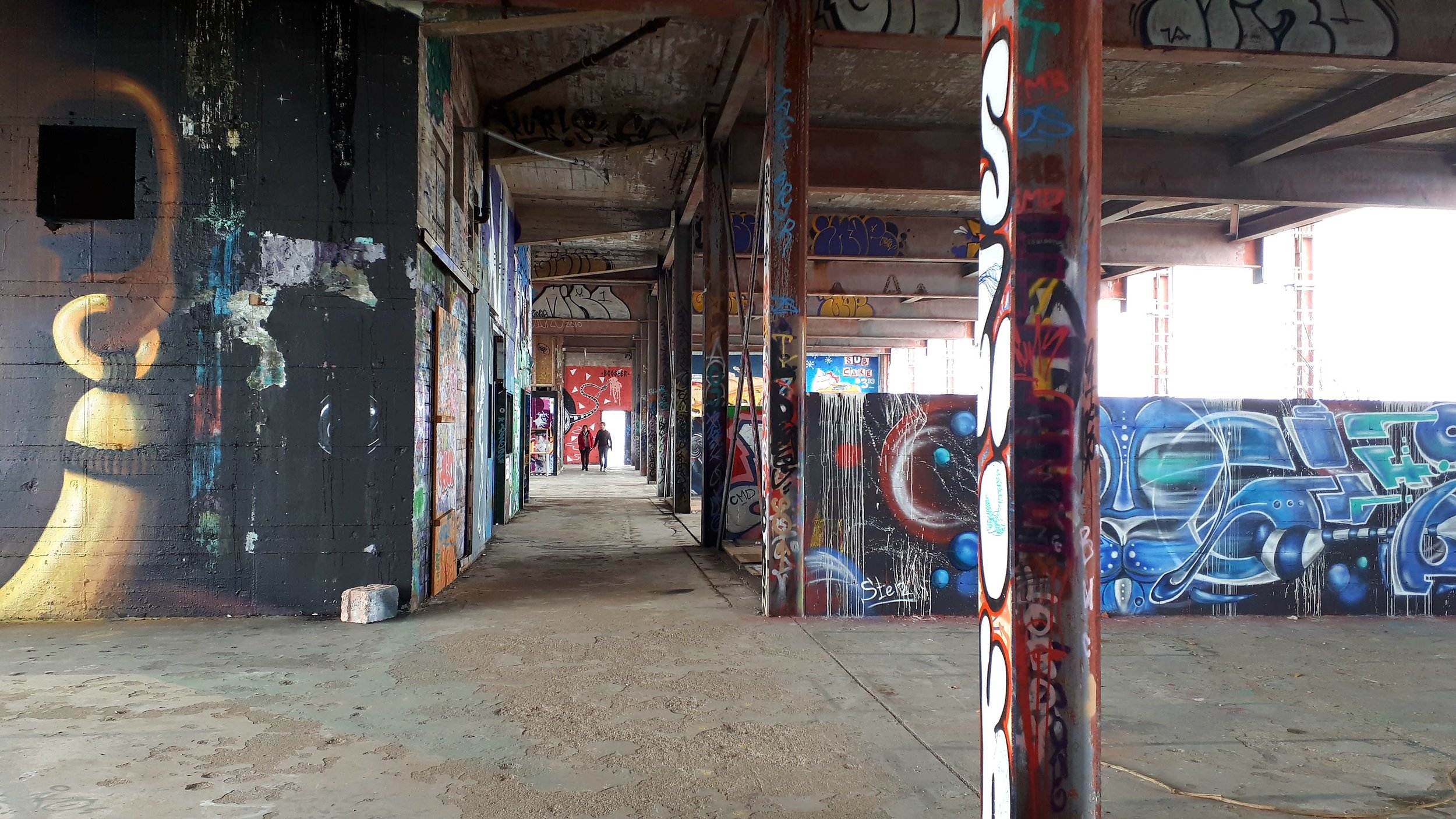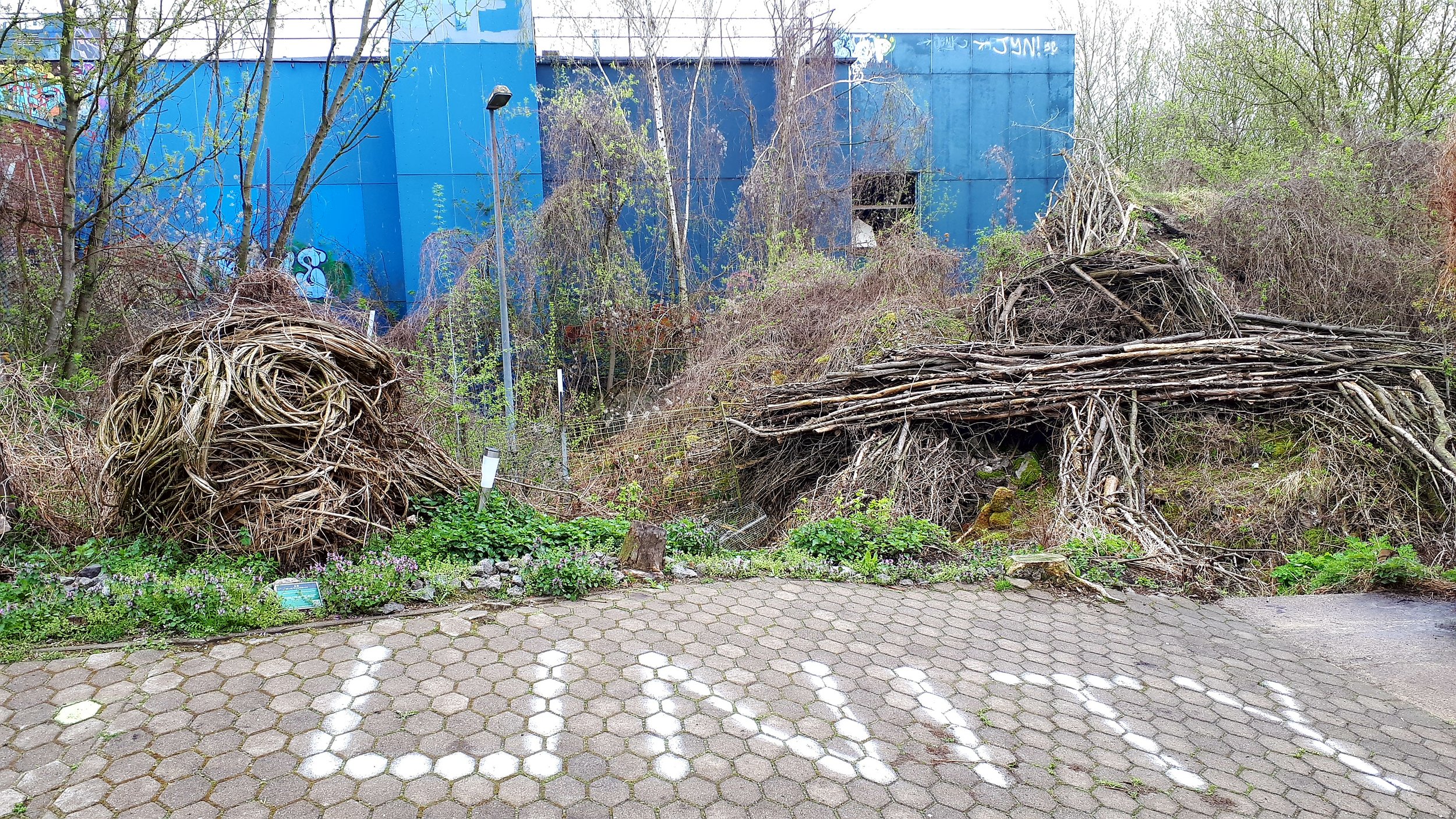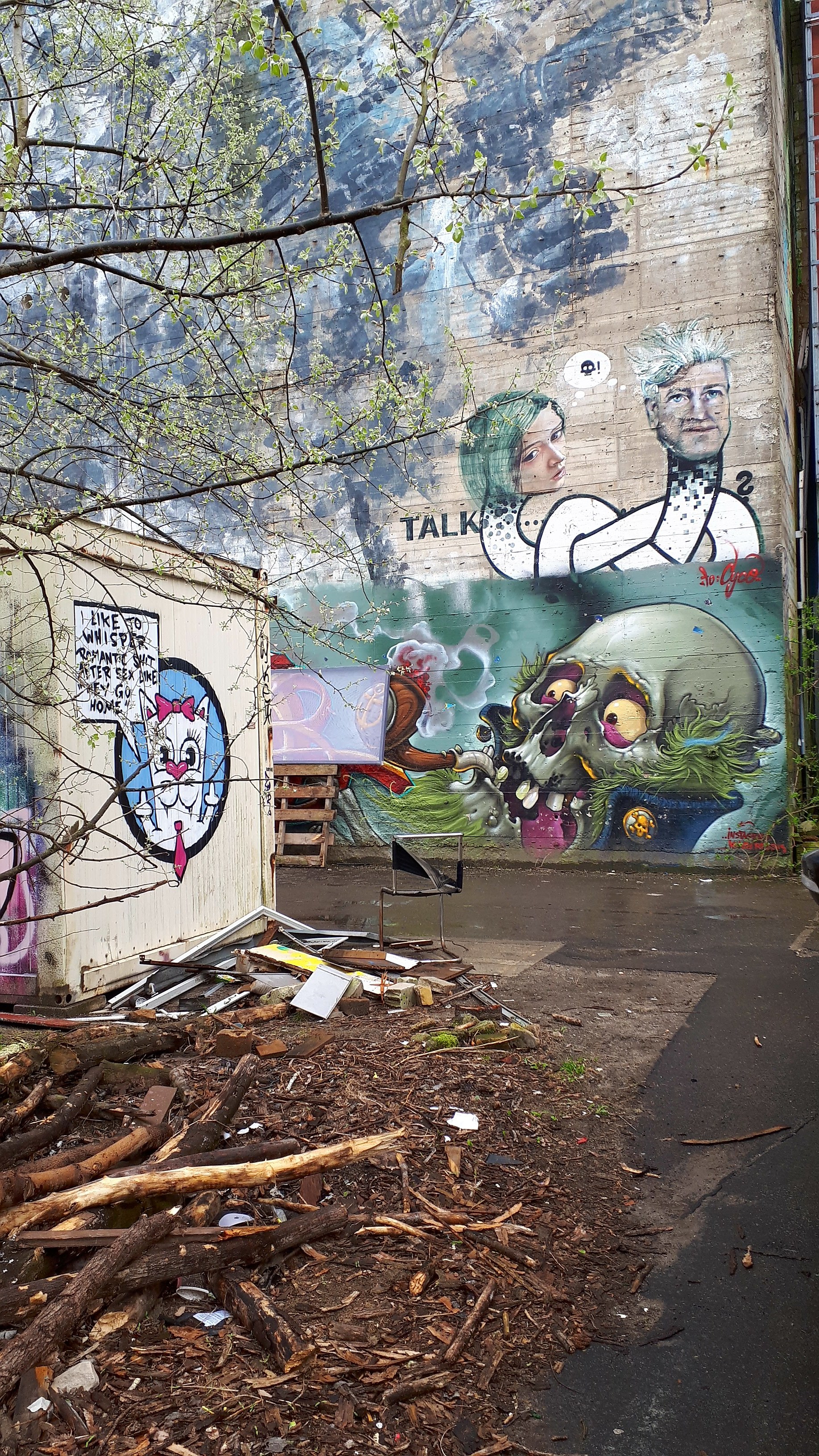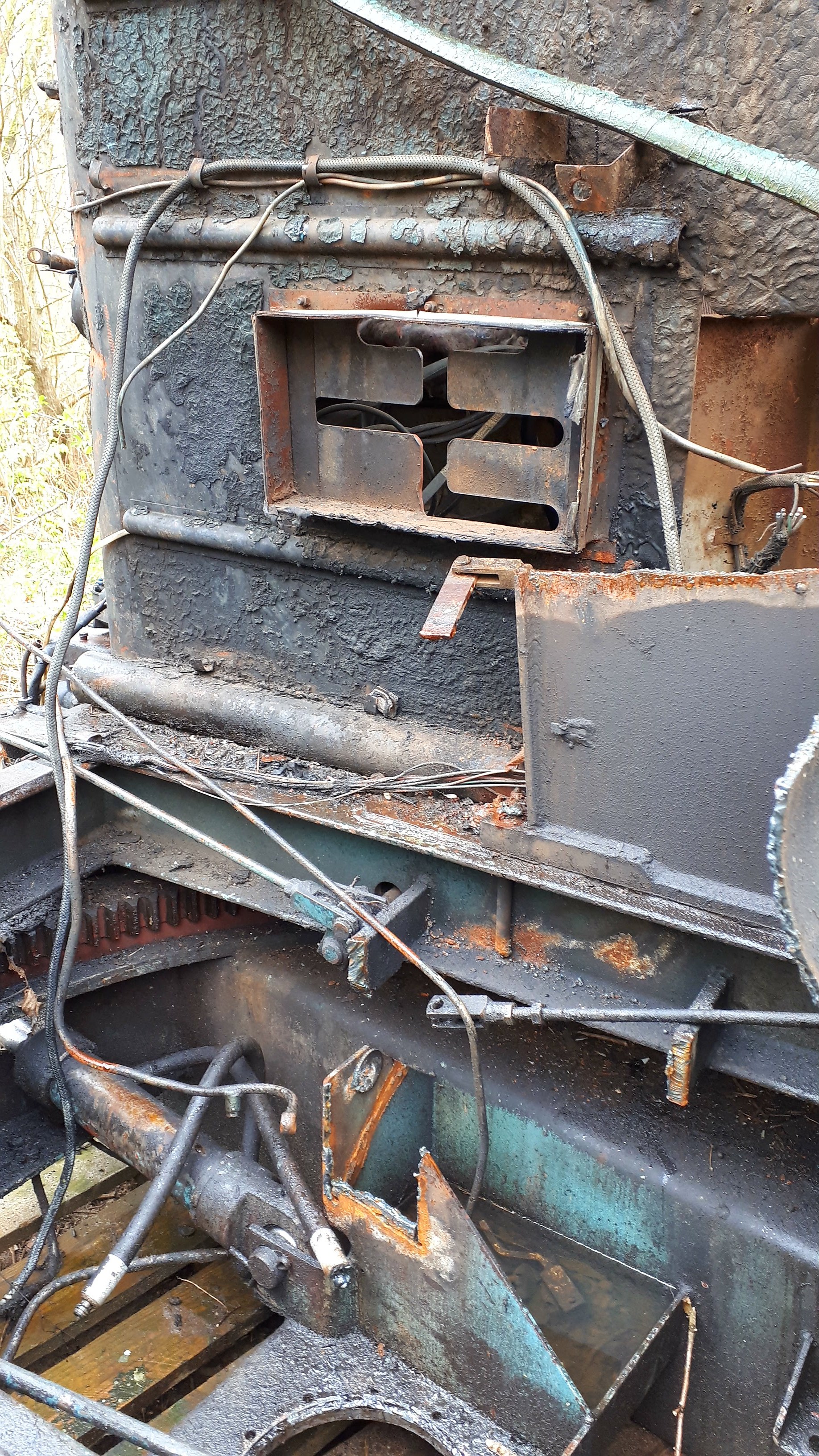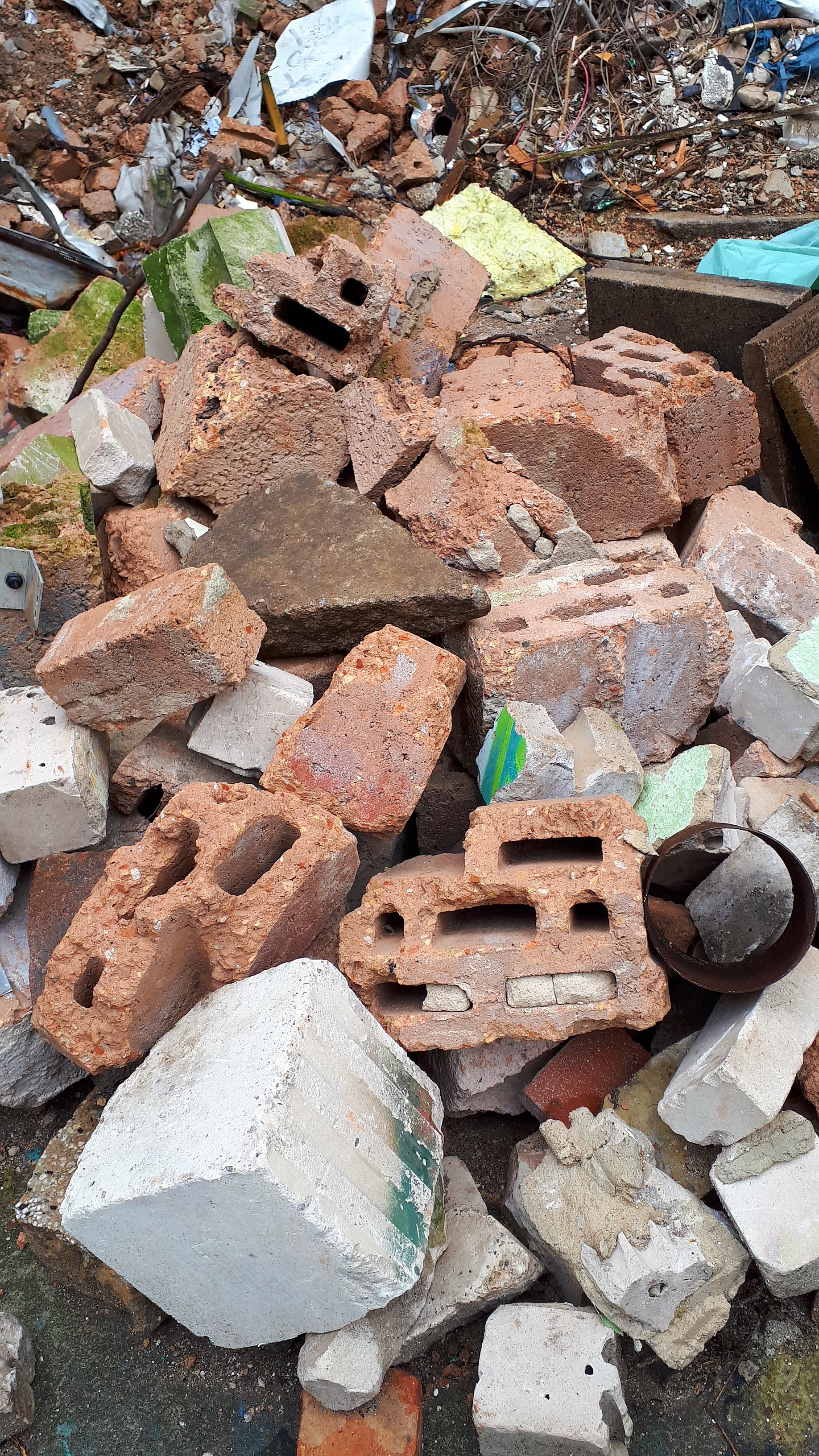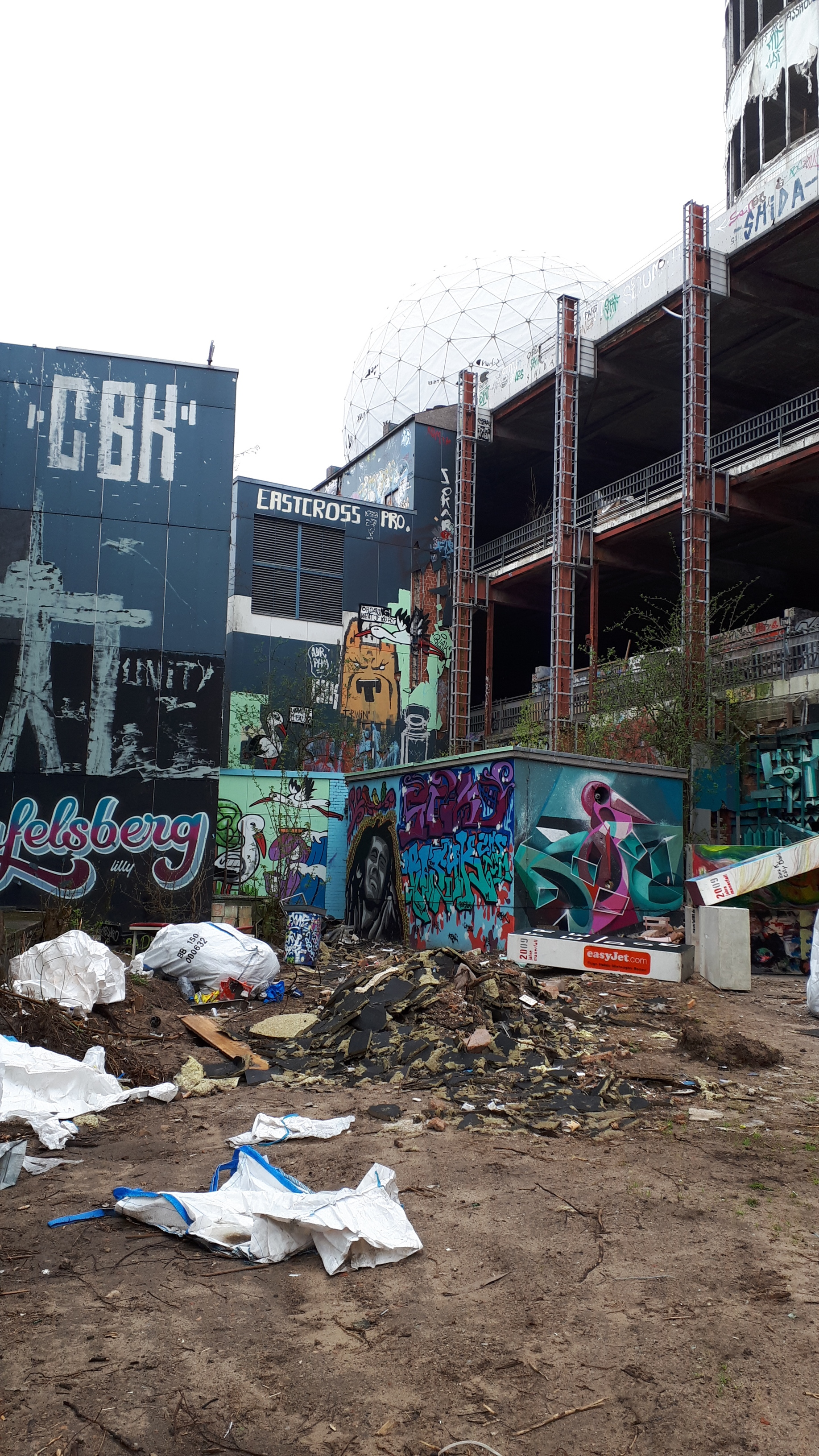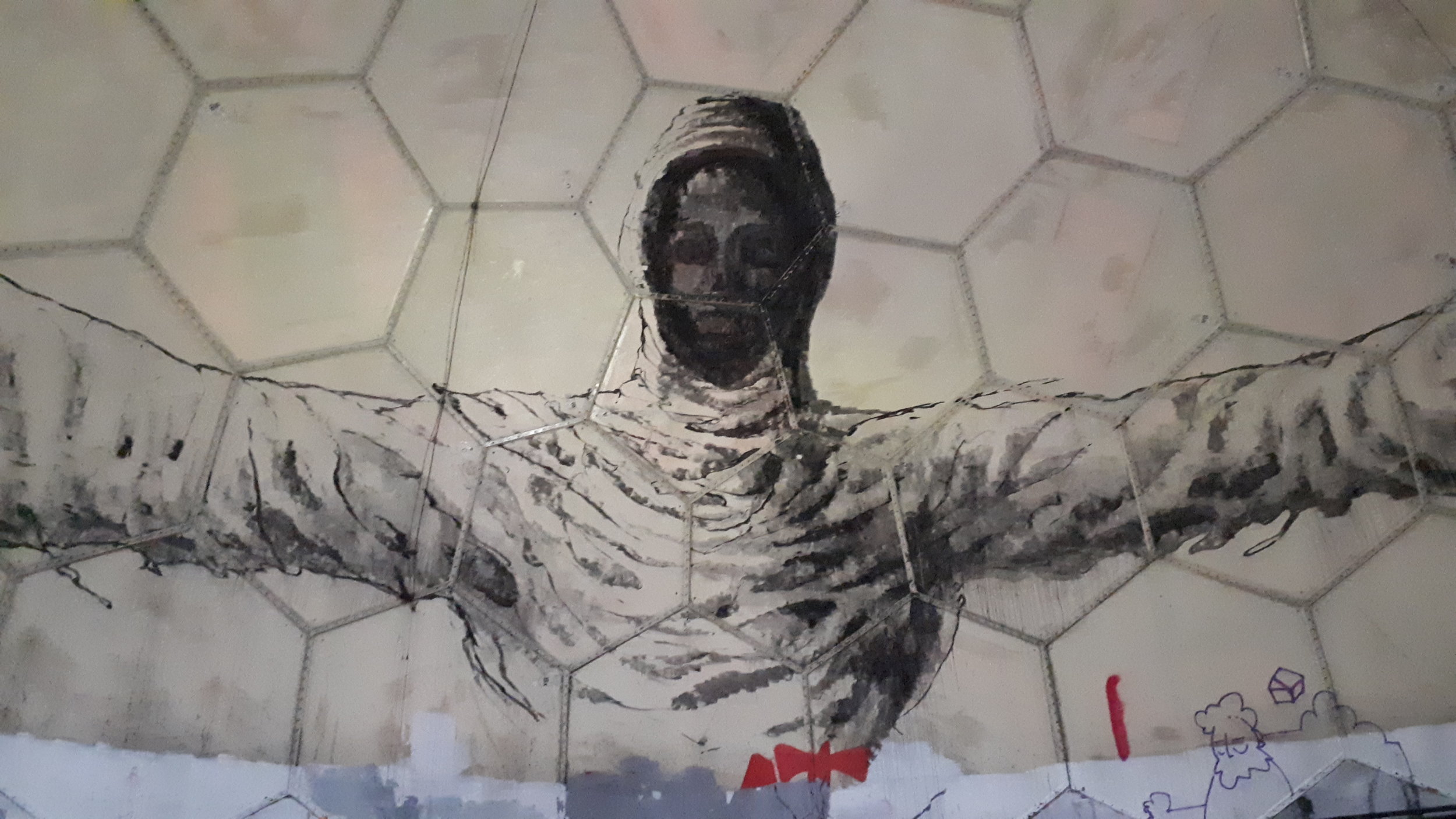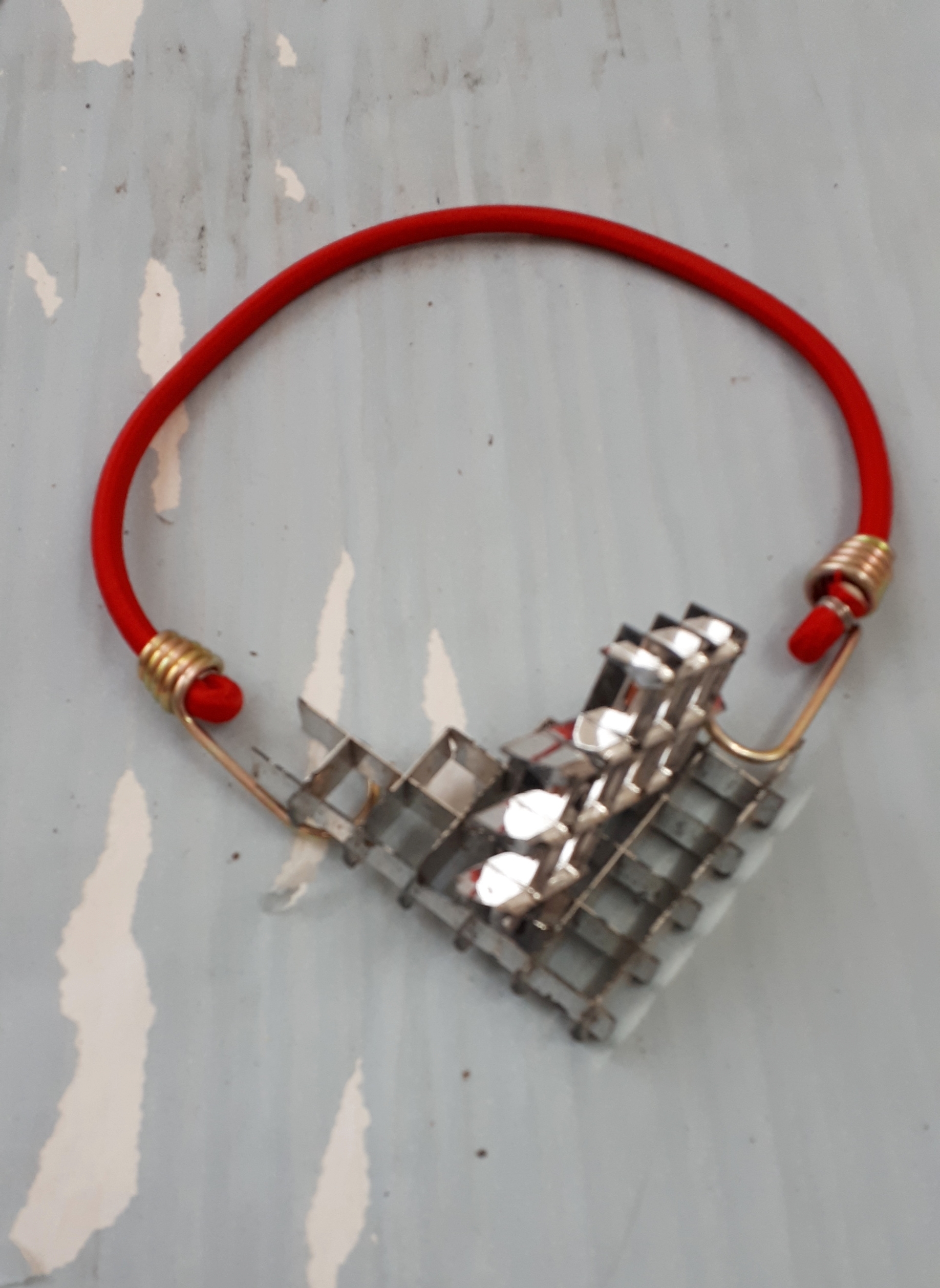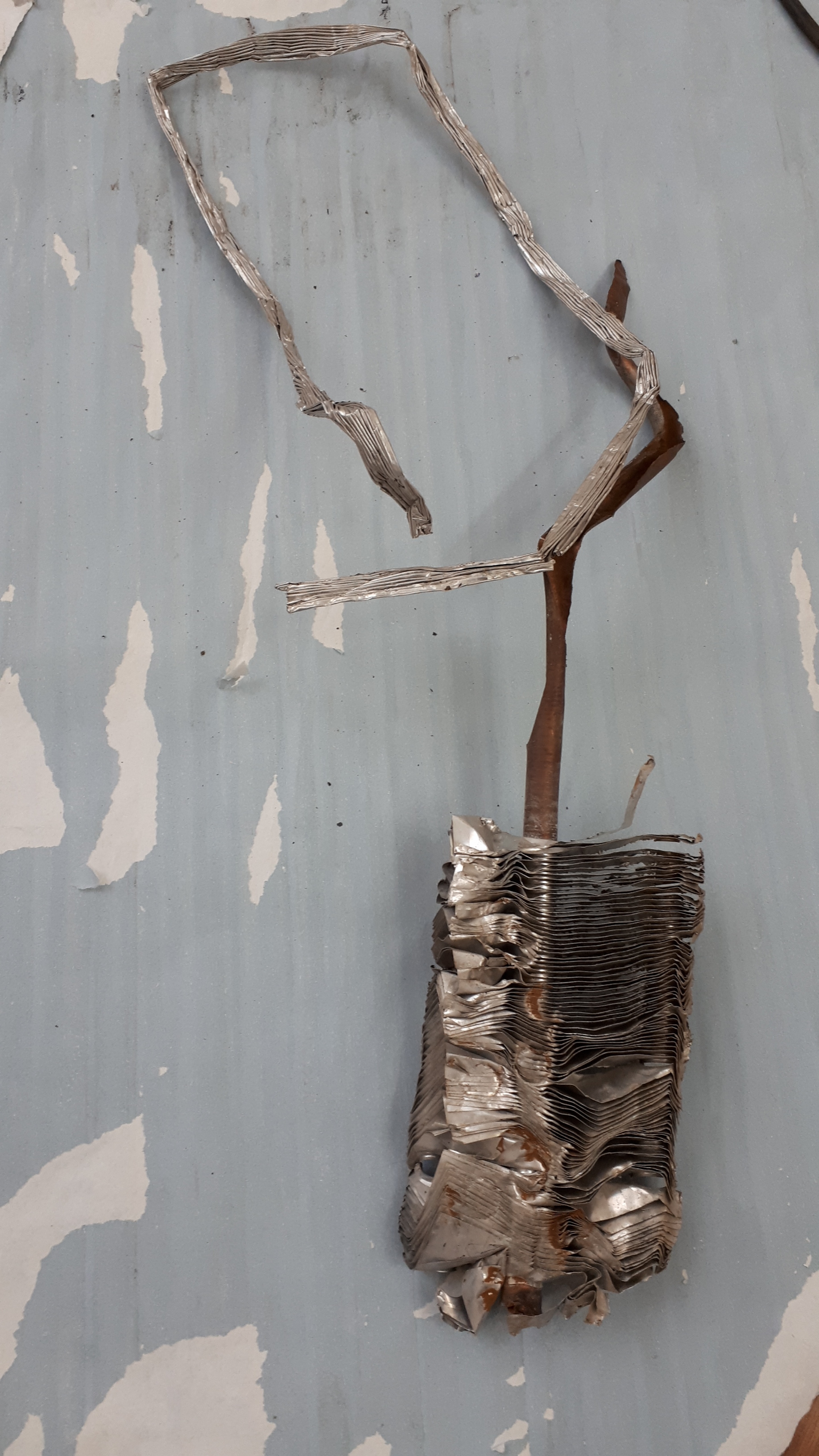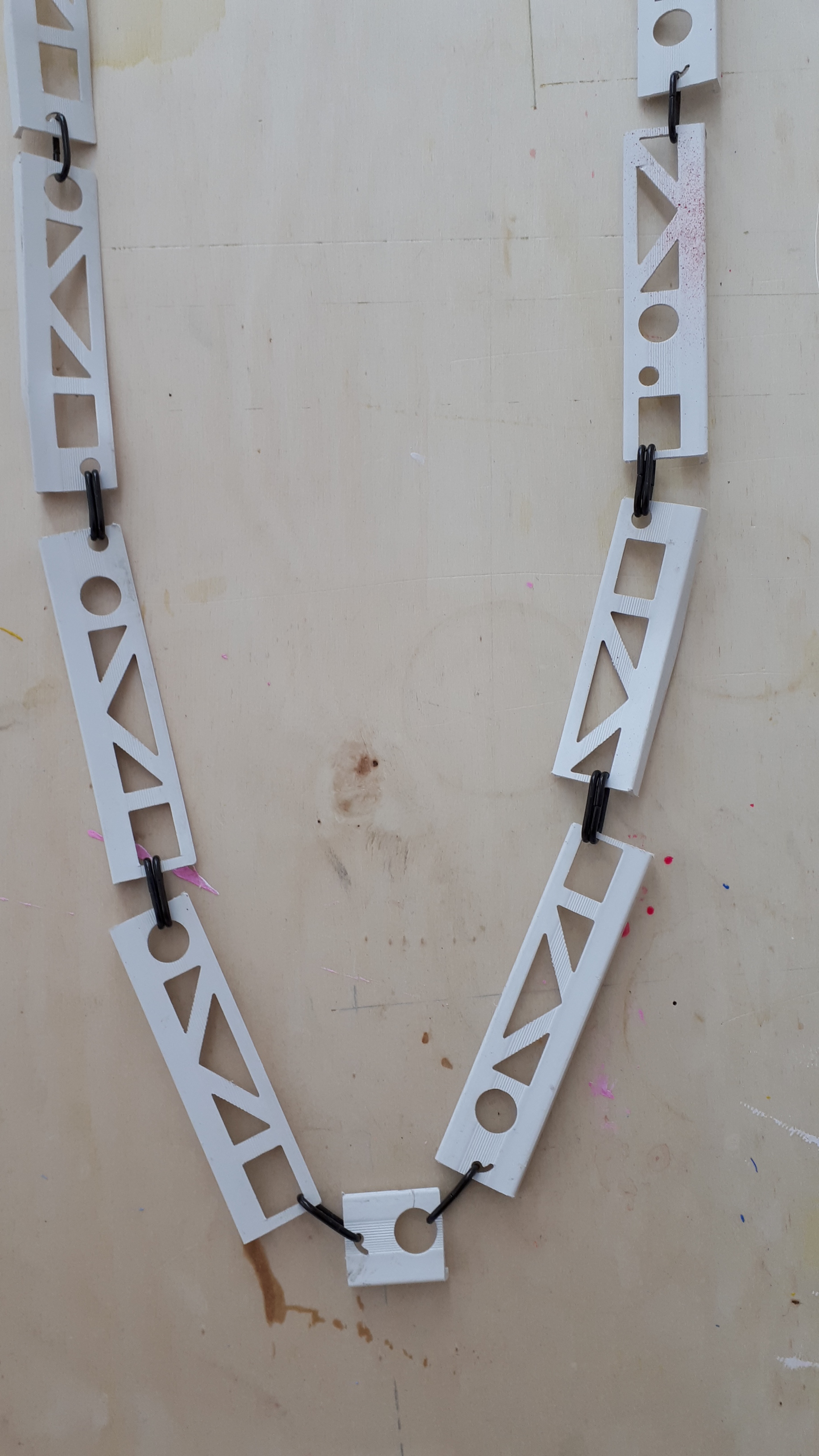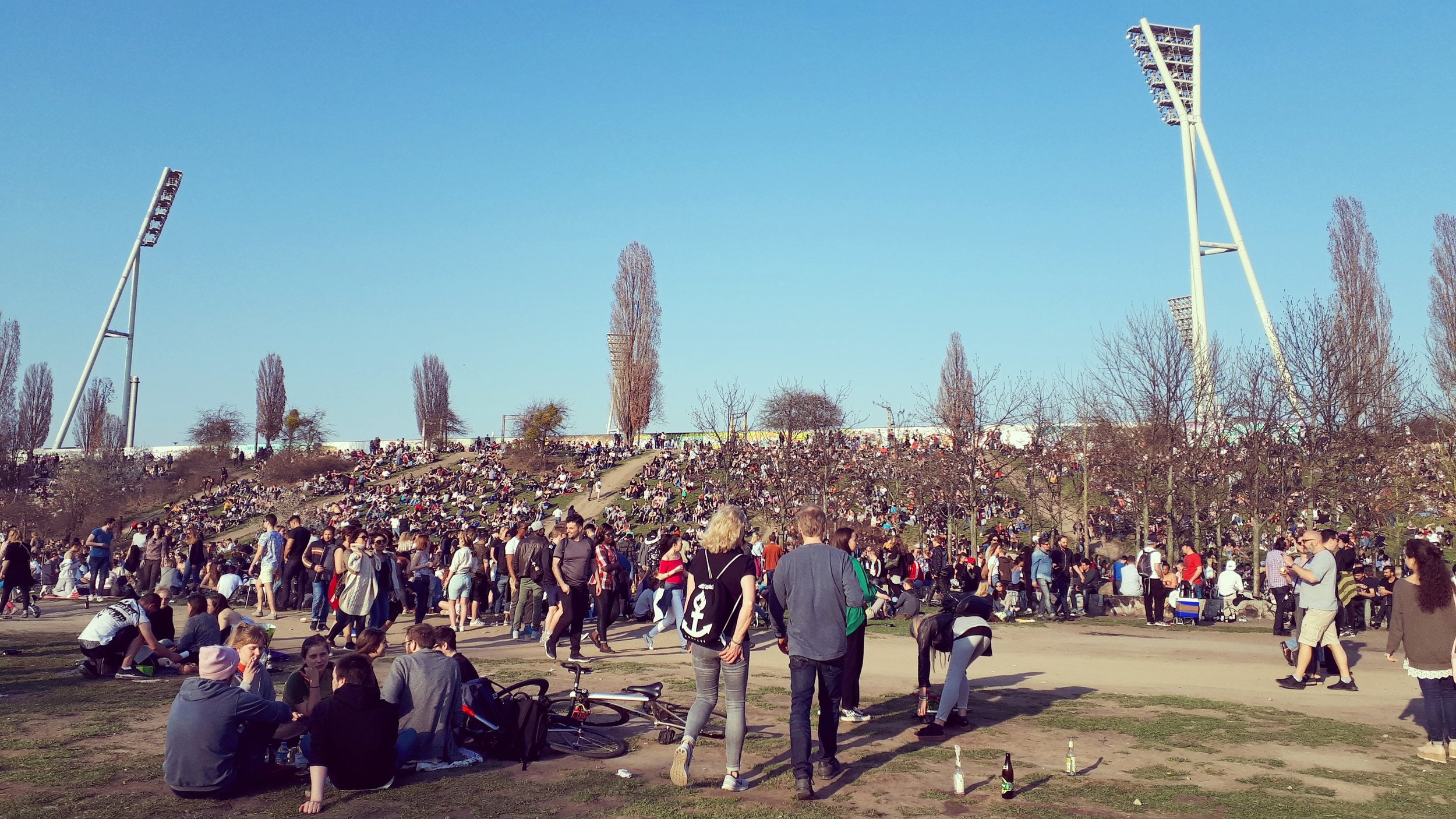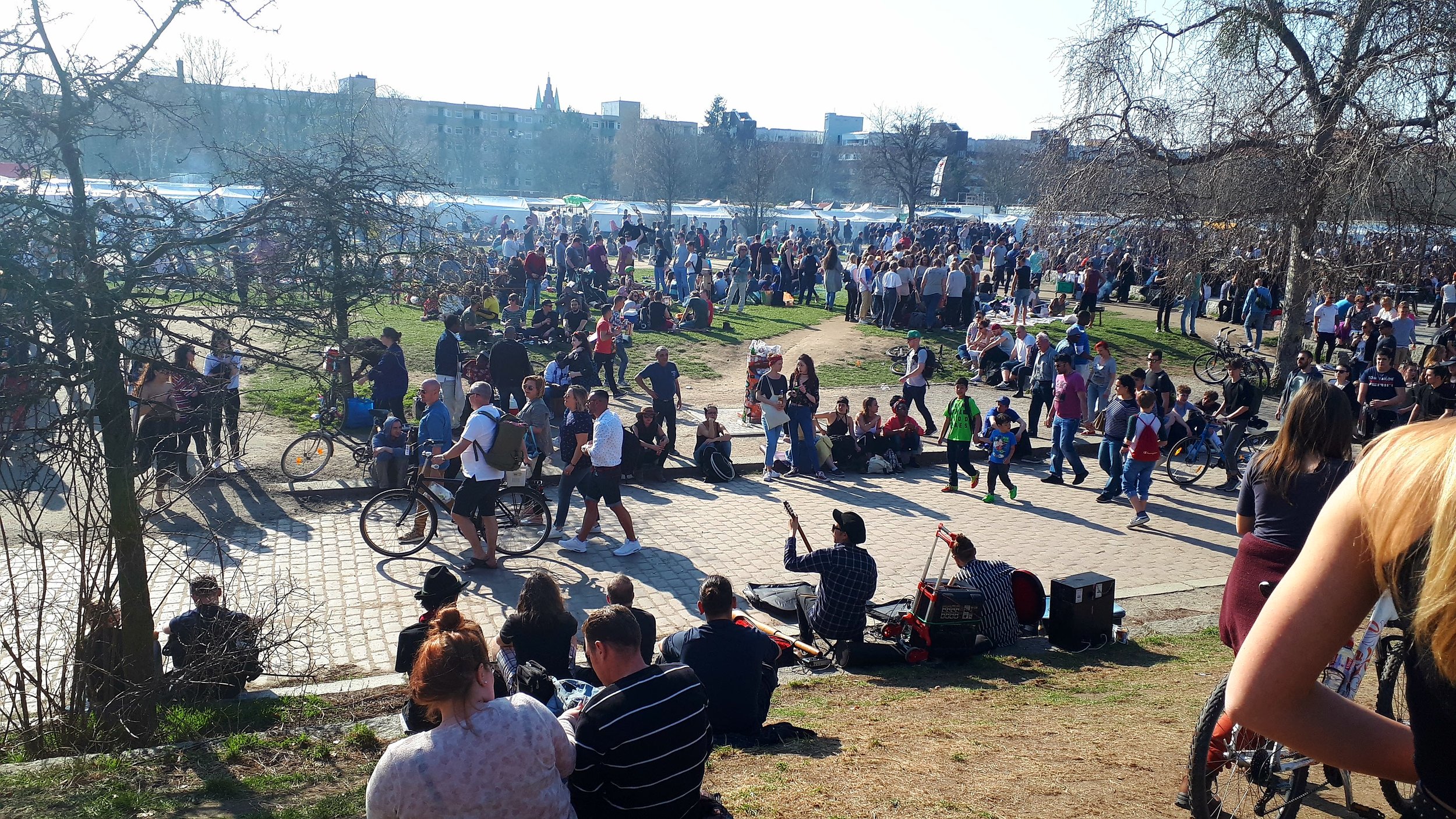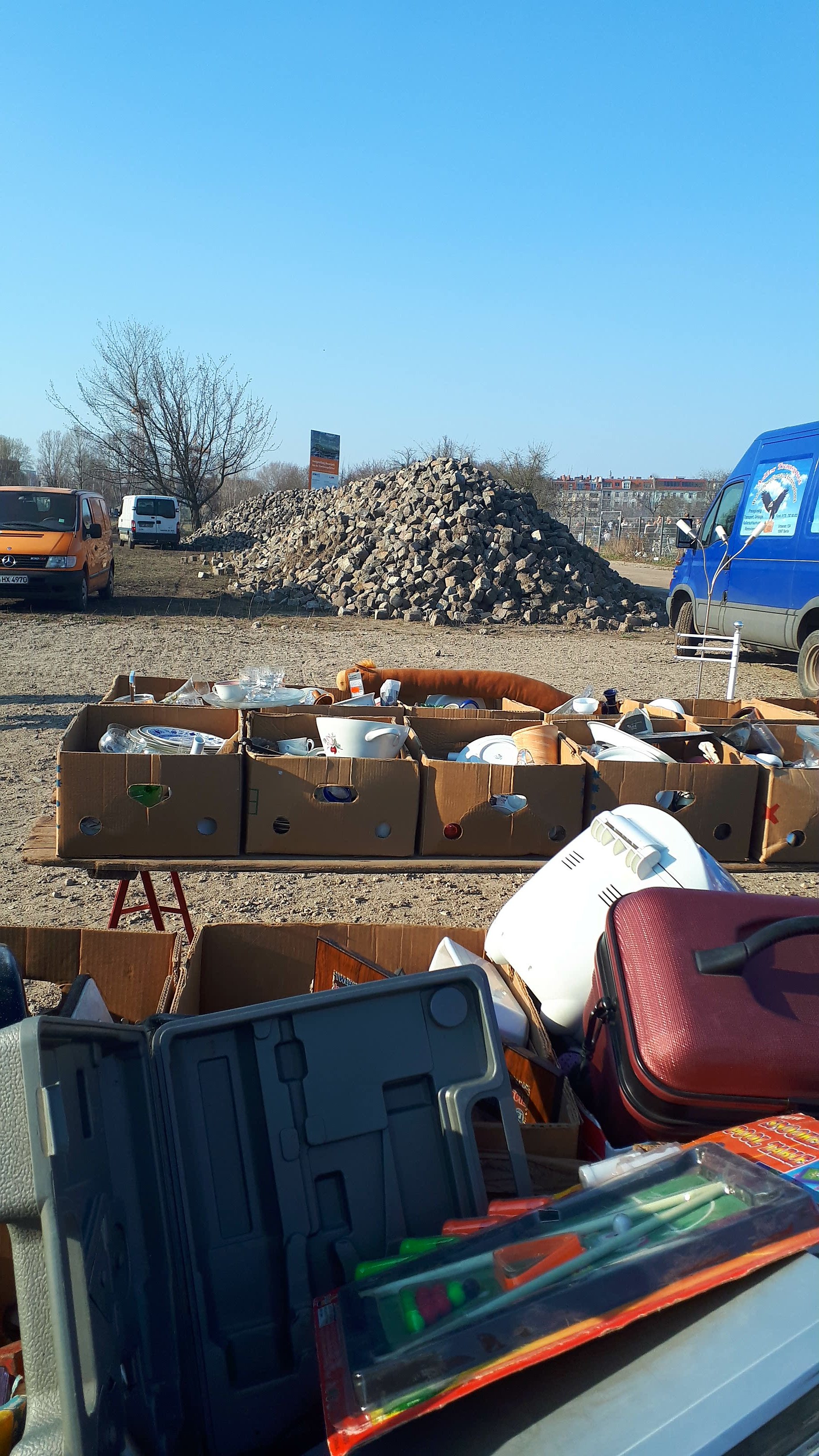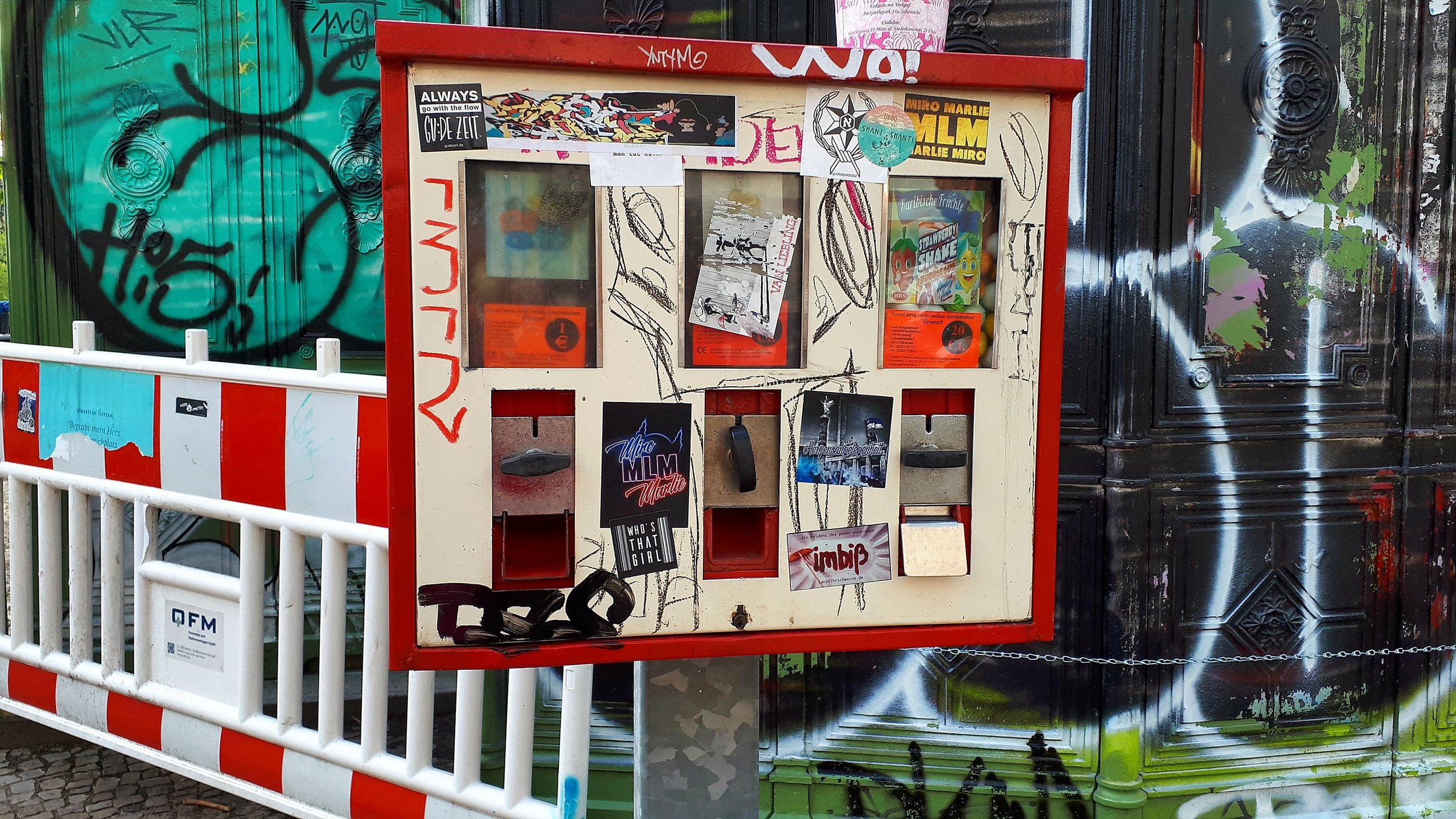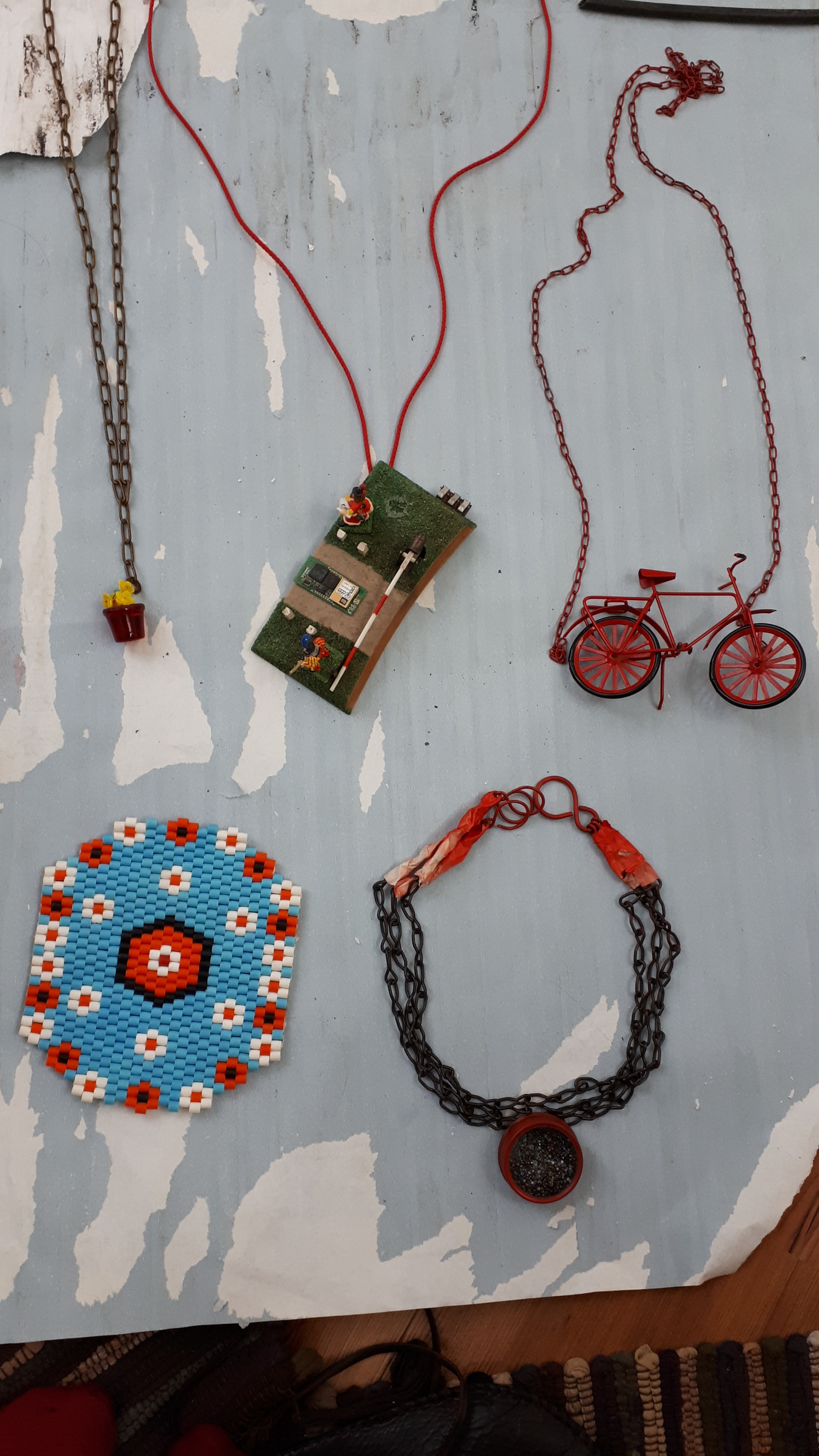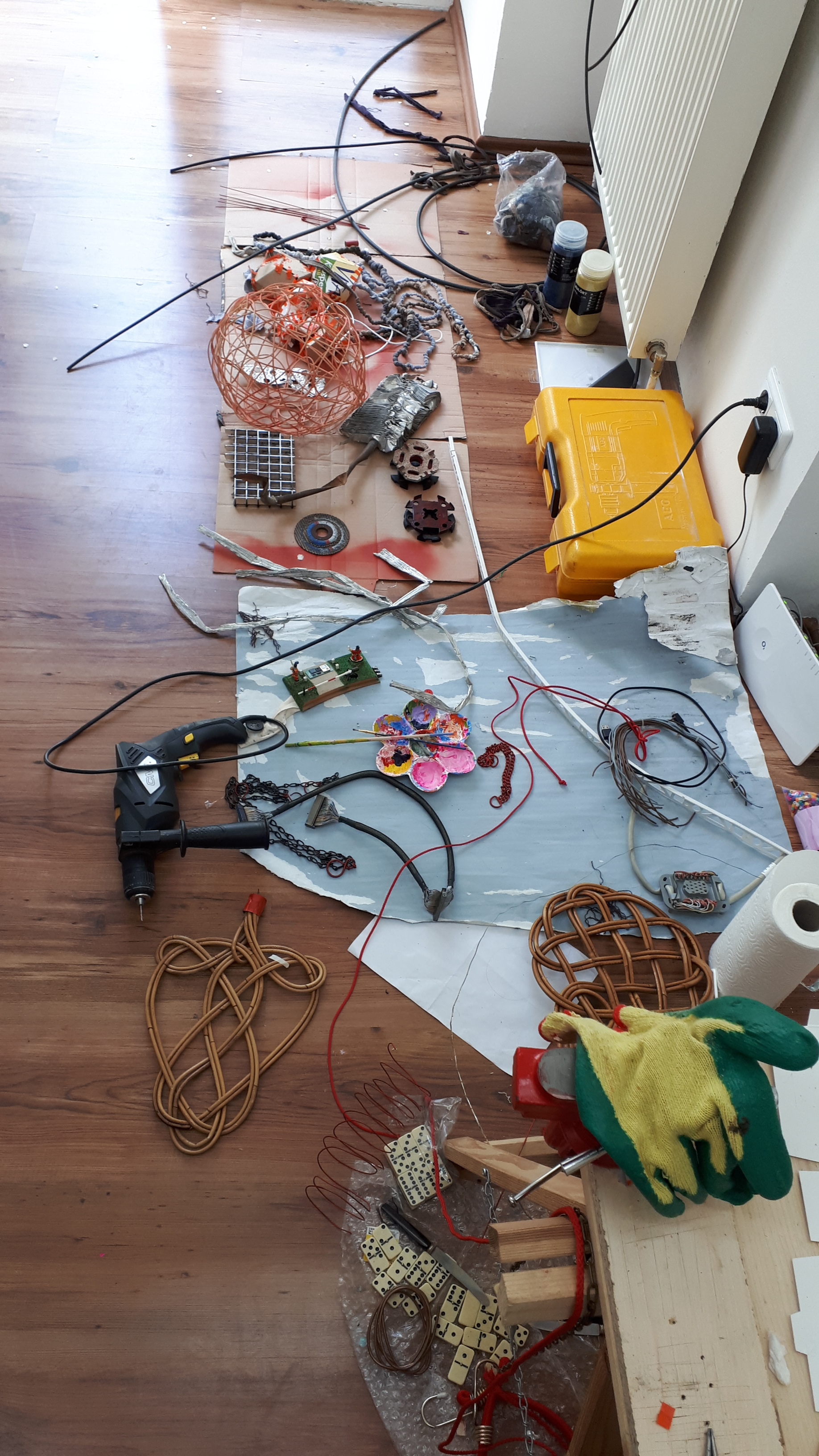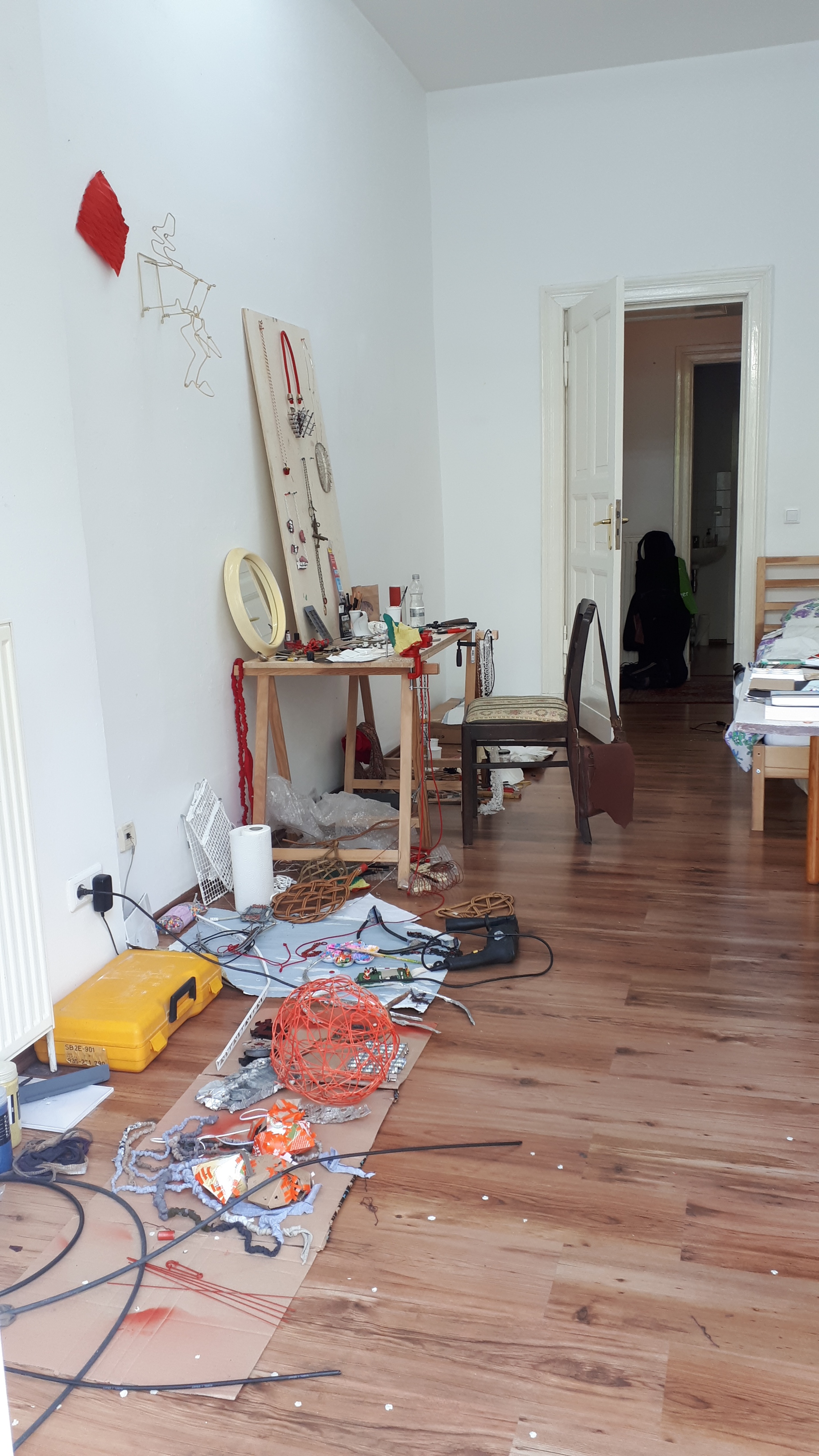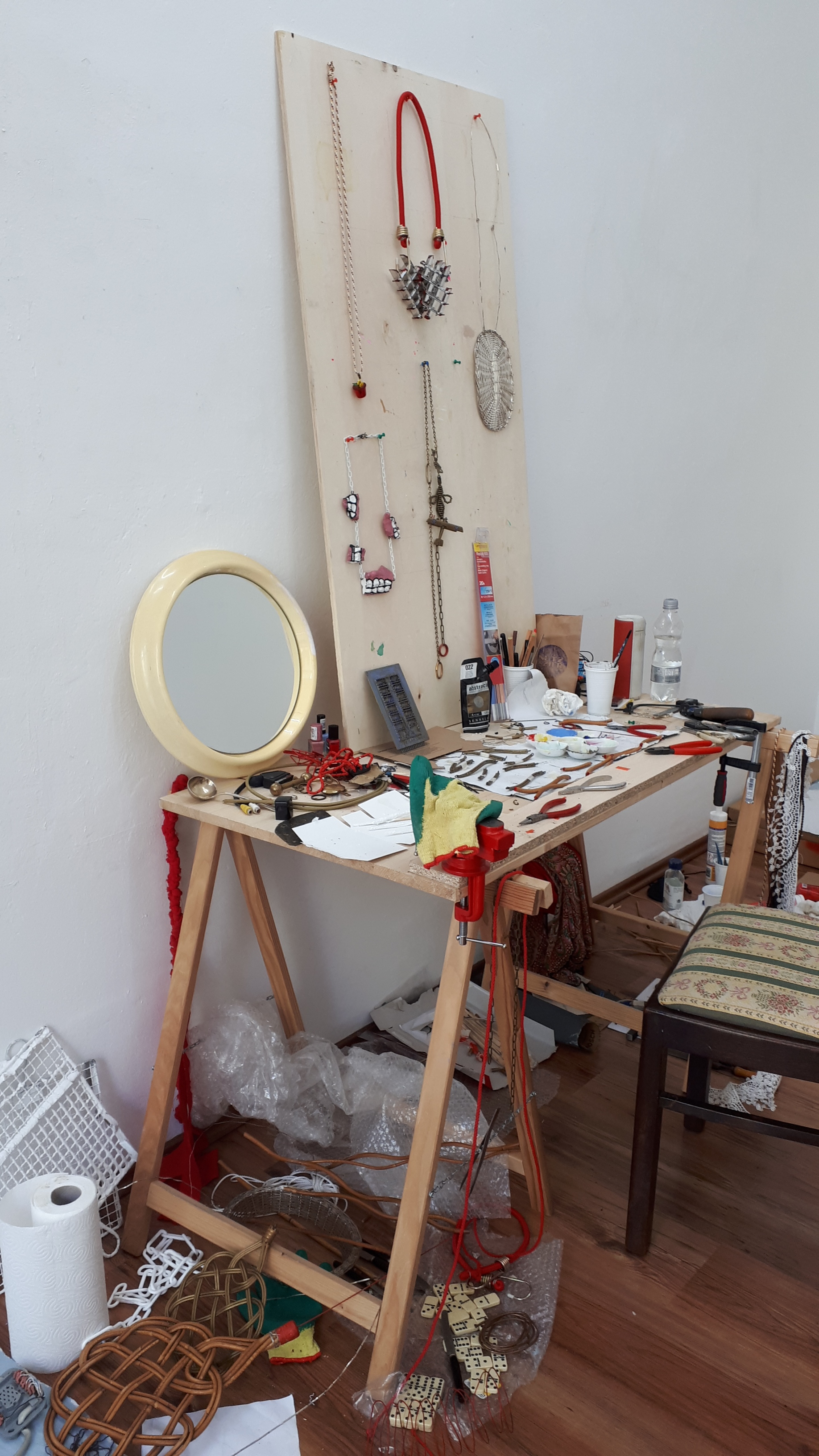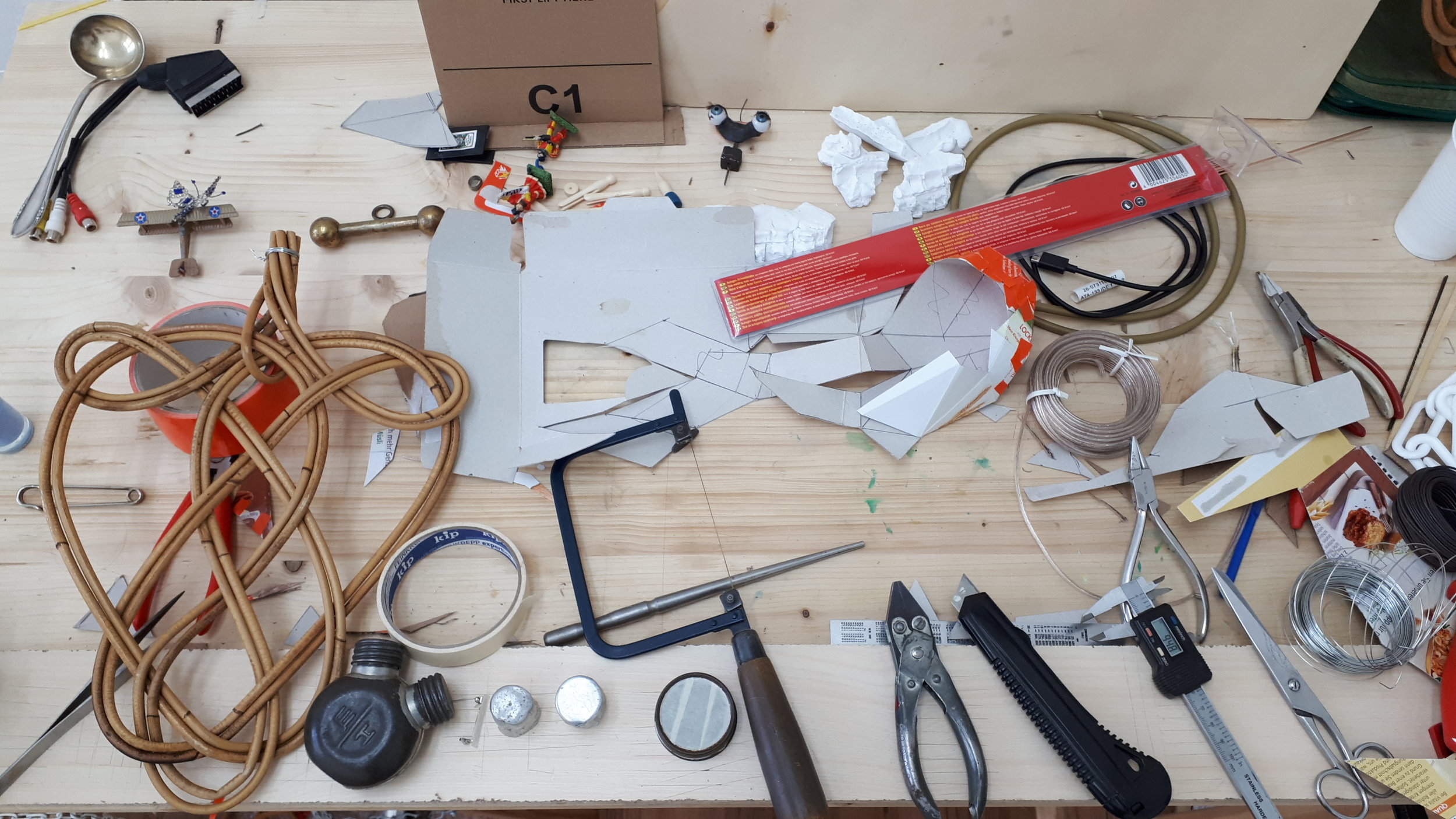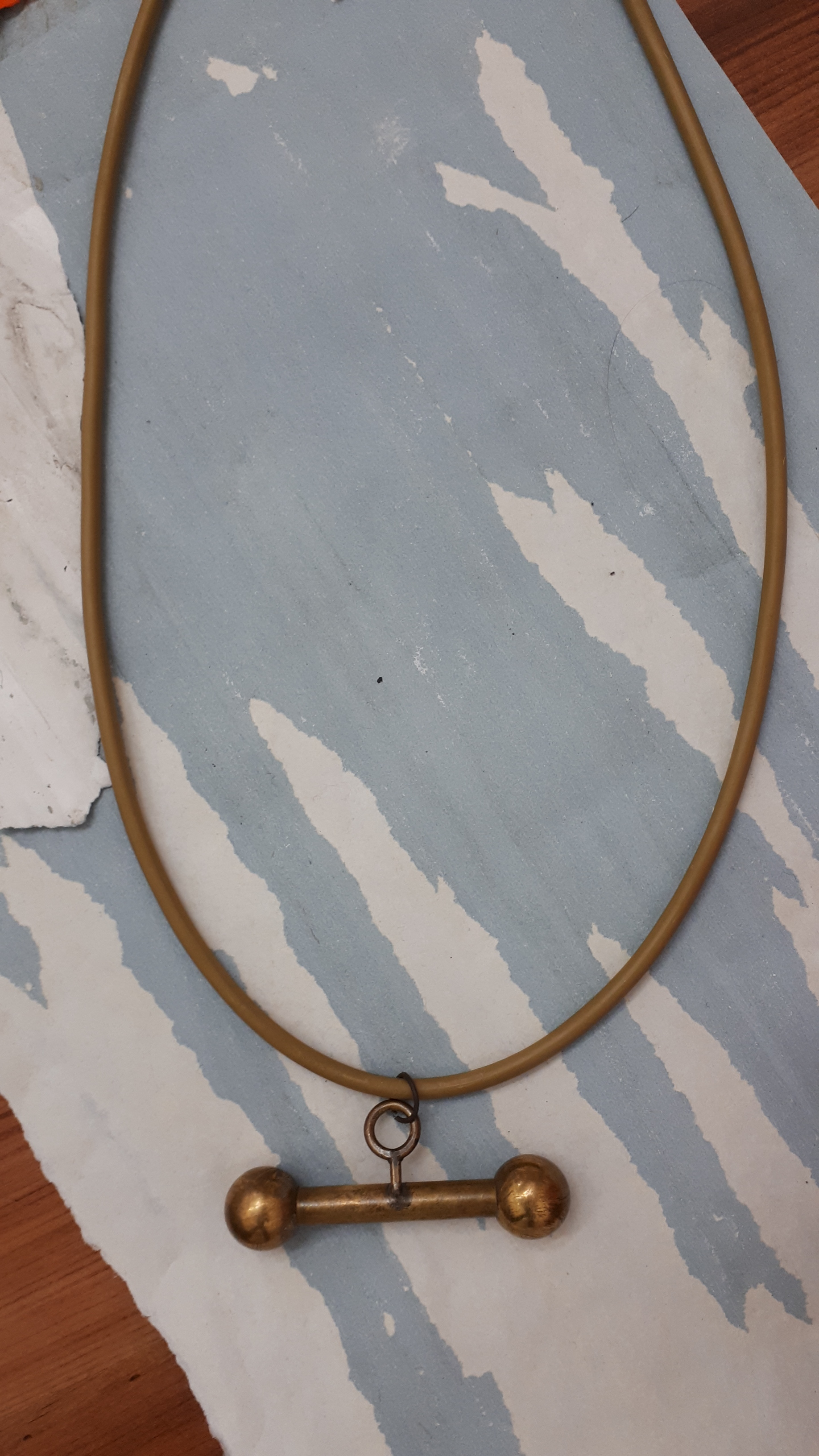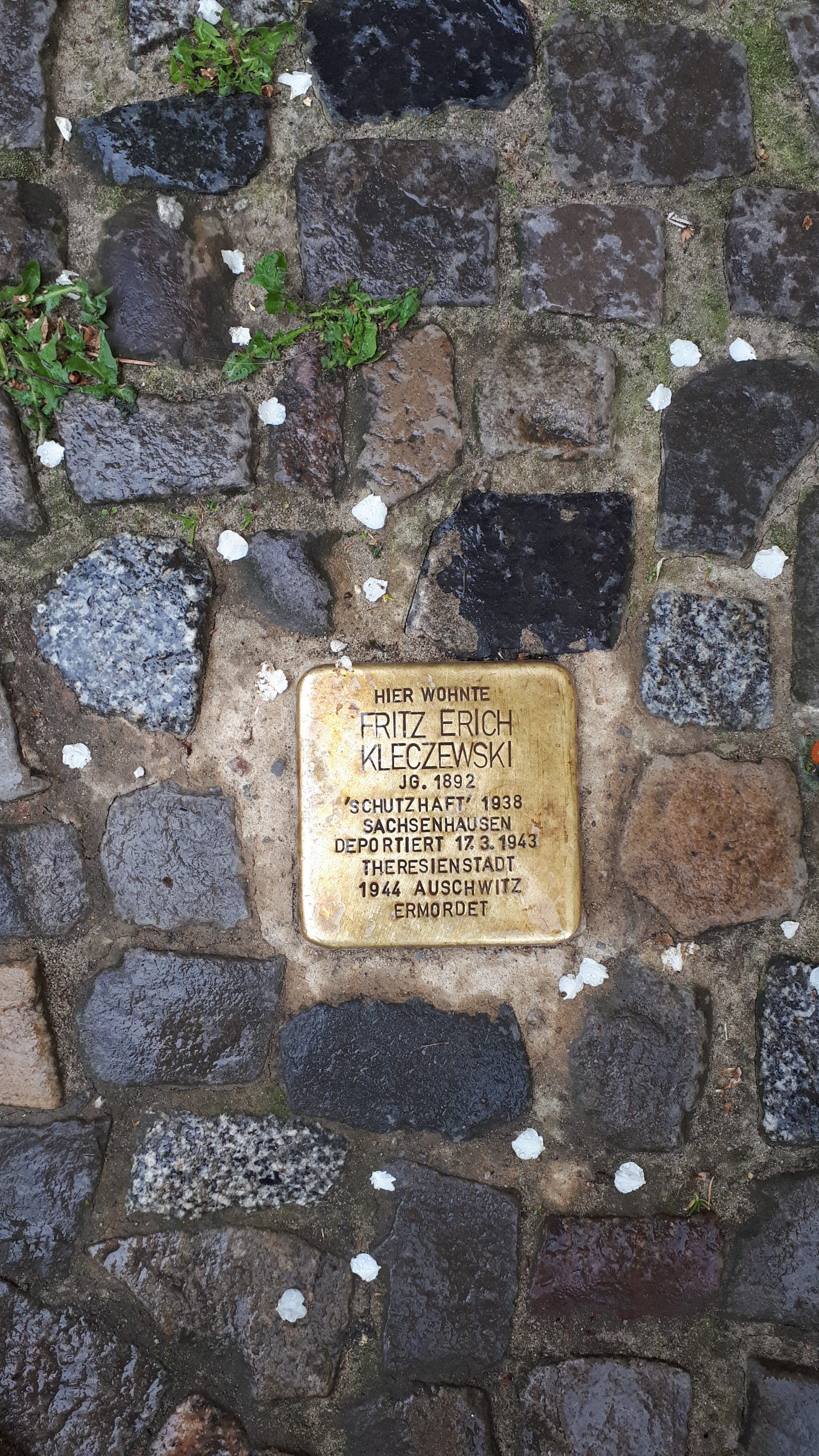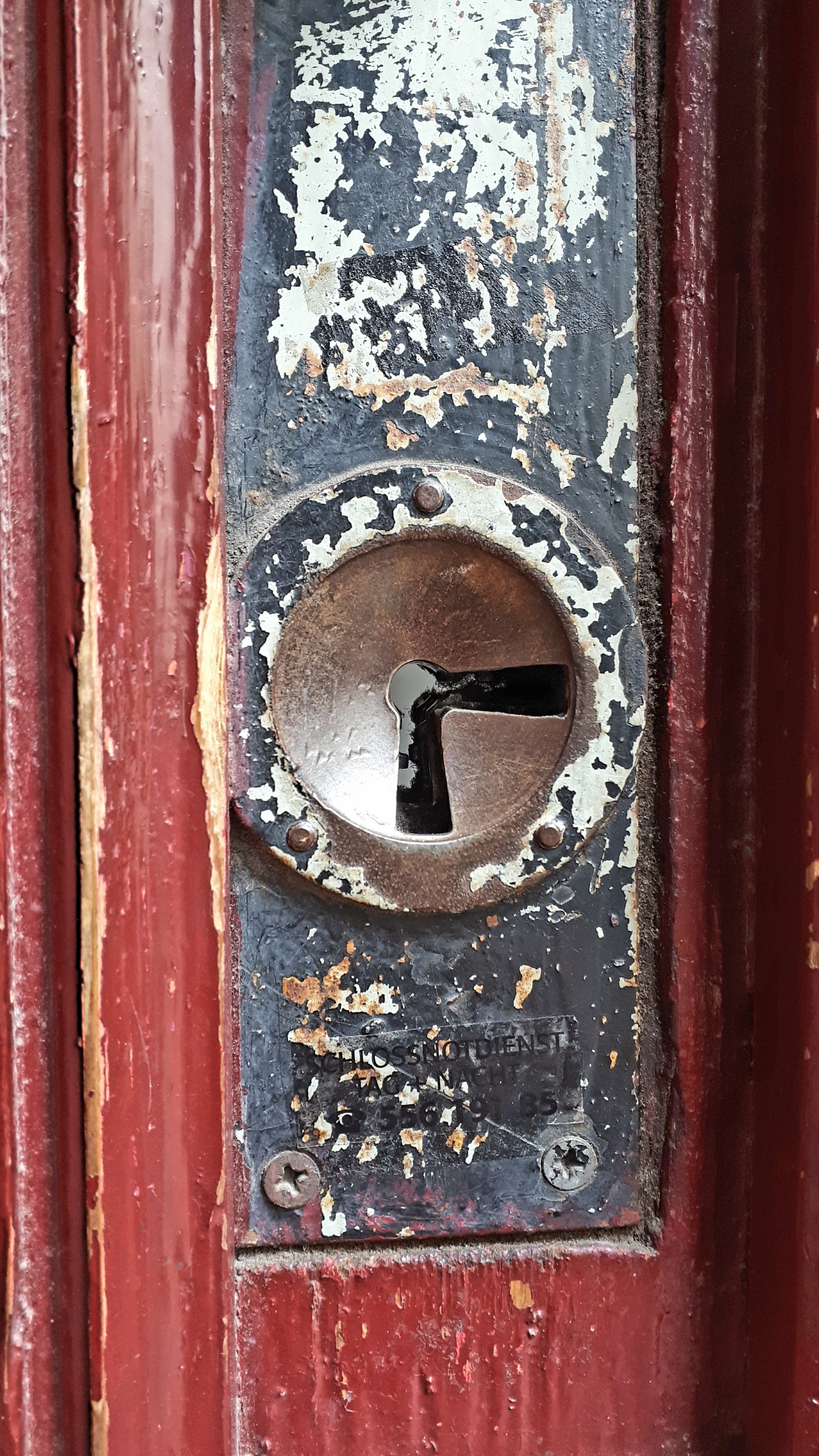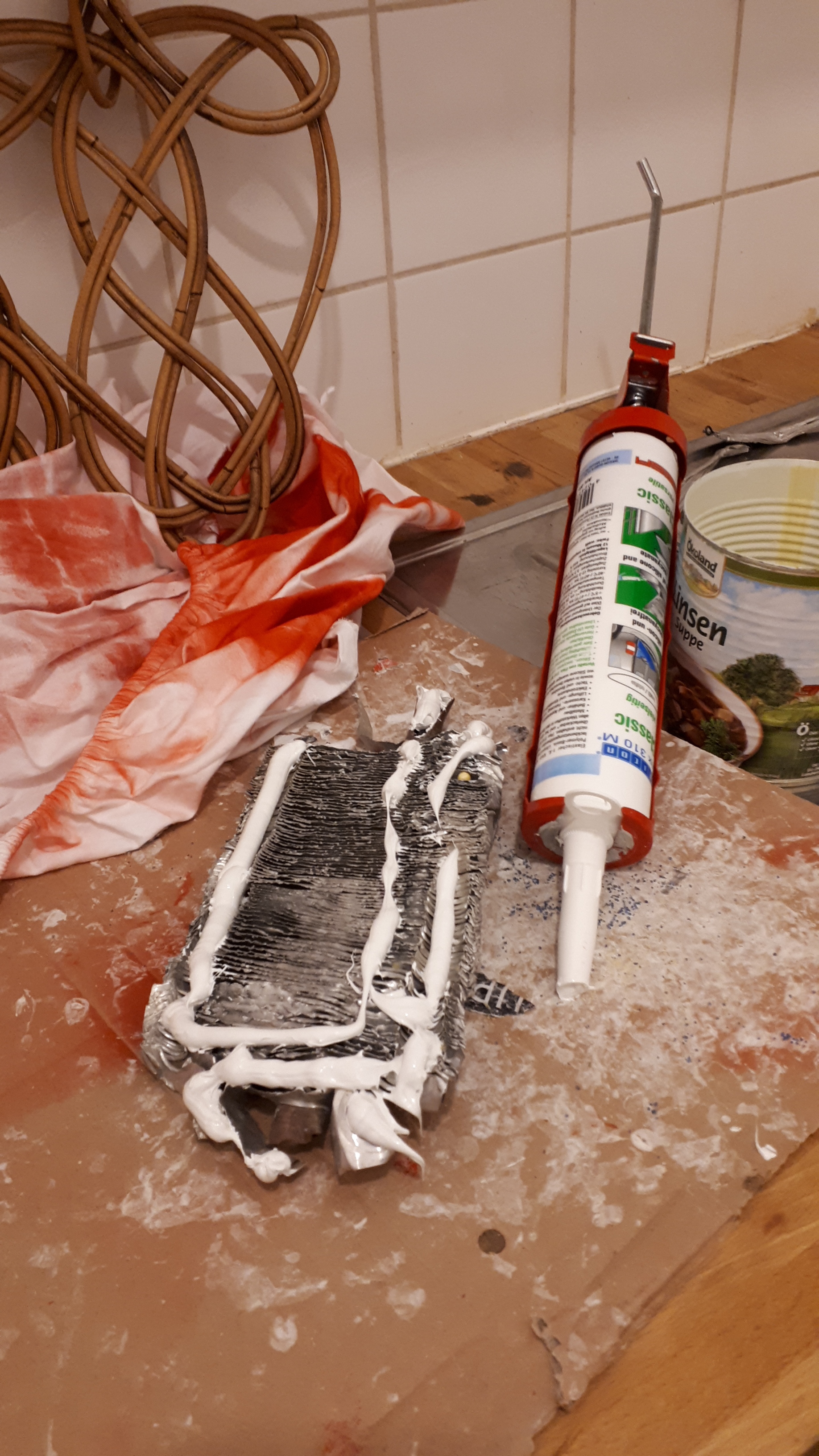A tour of the exhibition Handshake7 – 12 New Zealand Jewellers, which invites contemplation and offers a window to contemporary jewellery happening in the South Pacific within the four-story, architecturally renovated gallery spaces at Gallery Marzee in Nijmegen, Netherlands until the 11th of February 2023.
The pursuit of efficiency will drain your life of meaning* series, 2022
*Oliver Burkeman, Sam Harris podcast #289 Time management for mortals approx 22:29 minutes
I’m interested in how we experience, value and record time. As a social medium adornment has the potential to act as catalyst, conduit and communicator in this realm.
I invited friends and associates to document an average day and a perfect day in a circular diagram format.
This data was then digitally rendered as a radar chart, determining the shape of each work in the series.
This series honours time and creativity with a collaborative and regenerative approach to adornment making.
Made as part of the year long Handshake7 project in 2022, full blog post and more images here
Cumulus, new video work
Still from Cumulus video, performative adornment in the age of the bubble.
Morph, Northart, Auckland
‘MORPH’ represents the final body of work created by the twelve artists of Handshake 6.
MORPH refers to transformation, this exhibition seeks to demonstrate that quality through the development of each participant’s practice that came together with both the engagement of their mentors and each other.
Morph derives from the Greek morphē, meaning ‘form’, ‘shape’, or ‘structure’- all key attributes of the jewellery practice.
The Handshake Project 2020-2022
September 2020,
Adornment/object from 2022, bamboo, wood, enamel paint, brass, nylon coated braided steel wire, dye
Still from Passiton video
See my jewellery adventures over 2020-2022 at Handshake6
See my current work in process at Handshake7
Glimmer, Whirinaki Whare Taonga, Upper Hutt
‘Glimmer’ is jewellery in conversation with their surroundings.
HANDSHAKE 6 Glimmer features artworks developed by the twelve HS6 artists.
GLIMMER exhibition at Whirinaki is the precursor for HS6’s final exhibition MORPH at NorthArt, Auckland (30 Aug – 8 Oct 2022).
The artworks in GLIMMER are made from transformed materials, not often seen in jewellery.
Passiton, Video work
Resulting from Estela Saez On-E online exhibition masterclasses for Handshake6
Matter and energy bend space and time.
A colour coded chart spirals into a sculptural exploration of Time Space, the fourth dimension.
ON-E, online exhibition
CHECK out HS6 ‘online exhibition’, which attempts to contextualise (jewellery) ideas and processes. HS6 did a series of Zoom workshops between April – October about online exhibiting called
ON-E by: Estela Saez Vilanova (CAT-ES)
This special masterclass with Estela Saez workshops how an online presence could break away from all known presentation methods (on the body or displayed). This digital gateway invited the HS6 artists to come up with innovative ideas and experiments.
Many Manos, video work
Still from Many Manos on Mars
Out of this world adornment in the age of information.
Made in response to ON-E masterclasses with Estela Saez for Handshake6.
Featuring Many Manos, neckpiece made for ChainReaction, Nelson 2021
Chain Reaction, Refinery Art Space, Nelson
Many hands make light work | Know like the back of your hand | Put your hands together | Cold hands warm heart | Show of hands | Dab hand | First Hand | Hand in hand | Hands on | Heavy handed | Old hand | Out of hand | Under hand | Change hands | Hand over | Hands full | Hands tied | In safe hands | Try your hand | Hands down | Second hand | In good hands | Helping hand | On hand | Get your hands dirty | Hand over fist | On the other hand | In your hands
The brief for CHAINreaction was to make a chain which would connect into a series of 49 chains, celebrating 10 years of the Handshake project and artists involved, each of us was responsible for the linking connection to our righthand neighbouring chain. This was a timely invitation to step back into making work that could function both as adornment or object.
Key concepts I wanted to express included interconnectivity, collectivity and a desire to celebrate the precious impermanence of life in these weird times. In response to being part of the HandShake6 team I was drawn to exploring the form of the hand as our tools for making, medium for touch, sign and gesture.
I made two of these bamboo ‘hands’ which connect together as a chain, with a hand at each end and can be worn or configured in multiple ways. Bamboo attracted me for it’s plentiful weedy growth, bony form and tubular structure. The movement of the joints was an important element to me. To invoke a sense of jointed fingers rather than being too floppy I burred out concave curves in the bamboo ends to accommodate the round beads and strung the work on braided steel wire rather for some additional flex.
Signing In, Te Auaha, Wellington
SIGNING IN reflects the participants’ work as a group since the start of their HS6 mentorship and marks the halfway point of their two-year journey.
Here you will see an emphasis on process as much as ‘finished’ work, an opportunity to catch a glimpse of ideas in their nascent phase, with many options and opportunities yet to emerge.
Handshake in Hamilton, Weasel Gallery, Hamilton
Handshake in Hamilton is a group exhibition comprising the work of twelve contemporary arts practitioners. Co-curated by contemporary art collector, Garth O’Brien, and Weasel Gallery Director, Laree Payne, Handshake in Hamilton presents a diverse range of contemporary jewellery from the Handshake6 cohort alongside paintings by Hannah Ireland.
The exhibition name, Handshake in Hamilton, is of course first and foremost an extension of the group’s name. Simultaneously however it has assumed further significance in the context of Covid-19 as the age-old germ-ridden handshake is traded for a less deadly elbow-bump.
Handshake in Hamilton lands at an interesting time when many are craving interaction and engagement following prolonged isolation. Most people enjoy communicating with others, and although language might be the first method to come to mind, visual communication preludes language in most instances. Contemporary jewellery is then of course the perfect extension and communicator of identity.
Jewellers participating in the exhibition are: Amelia Rothwell, Aphra Cheesman, Fran Leitch, Jack Hadley, Macarena Bernal, Mia Straka, Michelle Wilkinson, Nikki Perry, Nina van Duijnhoven, Simon Swale and Susan Videler.
Please scroll on for full posts.
Schmetterlinge Rising, Allpress studio, Auckland
New solo show in Auckland City 8-19 July, opening night 9 July 5:30-7:30pm all welcome!
This exhibition is led by ideas of transformation, reusing/reconstructing waste materials and disused objects to create adornment for the Anthropocene. Jewellery and objects made during last year’s artist residency in Berlin are juxtaposed with work made with the same ethos back in NZ, informed by an intuitive response to environment and personal experience.
Schmetterlinge translates as butterflies, referring to the massive changes required imminently as a global community moving towards environmental sustainability, adapting to mass population movements and climate change.
Despite the heaviness of both historical context and our current precipitous position, the work displays a wry sense of humour and colourful outbursts, finding my own ways to move forward with joy and wonder at life and the power of nature to overcome, one way or the other.
Thanks to Allpress Press Studio, Thornbury Wines and Workshop6 for your wonderful support.
Images thanks to Liz Clarkson Photography
TempFest - Whakanewha Regional Park, Waiheke
TempFest took place on Waiheke Island on Sat March 23, organised by Craig Folz and Kristin D’Agostino. The idea was to create temporary, interesting, informal, fun works or happenings. As a creative writer Craig organised performances by poets and Kristin the installations, including visual artists, a tea ceremony, tidal poetry and drawing, plus interactive art experiences. The crowd was a mix of people, families camping and day visitors. I made a Talisman3 installation, adding to the mix of tikanga Māori and global values words with some Arabic words derived from Islamic tradition. Together with those present at Tempfest we hung 50 banners in the trees at Whakanewha park, a small gesture in acknowledgement of the 50 lives lost in the Christchurch mosque attacks on March 15th. and to express solidarity with all those affected. As-Salaam- Alaikum.
Schmetterlinge - a journey of work by Mia Straka
Solo exhibition at St Paul St G3, Auckland 5 - 9 December 2019 resulting from a month long art residency in Berlin with Das Institut für Alles Mögliche -The Department of Anything is Possible.
Image credits: Liz Clarkson Photography
Schmetterlinge: (pl) Butterflies.
Working with limited tools and equipment during a month long residency in April 2018, exploring the creative hub of Berlin, liberated me from the usual parameters in my jewellery making.
Mornings and afternoons were spent exploring and collecting. Cast off materials and flea market finds were deconstructed and reassembled over long Spring nights under the fluorescent lights. Working with materials I perceived as symbolic of the German vernacular, I was excited to create something new out of these now superfluous objects and parts. I let myself be led by the materials, intuitively responding to my environment. In this work I hope to give the materials fresh life and new potential.
While not wanting to eschew wearability entirely, the work is not overly concerned with standing up to everyday wear and tear or personal comfort, it was made quickly and held together with filler, glue, and wire sourced from local hardware and art supply stores.
Drawing impressions from wanderings around my work/live space at the Hauptstadtstudio in Friedrichshain, I gathered materials and visited sites that seemed emblematic of the city to me, often sites with a violent history that subsequently metamorphosed into vibrant community spaces. The Schmetterlinge works are responses to Berlin’s layers of history and transformation at the hands of what I perceived as communally empowered inhabitants.
The residency programme Das Institut für Alles Mögliche supported me by organising meet ups with other practitioners under their custodianship around the city and a group collaborative exhibition at the end of my residency period, as well as enabling all area access to the wonderful Teufelsberg. Relationships built up as a result connected me to an international network of creatives in practices ranging from painting/mixed media, experimental film and performance art, sculpture, installation and music.
Although only four weeks, the residency allowed me the time and space to rediscover the pure joy in making and gain focus for my practice with a lack of everyday distractions and duties. The result was over 20 experimental works produced during the month and has brought new energy, knowledge and direction to my work.
Since April I've continued to resolve some of the jewellery pieces and objects, alongside embarking on a second generation of work. Extending beyond the specifically Berlin context, these new works link the ideas and material knowledge gained with my existing practice. I’ve sourced waste materials and am using these to work in a sustainable manner, viable for both larger sculptural and smaller wearable works, exploring themes that reach throughout my practice and including more techniques such as knotting, weaving and wrapping.
This exhibition was a chance for me to show the new work in NZ in a beautiful space I hadn’t exhibited in before, seeing how it might be translated and received here. St Paul St Gallery 3 is spacious and light filled with windows to the street and entrance foyer. Having full control of the installation in a relatively large space with no fixed display systems was both exciting and nerve wracking. Each piece is hung on safety pins in cardboard box ‘frames’ customised with black packing tape and white paint, carrying through the sustainable use of materials and allowing easy interaction with the works. The informal and makeshift installation echoes concerns of transformation, transience, mobility and accessibility. Reactions from a diverse audience including AUT staff, jewellery and art industry associates, family members and friends, and a passing homeless gentleman, were positive and engaged.
Being on site to ‘man’ the space, I was able to facilitate try ons with enthusiastic participants and photograph them wearing the works around the space. Handmade journals were displayed below each work for visitors to write their response to specific works. Notations and questions written sporadically in the pages asked for imagined histories, current reactions, or perceived functions and rituals the works may have been a part of. On later inspection I was excited to find people’s reactions and creative responses to the works and these now form part of the exhibition.
For more on the residency period see:
http://mia-straka.squarespace.com/blog/2017/10/jewellery-shaped-pieces-of-berlin
FACE TO FACE - Arthaus Orakei
YVONNE SHAW + MIA STRAKA + TRISH CAMPBELL + NAT TOZER
curated by Claire Ulenberg - exhibition 26 August - 9 September
'Face to Face' is an exhibition of 4 women artists and their reimagining of the portrait genre. How women see themselves and others is crucial at this time when identity politics are rife and the shrine of the selfie seems a never ending disposable roll of daily imagery on social media.
As we navigate our way through our individual identity we slide between the blurred boundaries of privacy and the public social arena. 'Face to Face' brings us back to the essence of close interactions between people, the artist, photographer, viewer and participant.
Jewellery Shaped Pieces of Berlin
Made during a one month residency in April 2018, hosted by the Institut für Alles Mögliche at the Hauptstadtstudio in Friedrichshain, Berlin.
Arriving with the onset of Spring at the Hauptstadtstudio, I started exploring my surroundings by biking around the streets of Friedrichshain, taking a vaguely triangular route which was intuitively aimless. Following a March of intensive 'seeing', first working at Frame during Schmuck as part of the IWA team, then visiting Reyjkavik in Iceland for some amazing natural wonders and a peek into the art scene, followed by an intense schedule of cultural institutions in London; it was refreshing to not have a fixed destination in mind. My wanderings allowed me to 'happen' upon places, seeing with no pre-conceived impressions or even too much historical significance (yet), childlike wonder intact.
I was influenced by a film I had watched about the Icelandic concept of InnSæi, which can mean a multitude of things but revolves around intuition, empathy and feeling connected...being led by an inner compass.
One of the first things I noticed and started collecting were the posters layered on pillars and electrical boxes, some clumped so thick they were peeling off like paper waterfalls onto the streets. Advertising all sorts of gigs and events they encapsulated a slice of Berlin at that particular time. Where I ripped the posters off their mountings showed white against the pale blue paper backs, like clouds, which I liked. These posters became the paper mache geometric 'rubble' pendants.
On an overcast morning on day 5 I set off on a bike mission across the Spree river to visit an old airfield which was turned into a park called the 'Templehofer Feld', following a public referendum in 2014. Since 2015 several hangars within the massive structure of the Nazi era airport have controversially acted as temporary housing for refugees. I wanted to visit the newly opened container village beside the old airport, which was initiated in 2017 as a better quality and longer term housing solution.
It was a strange day to visit the park, known for being a bustling gathering point for picnicking Berliners on a sunny day. The wind was sweeping up the long empty runway, solid looking clouds congealing heavily behind intimidating airport terminals. The air traffic control tower and stark white rows of containers contrasted with colourful unidentified circus-like tents.
Peering curiously through the white rectangular gridded wire fence encircling the containers, I wonder if they are inhabited yet, targeted by a security vehicle while photographing the strange scene, I turn my green bike back down the pink centre line of the runway and cycle away, powered by a strong desire to weave some colour into the fence or something...to help make the environment more homely. Later I read that spontaneous efforts by the newcomers to add a little colour and personalise their living space in the hangars had been banned due to some offensive imagery and the historic status of the building. Perhaps here it will be a a different story? On a later trip to the 'feld' when I joined the picnicking Berliners on a sunny day, I wondered if the families being housed nearby were joining our grilling numbers.
The same day on my way back through the rapidly gentrifying Neukölln I spied a white grid poking just far enough out of a construction skip for me to nab. Choked up with plaster, it reminds me of the fence at Templehof. Later in the month I wrap some of the mangled metal found at Teufelsberg around the grid, emulating the flag-like remnants of posters seen on construction fences around the city as a small gesture of beautification, dreaming of offering the same to those who have lost their homes and countries.
The previous evening I had joined in with an English language conversation group for refugees and migrants run by Give Something Back to Berlin organisation, and was glad to talk with a group of three students originating from Syria and Iraq, led by a teacher from Poland. All had good German and English language skills as well as their native tongue and were either employed or studying, having being settled in Berlin for a few years at least.
Another site which was hugely influential for me during the residency was Teufelsberg. My excellent hosts Das Institut für Alles Mögliche -The Department of Anything is Possible, had recently secured a space at the dilapidated Cold War era listening station, which is built on top of a hill made of the rubble of Berlin from WWII. The rubble, said to be the detritus of 400,000 destroyed homes of Berlin, covers a never finished Nazi era military college, too solid to demolish. The geodesic dome-topped spy station structures I was lucky to wander freely around, are now a open air street art gallery, privately owned but open to the public. During my explorations I collected plastic and metal remnants from the structures, some old electrical parts and wires, as well as managing to whisper into my own ear thanks to the circular echo in the still-complete top dome.
My first impressions of Berlin were idealistic but enduring, of a place reborn and still in a state of flux... built up by it's inhabitants from the rubble of war and cruel politics. There is a fierce creative energy which is a magnet to artists, unlike anywhere I have been before this seems to be embraced by the governing elements of the city; so that collective action yields results, creating a city for communities of all varieties to thrive.
I tried to select materials that would help to express this sense of being part of a collective creative movement, illustrating the many layers of the city and it's past, present and future. I wanted to use materials that no longer had a function, were obsolete, no longer relevant or found languishing unwanted in a dusty corner. As well as the materials found in the skip in Neukölln and at Teufelsberg, I found some fabric and embroidery work in a clothing bin overflow and a few electrical bits/boxes off the street and in my apartment's nicely ordered rubbish room.
Visiting Sunday fleamarkets including Mauerpark, Arkonaplatz and Boxhagener Platz ... I collected materials that stood out to me as particularly 'of the place' or time, somehow representative or stereotypical of a bygone era of Berlin/Germany. Conscious of my fresh gaze as a first time visitor to Berlin, these would become my own constructed souvenirs, using bits and pieces rather than fully intact objects. A couple of antique shops in Friedrichshain yielded the old woven carpet beaters which were crying out to me to be revamped as necklaces, and a few other kitschy objects to add to the mix.
There were some logistical parameters to my methodology as I had a basic workshop set up not geared to jewellery making. A power drill borrowed from the Institut, some hand tools and my sawframe from NZ, plus some good thick industrial glue and a shiny new vice were my tools for the month. It was important to me that my constructions were able to be worn, even if pushing the boundaries of wearability. I didn't want anything to exist without some connection to at least one of the other pieces to be created. Each one had to express something of my experience in Berlin, and be generated from the found materials.
I had an intense month of discovery, collecting, making and experimenting, ending up with over 20 individual works plus a few materials to bring home. My last night culminated in a collaborative group show with fellow residents of the Institut für Alles Mögliche at the special exhibition space of the Abteilung für Alles Andere. This was a great chance to come together and celebrate with my crew of co-creatives from Chile, America, Sweden, Russia, Poland and Germany... all of whom wore my works throughout the opening evening, also part of the annual city-wide Berlin gallery weekend for 2018.
Now back in NZ at Workshop6 I'm continuing to resolve some of the jewellery pieces conceived in Berlin as well as starting to make a second generation of work leading on from the first. My purpose in this is extend beyond the found materials, linking the new forms, techniques, ideas and material knowledge with my existing practice and creating more easily wearable works. I'm viewing these derivative works as stepping stones. It's important to me that the residency project doesn't exist in a vacuum and continues to inform my work. Through this residency I've regained a huge amount of enthusiasm and freedom in my making as well as expanding my visual vocabulary and connecting to an international creative community. Thanks for having me at the wonderful Institut für Alles Mögliche.
The Talisman Project for Voveo: promise objects for everyday use
An exhibition of promise objects, curated by Kevin Murray. Exhibited at City Library, Flinders Lane, Melbourne 25 August - 3 September 2017 during Radiant Pavilion
Ten jewellers from different countries have re-imagined the promise object. Voveo (means "I promise" in Latin) presents work by Raquel Bessudo (Mexico), Louiseann & Kristian King(Australia), Vicki Mason (Australia), Clare Poppi (Australia), Gina Ropiha (Australia), Mia Straka (New Zealand), This Means That (Thailand), Bic Tieu (Australia) Alice Whish (Australia) and Keri-Mei Zagrobelna (New Zealand). To connect these objects to everyday life, they are distributed throughout Melbourne City Library. Many of the artists will be in attendance to deliver promises.
You can see Voveo at Melbourne City Library, 253 Flinders Lane, 25 August - 3 September 2017. Hours are Mon-Thurs 8am-8pm, Fri 8am-6pm, Sat 10am-5pm, Sun 12-5pm. Opening Thursday 31 August, 2-4pm.
Listen to Mia explaining the project during it's Melbourne residency here: https://soundcloud.com/kevin-murray-14/mia-straka
Reviews of the exhibition and Radiant Pavilion: Play and Possibility and Radiant Pavilion-Illuminations
During Radiant Pavilion I will be engaging with visitors in a dialogue addressing a number of values and human rights that may be considered universally applicable.
Willing participants will be asked to choose a certain right or value you see as particularly important and relevant to uphold within your own community.
If you decide to be a champion of this specific right/value by committing to a positive action, a Valere Talisman pendant will be written or stamped with a word(s) symbolising your promise and gifted to you from me, to be taken away and worn.
Fulfilment of the promise will be as decided by the participant, consisting of a simple action such as speaking up in the face of bigotry, or helping someone that may be disadvantaged.
The pendant will act as a reminder and visual signifier of the commitment, as well as identifying you as an ambassador for the project.
The Valere Talismans are a solo project leading on from the interactive Talisman Project collaboration. The Valere Talismans extend the wearer/maker discourse with face to face interactions every day during Radiant Pavilion and online engagement at #thetalismanproject.
See more at thetalismanproject.com and joyaviva.net
Recent work

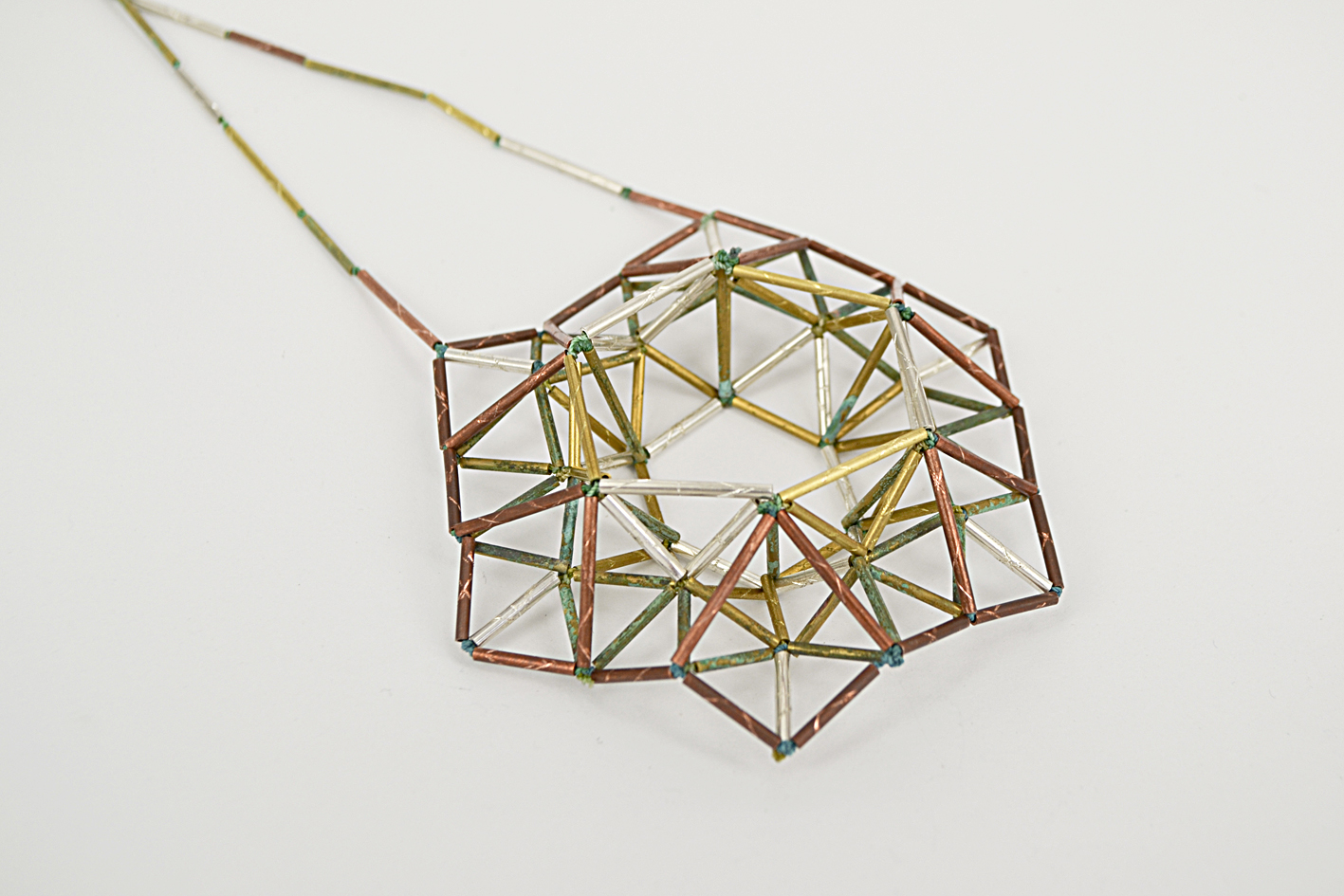
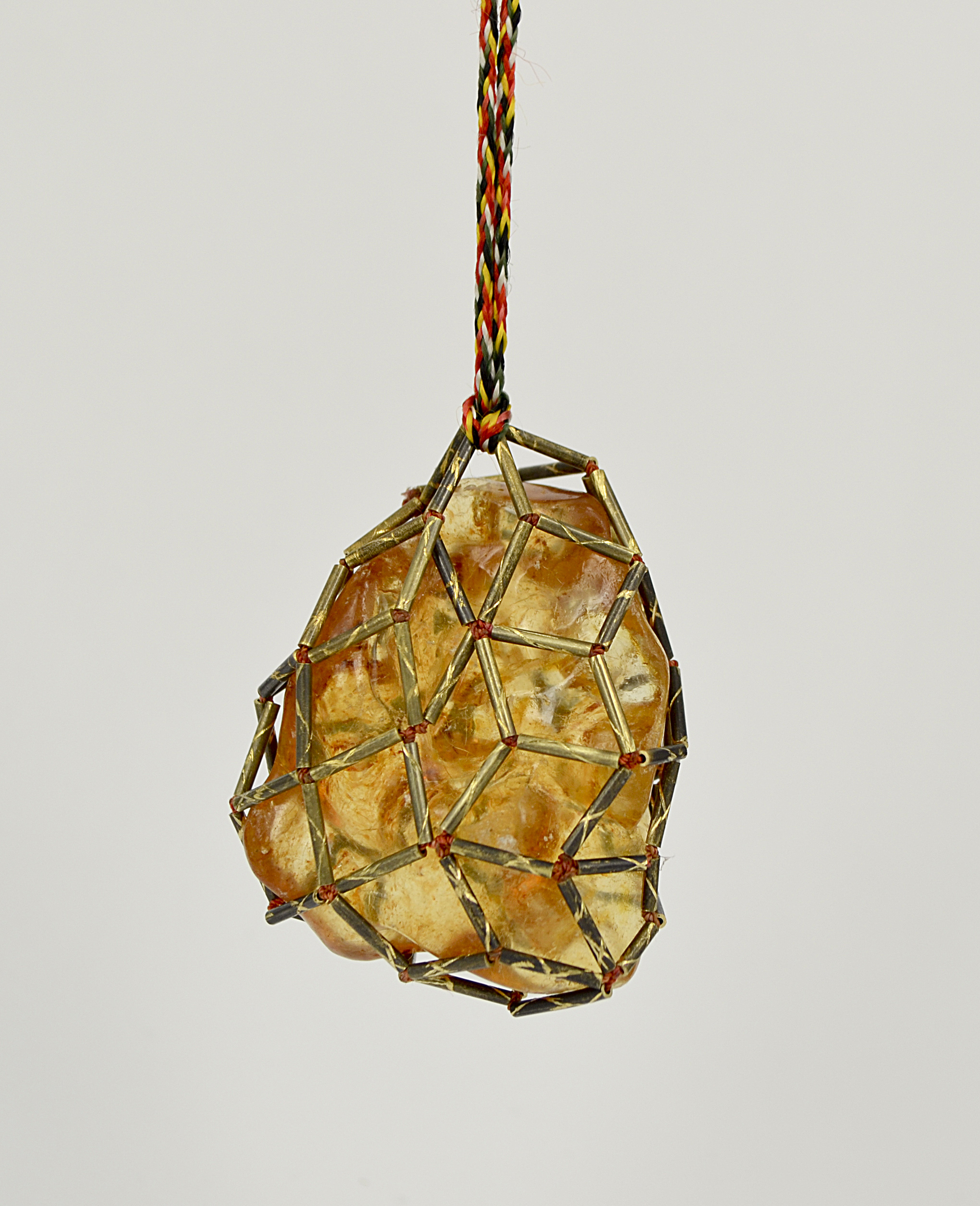
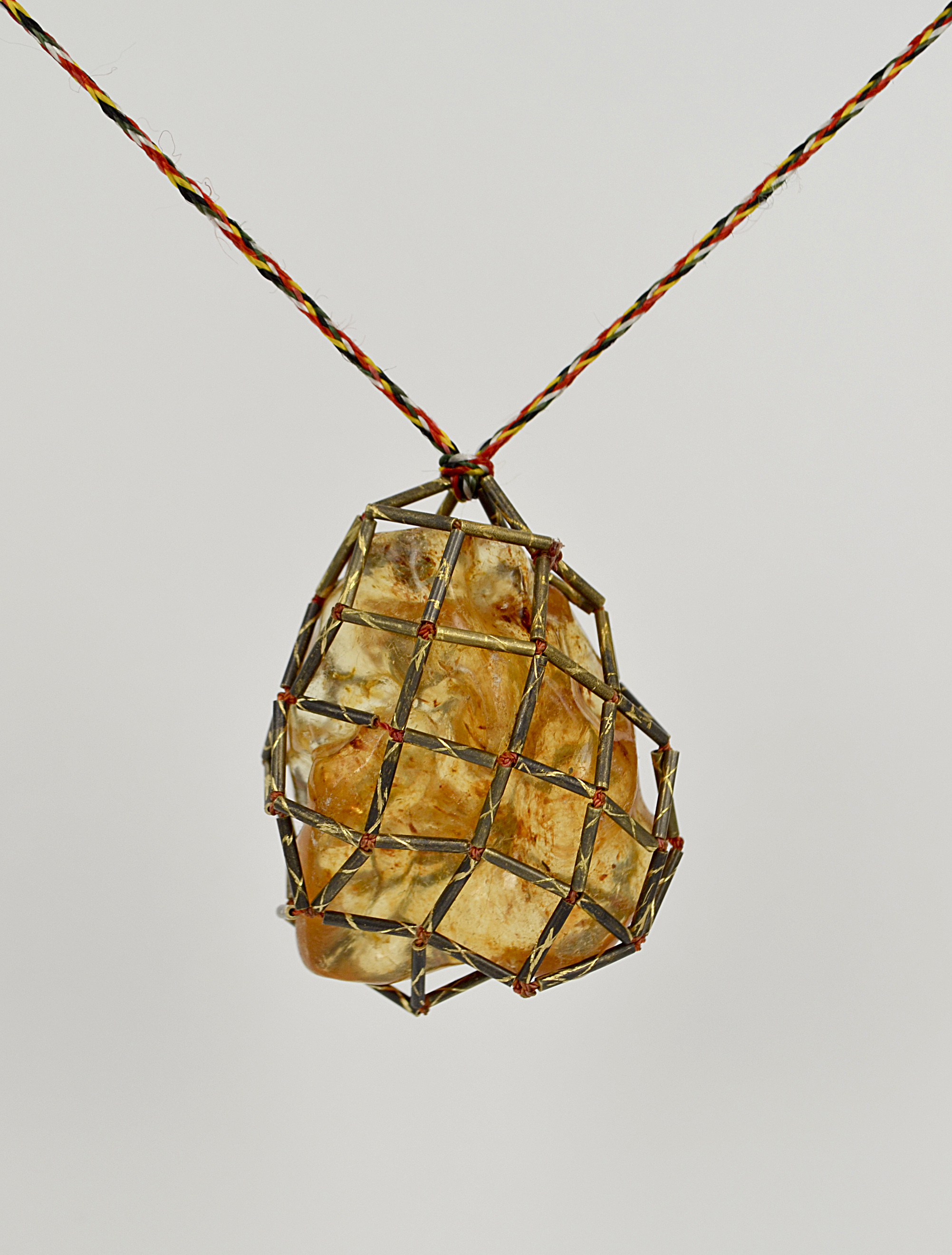
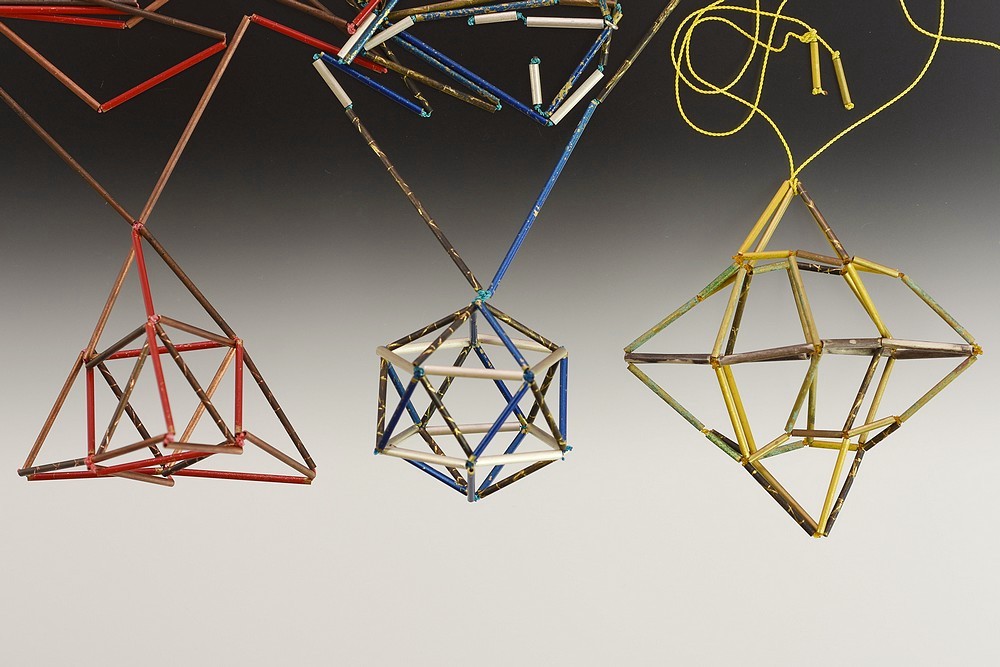

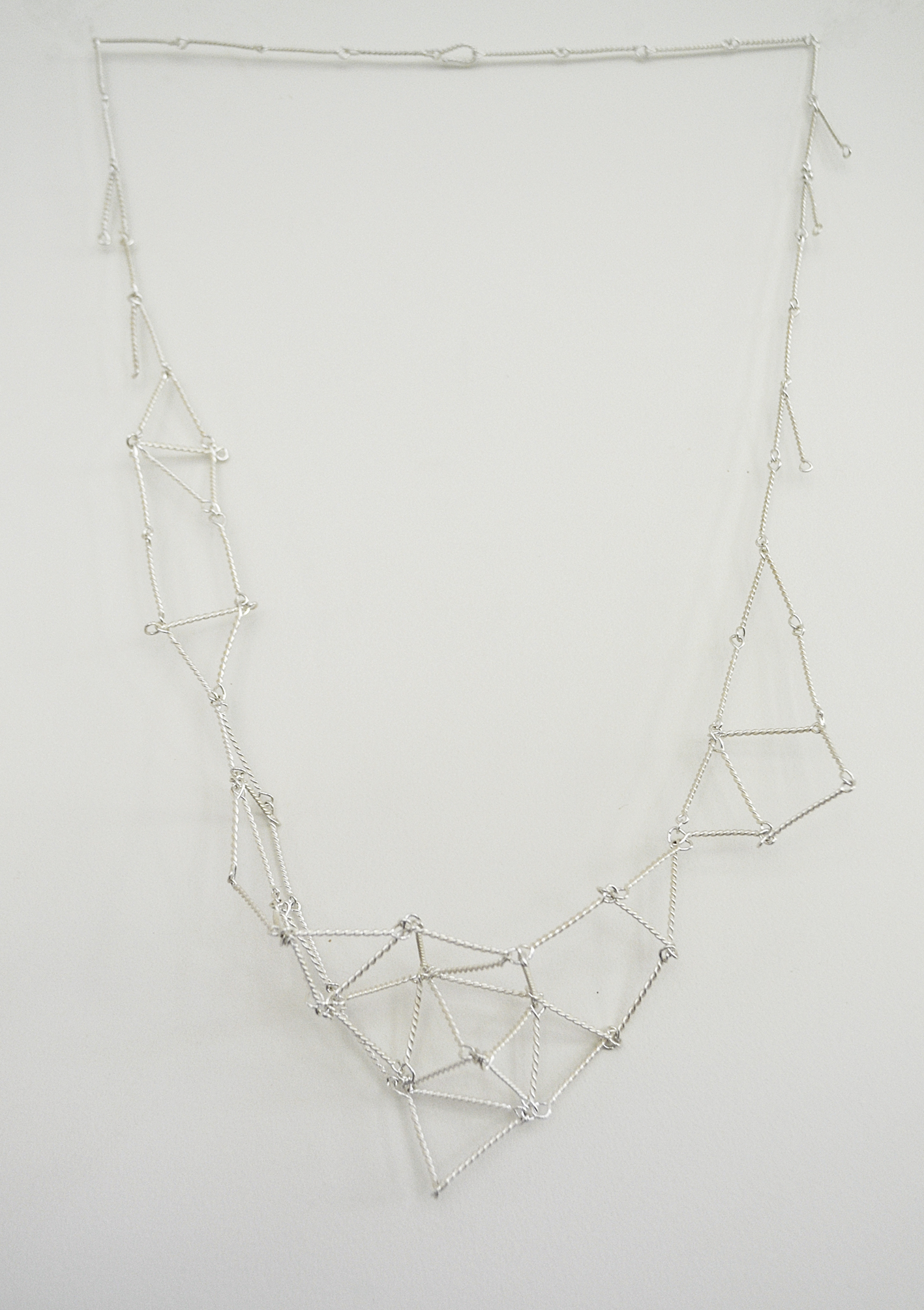
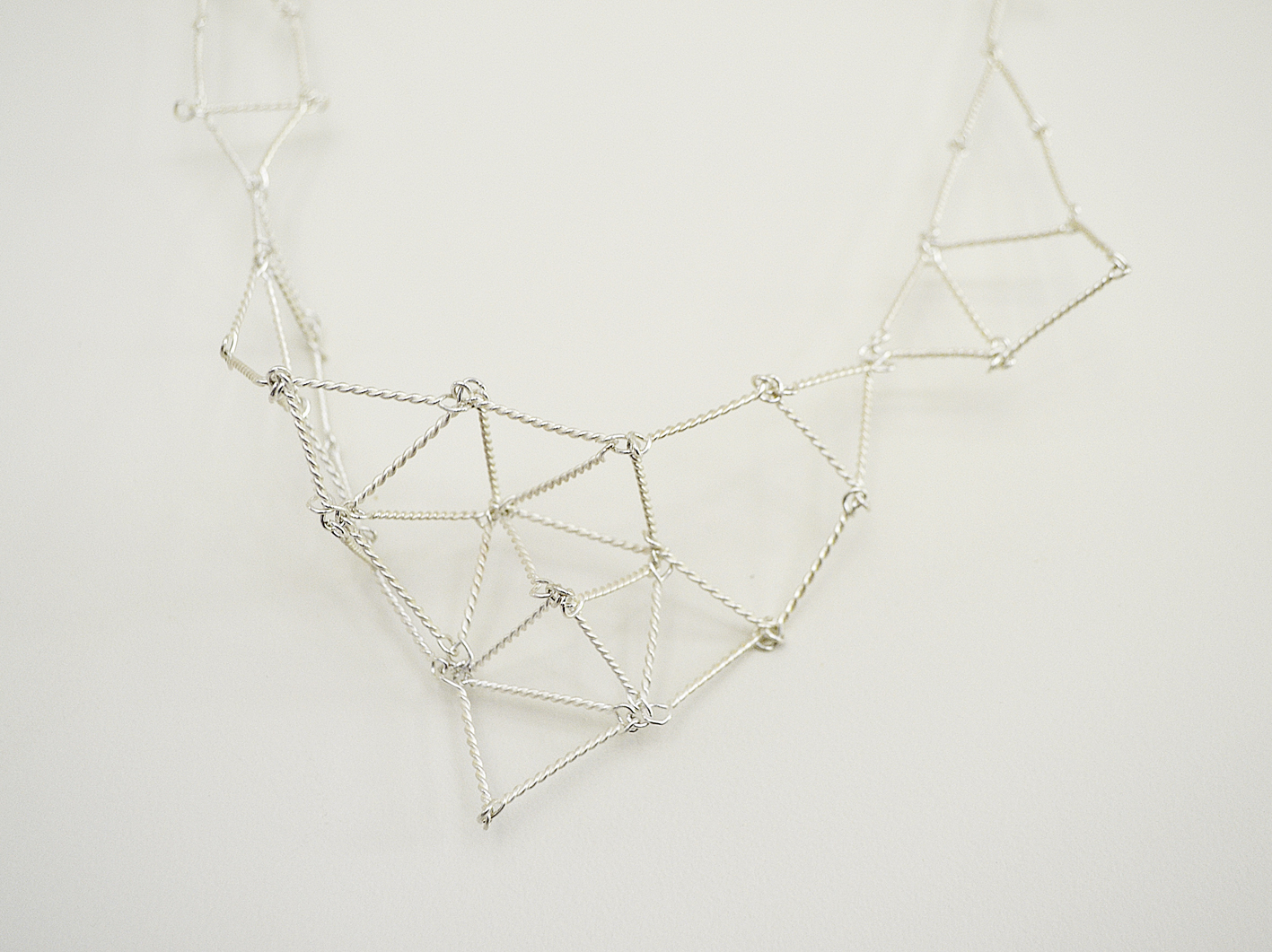

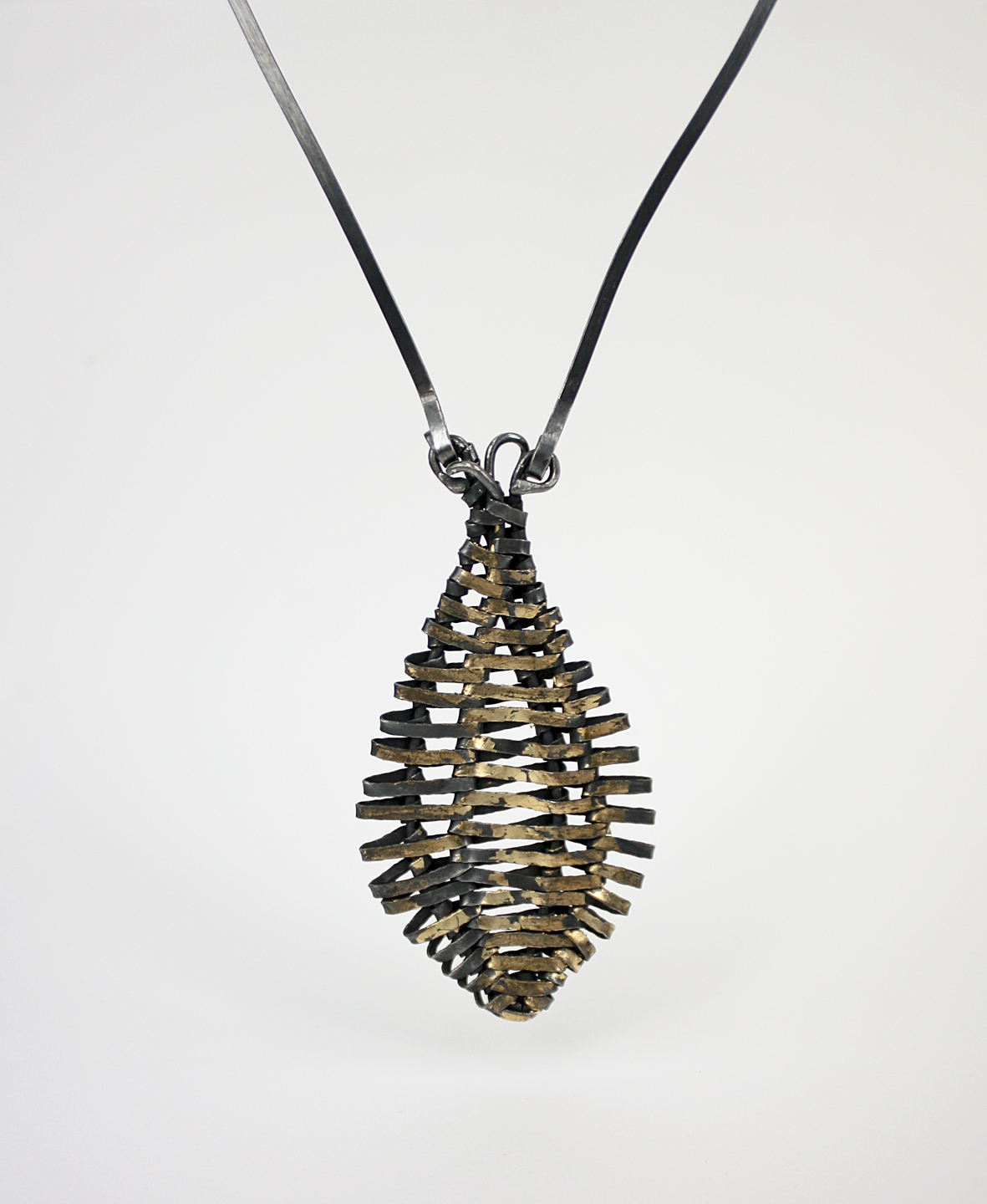
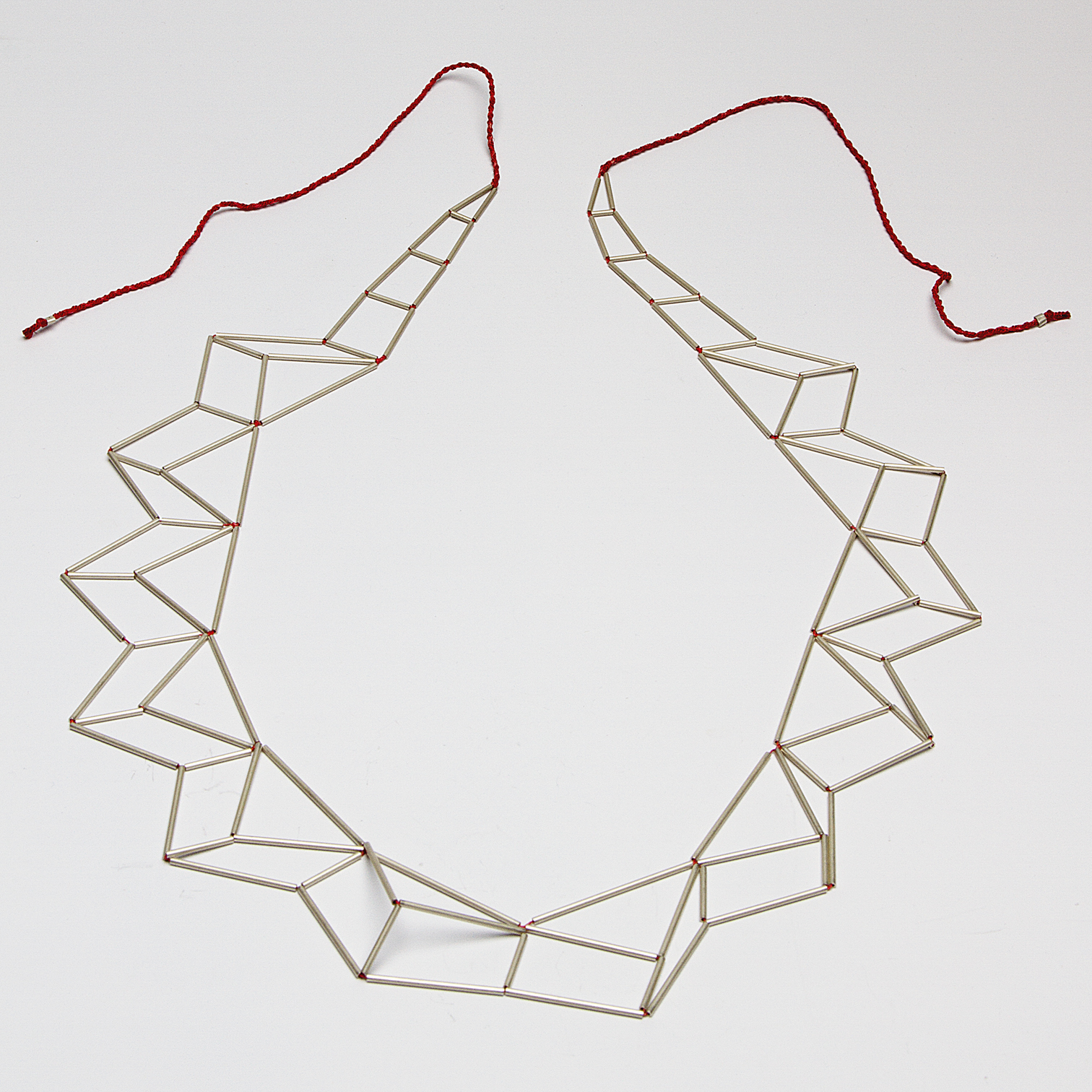
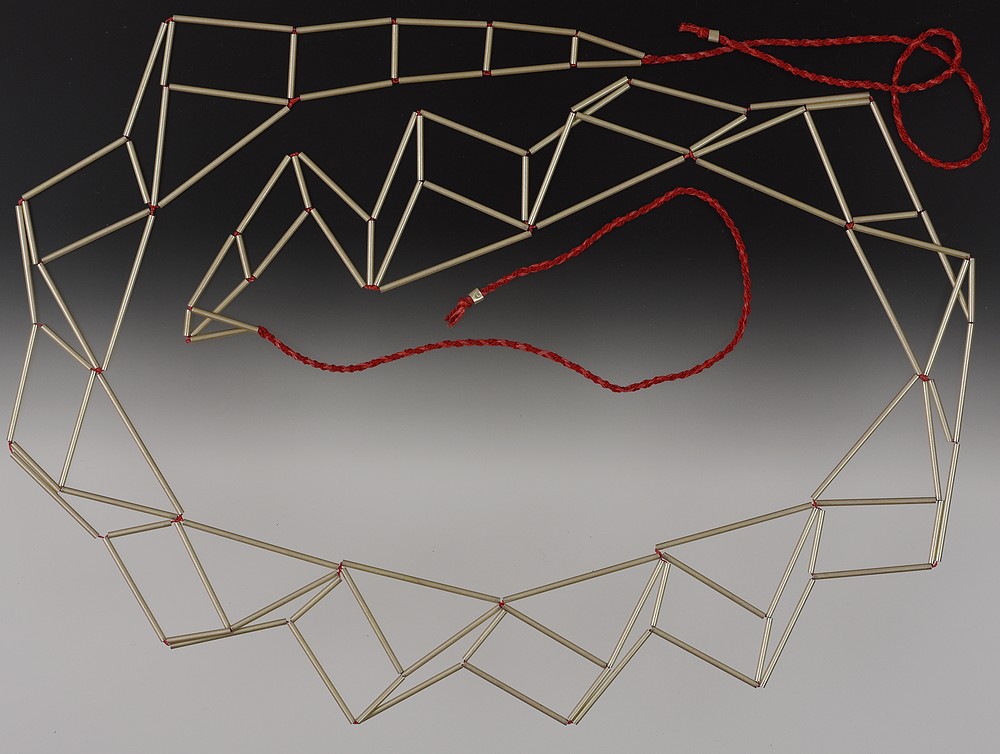
Interconnected Planetary Heart Strings Talisman draws from research into the language of symbols which resonate across different cultures and time periods. Sacred geometry explores the building blocks of nature using mathematics and form to connect the atomic structure of a single cell in the human body to the greater cosmos.
Papatūānuku Protection Amulet is made from the hardened resin that bleeds from the Kauri Tree, endemic to New Zealand. If a Kauri branch breaks or the bark is damaged the resin bleeds out to seal the wound, protecting the tree. Papatūānuku is the land Earth Mother, from which all life is born and is considered a foundation or the first platform for human action. In Māori tradition, all things are interconnected and we are guardians of the land.
Shifting Solids series is based on my research into sacred geometry. The Ancient Greeks saw great significance in the existence of just five Platonic solids and related them to the four elements (Fire, Earth, Air and Water) believed to make up all matter. Together with the Universe, each was associated with a particular solid.
In our era of the Anthropocene, these works may be seen as talismans, drawing from a time when philosophy and the arts were integral to everyday living and hugely influential to political and scientific thinking.
Cosmic net builds on the interconnected ideology, inspired by the structure of carbon atoms and buckminsterfullerenes. References to weaving also present themselves in these works, revealing my respect for the craft and the practice that surrounds it.


